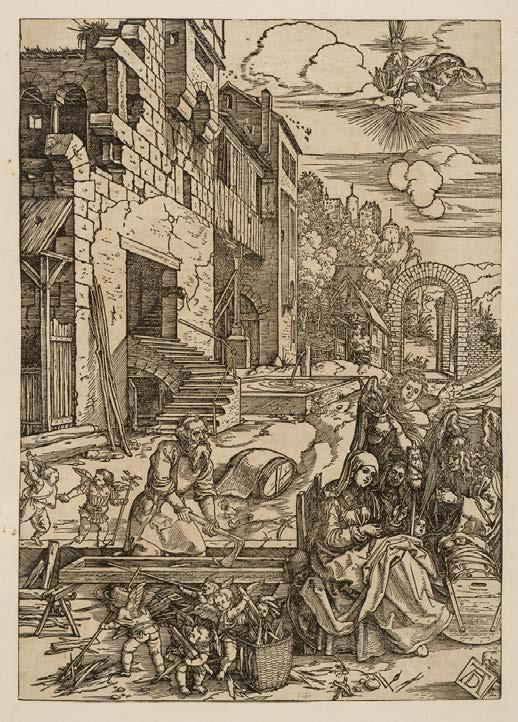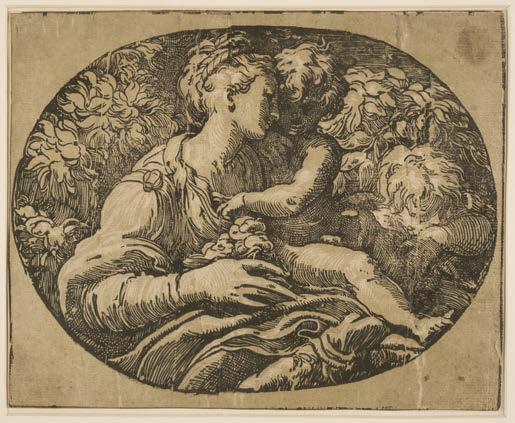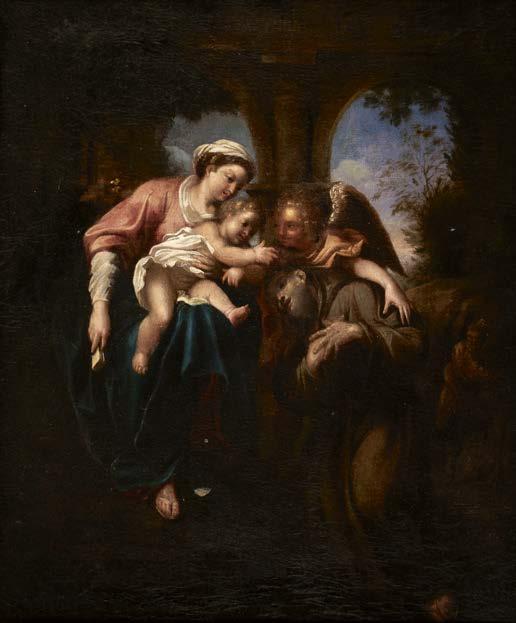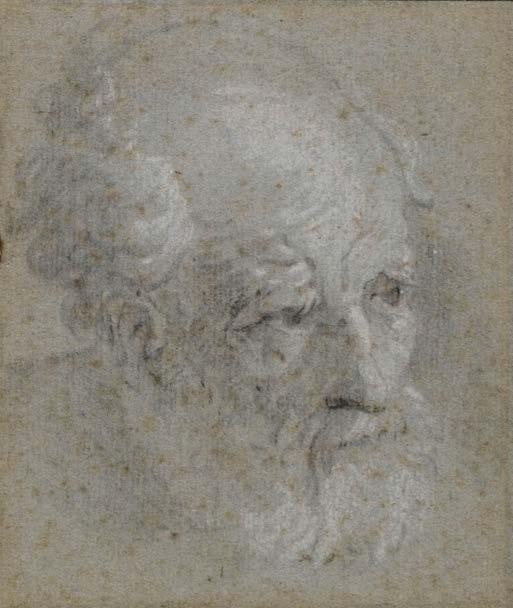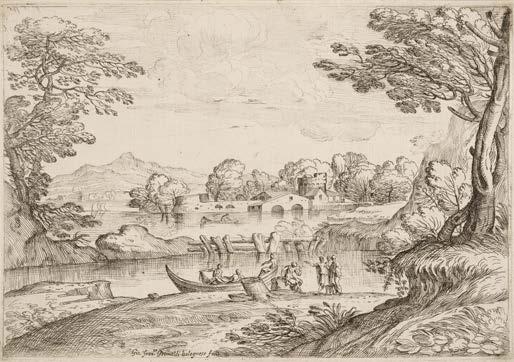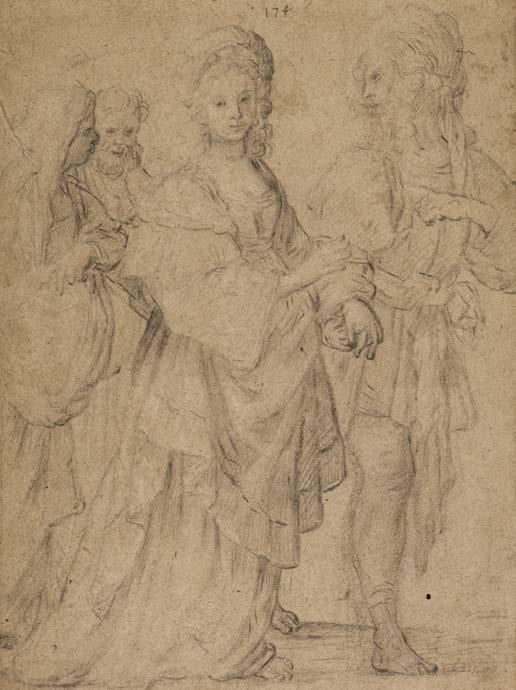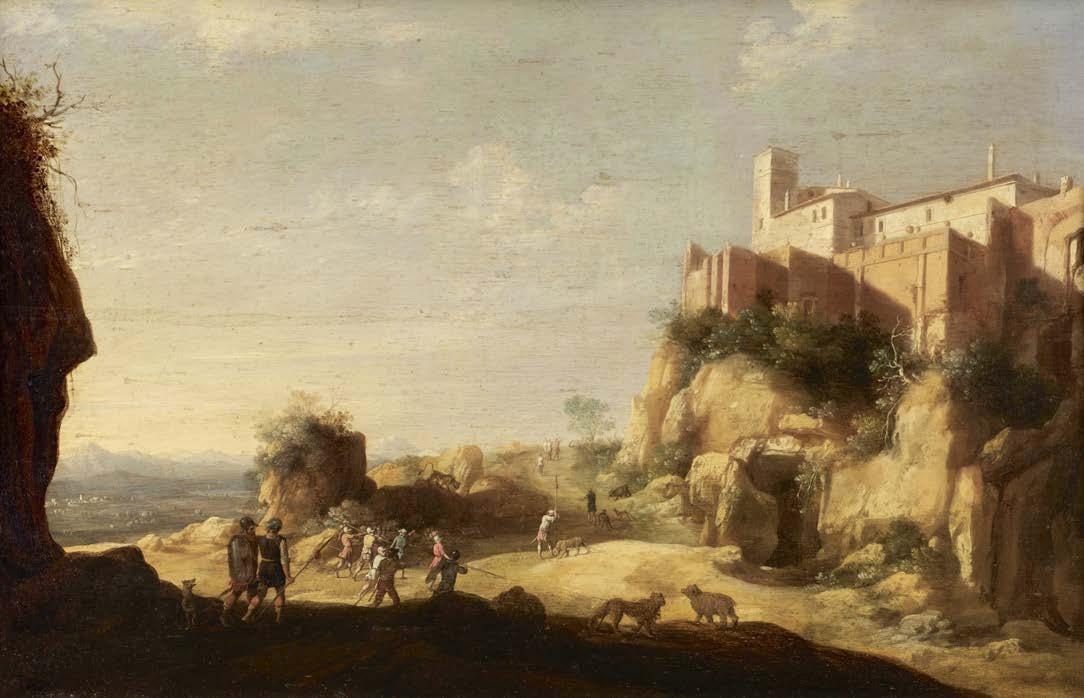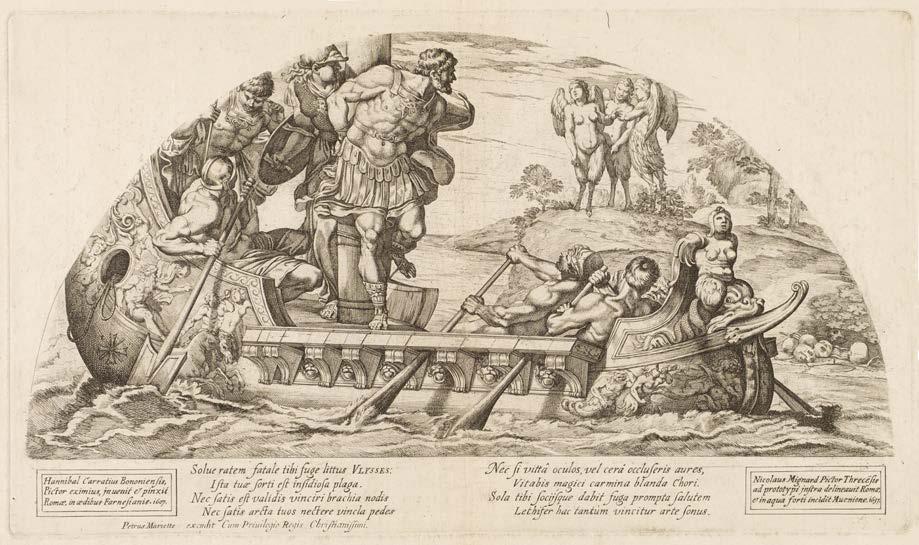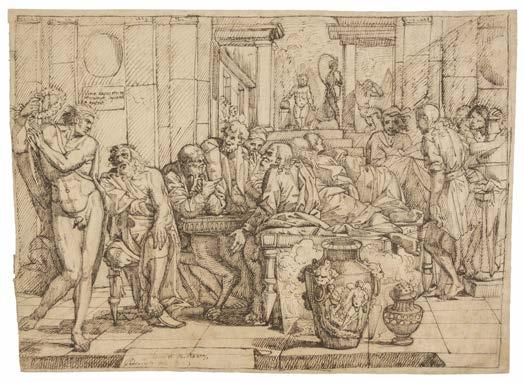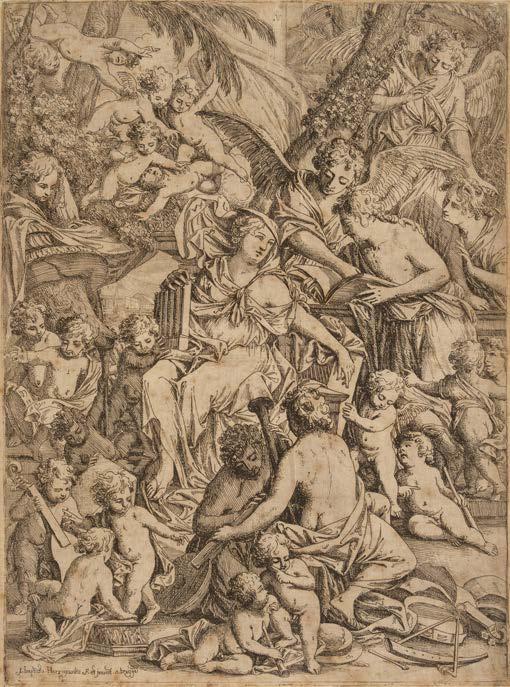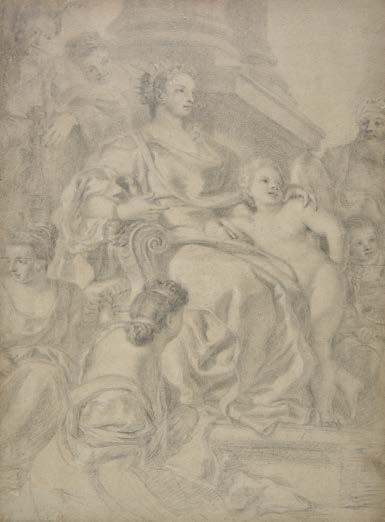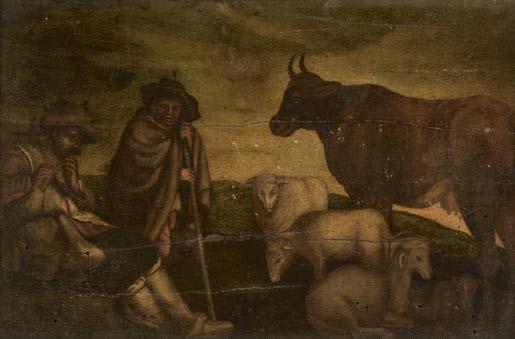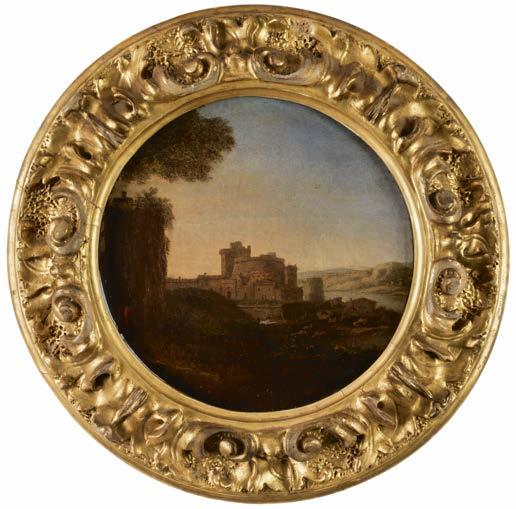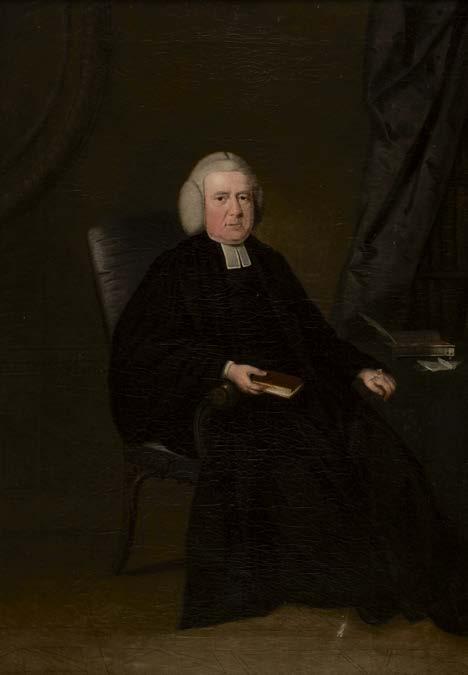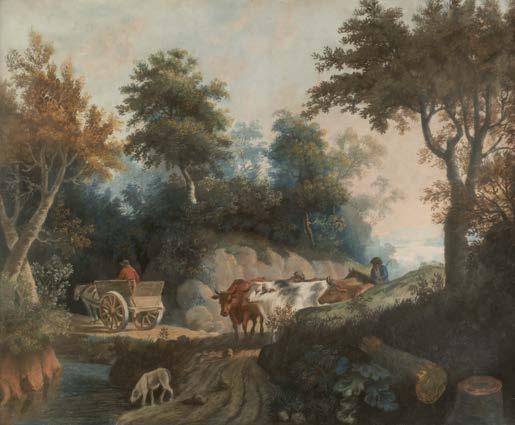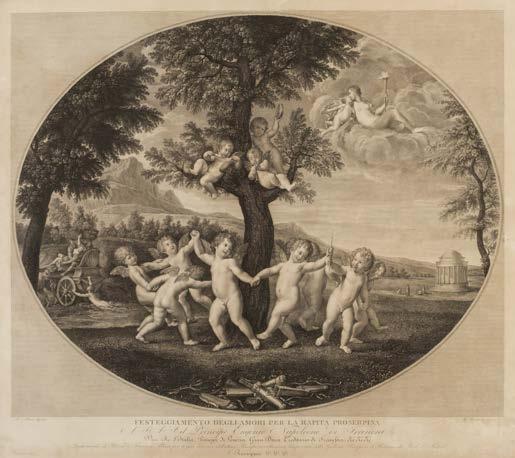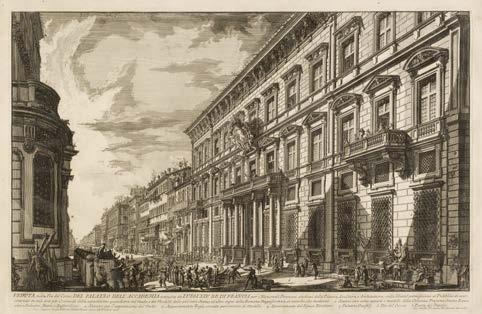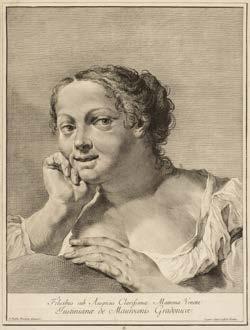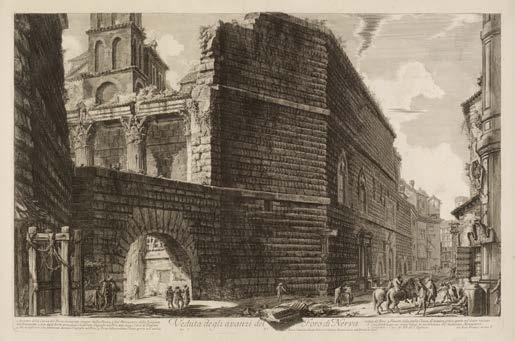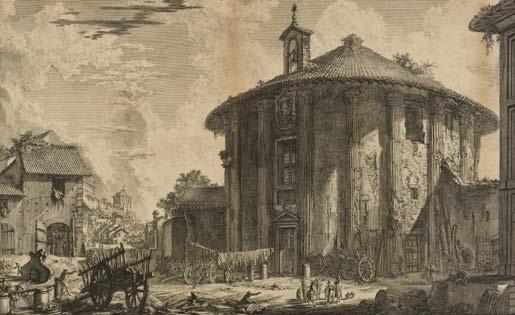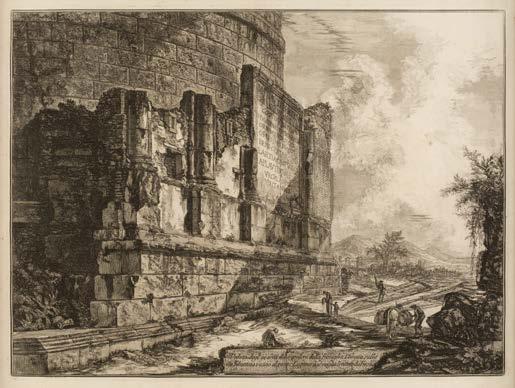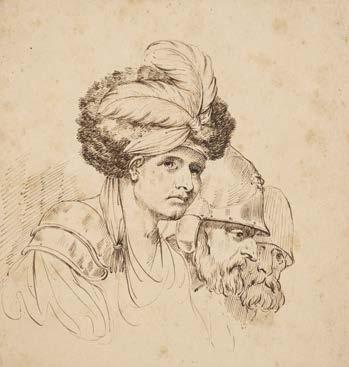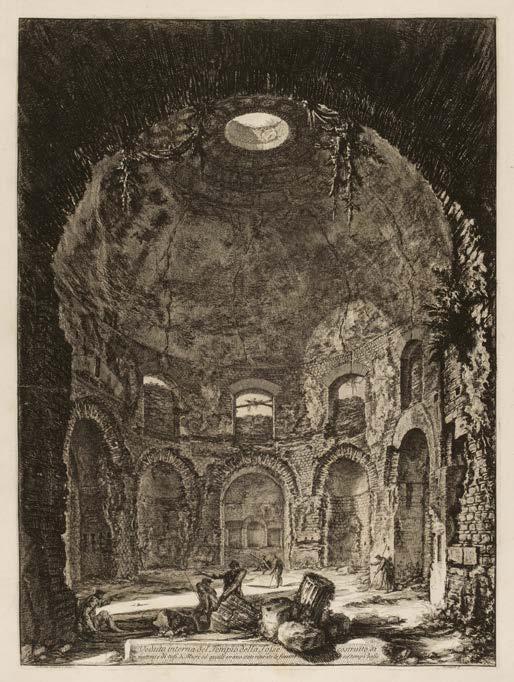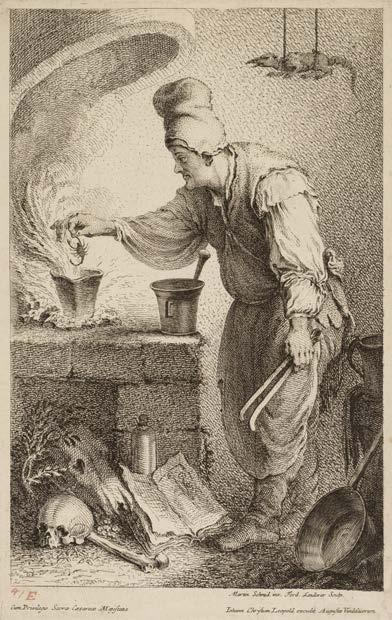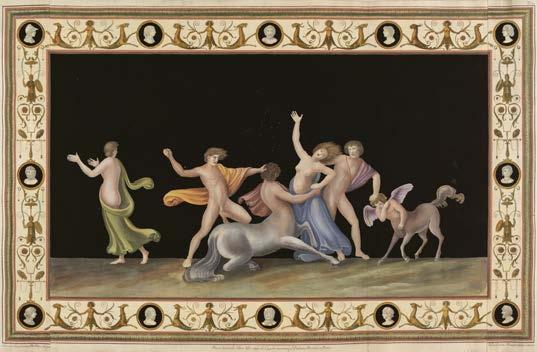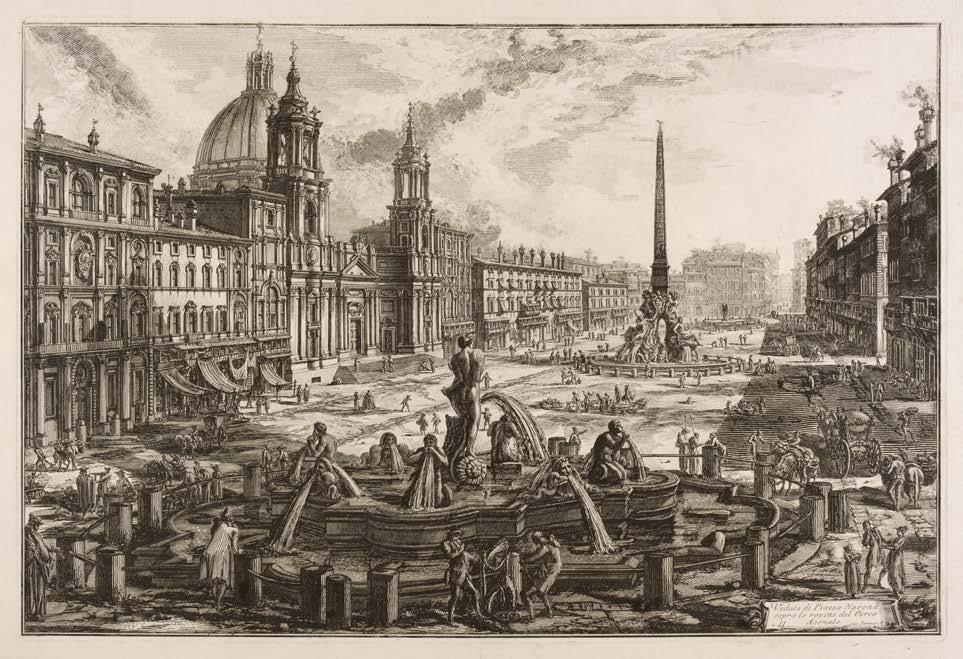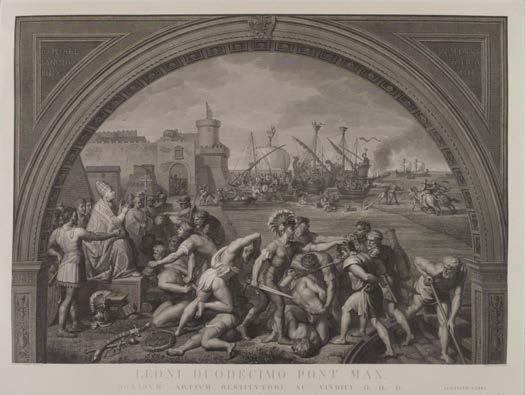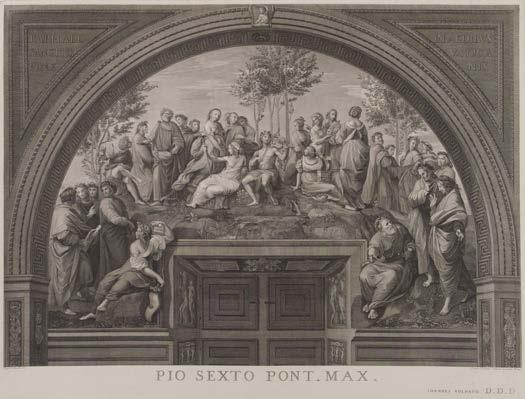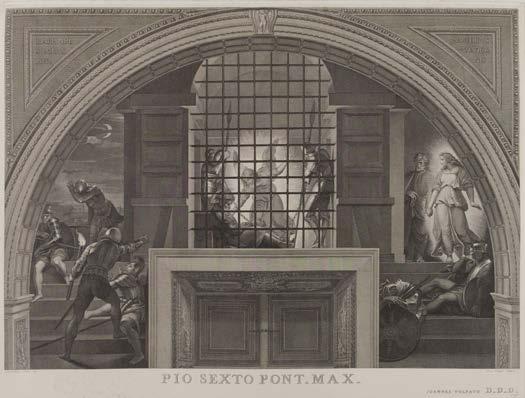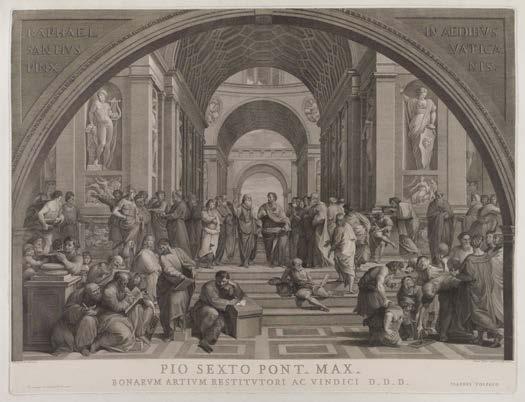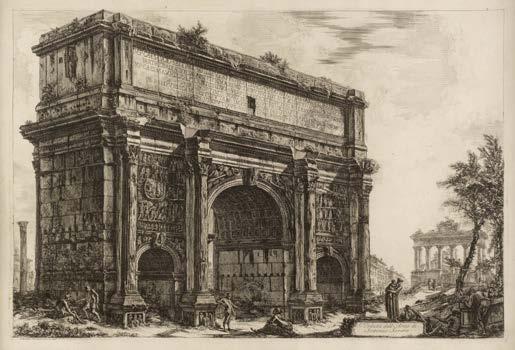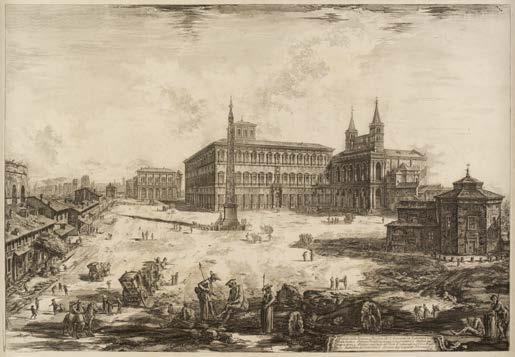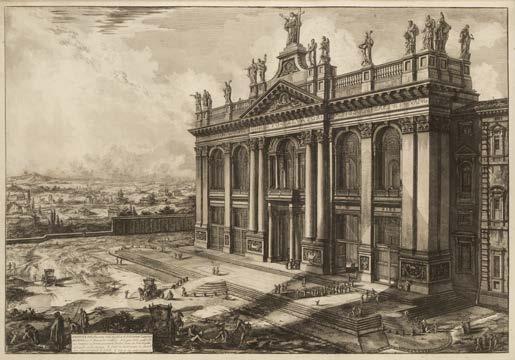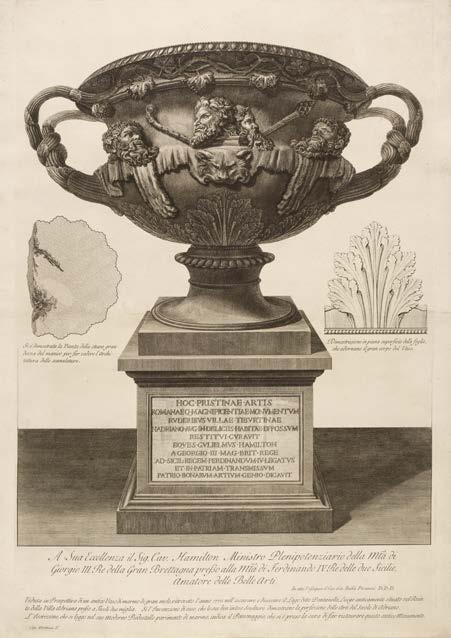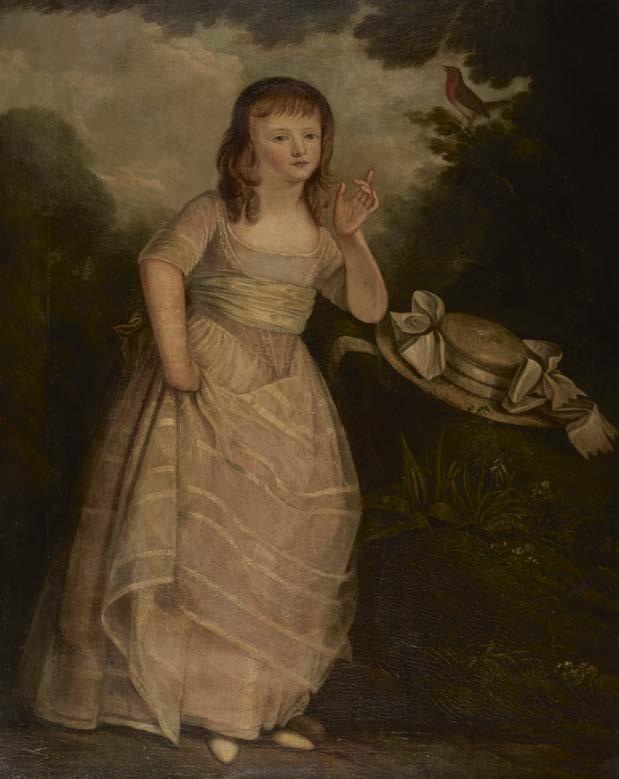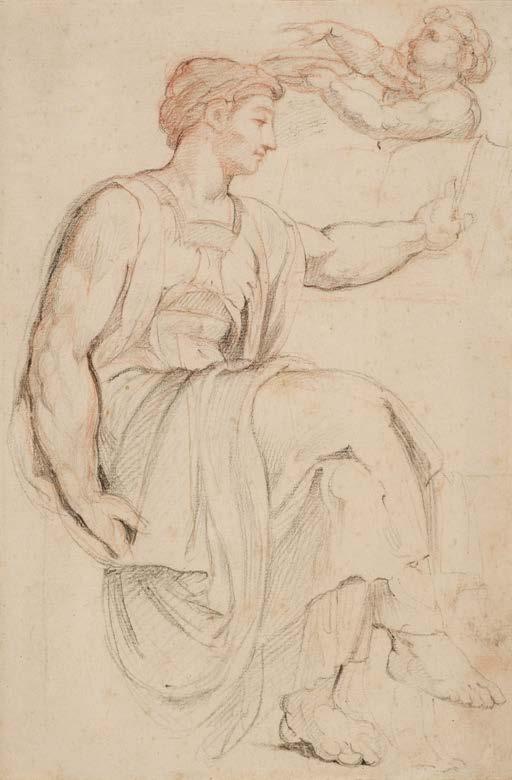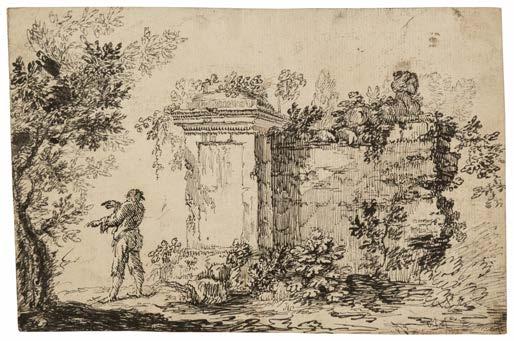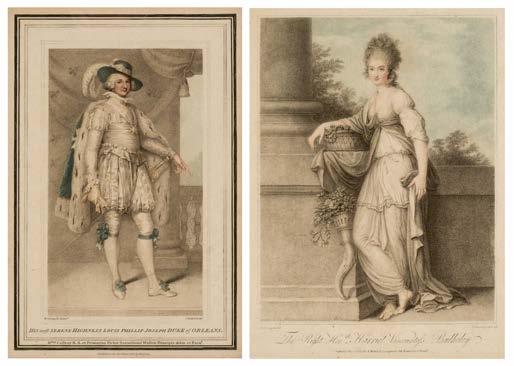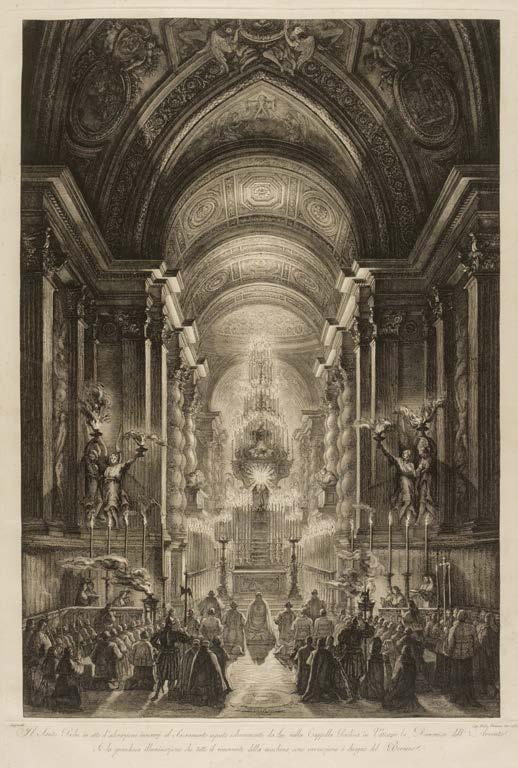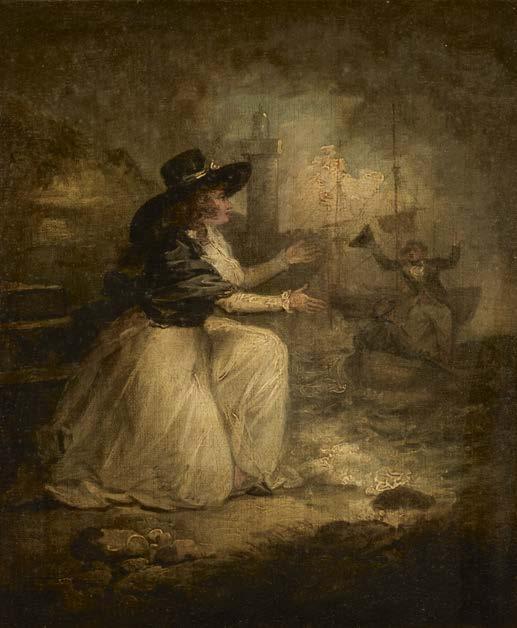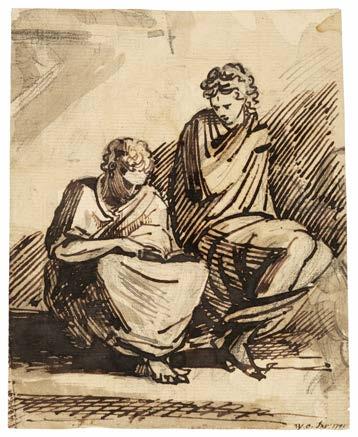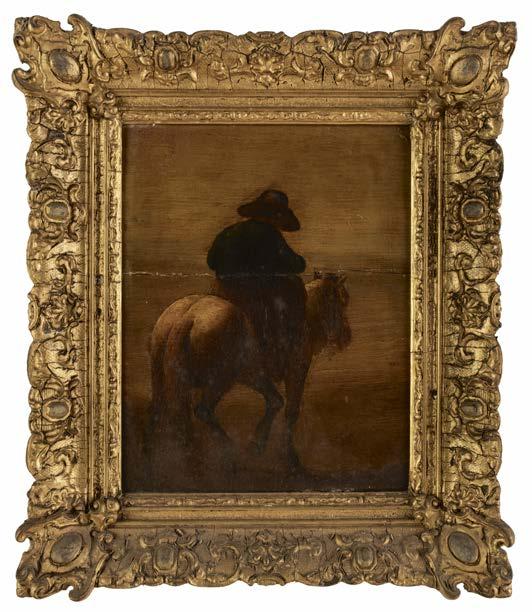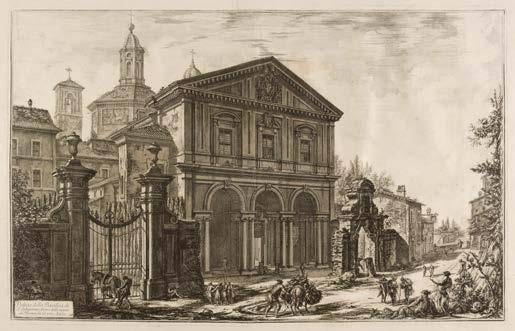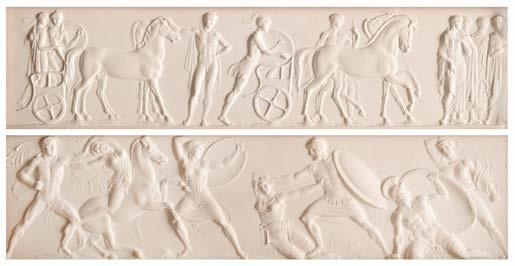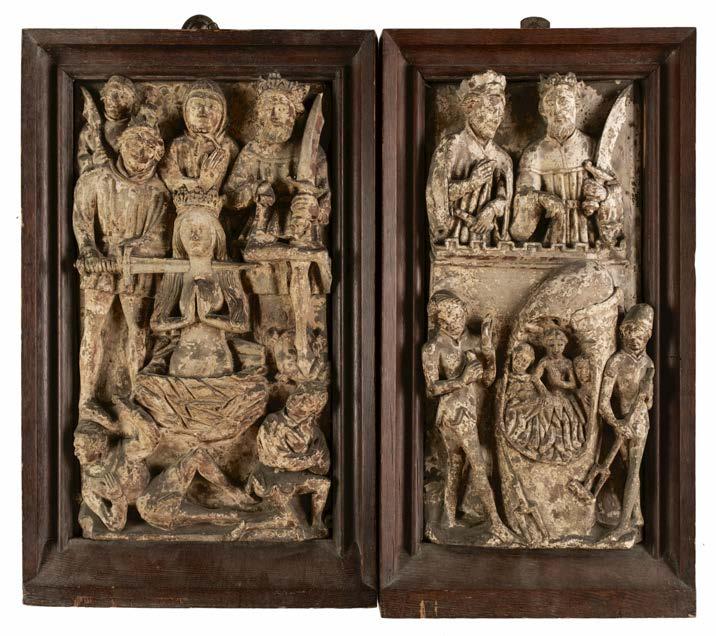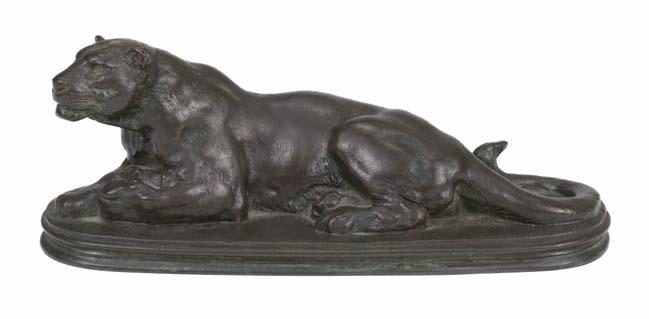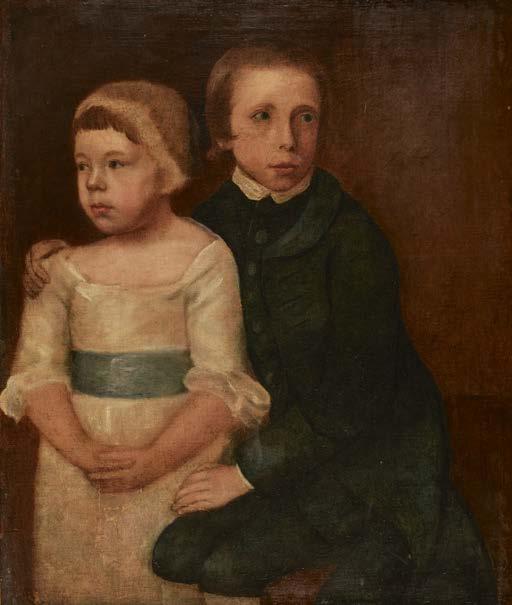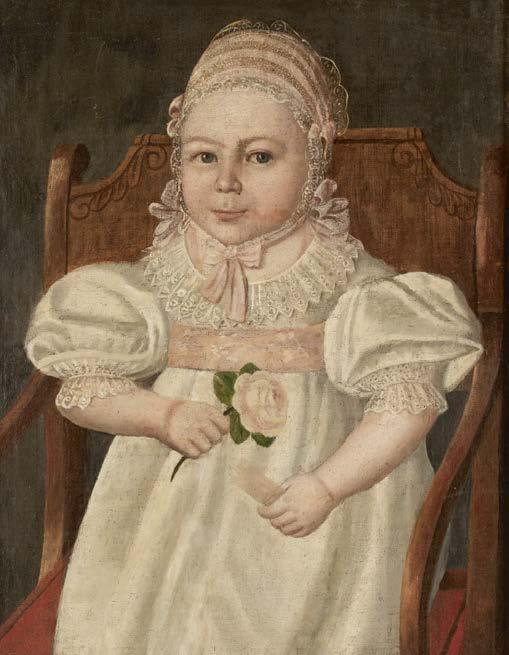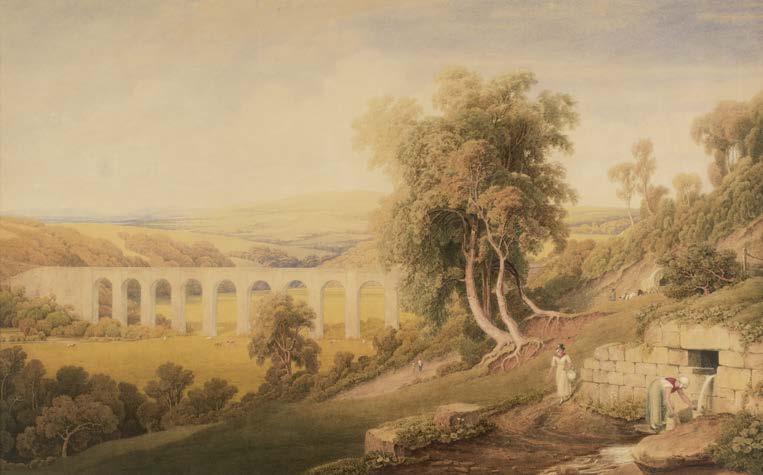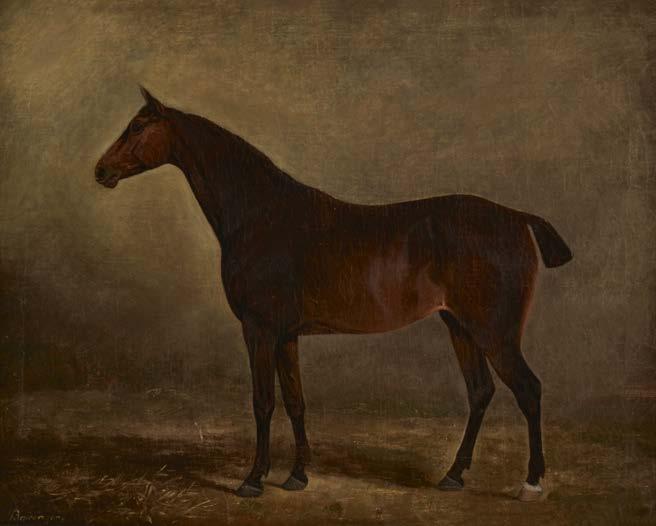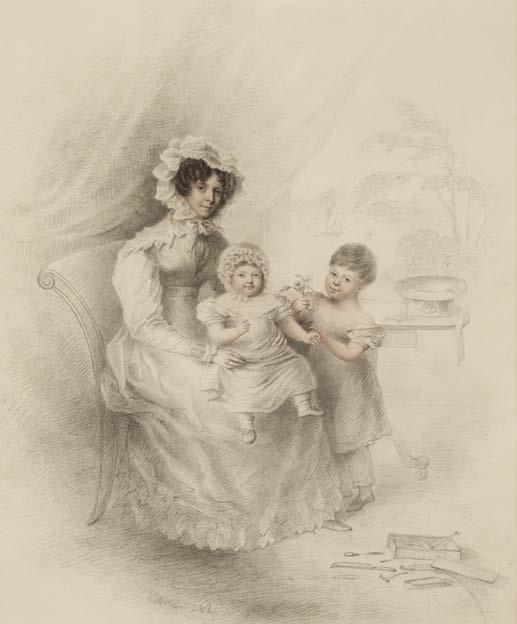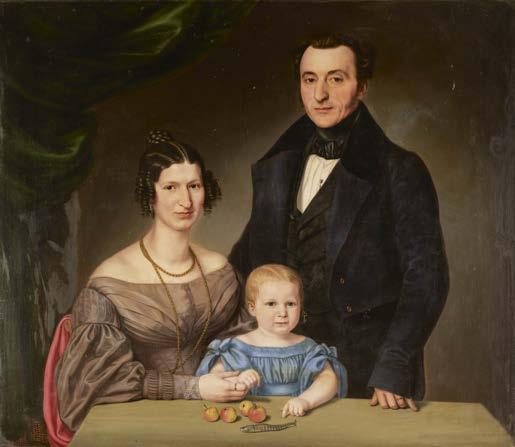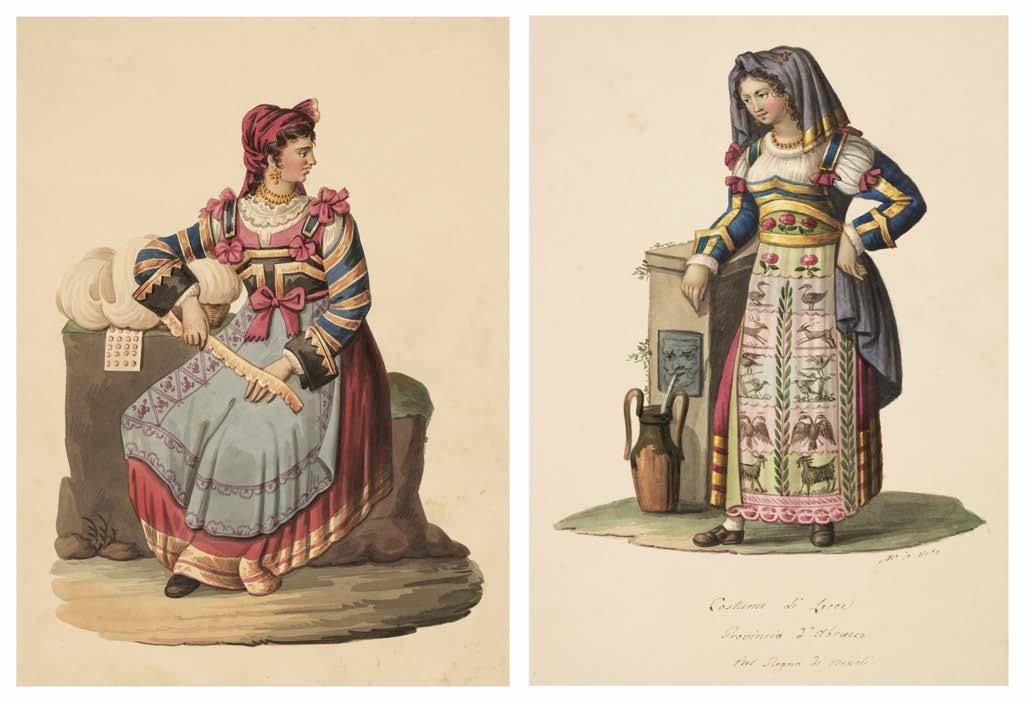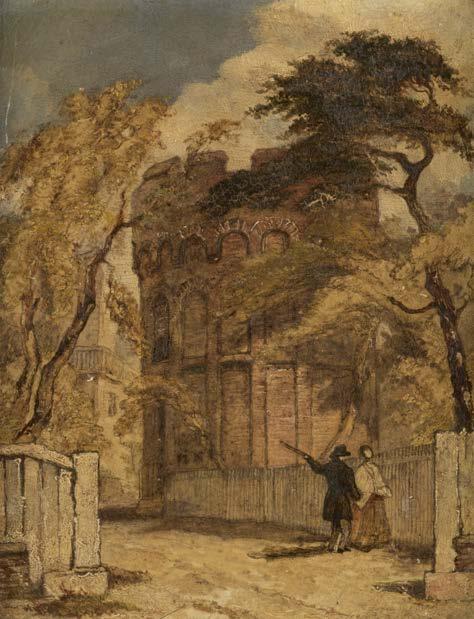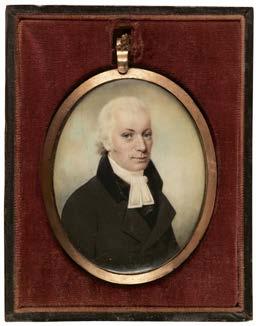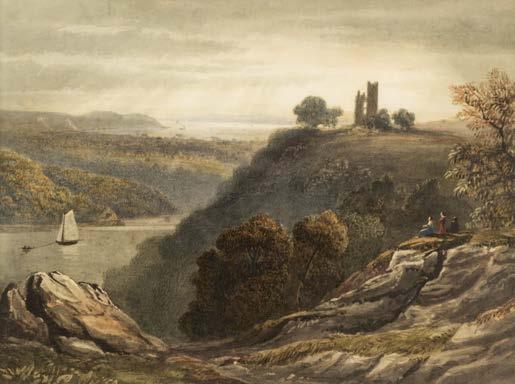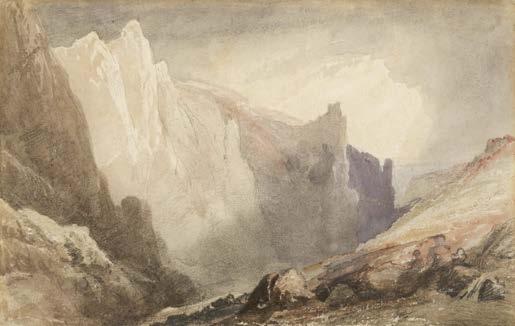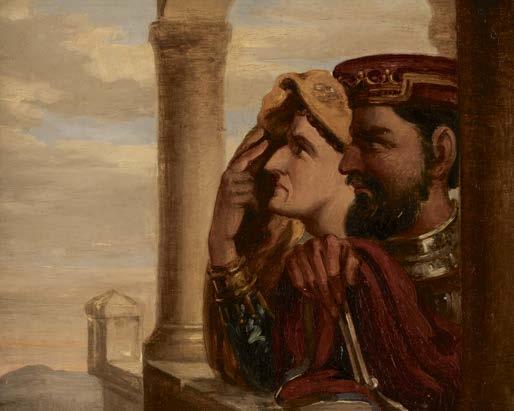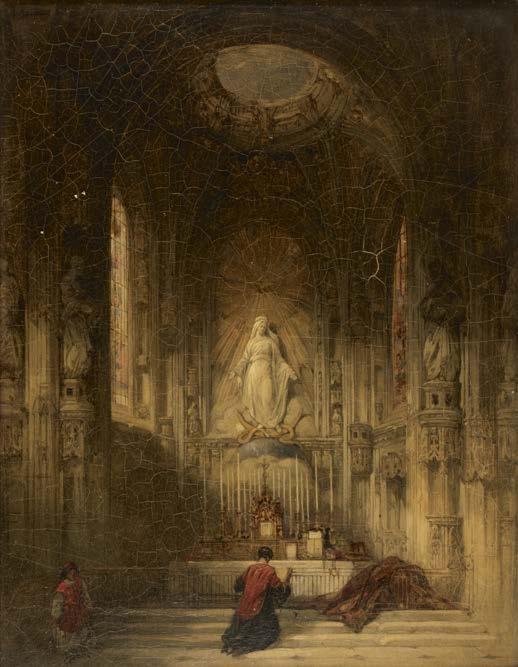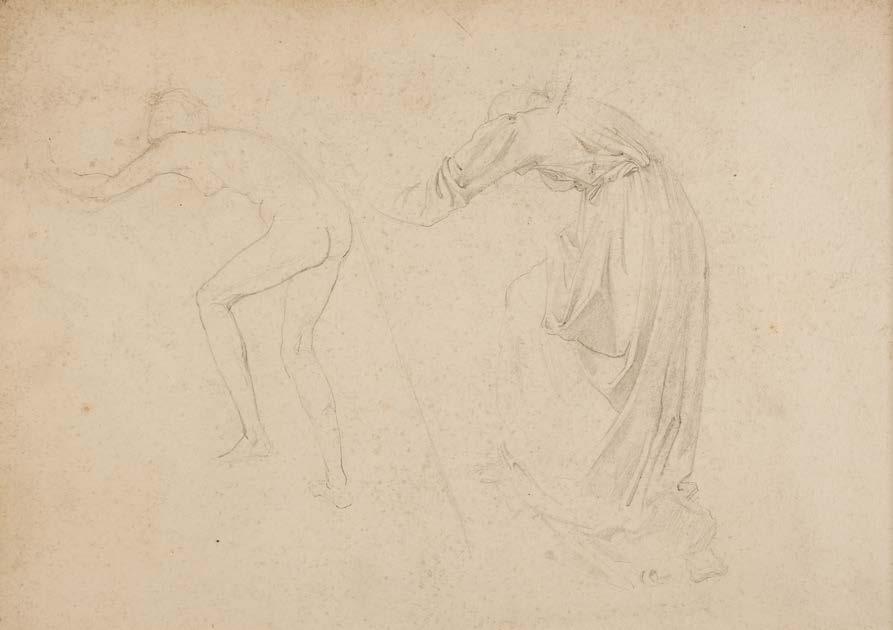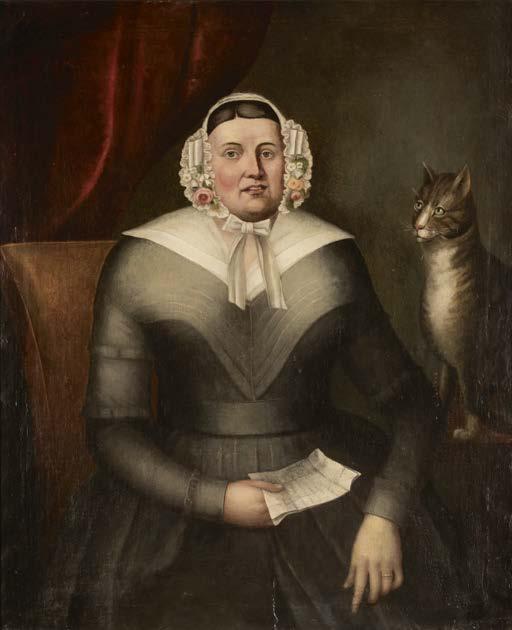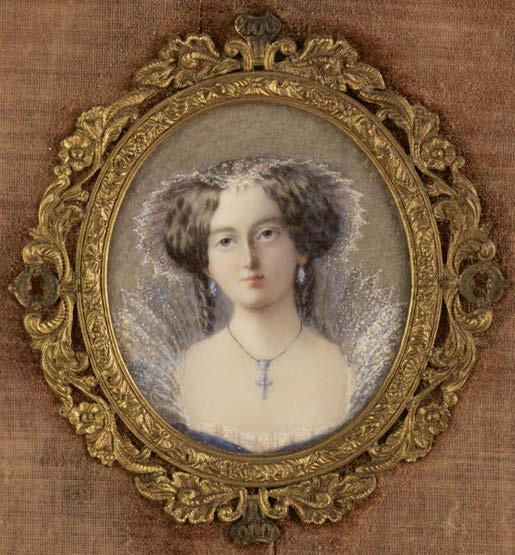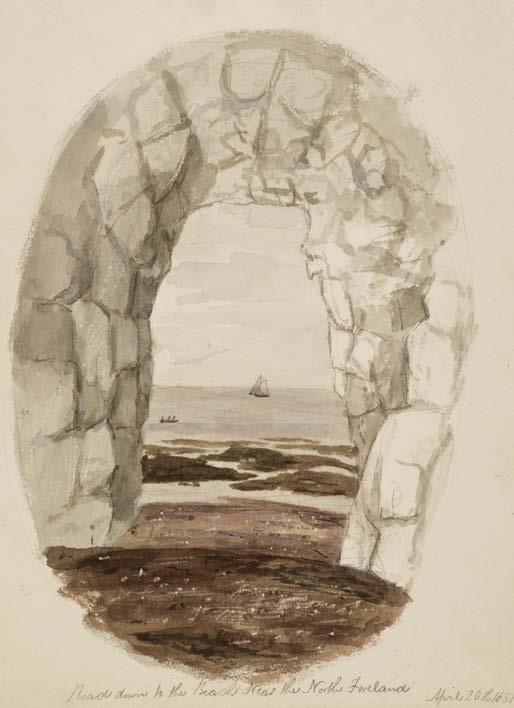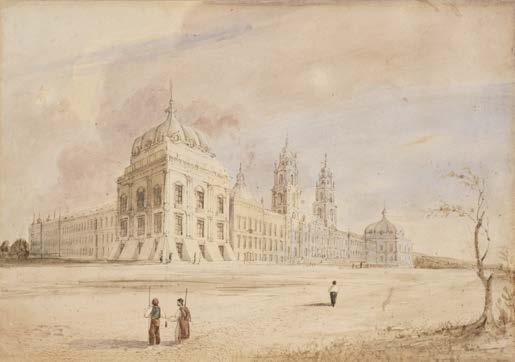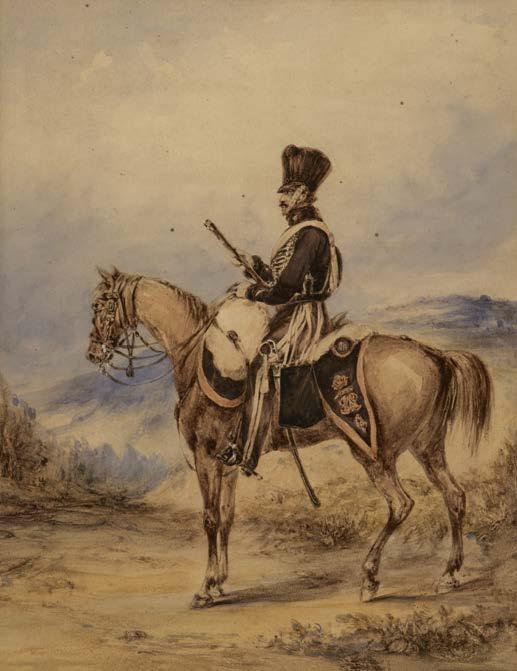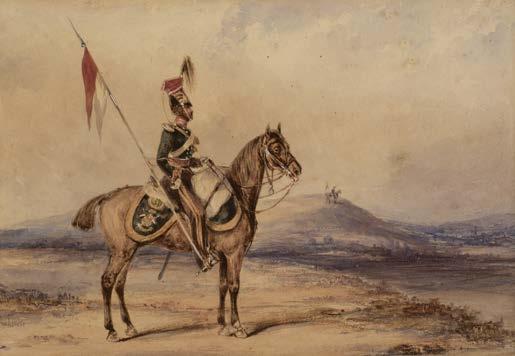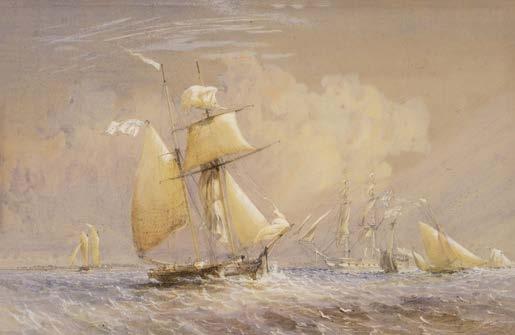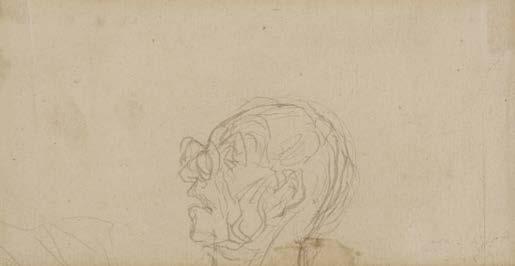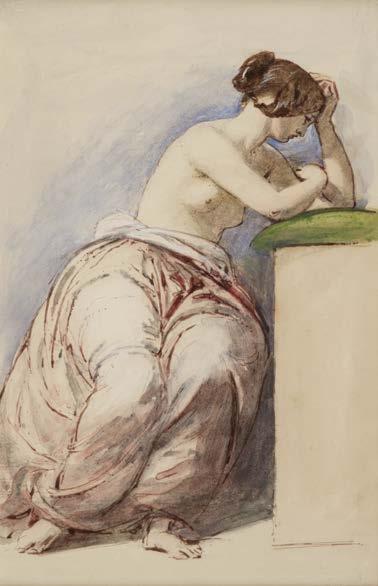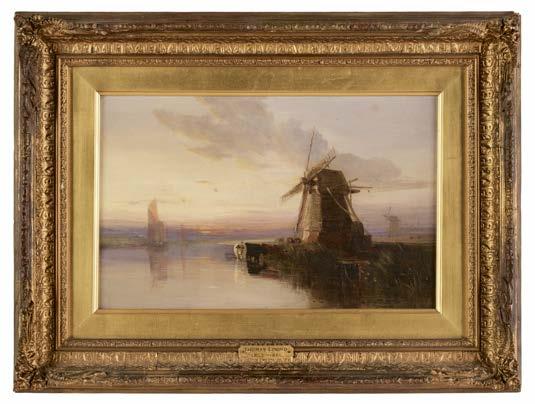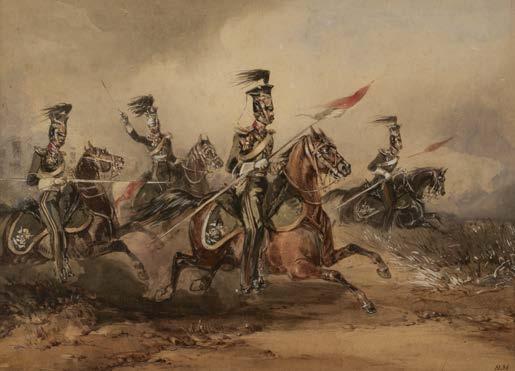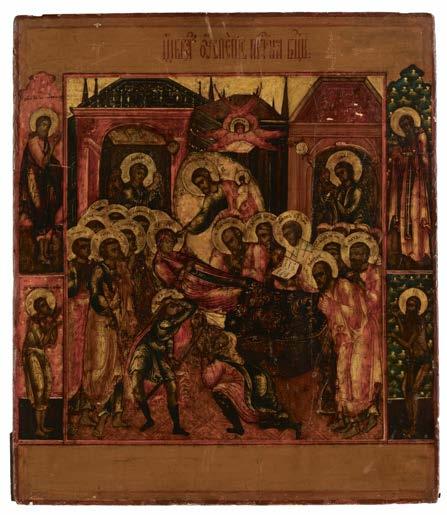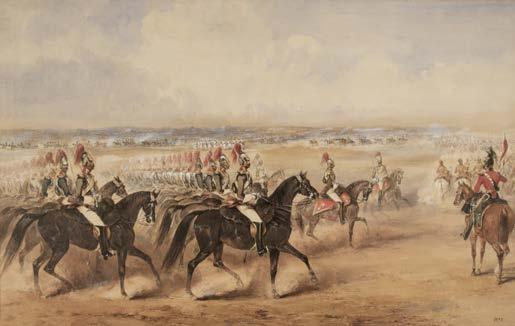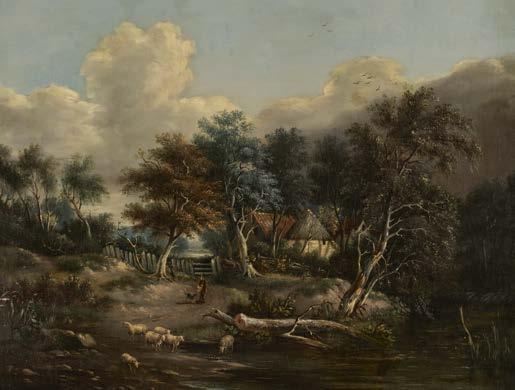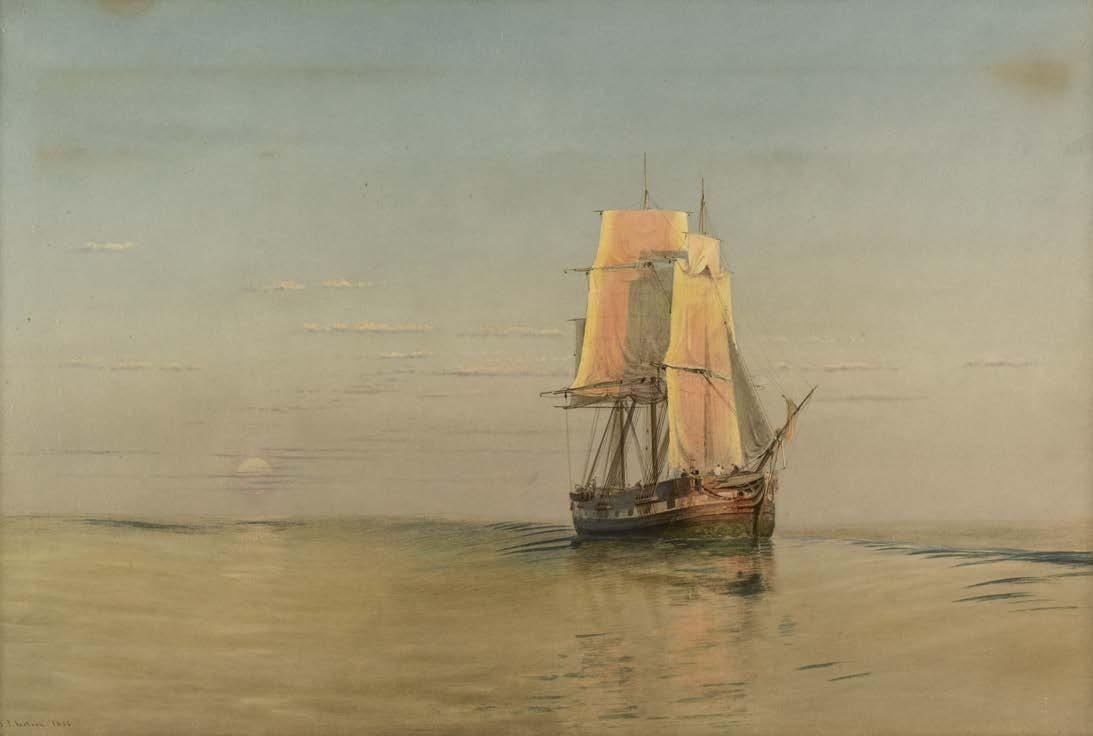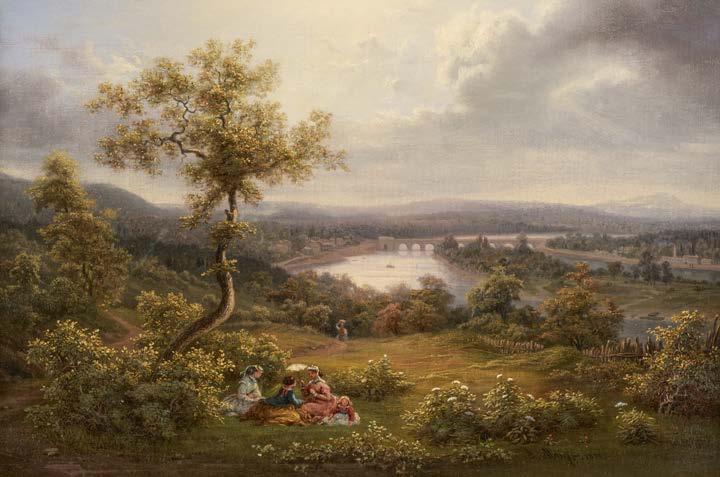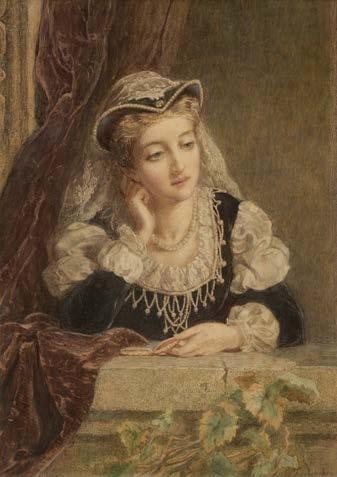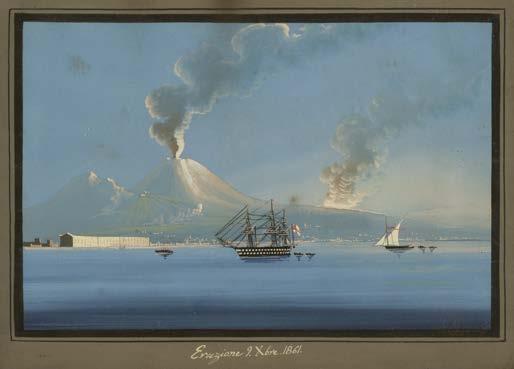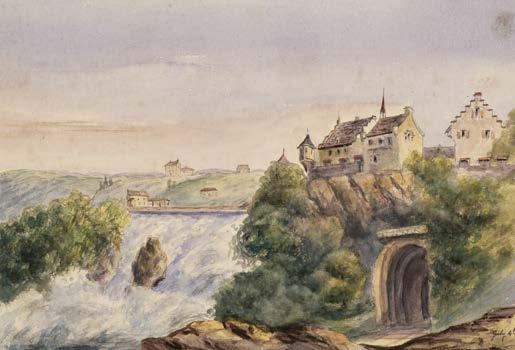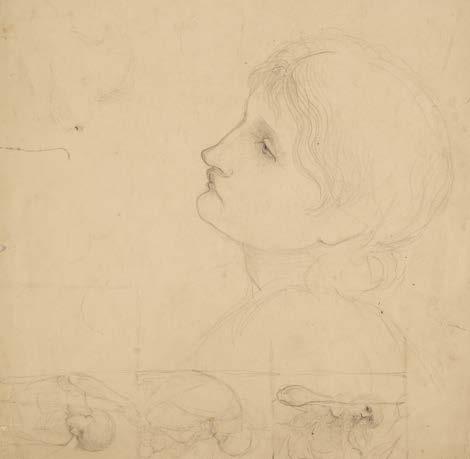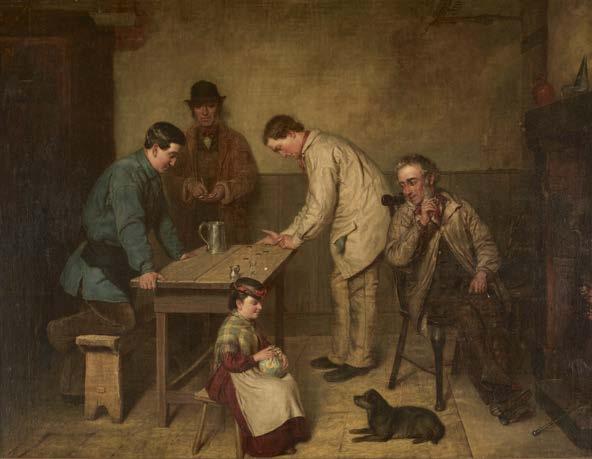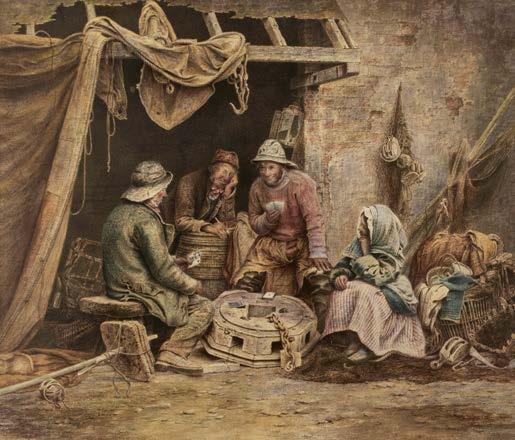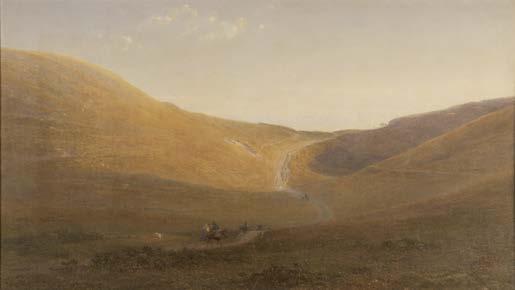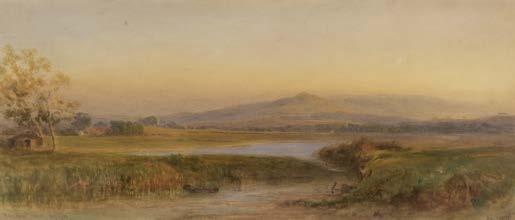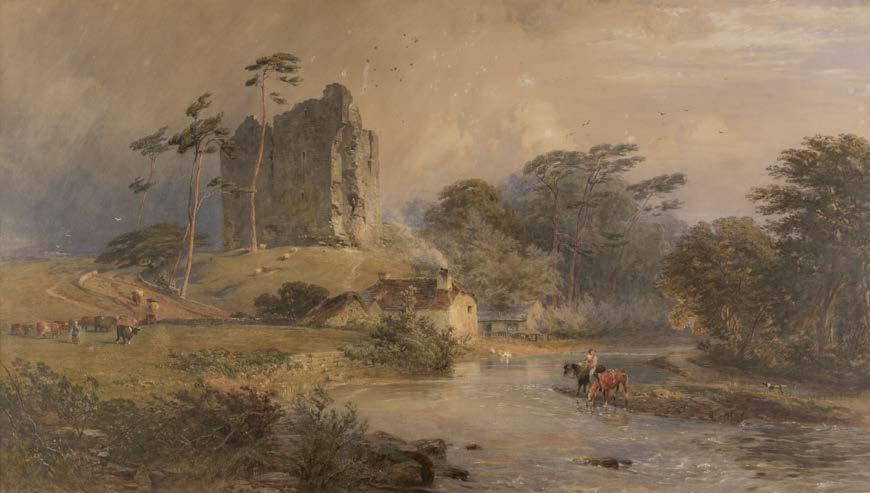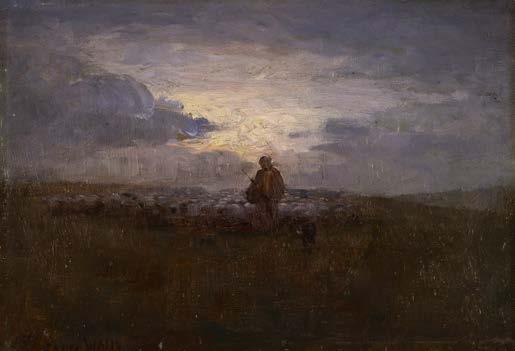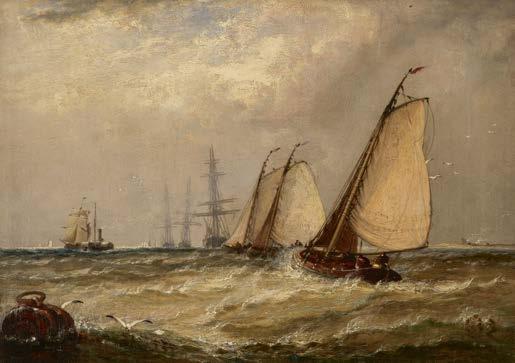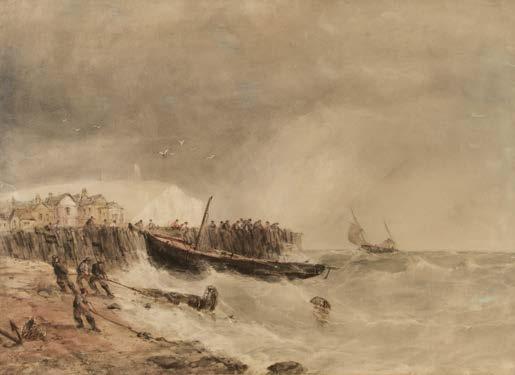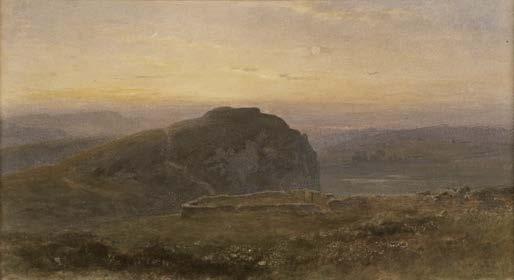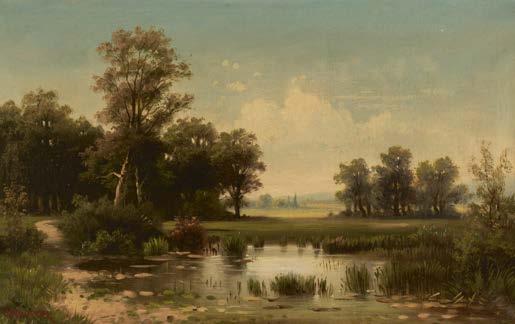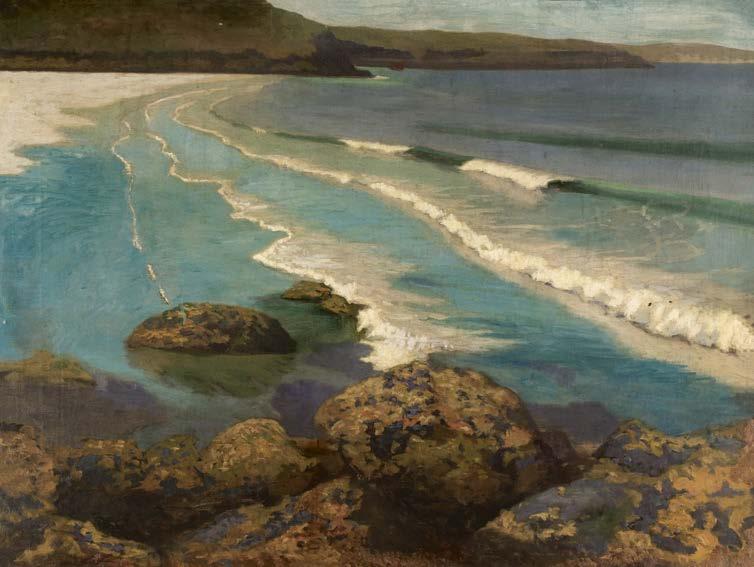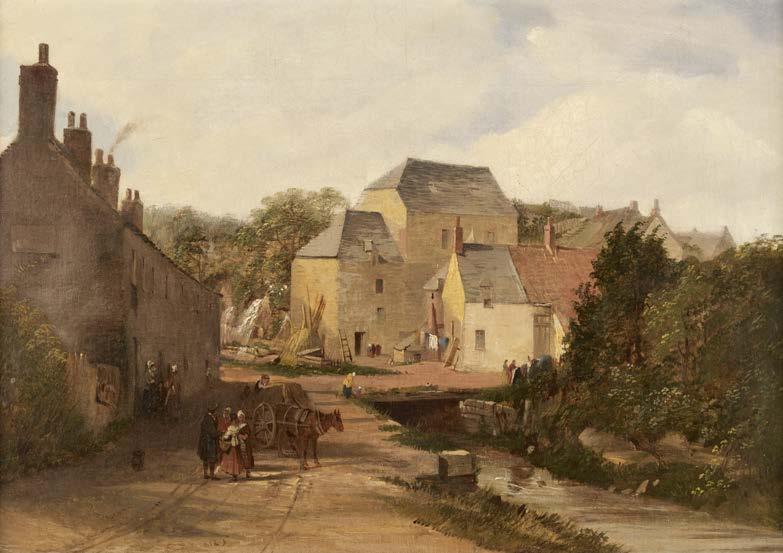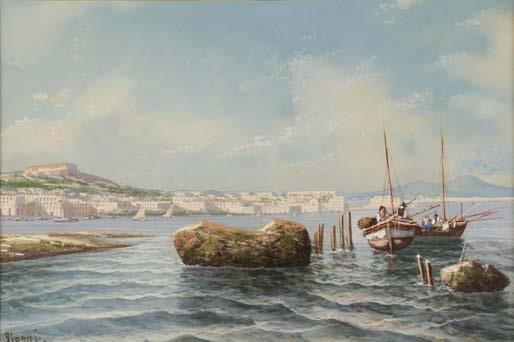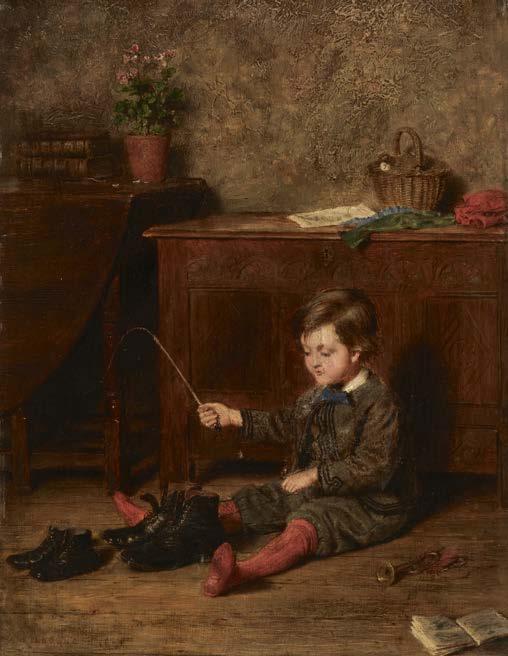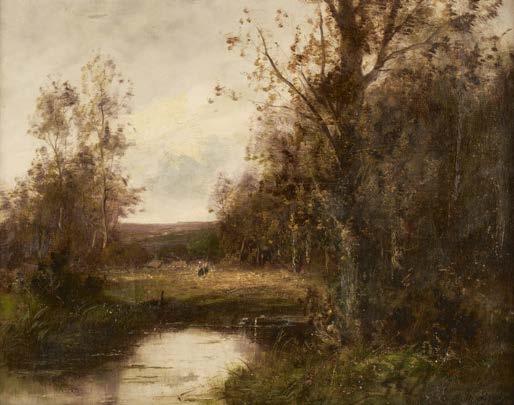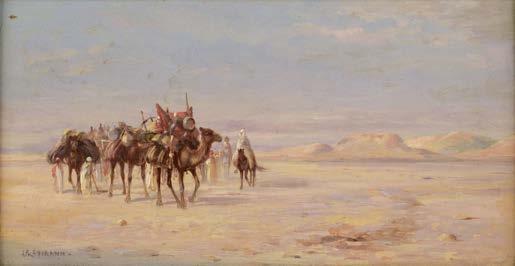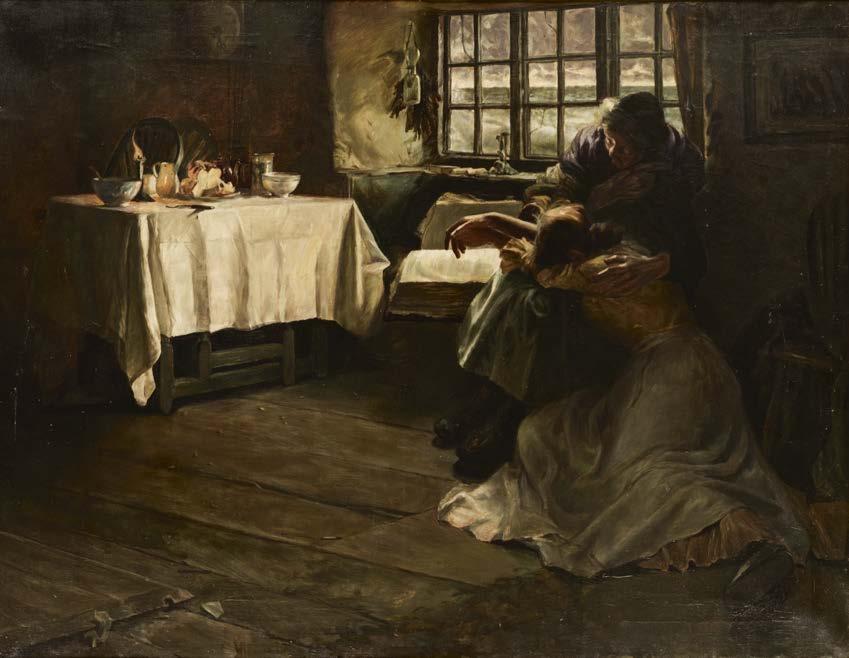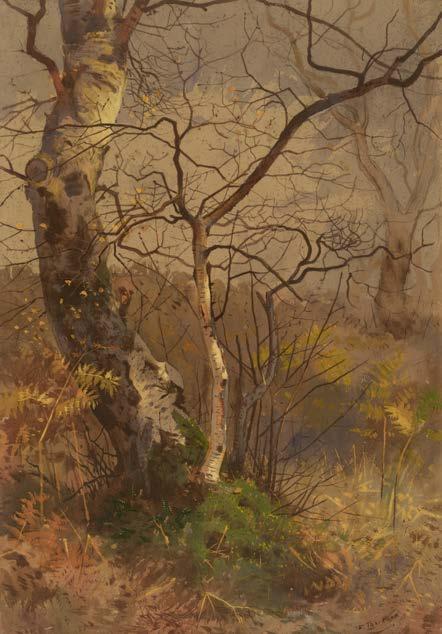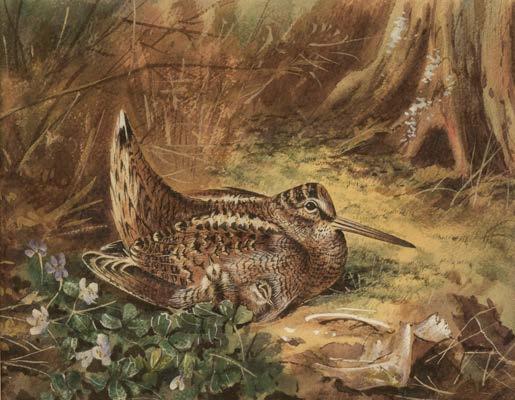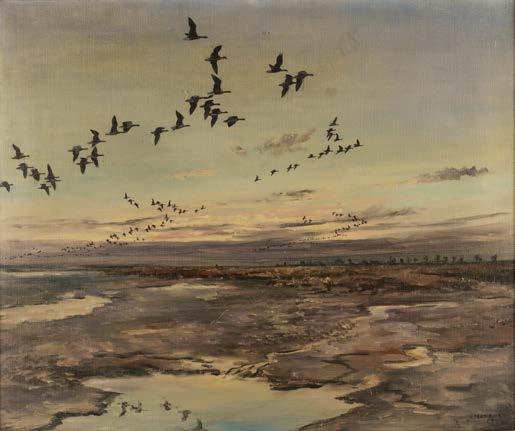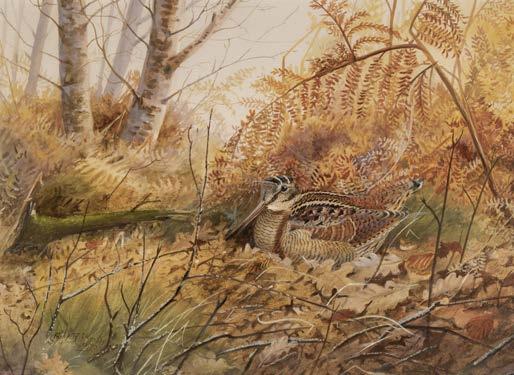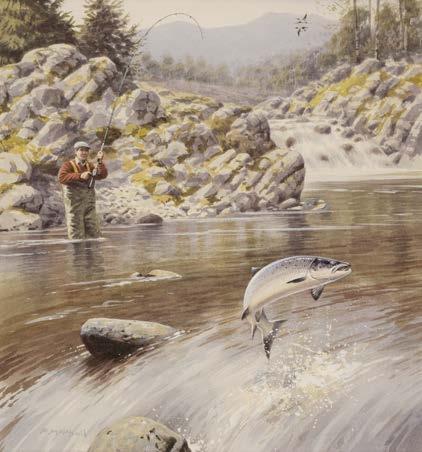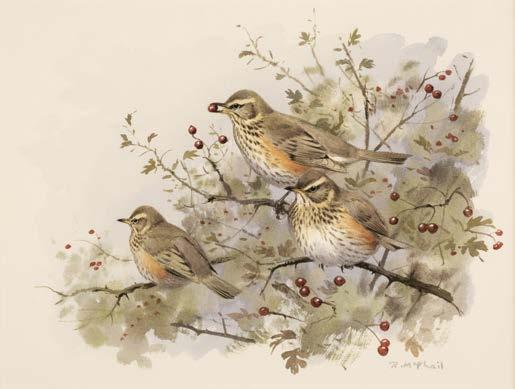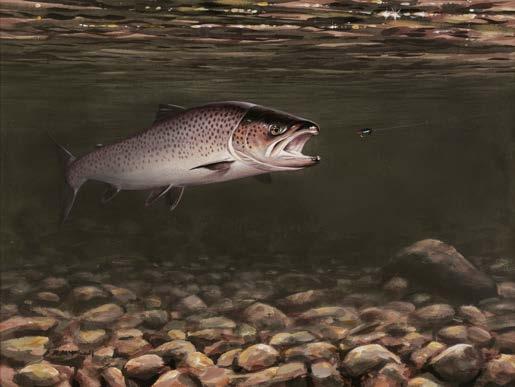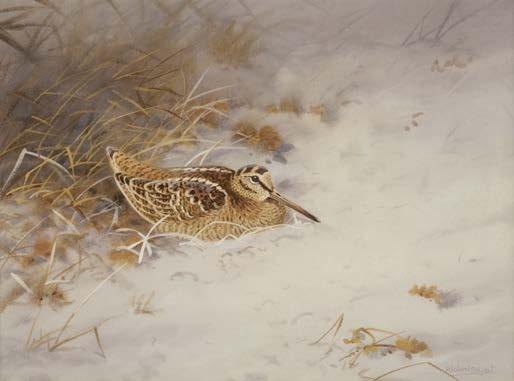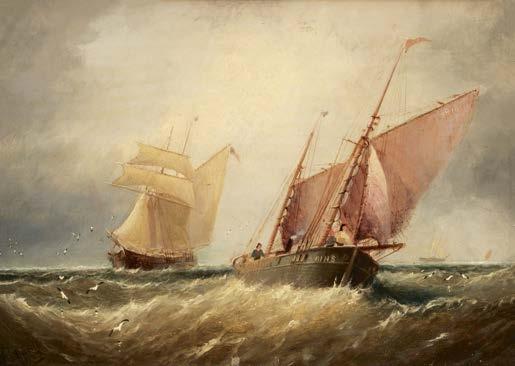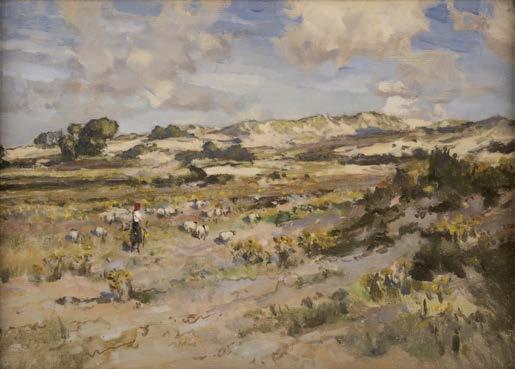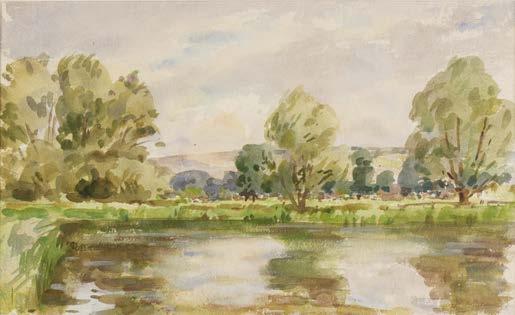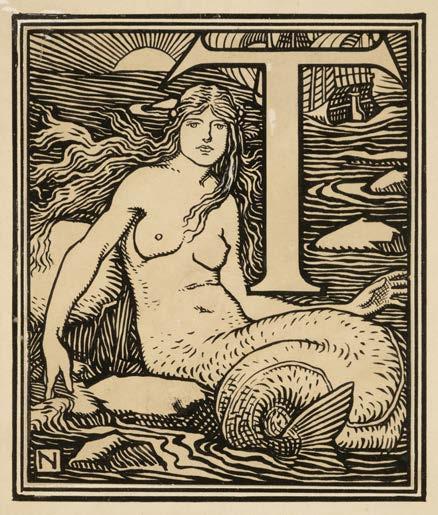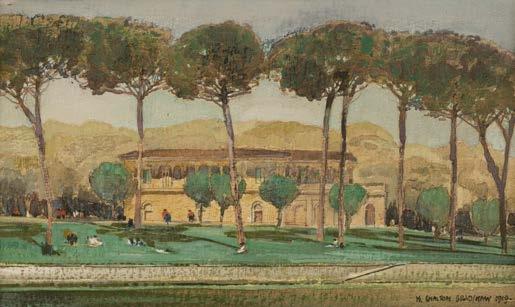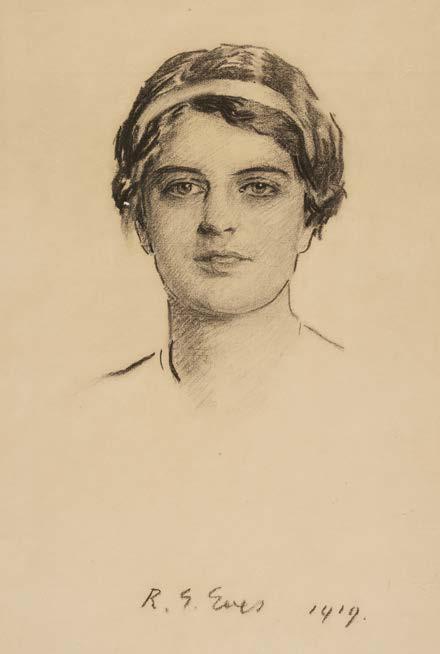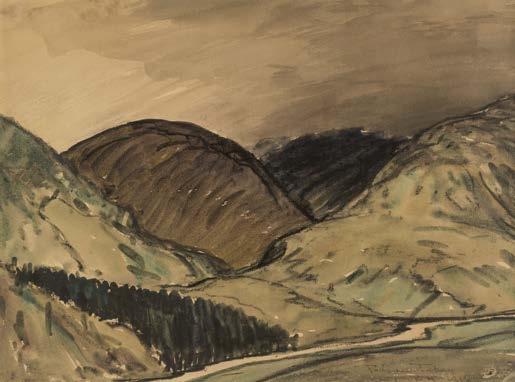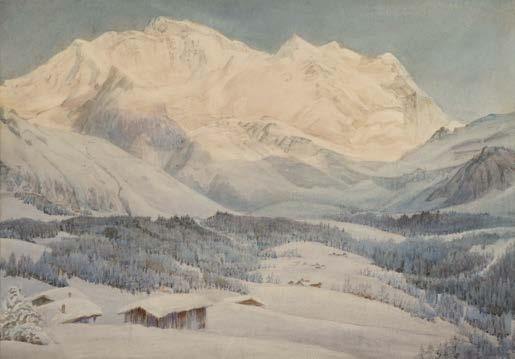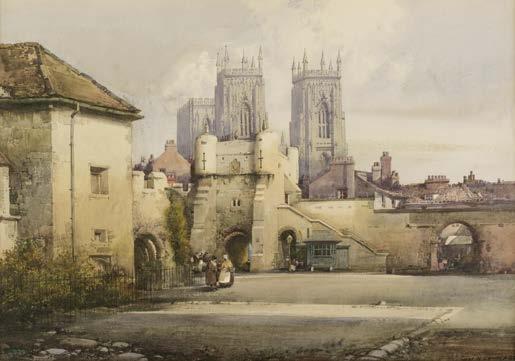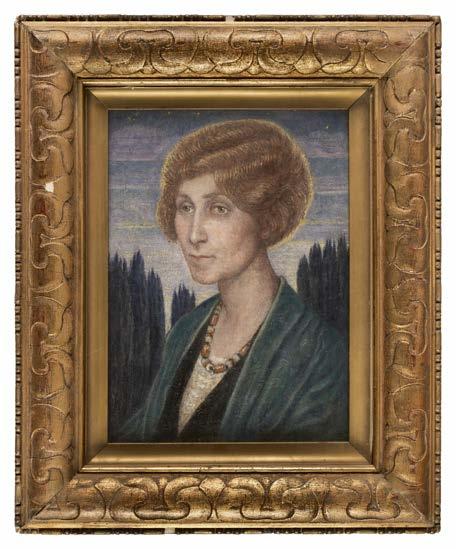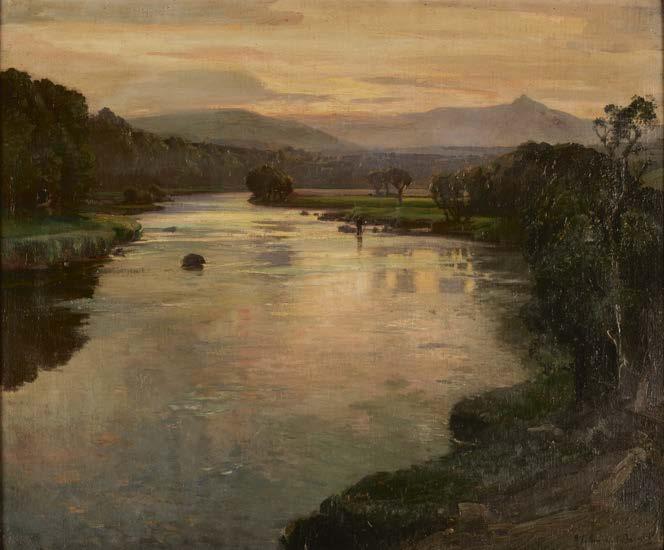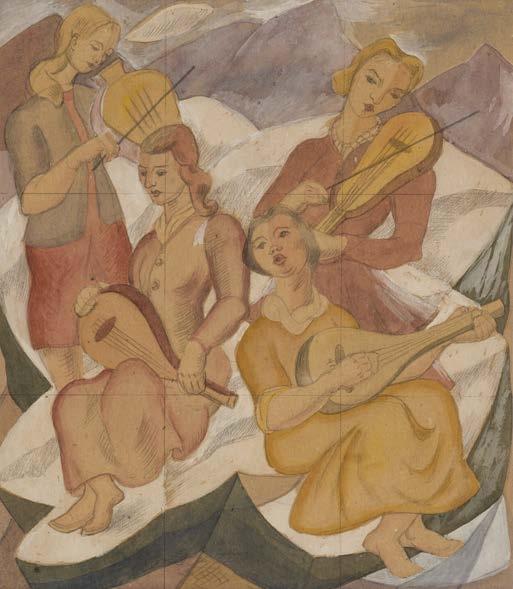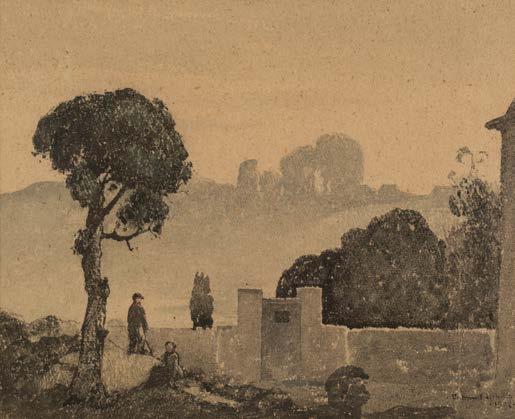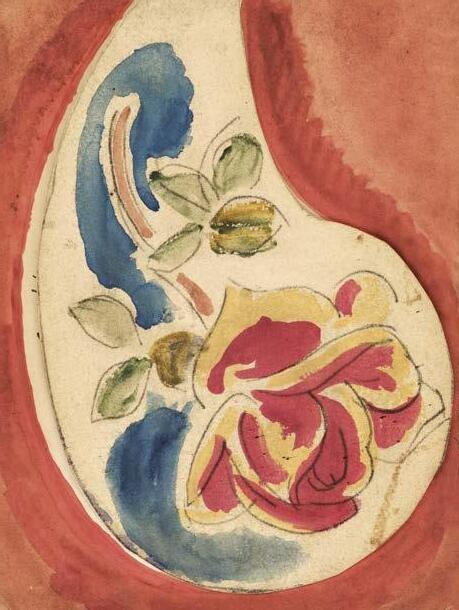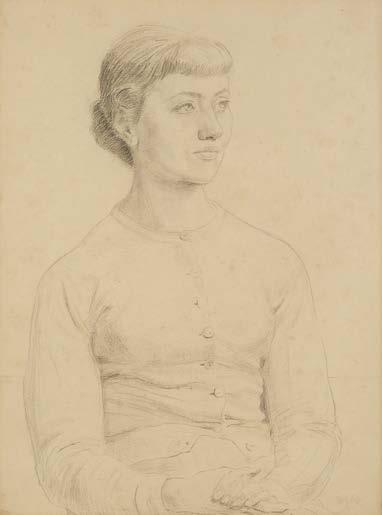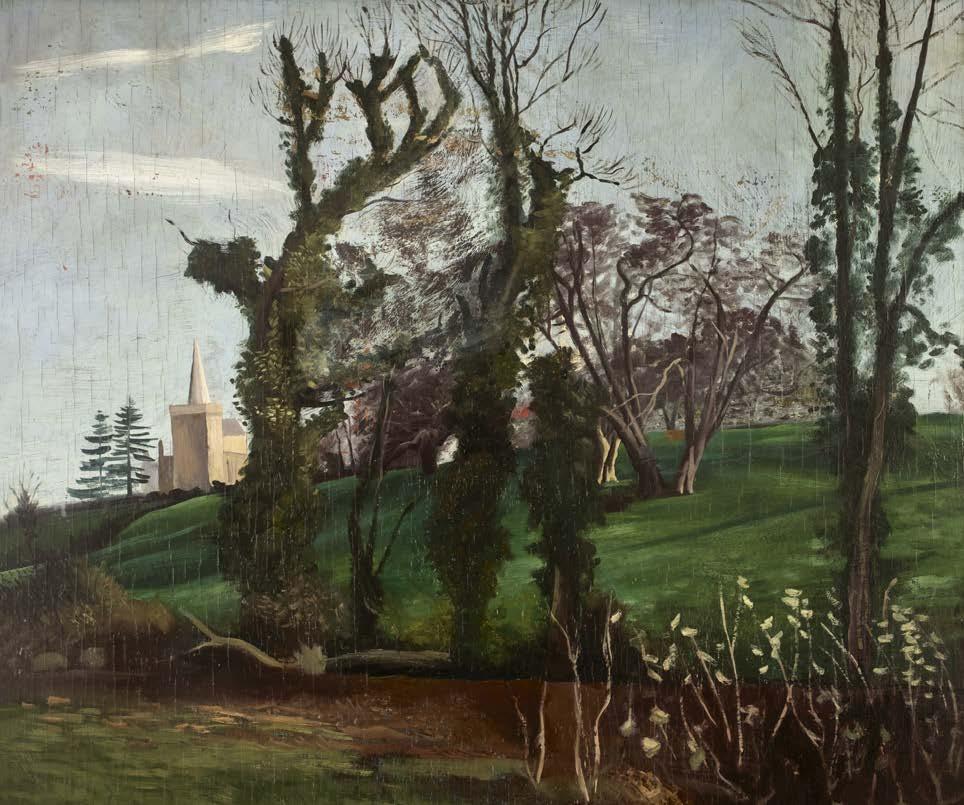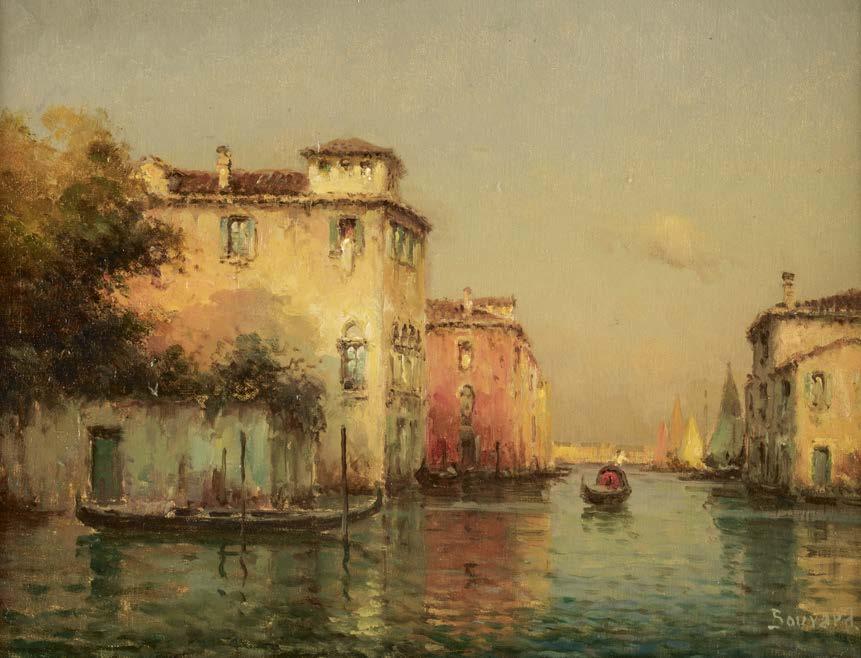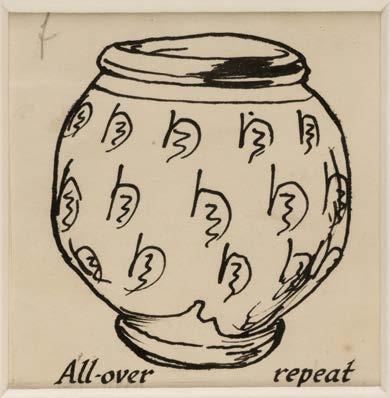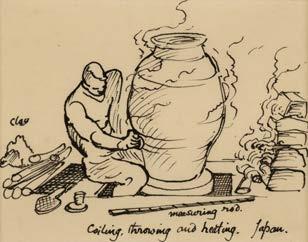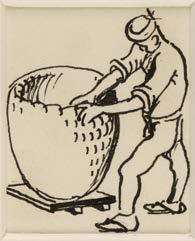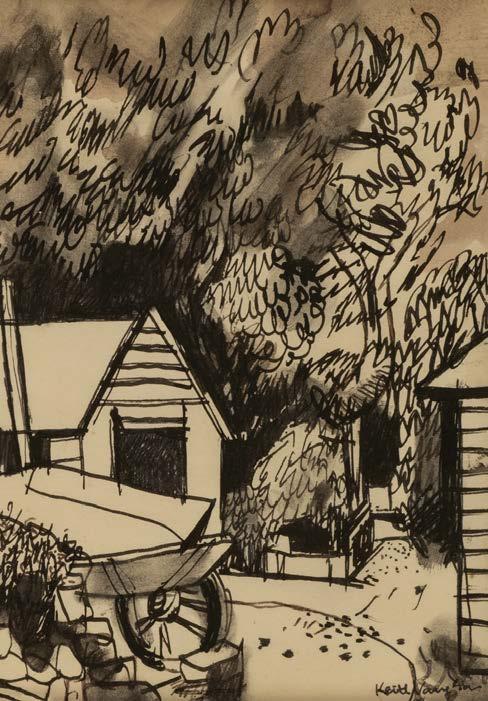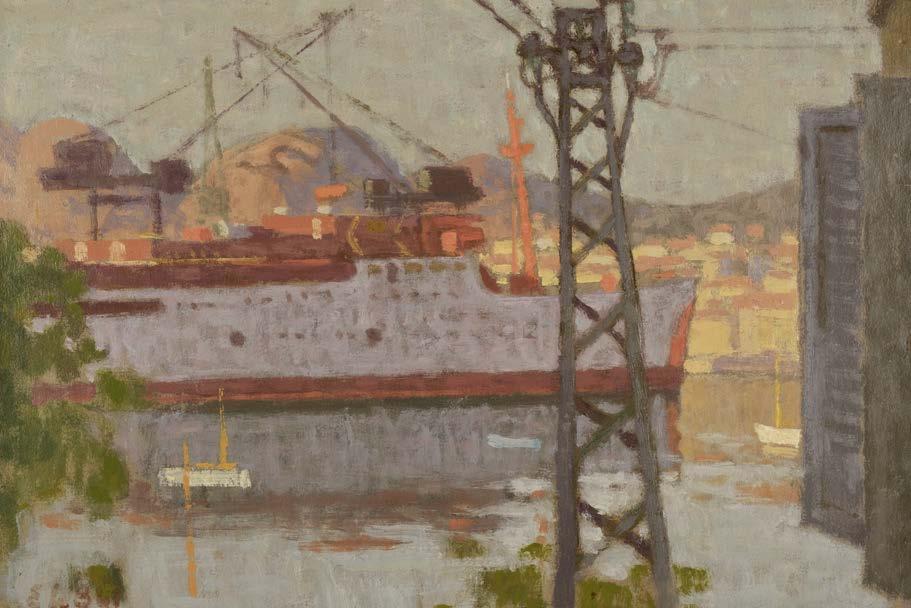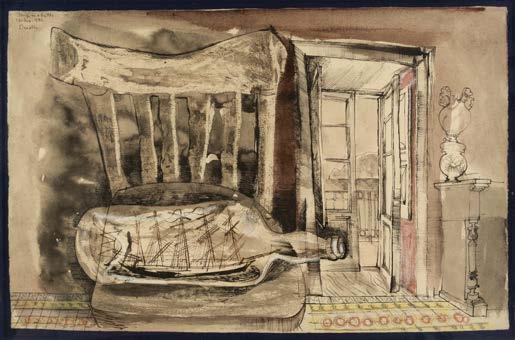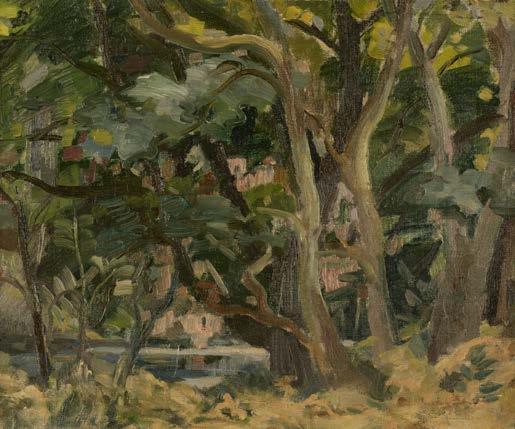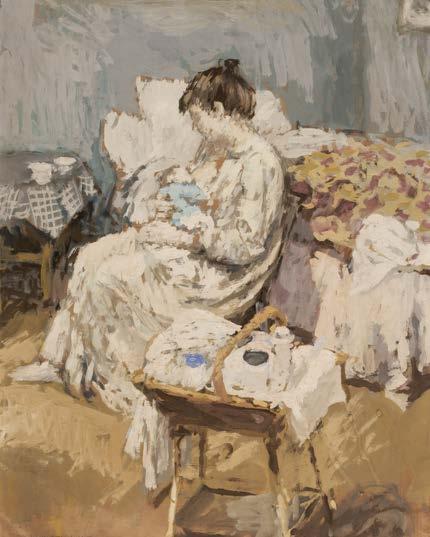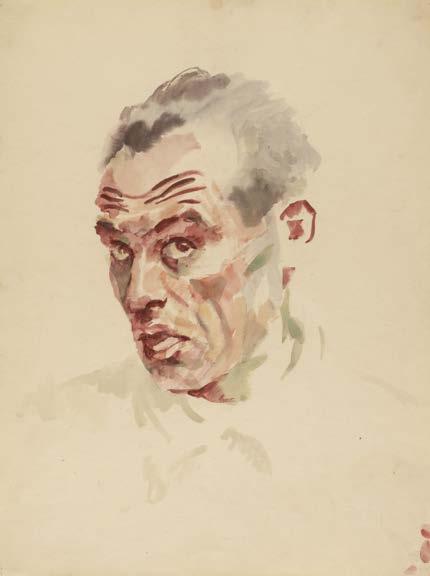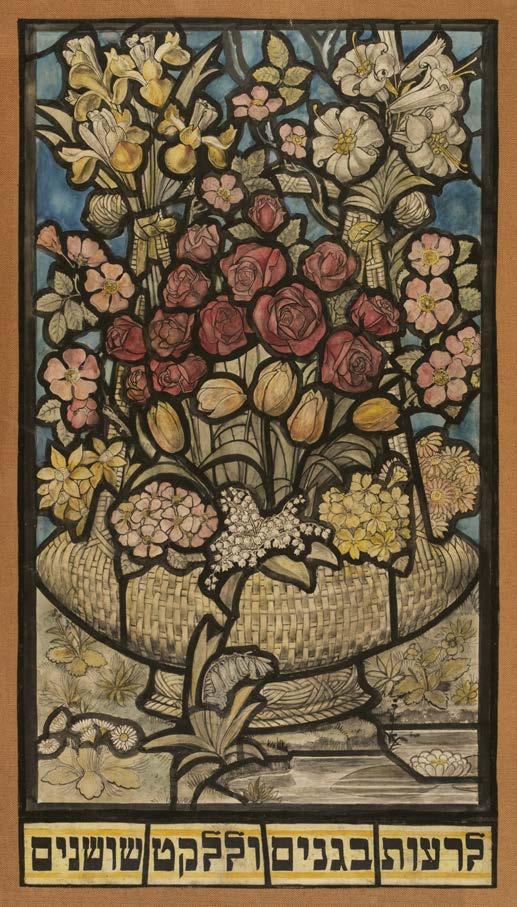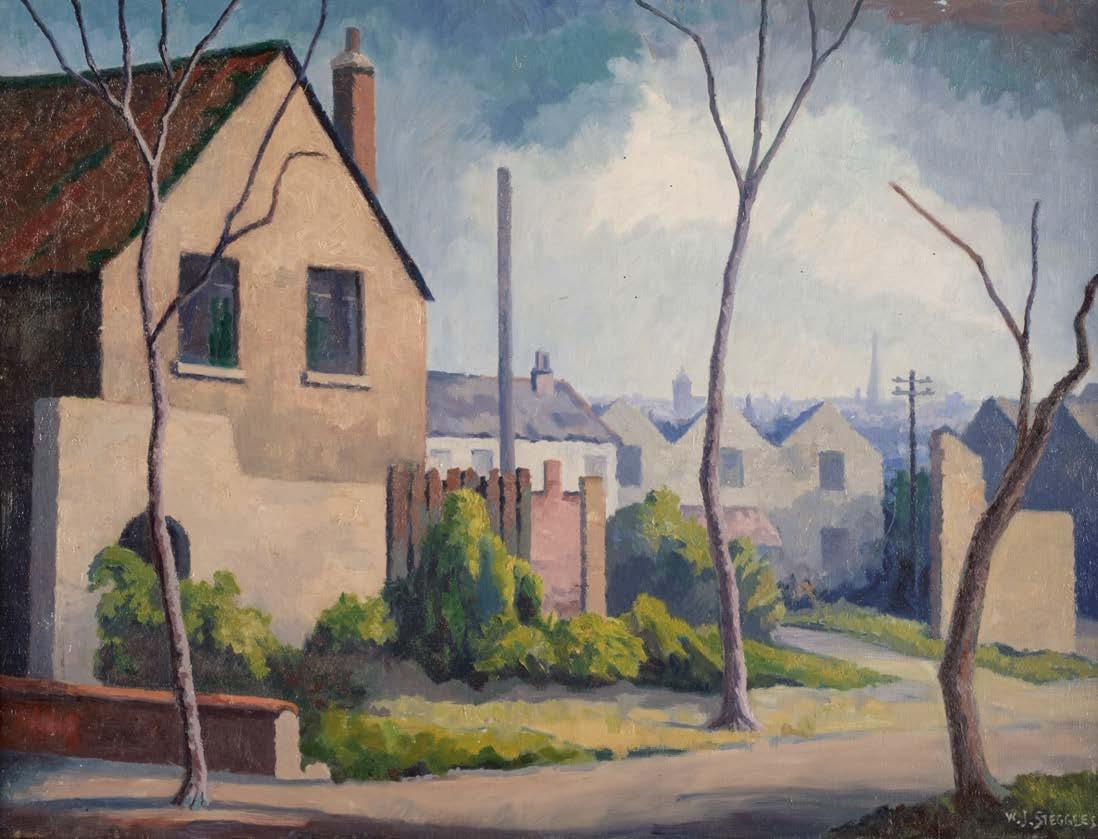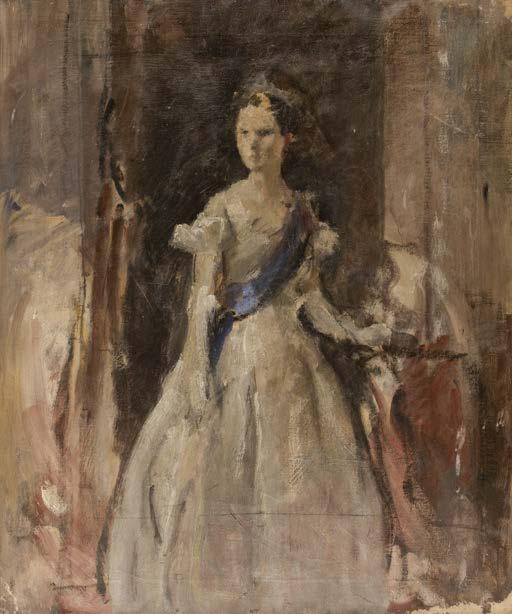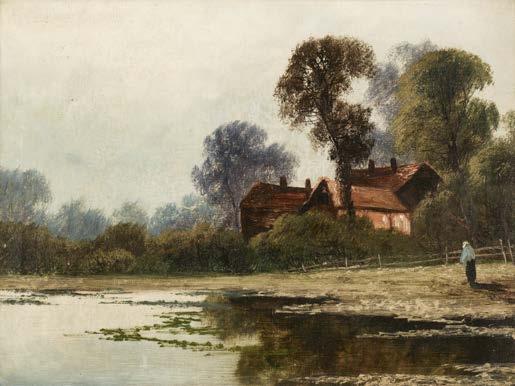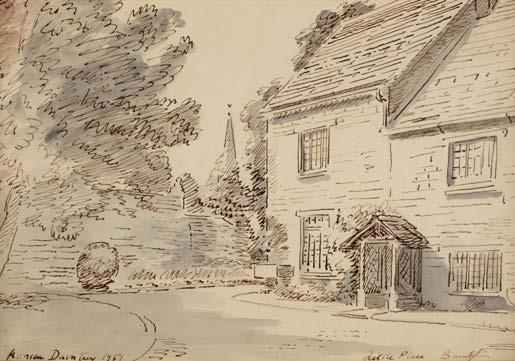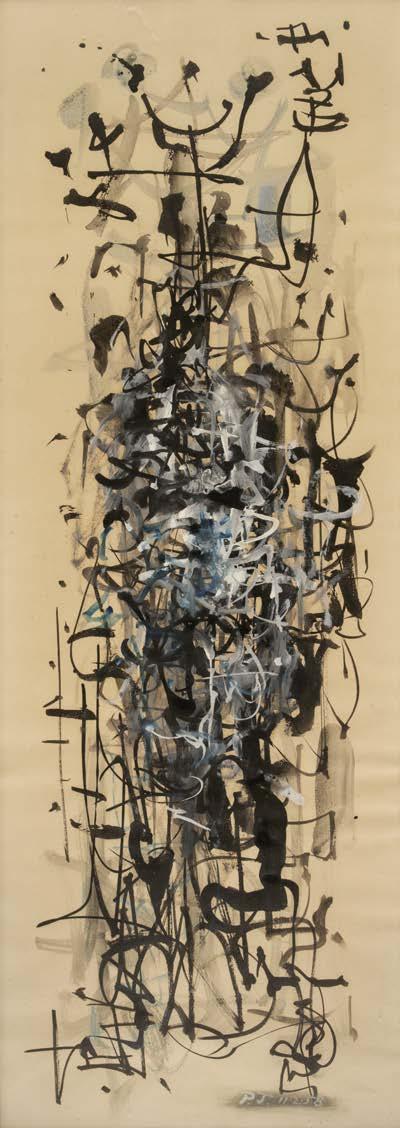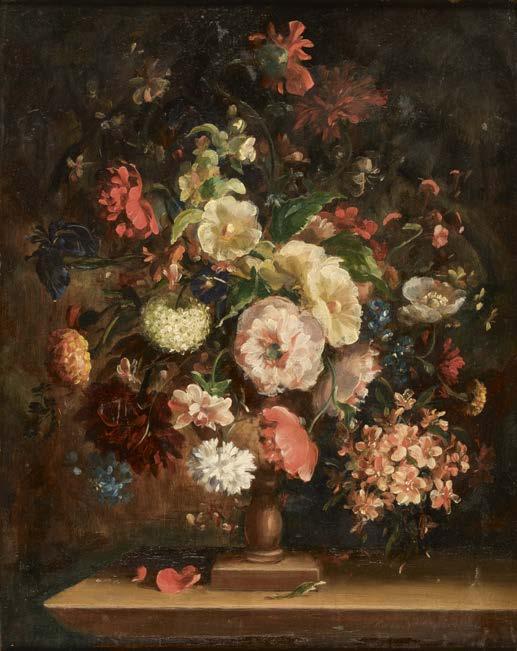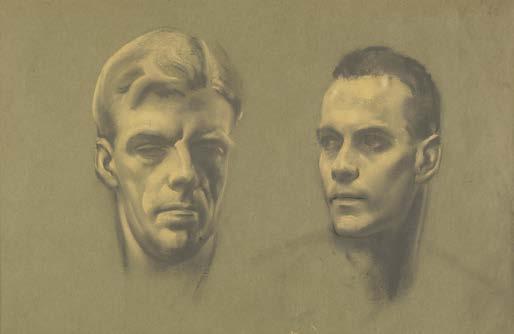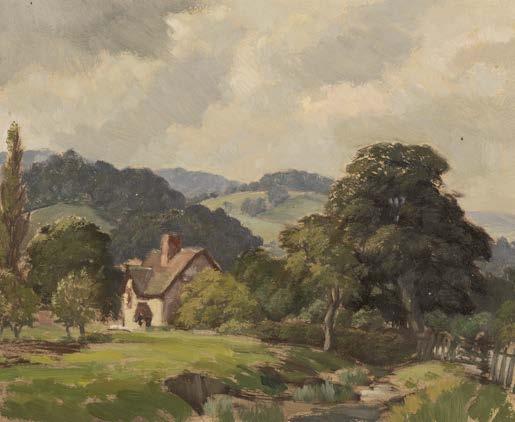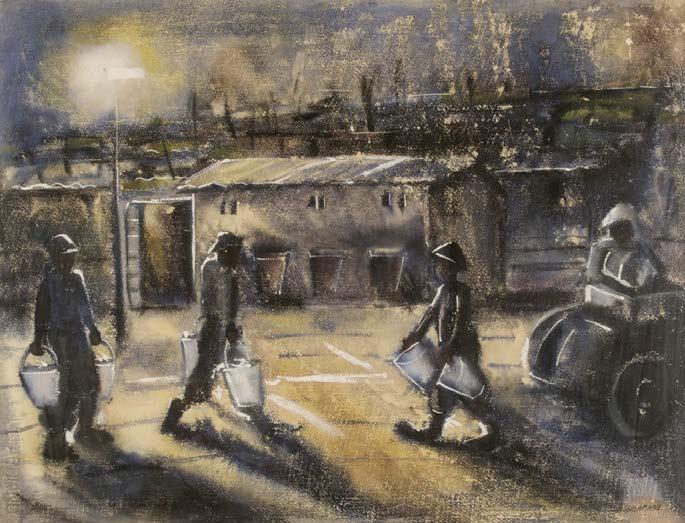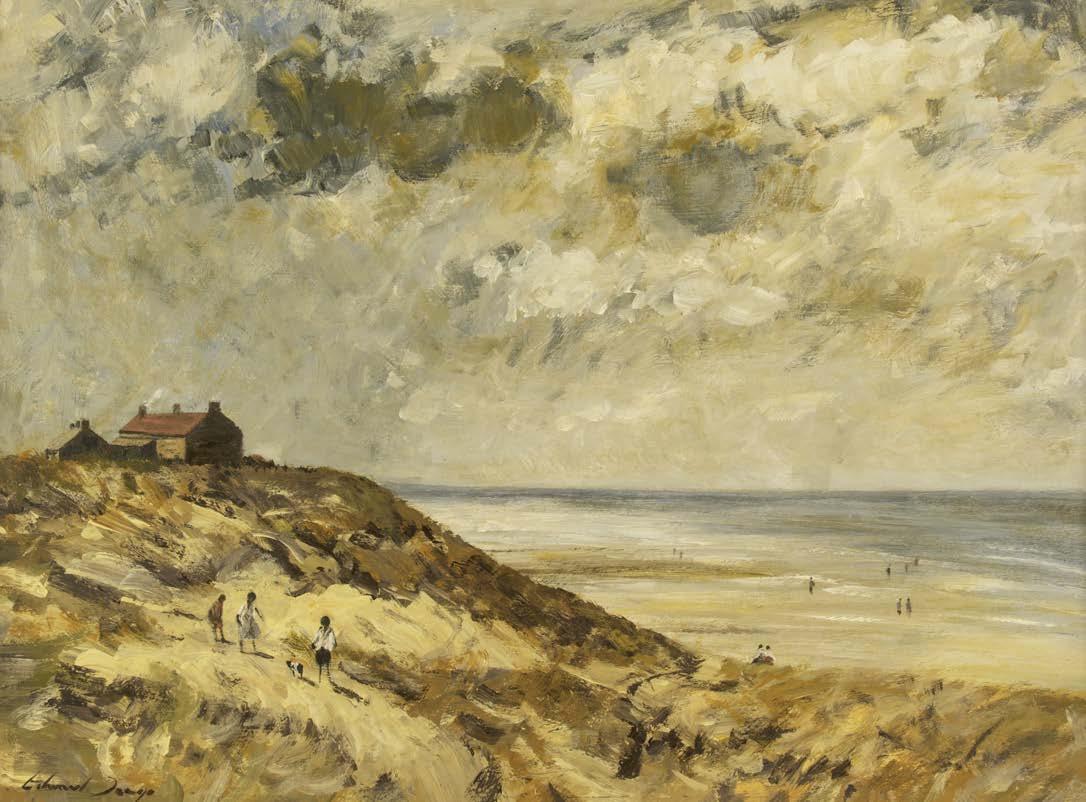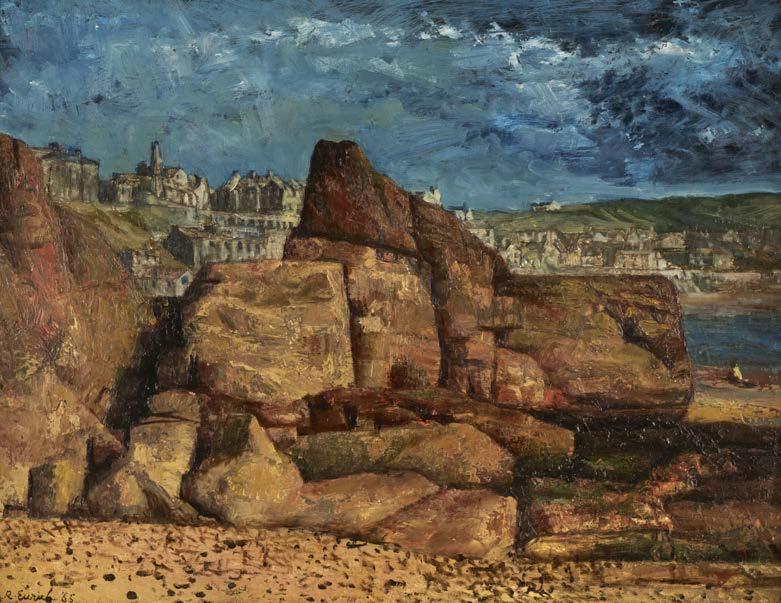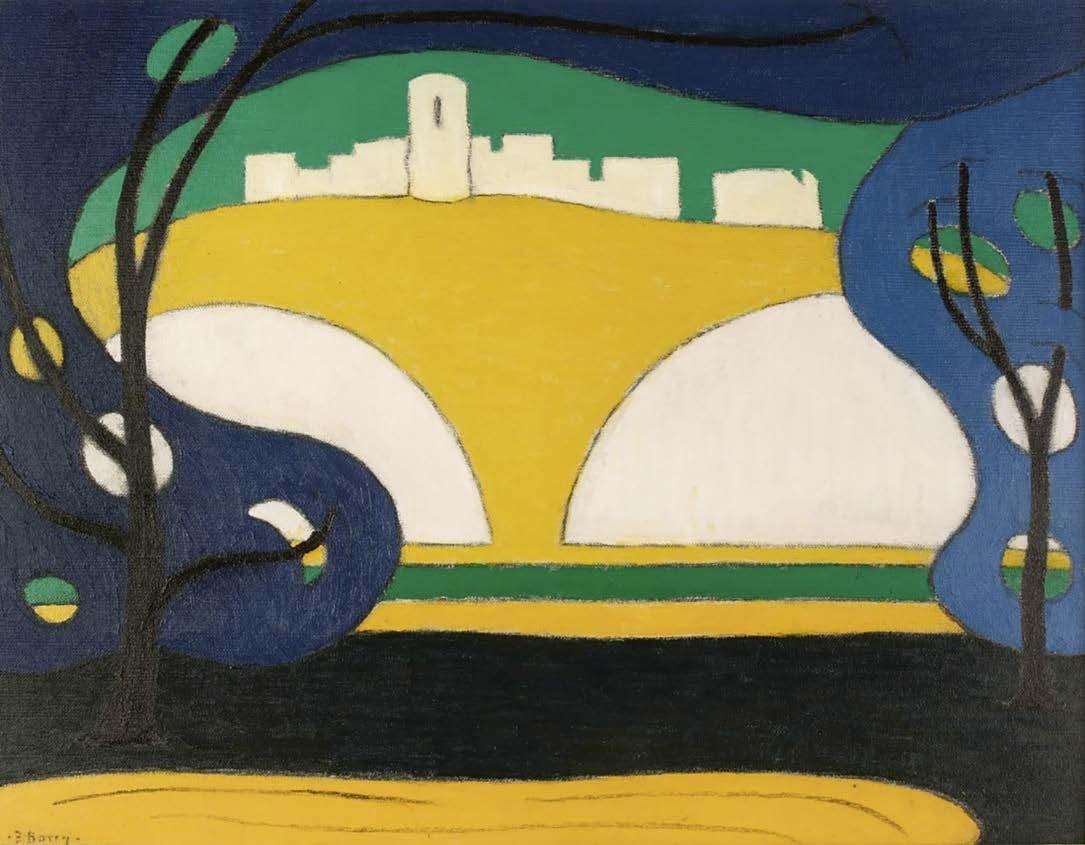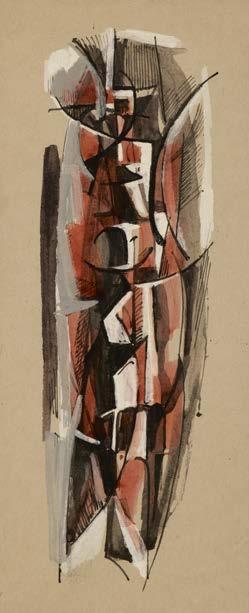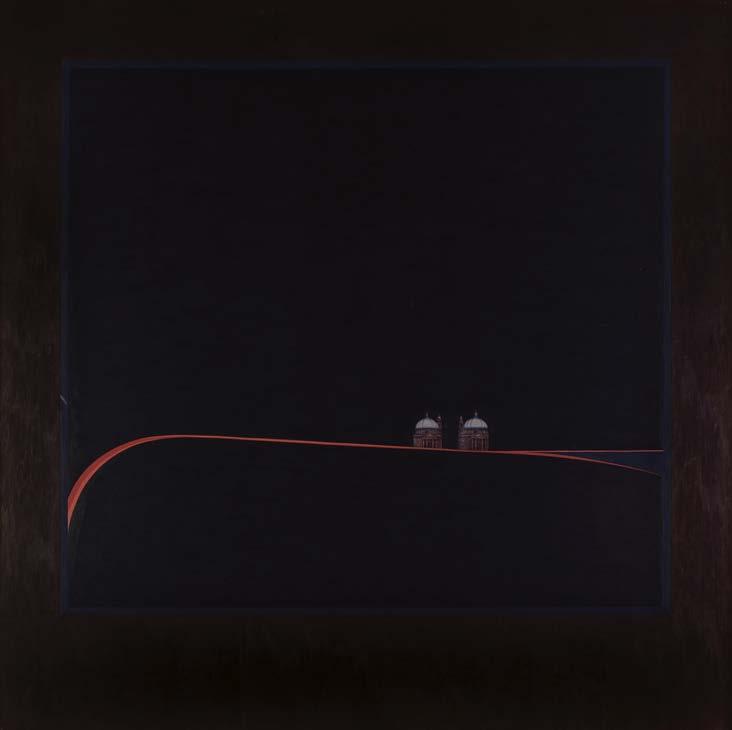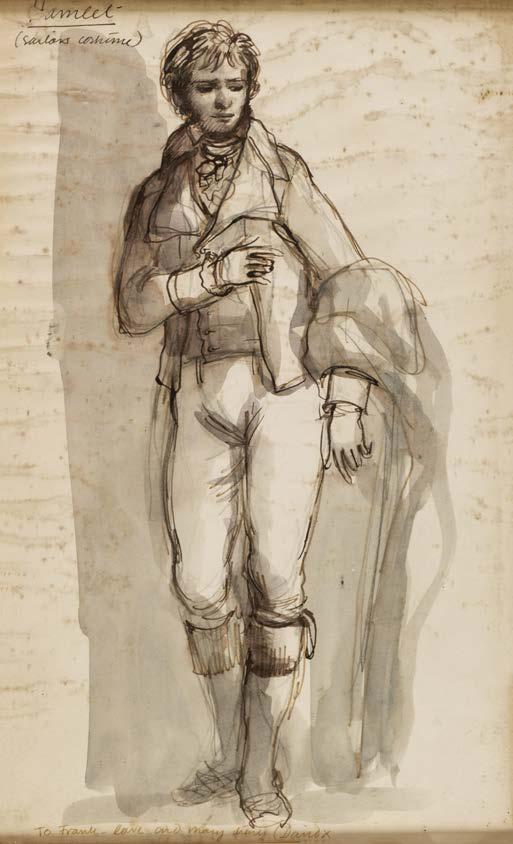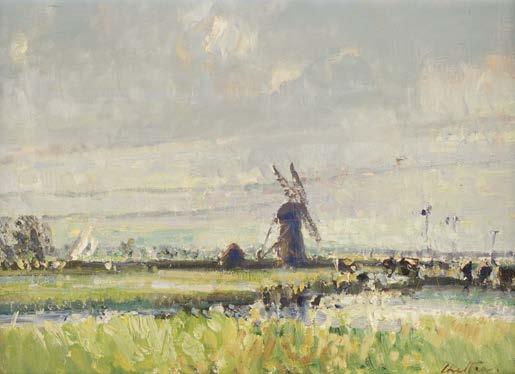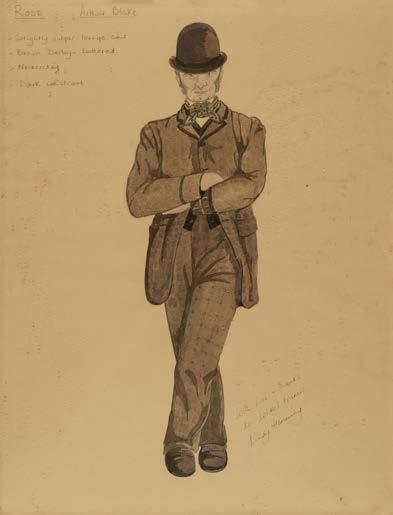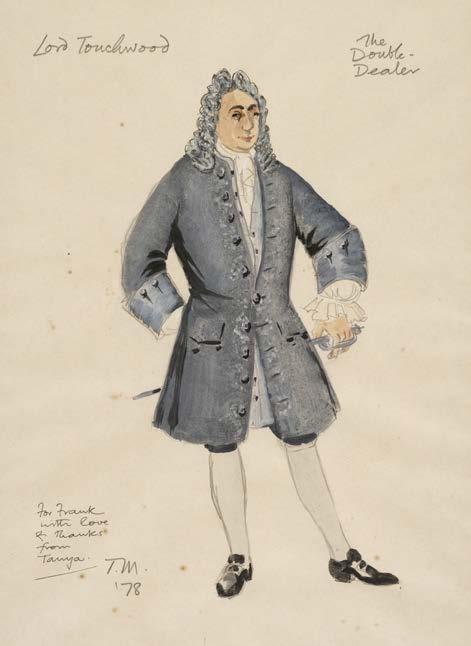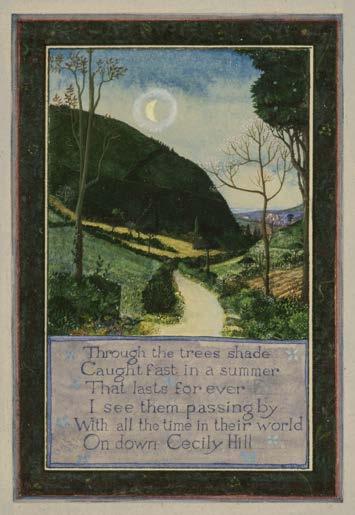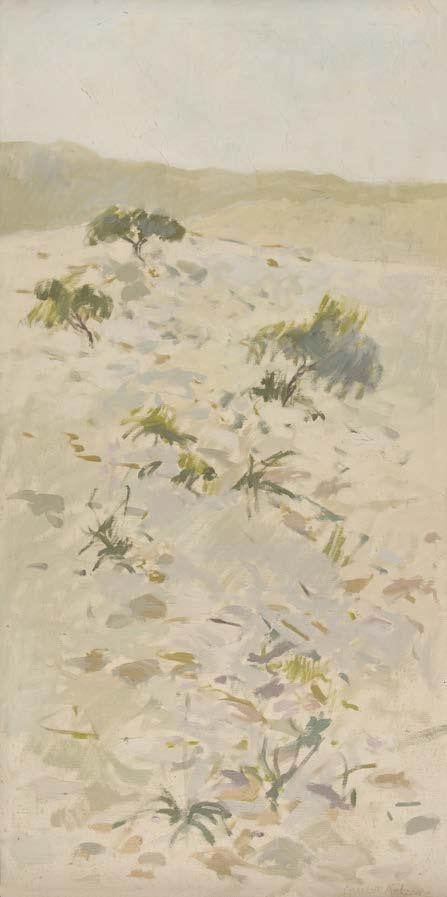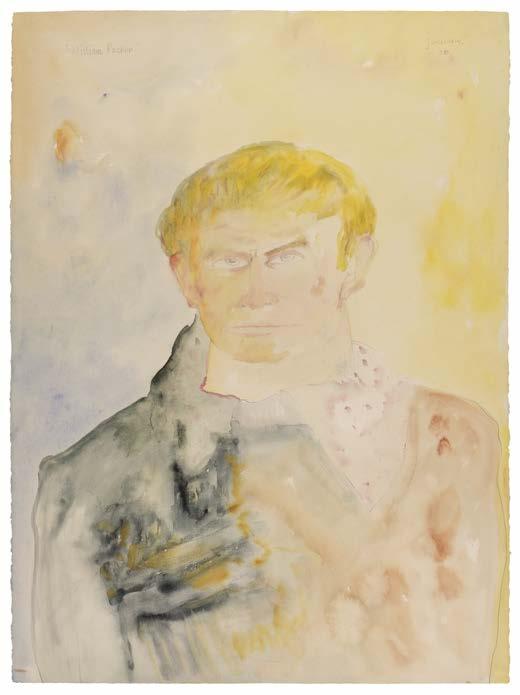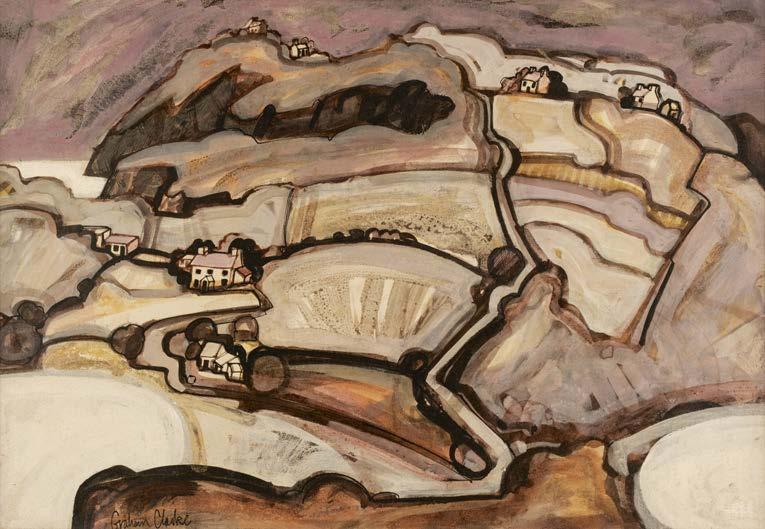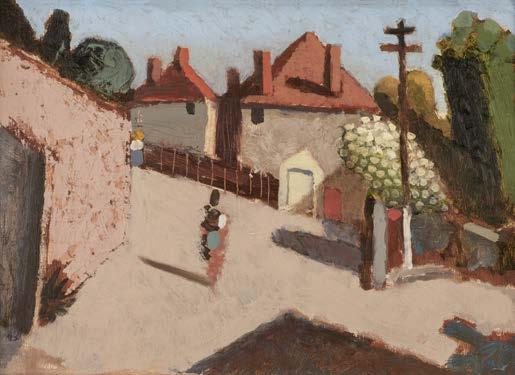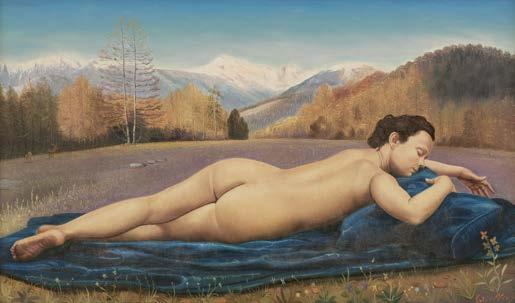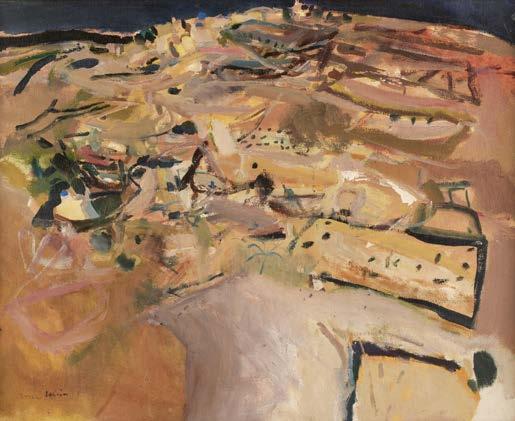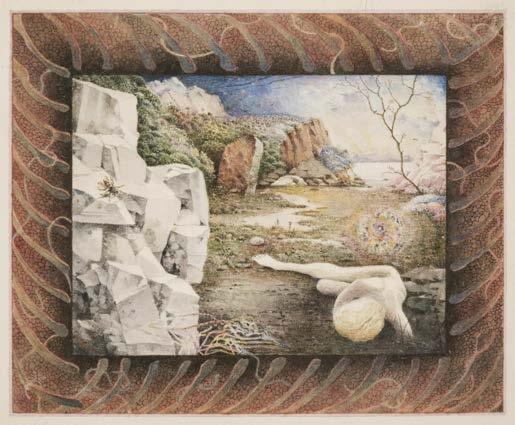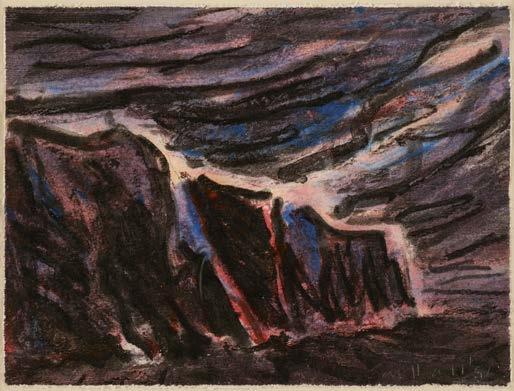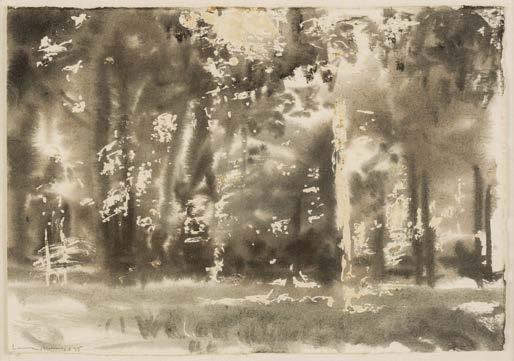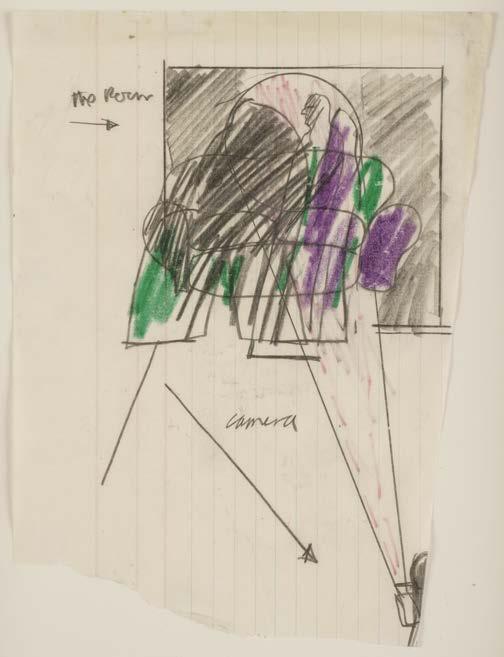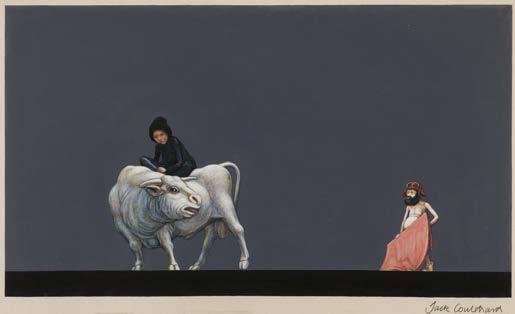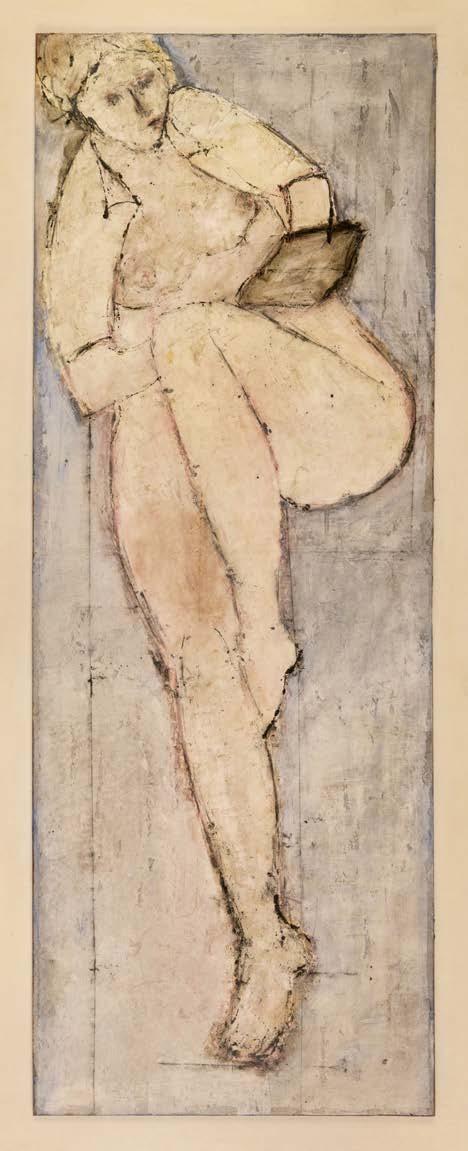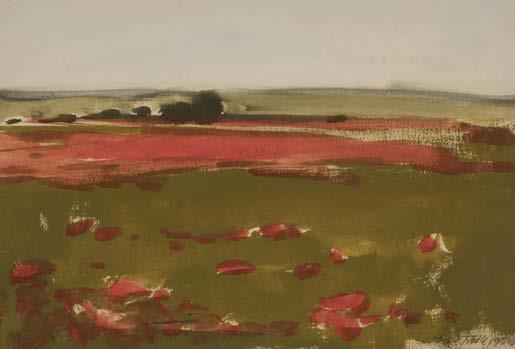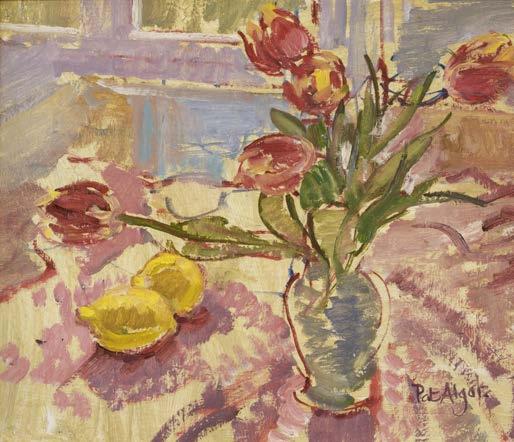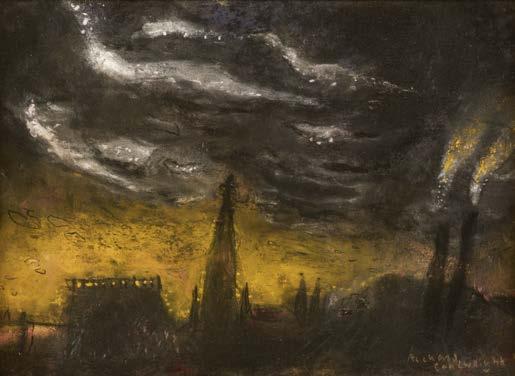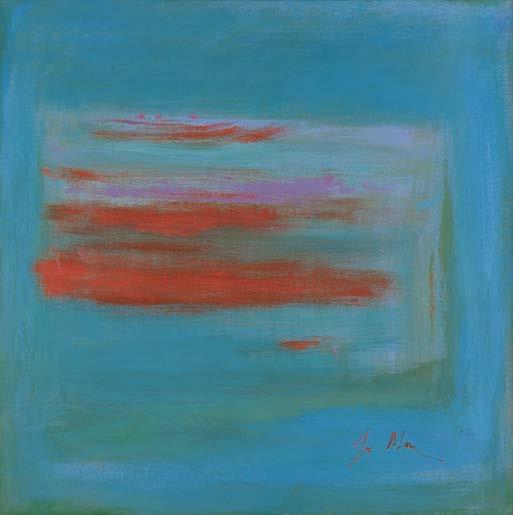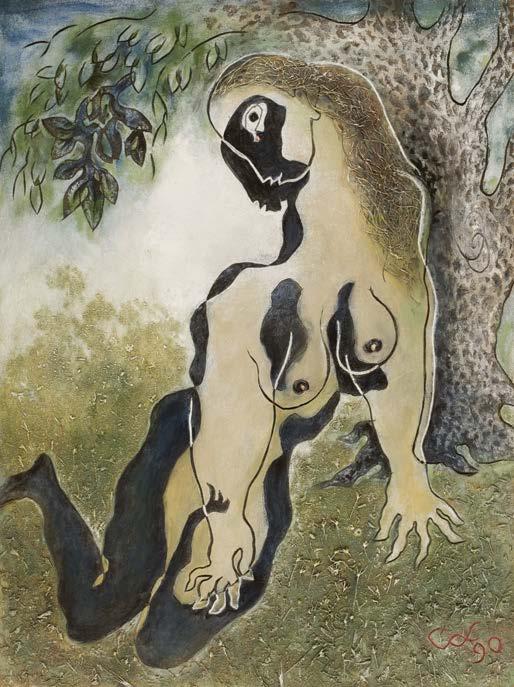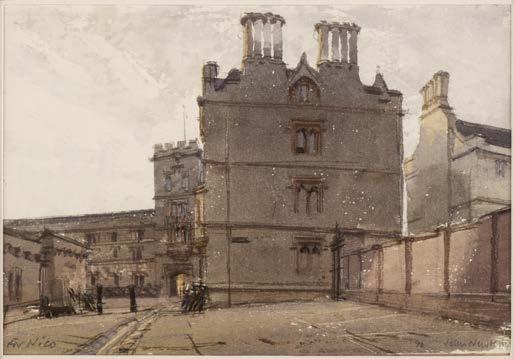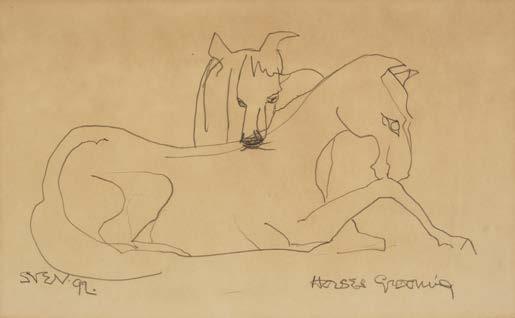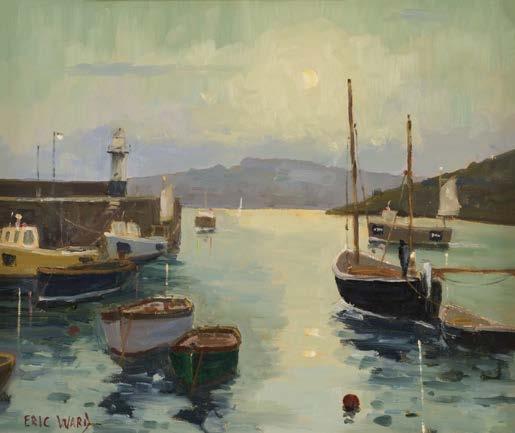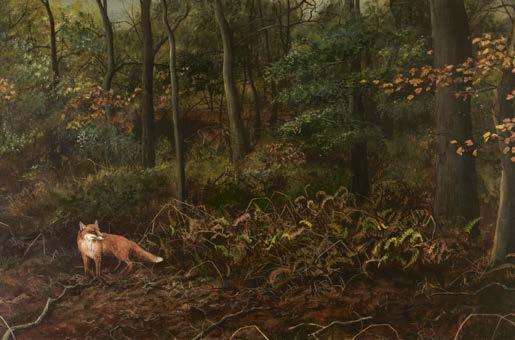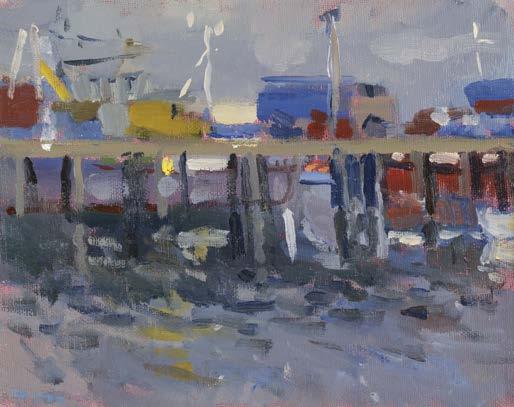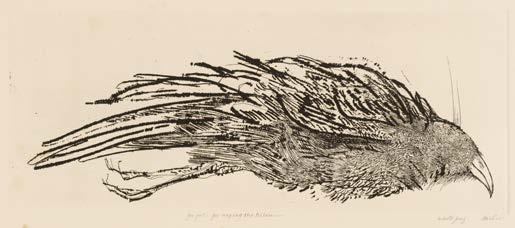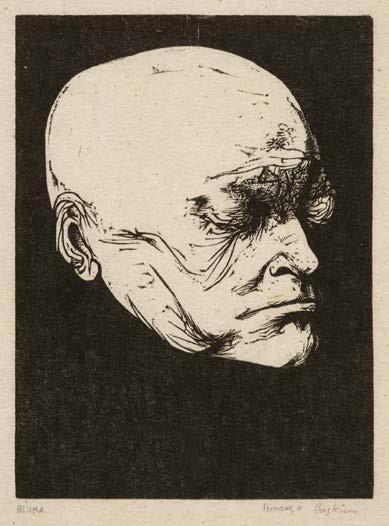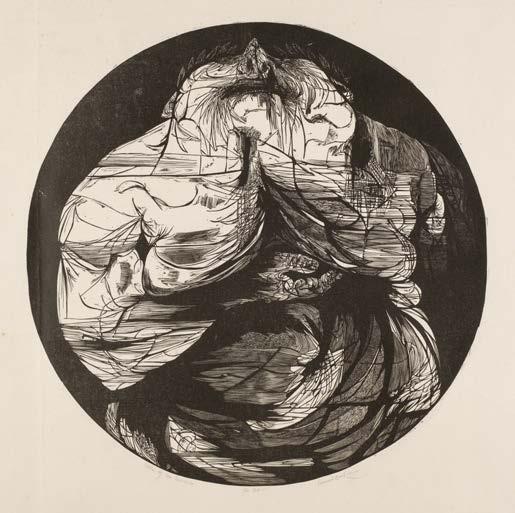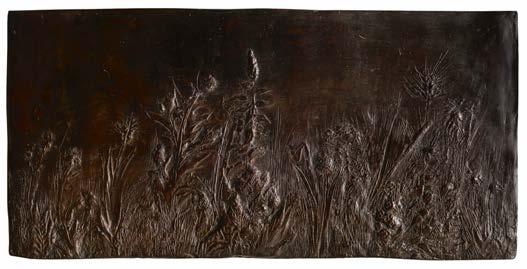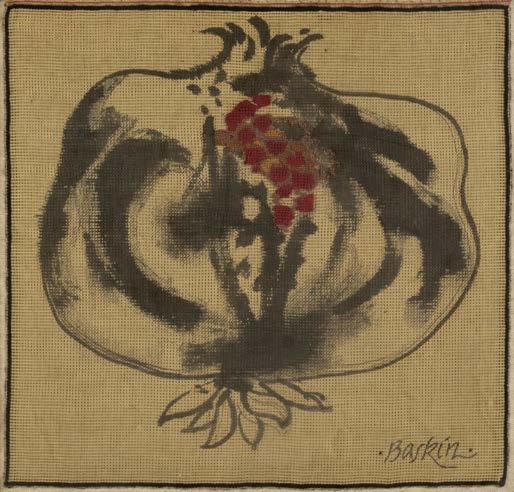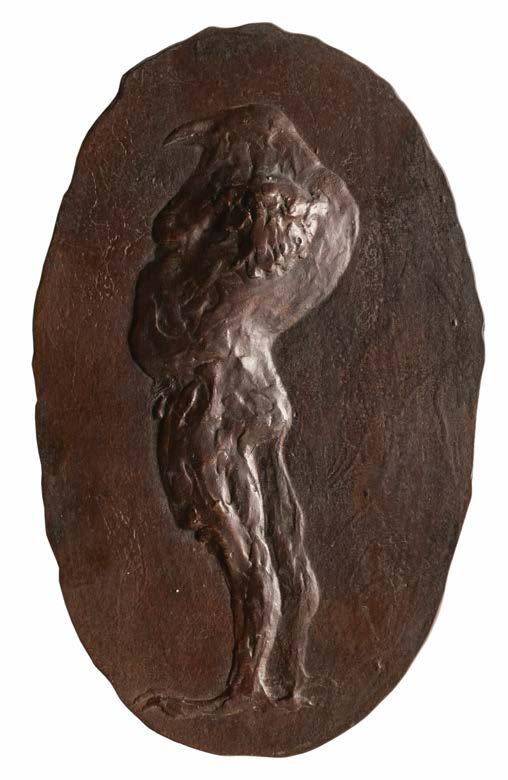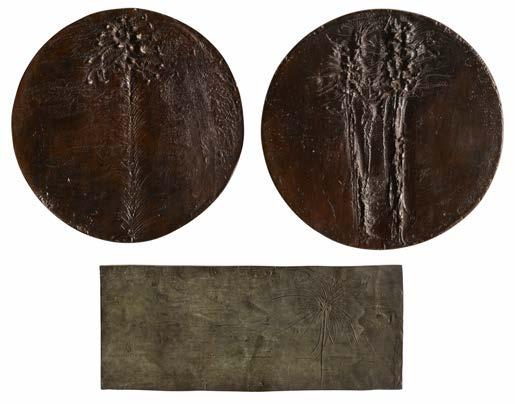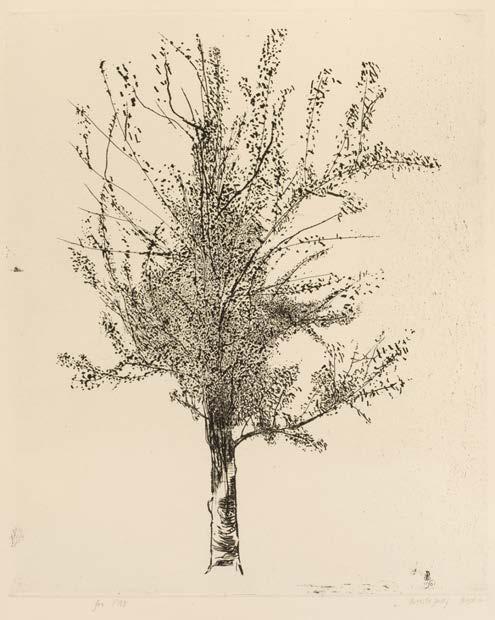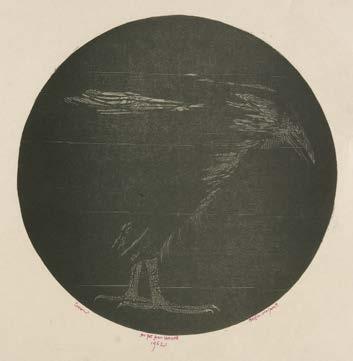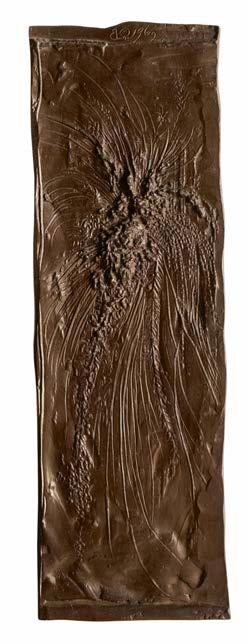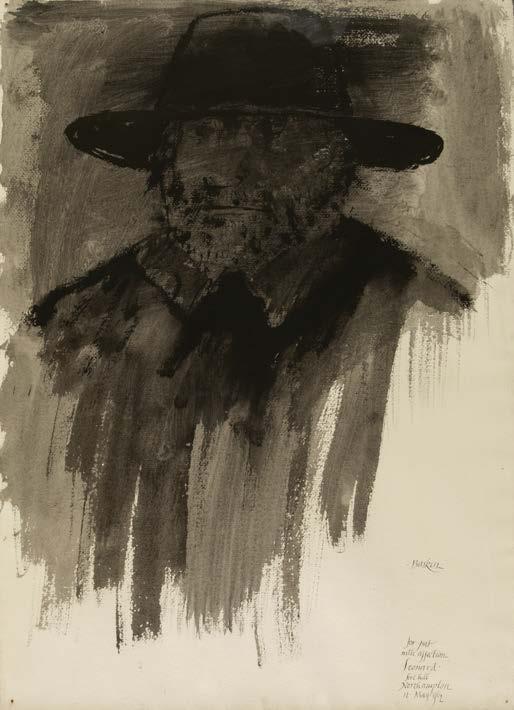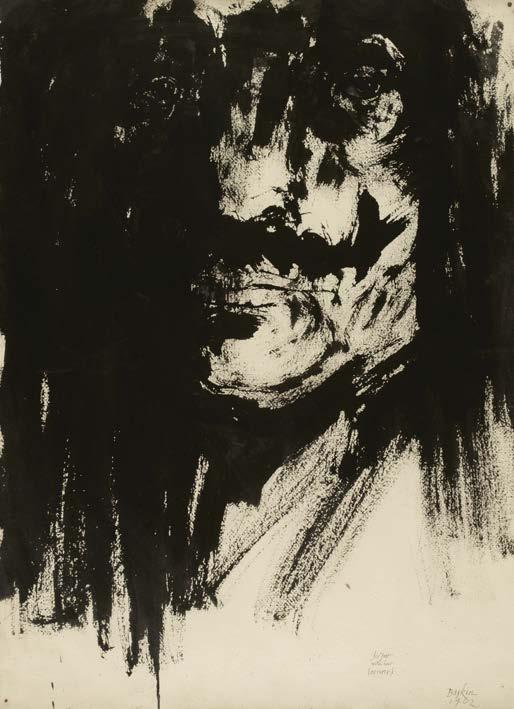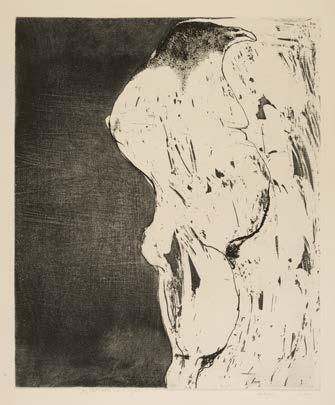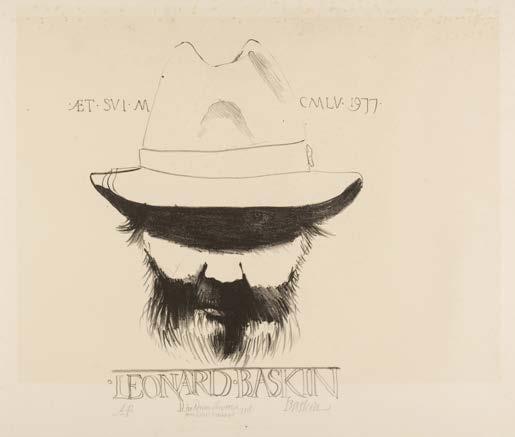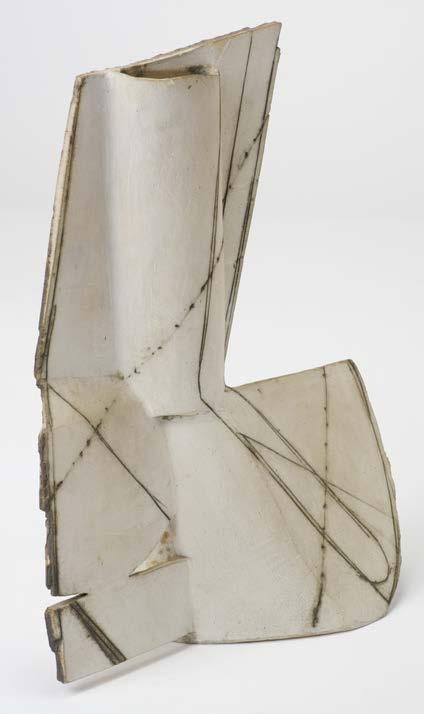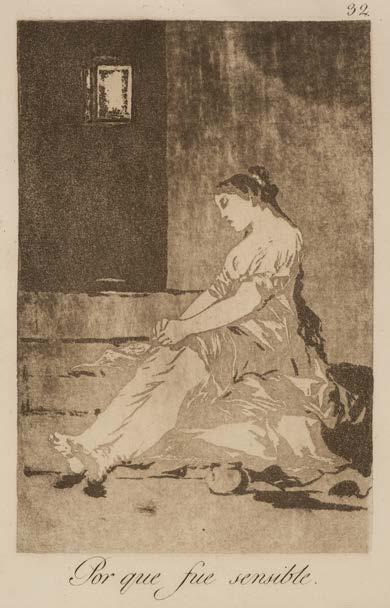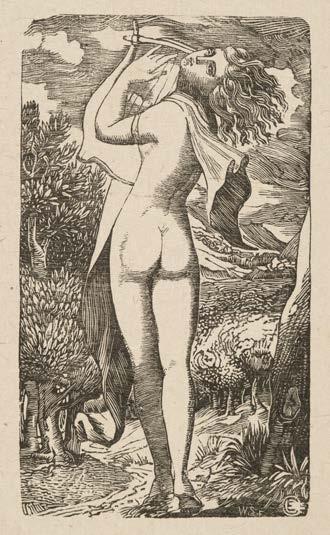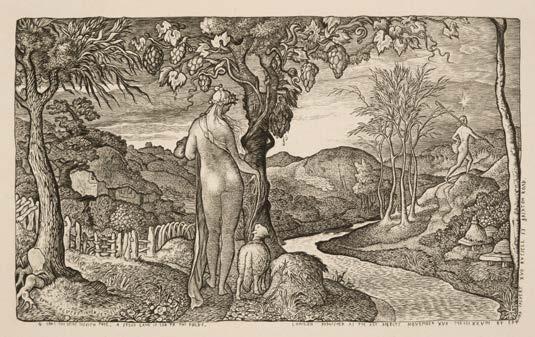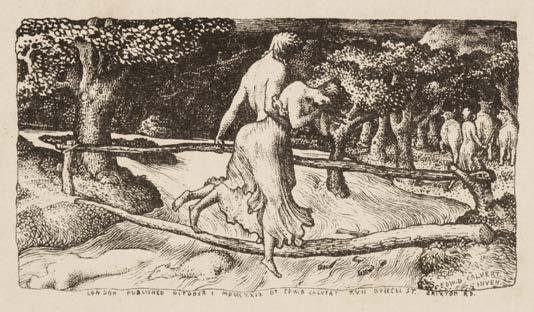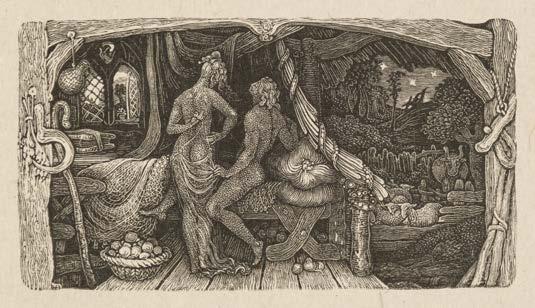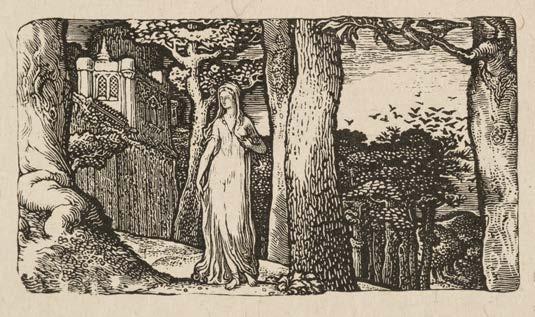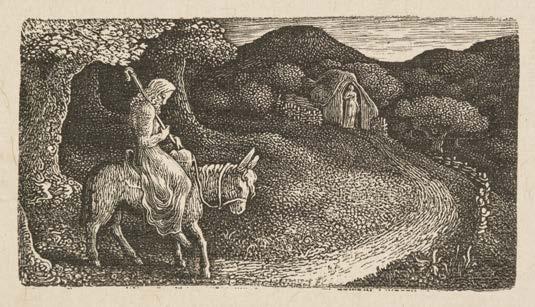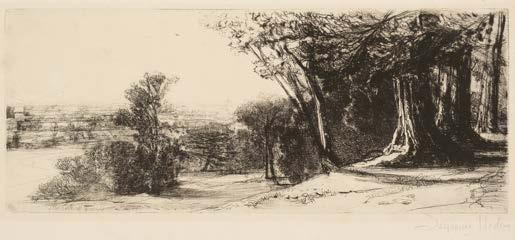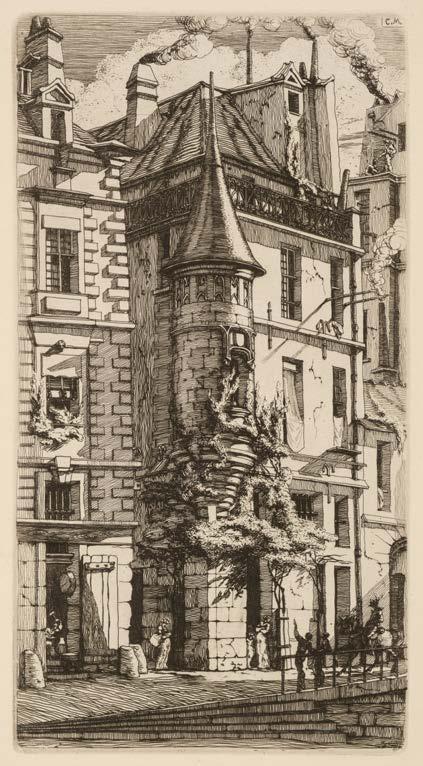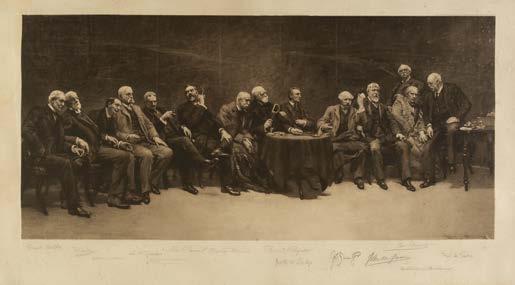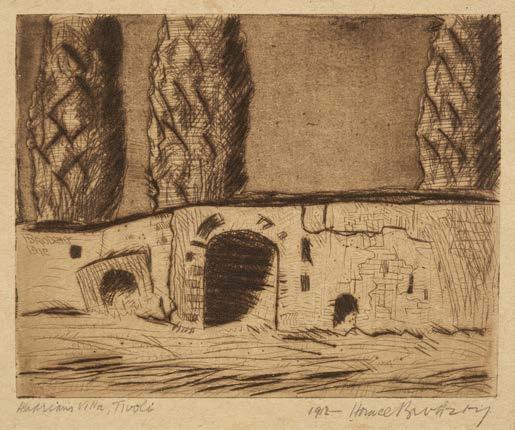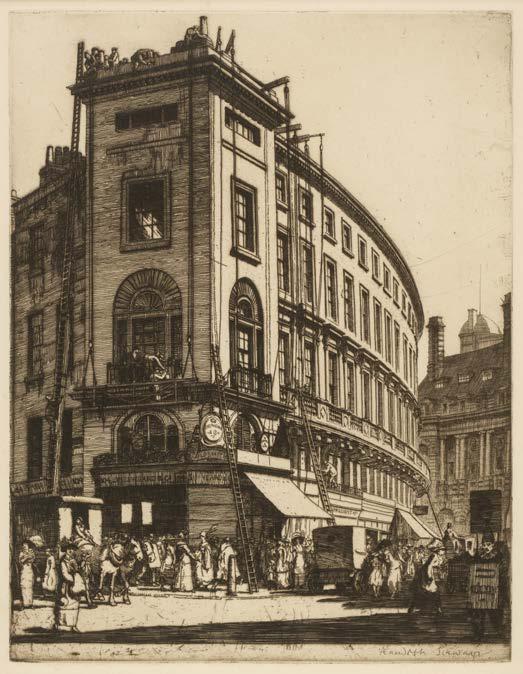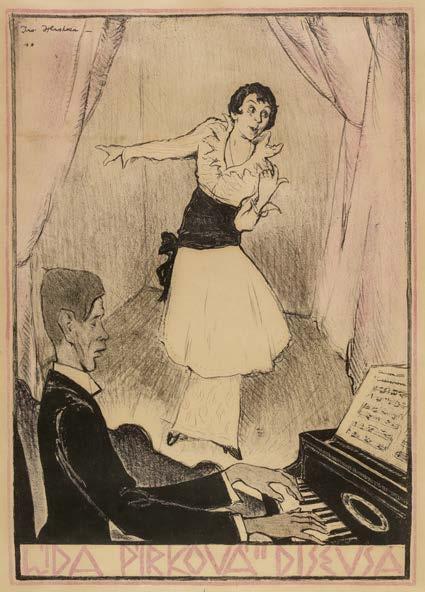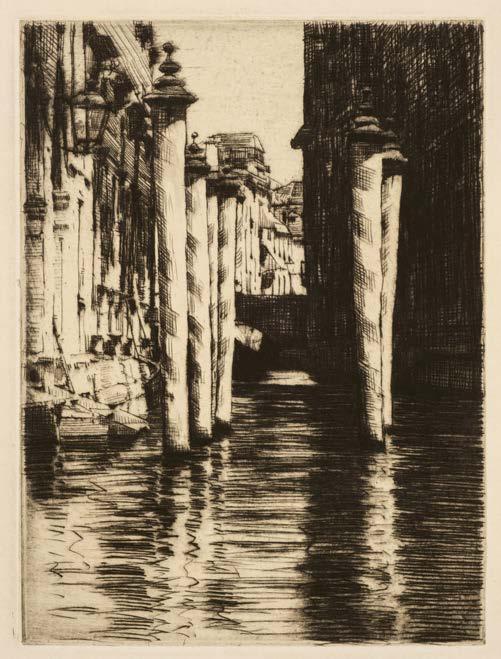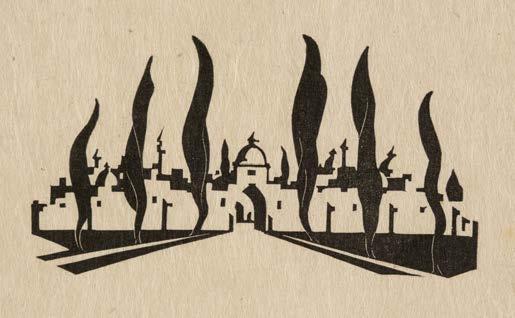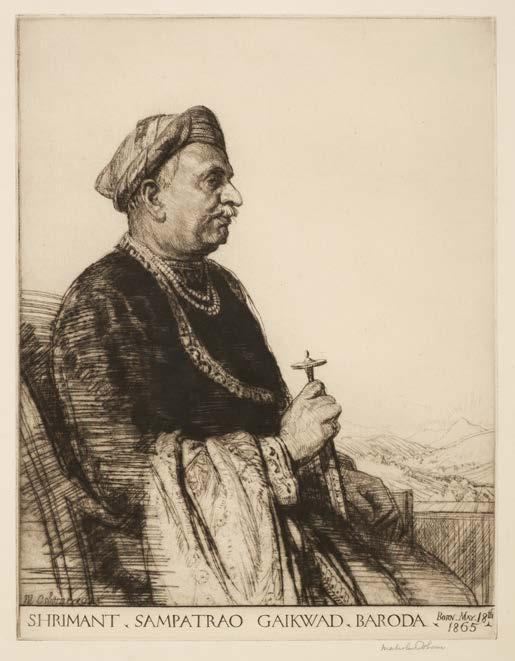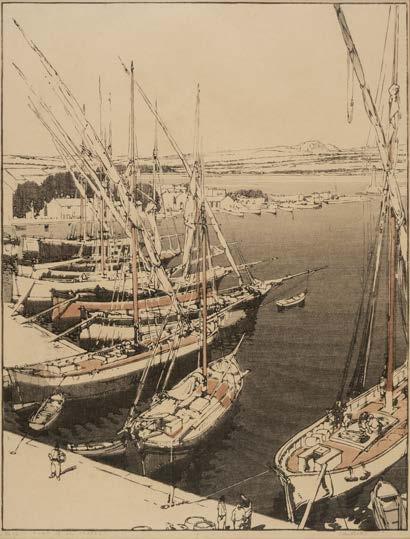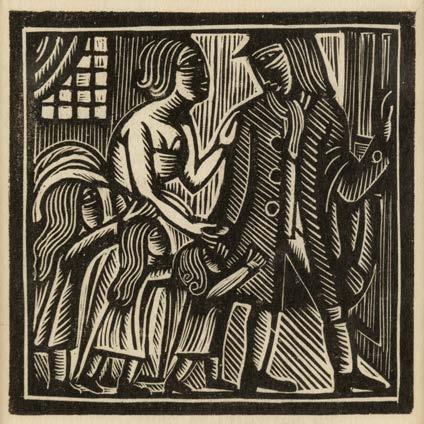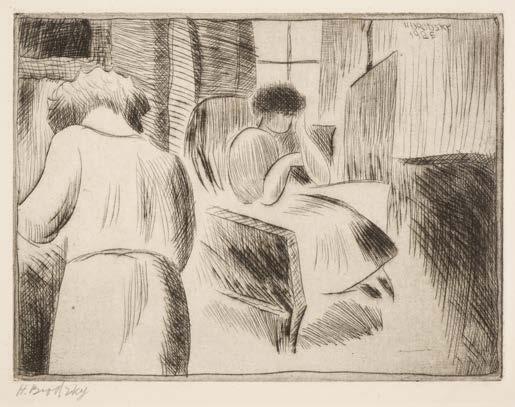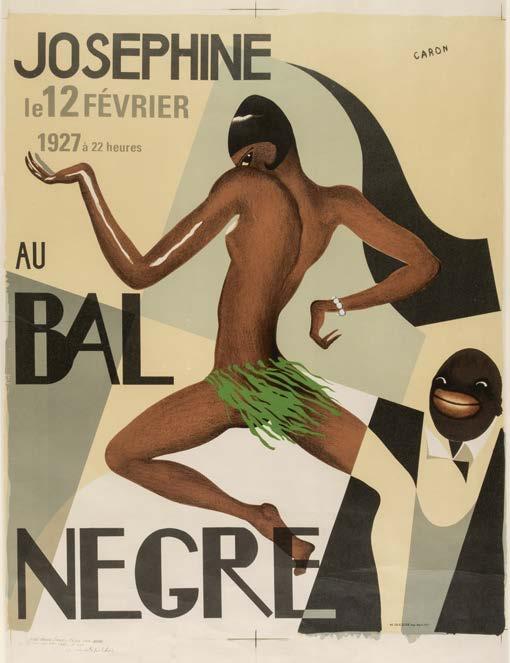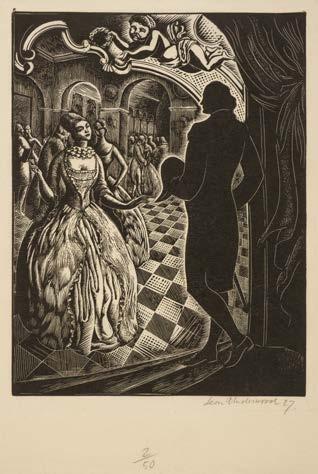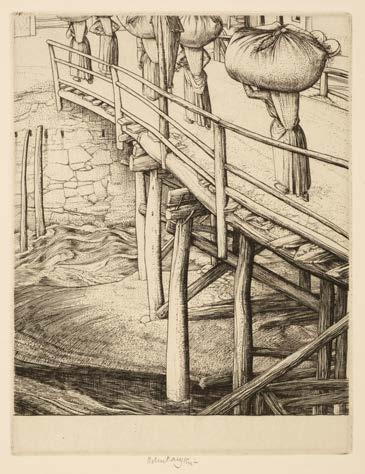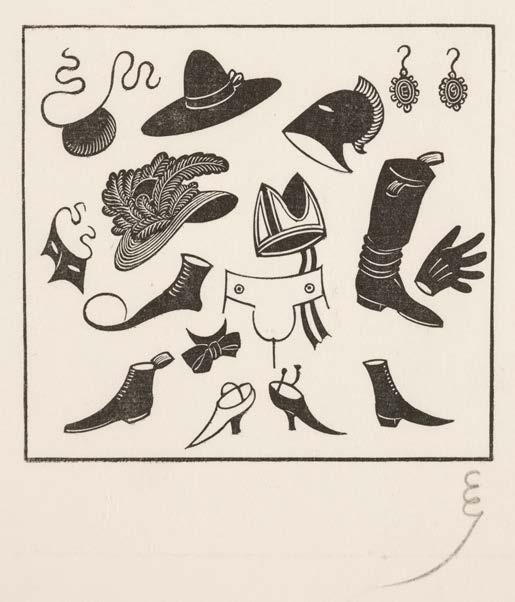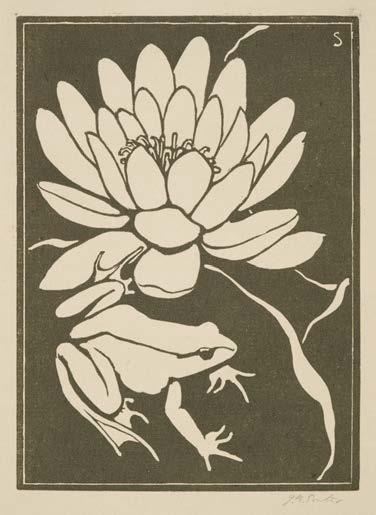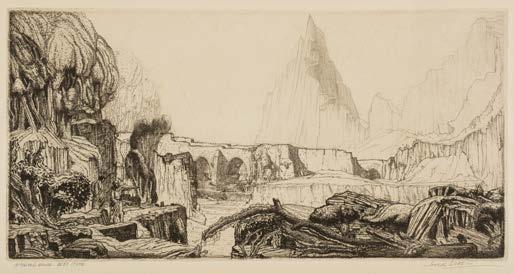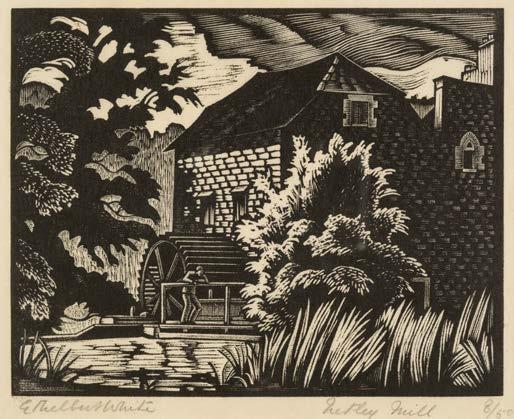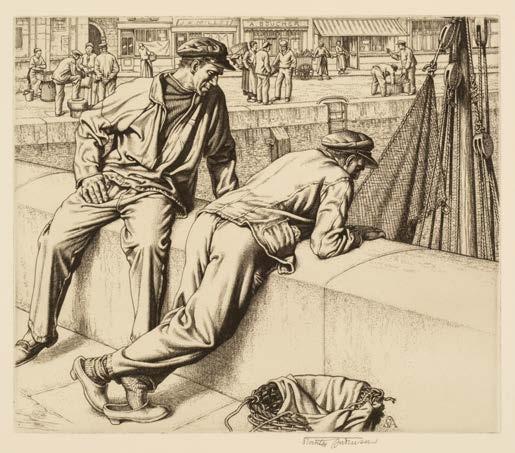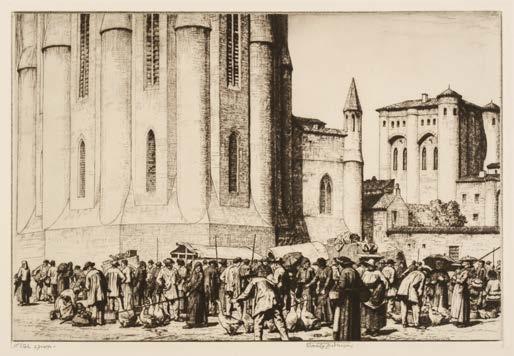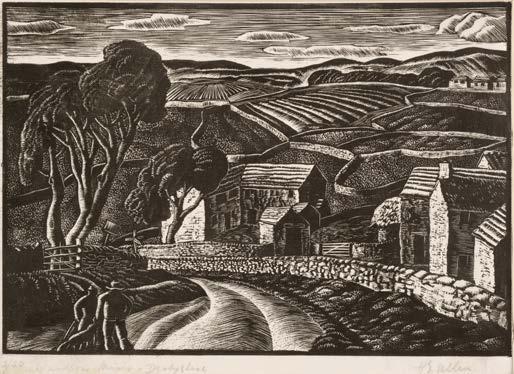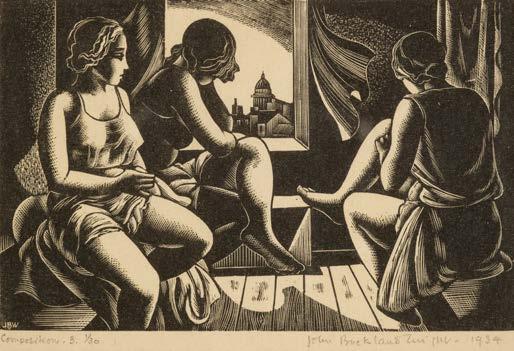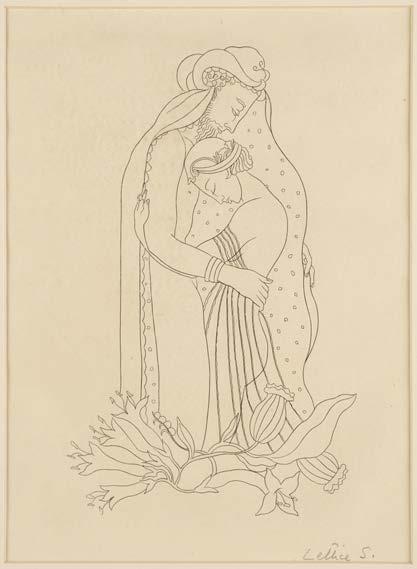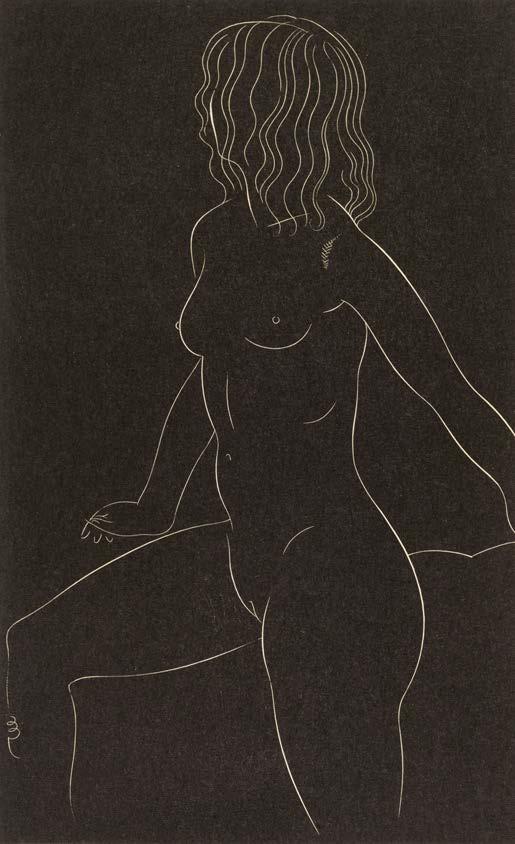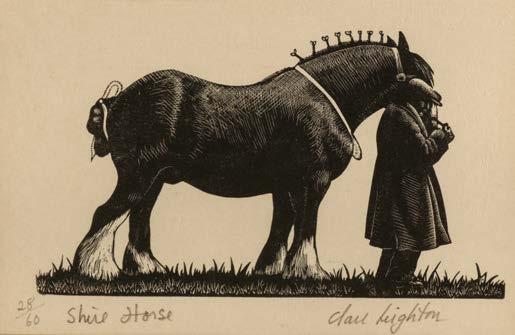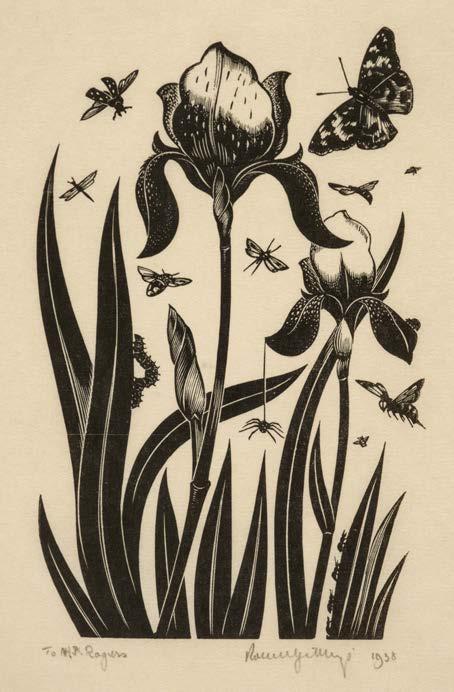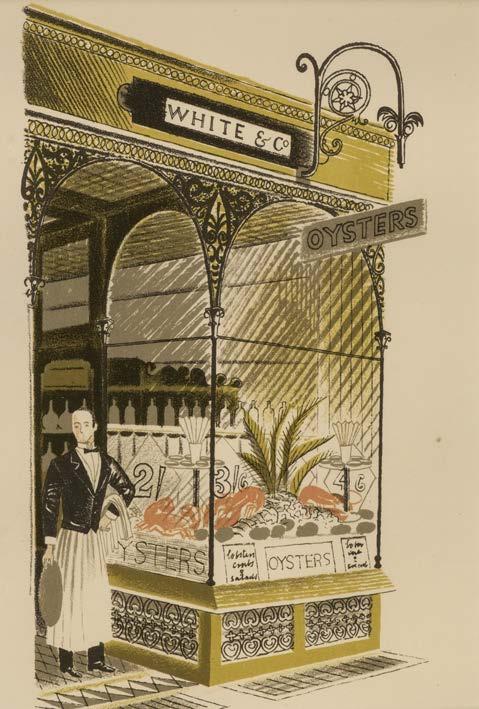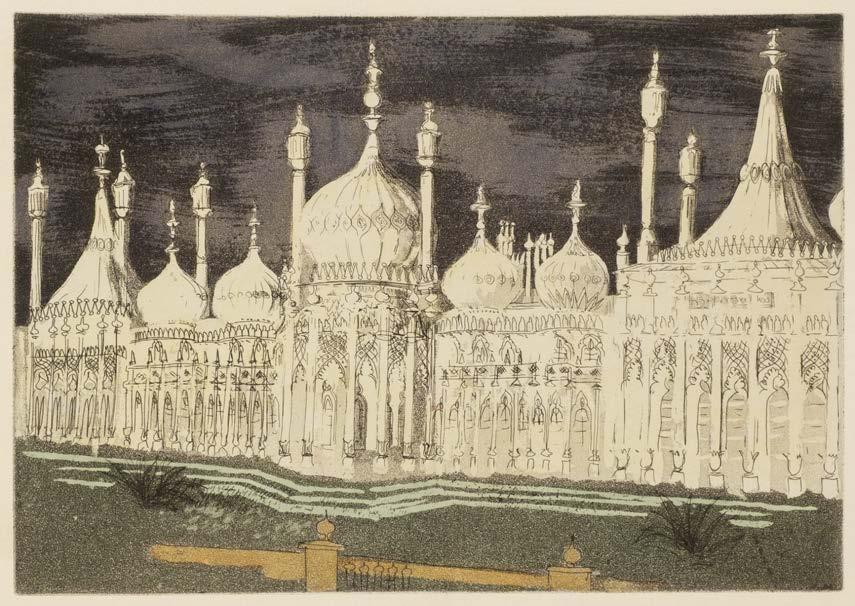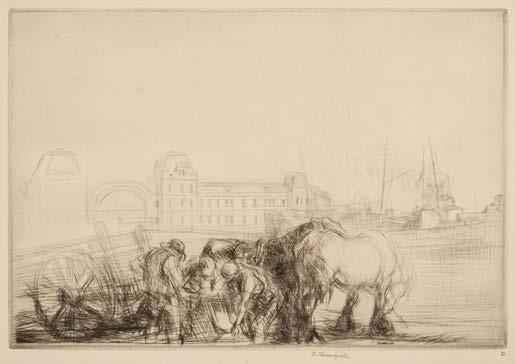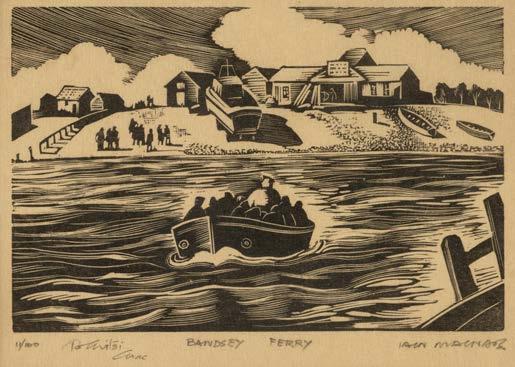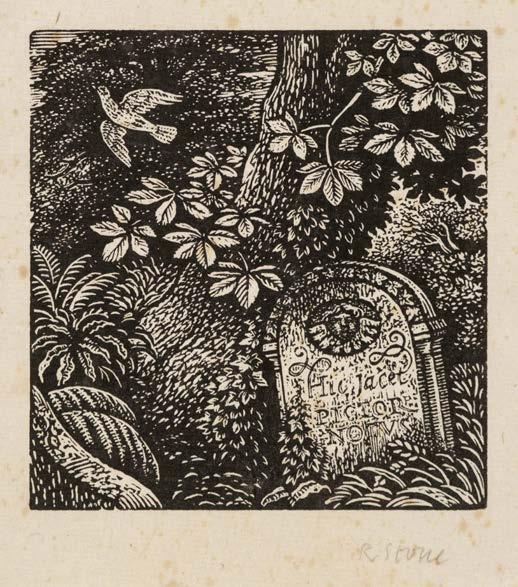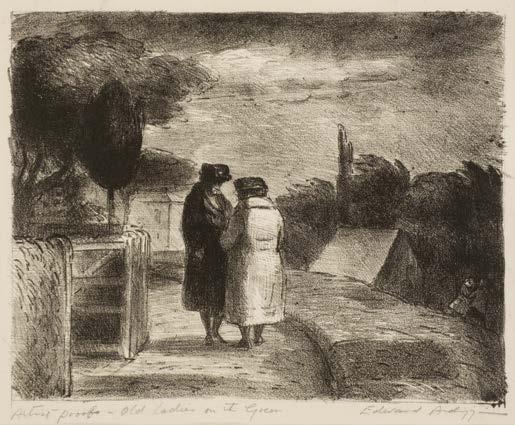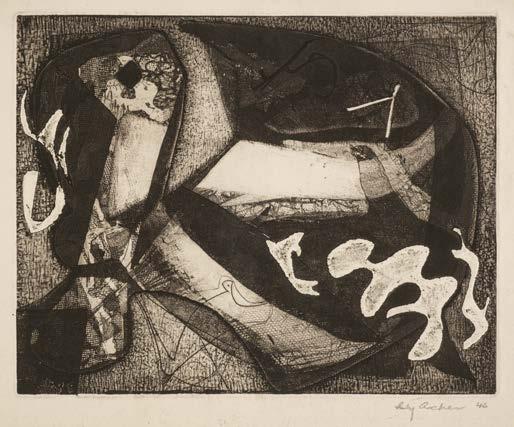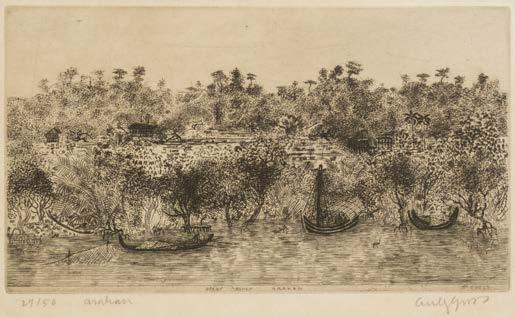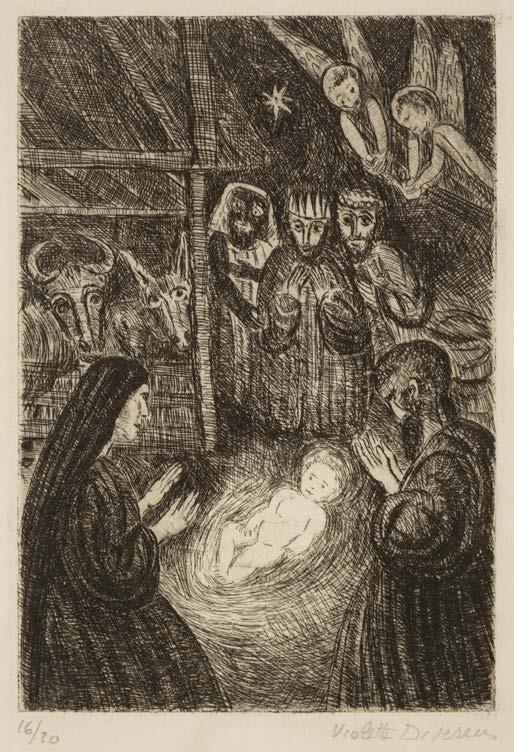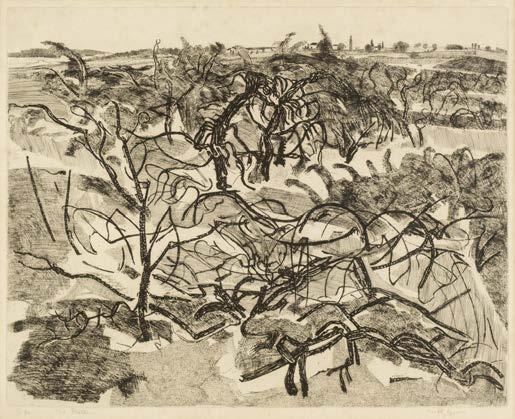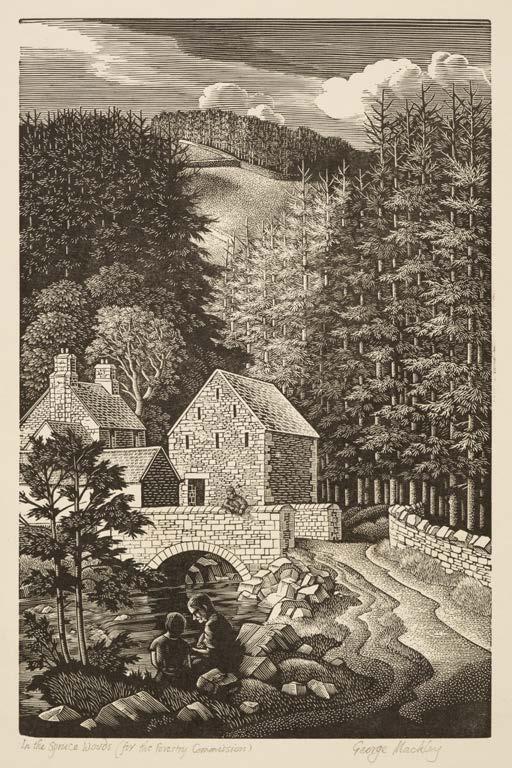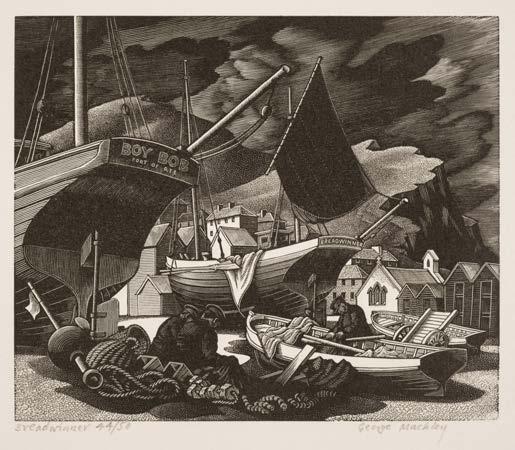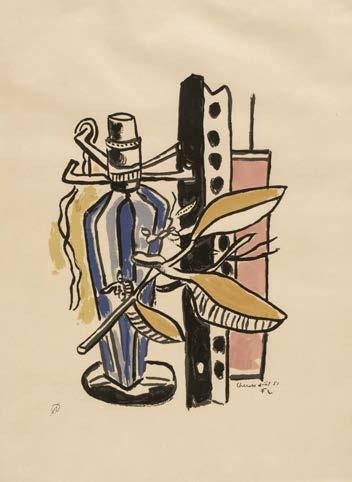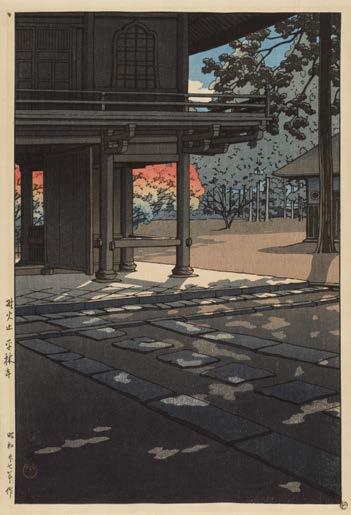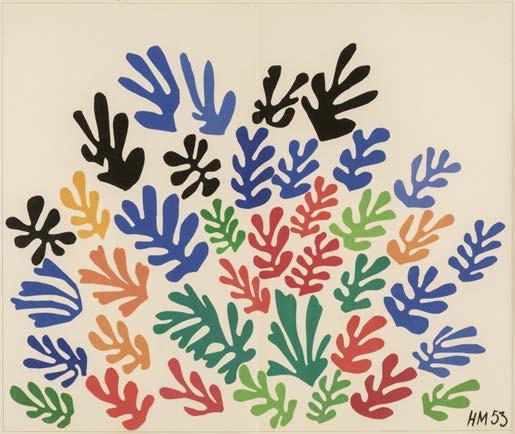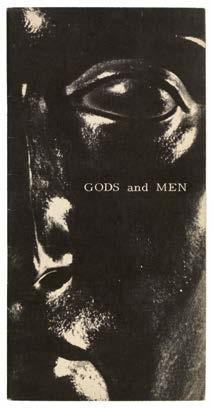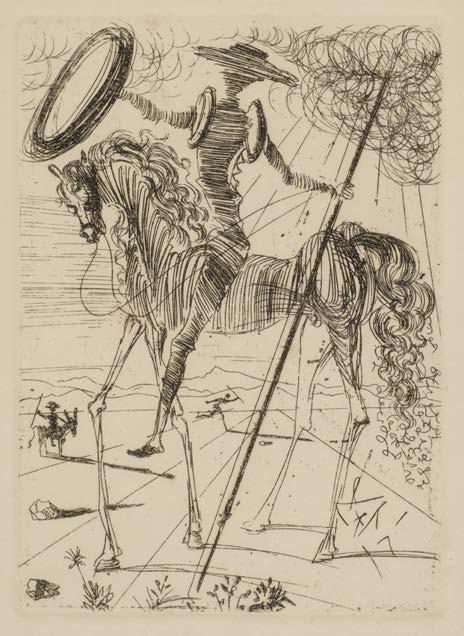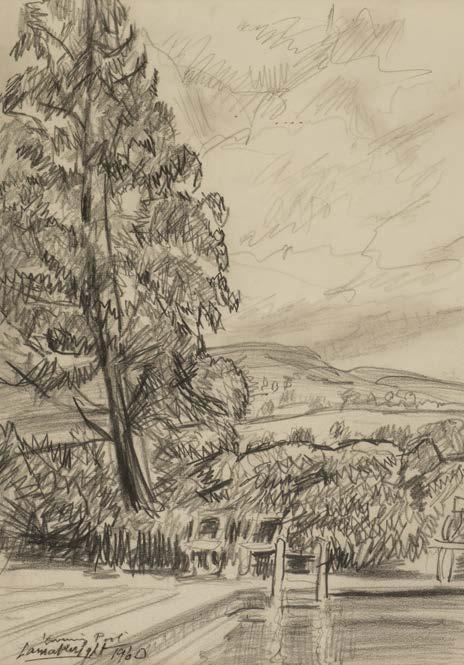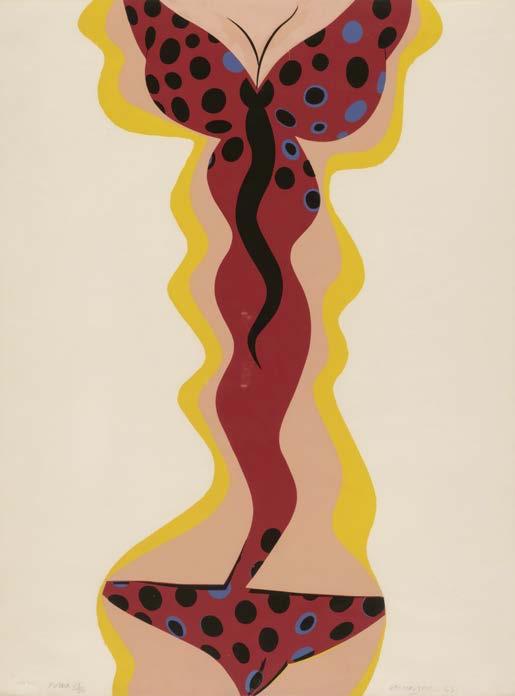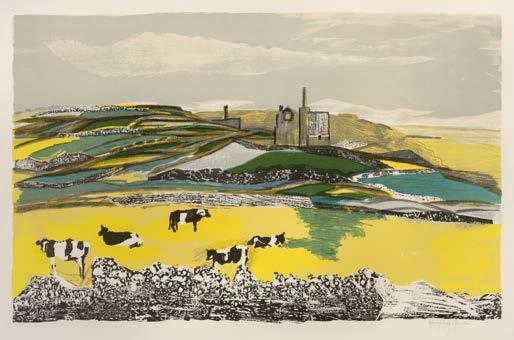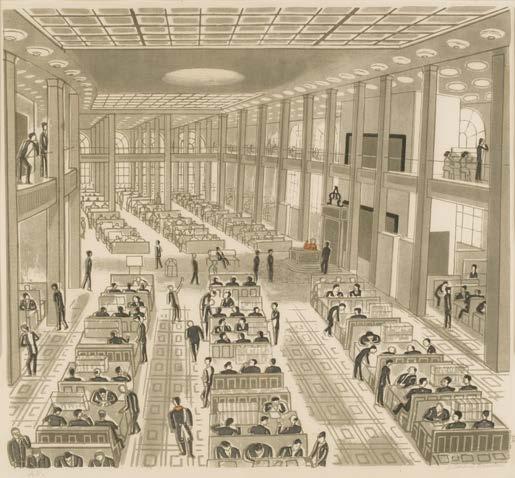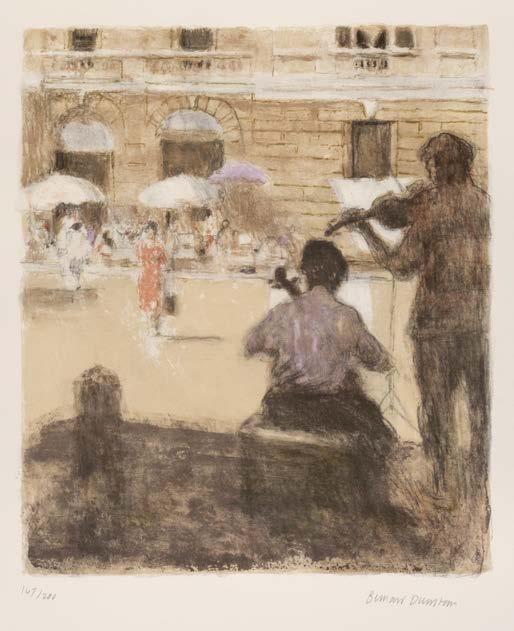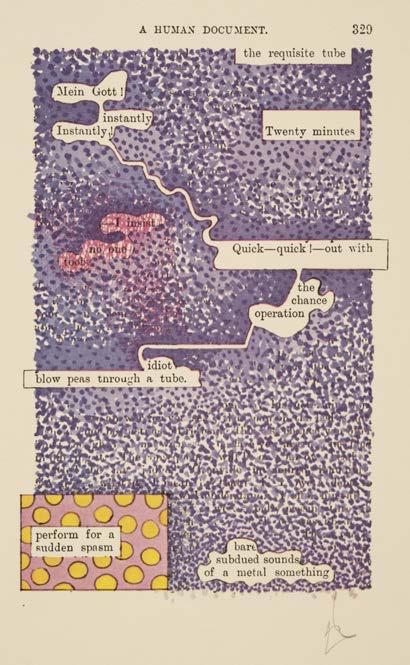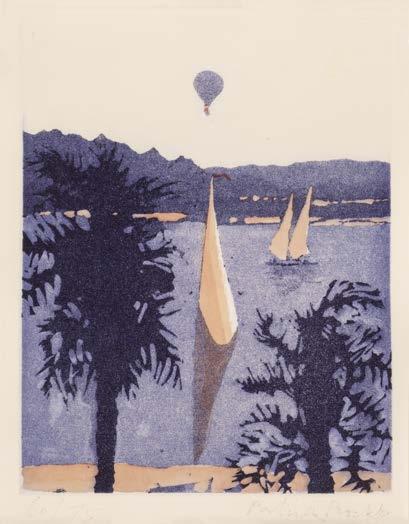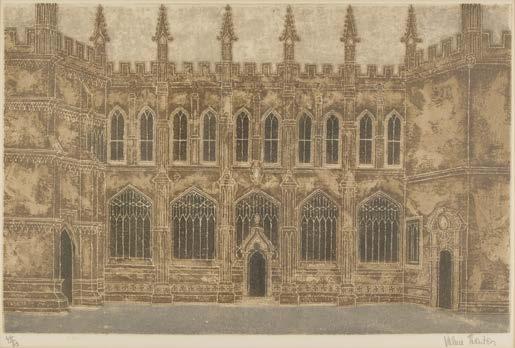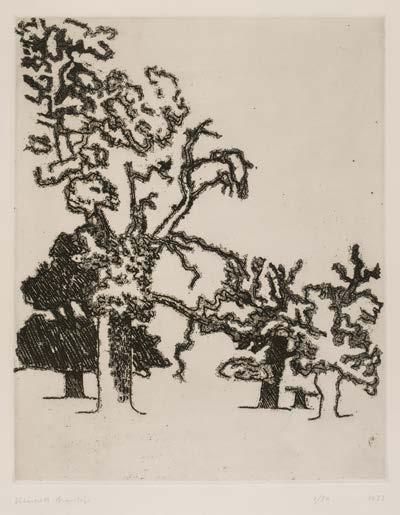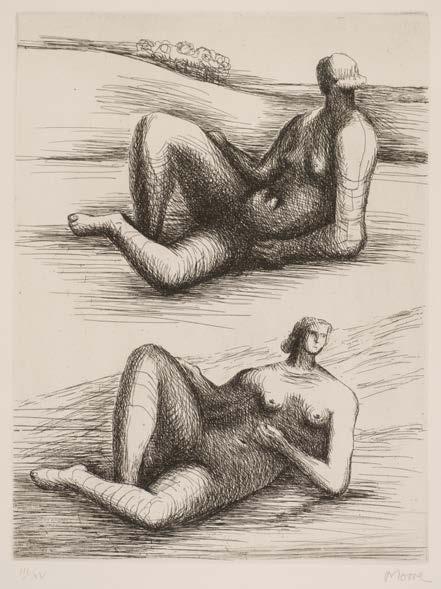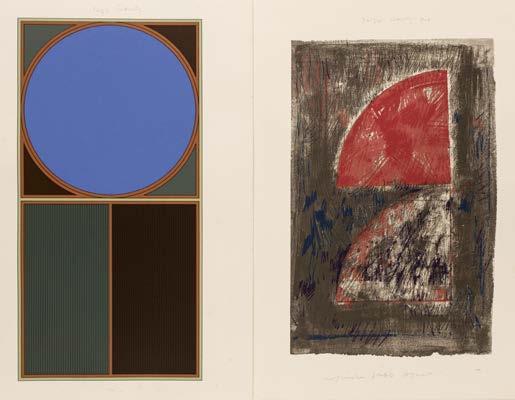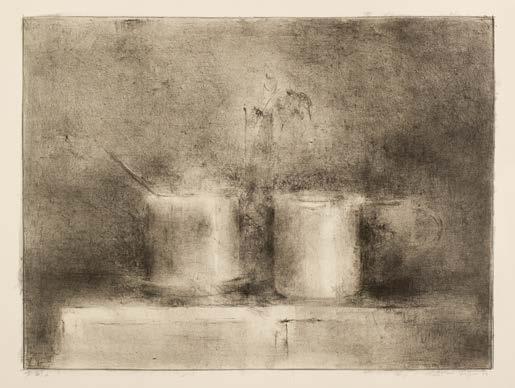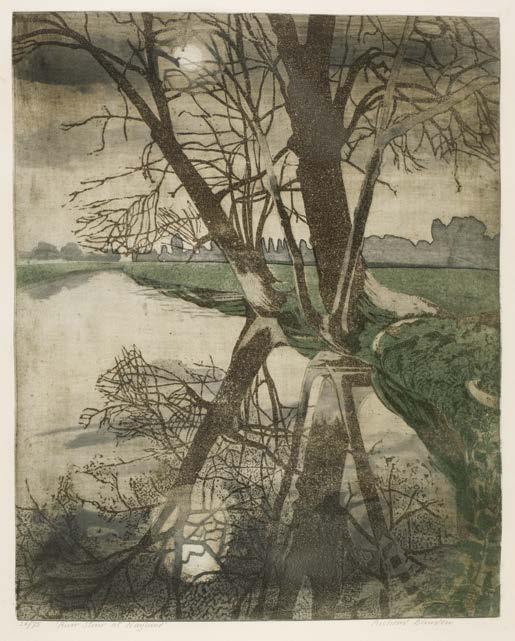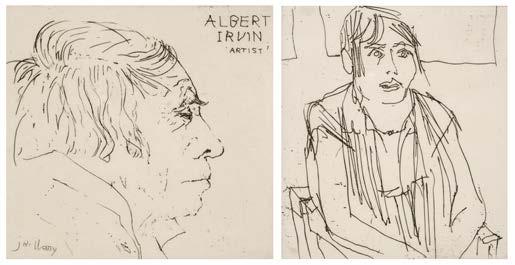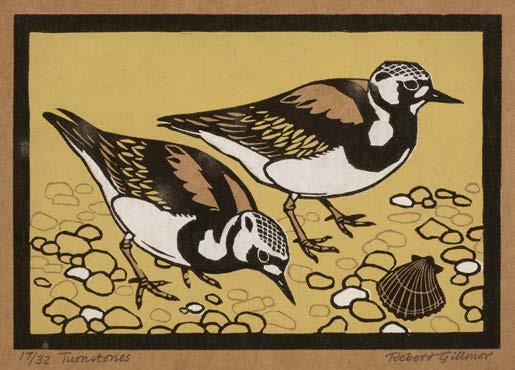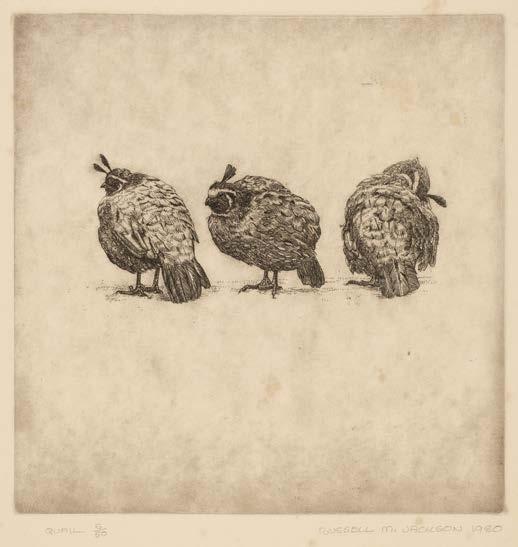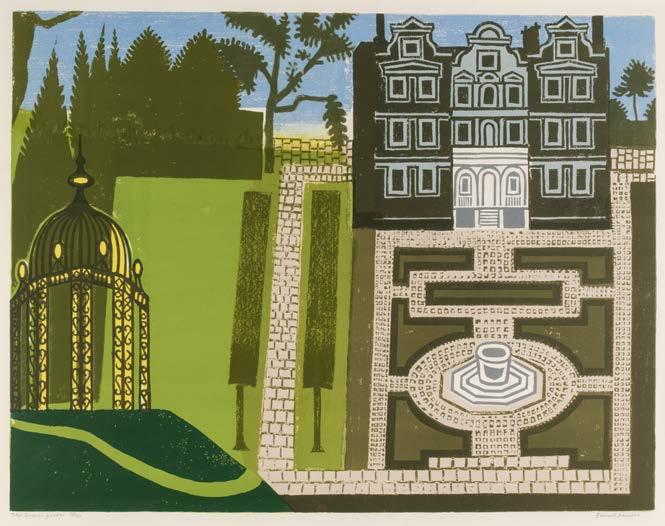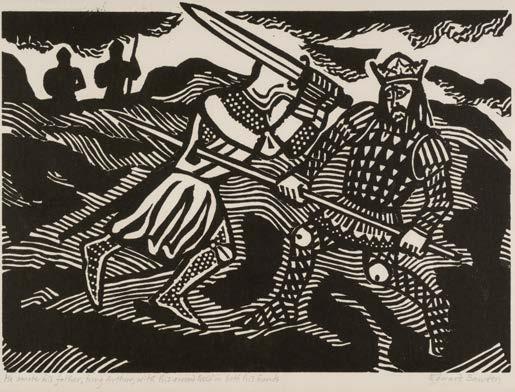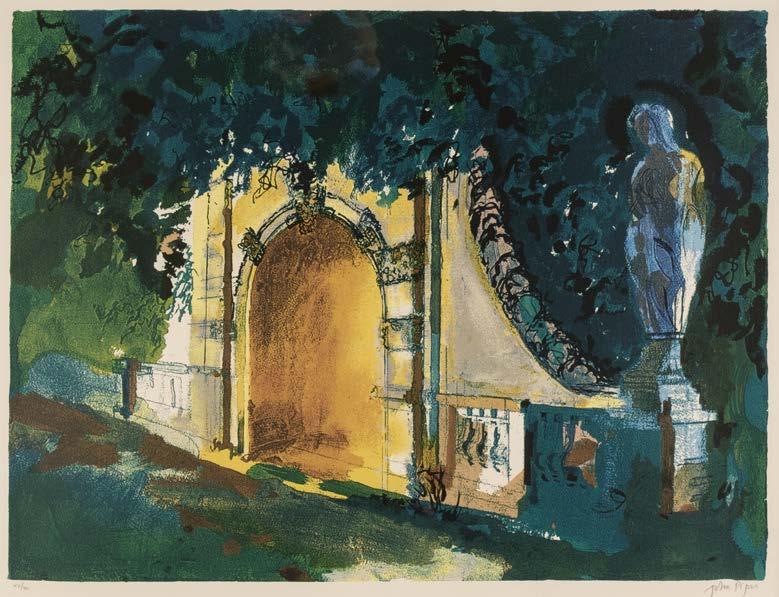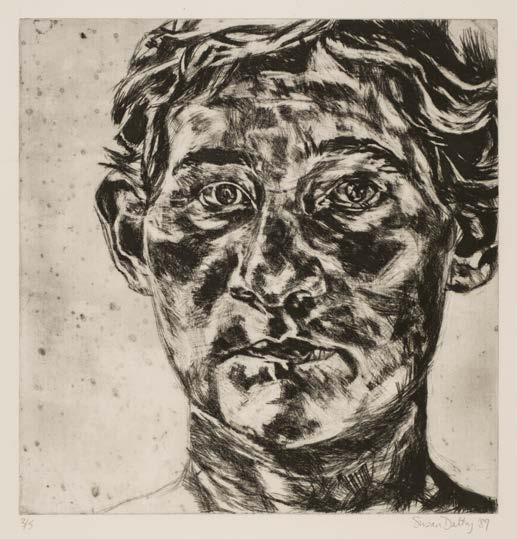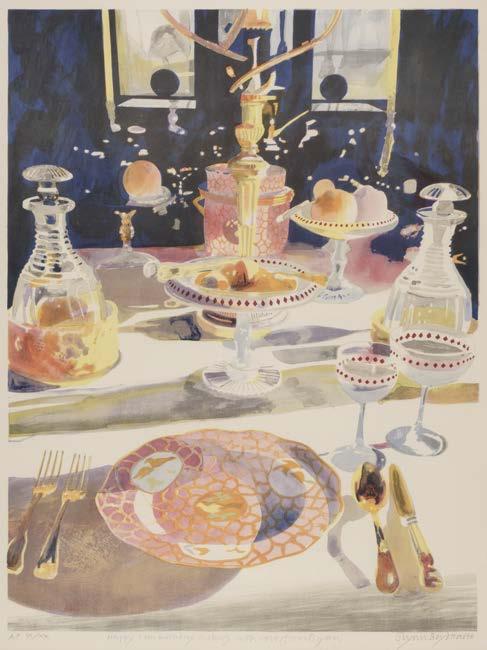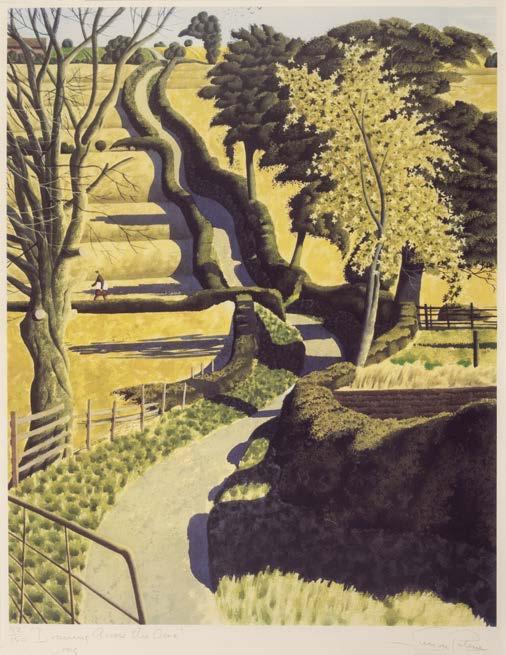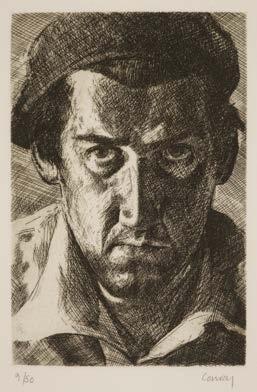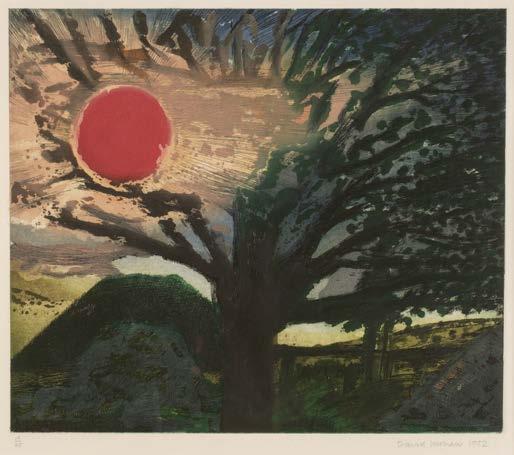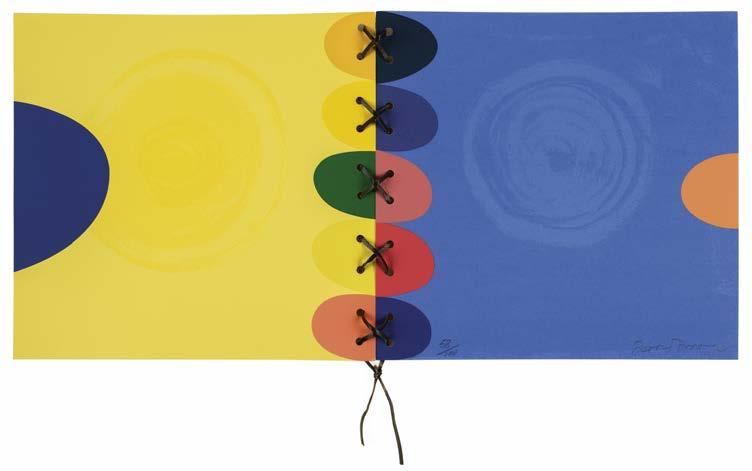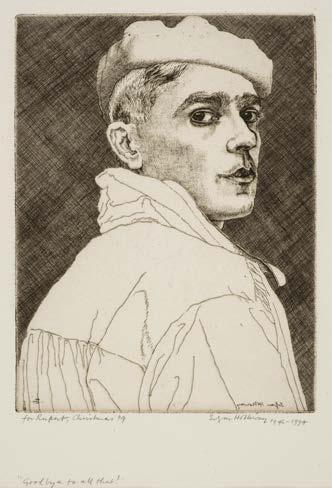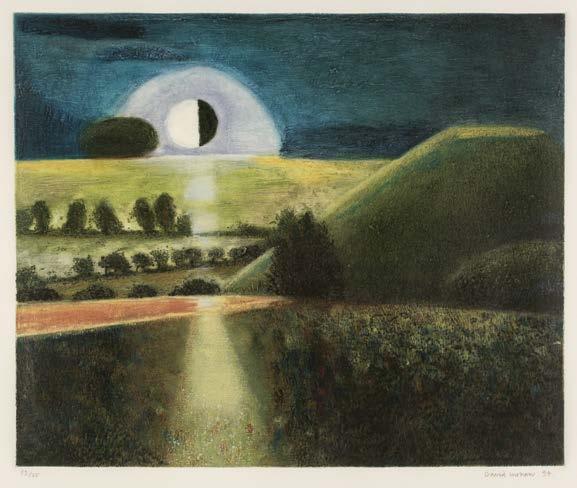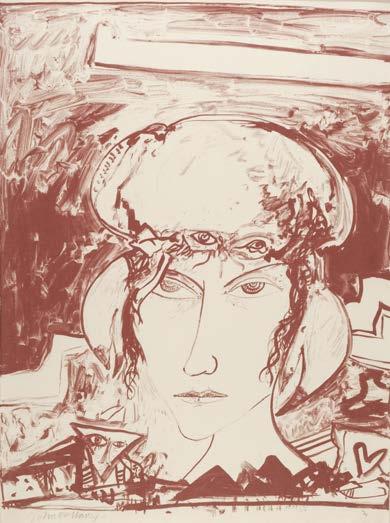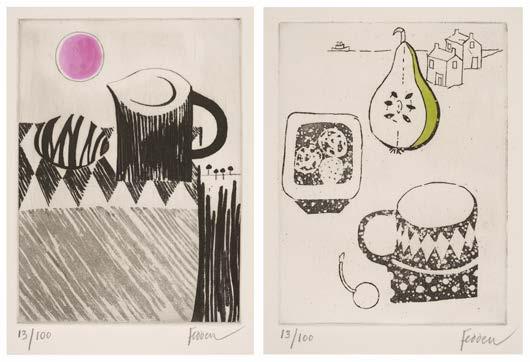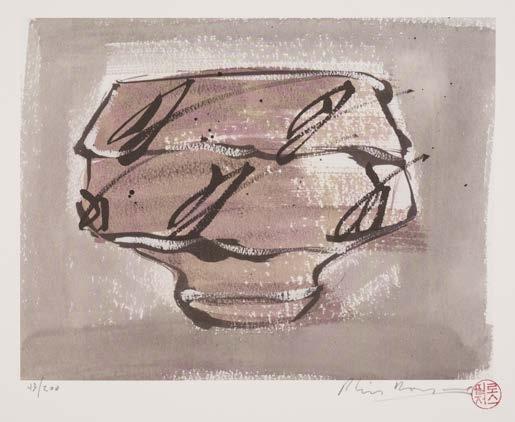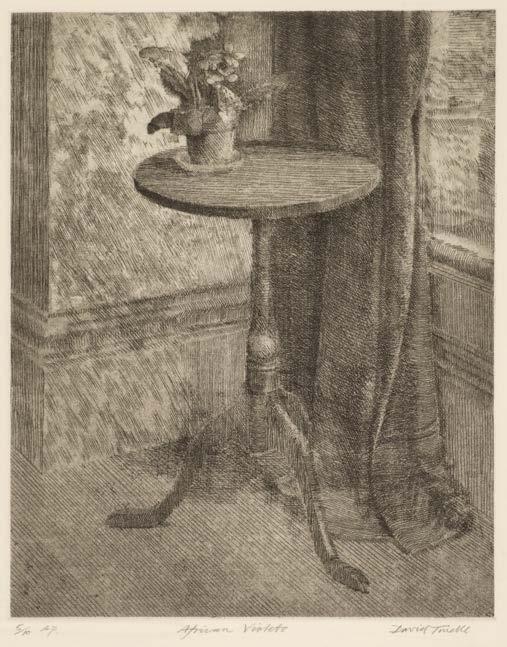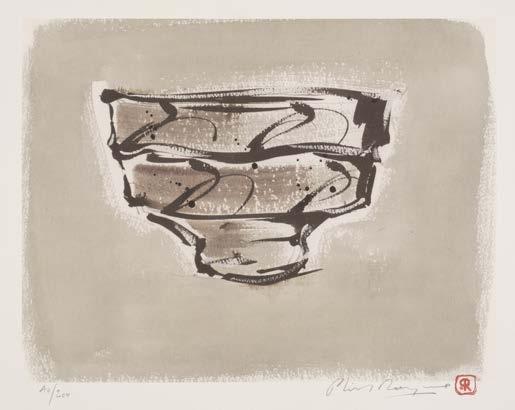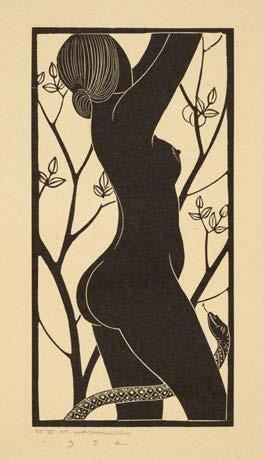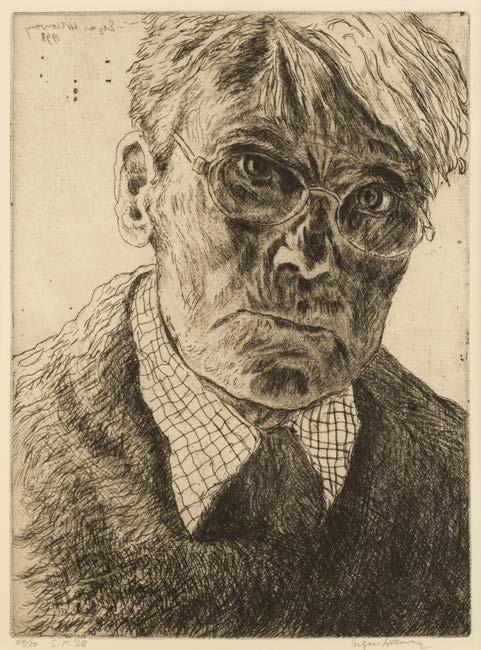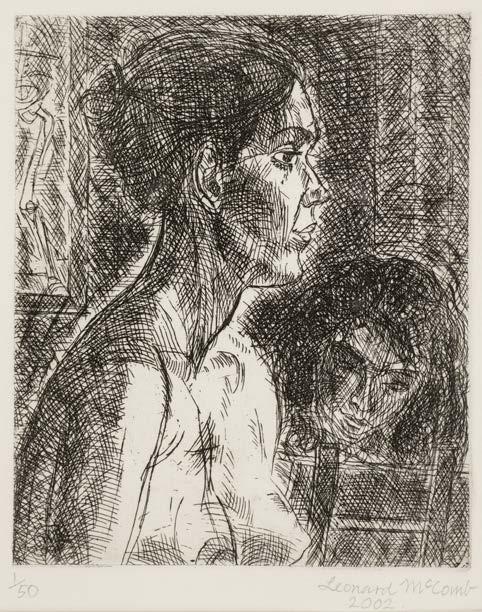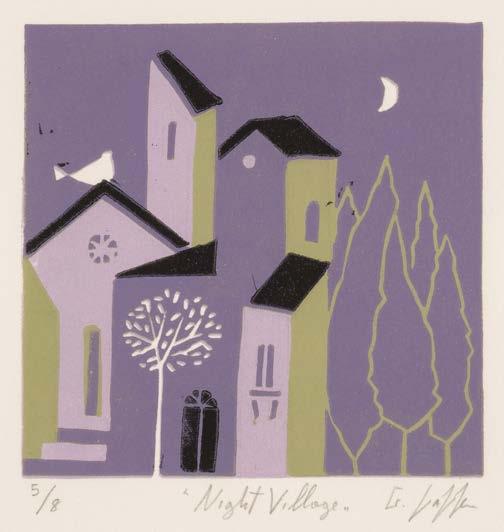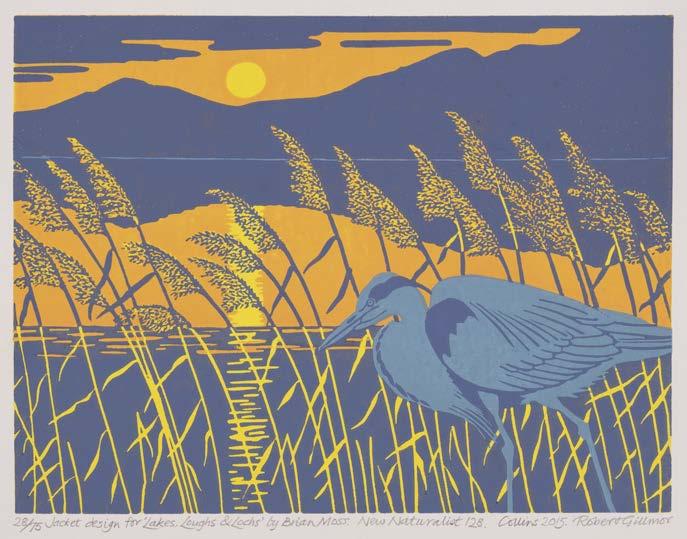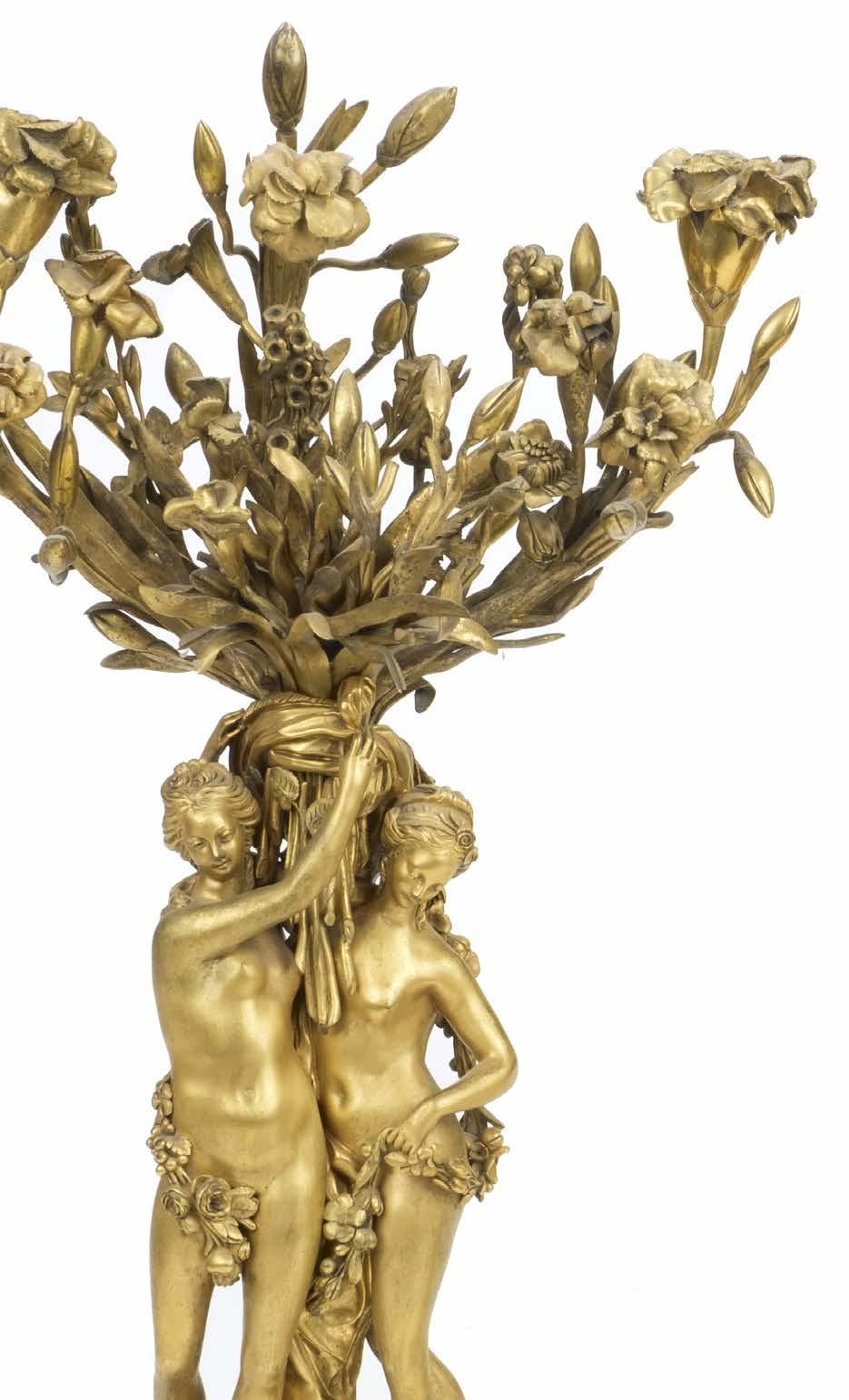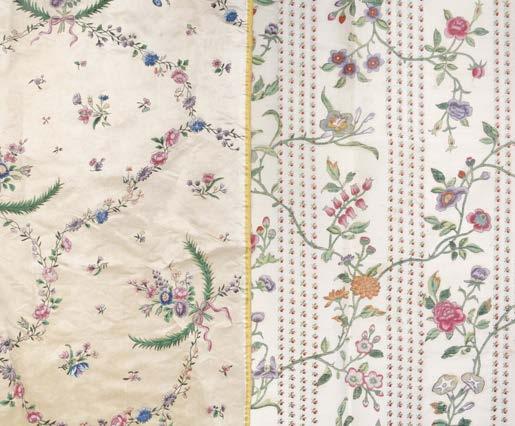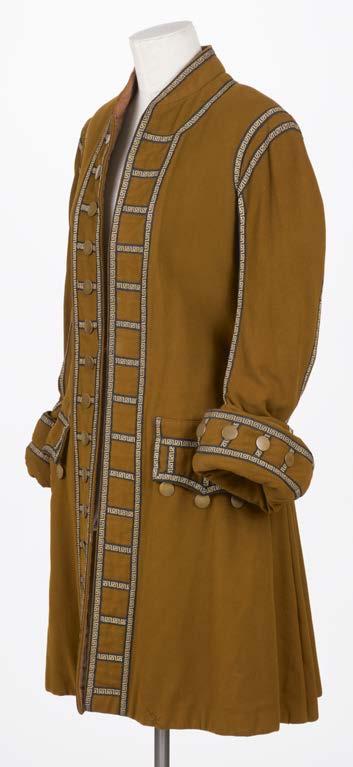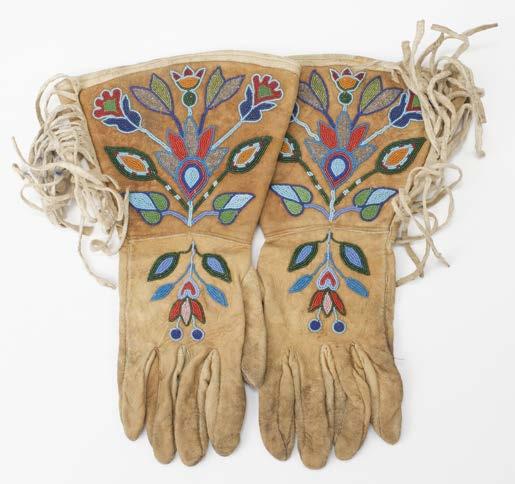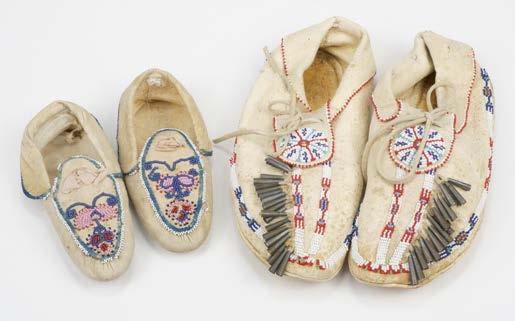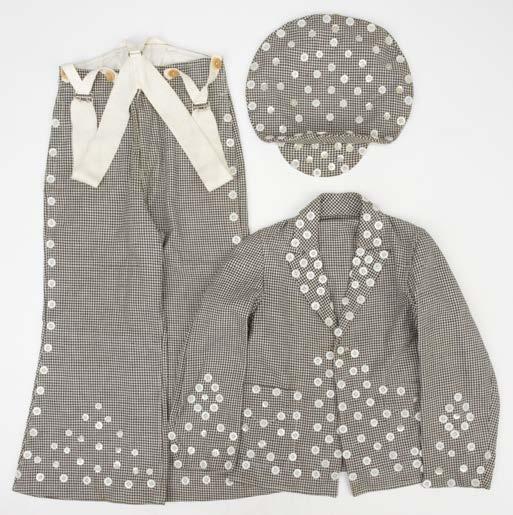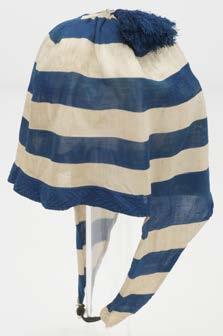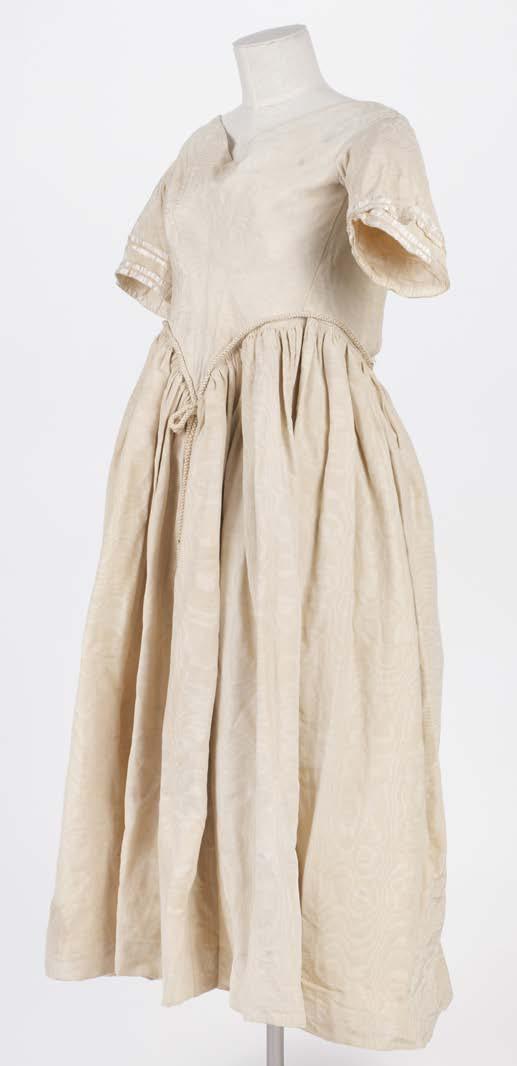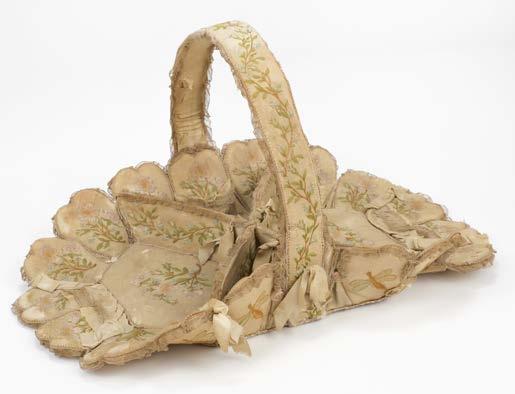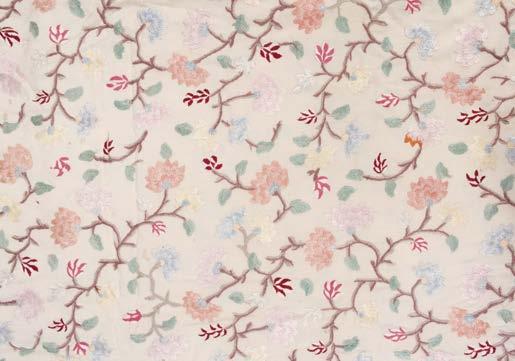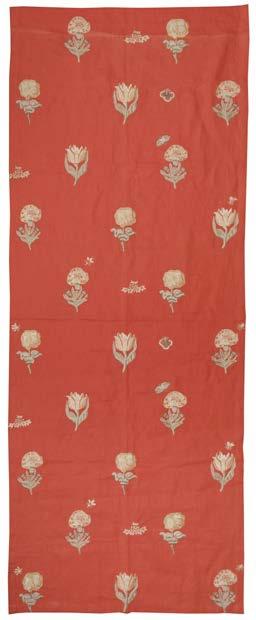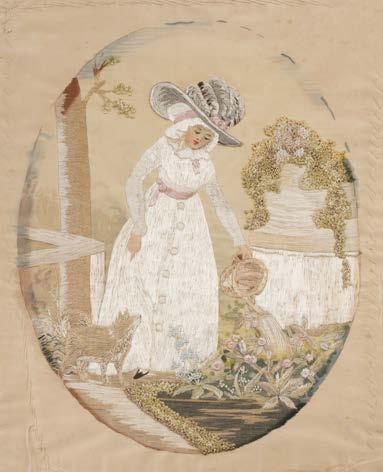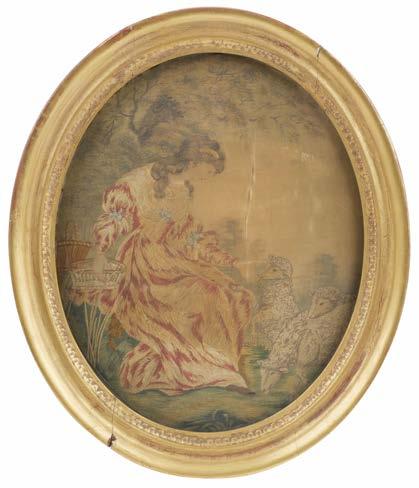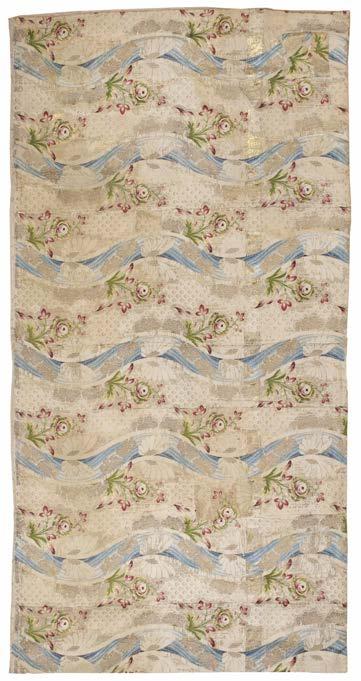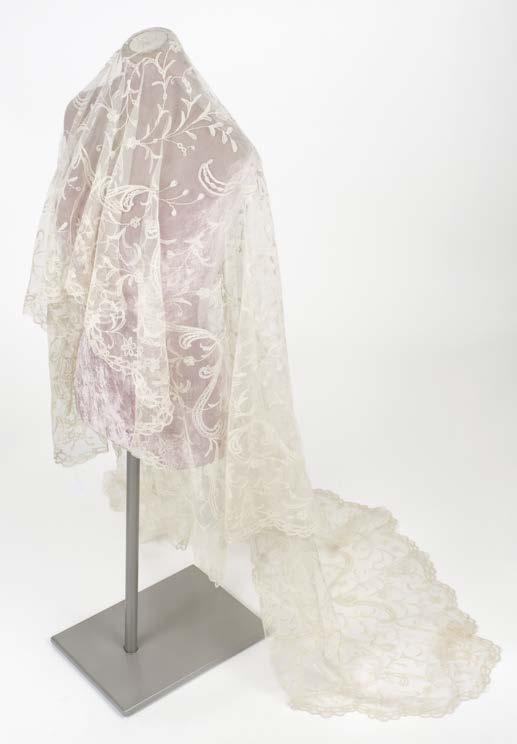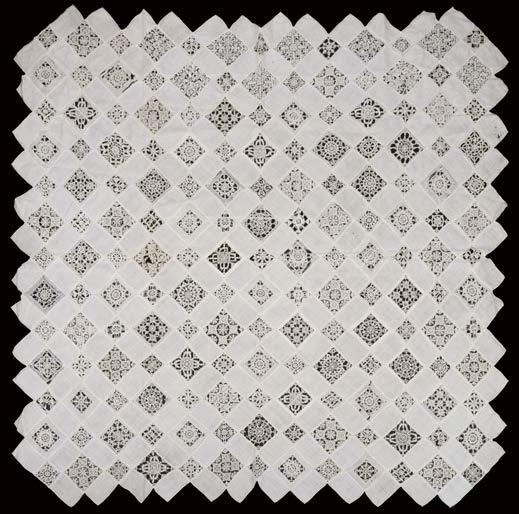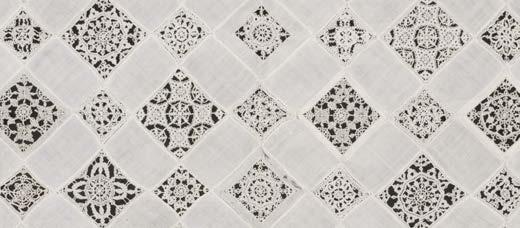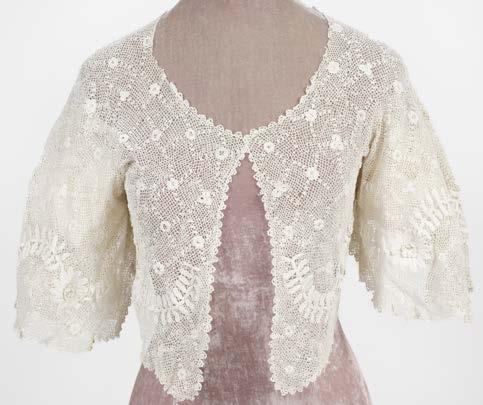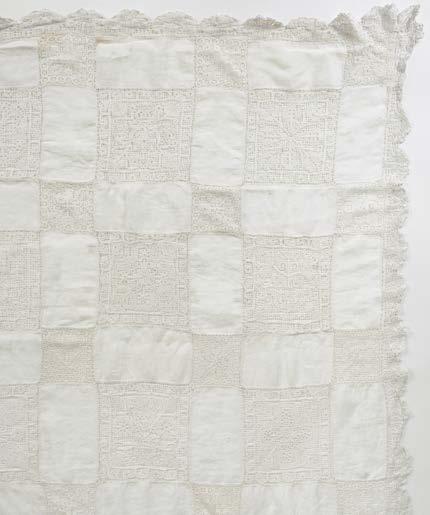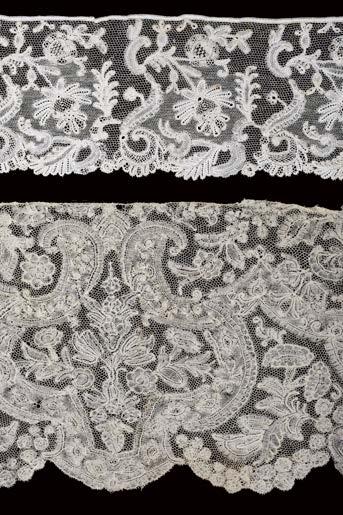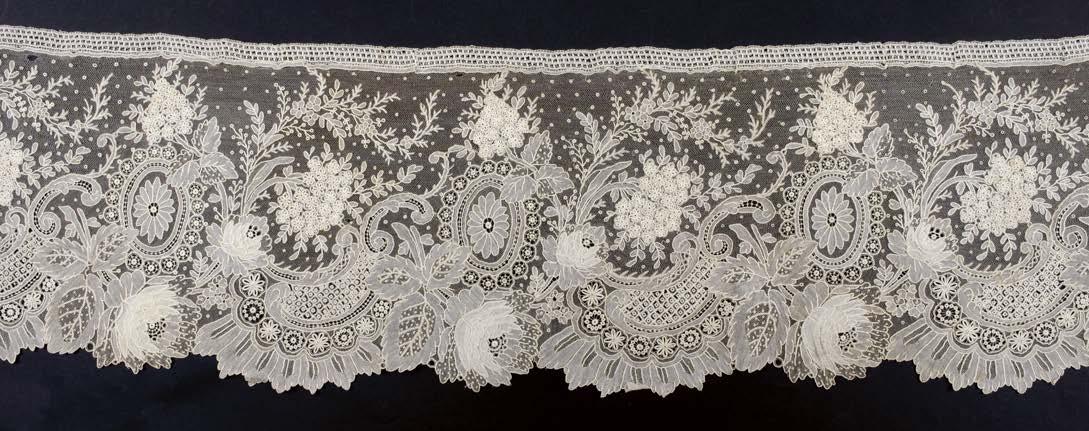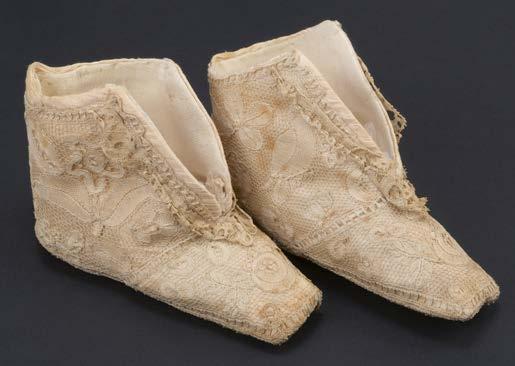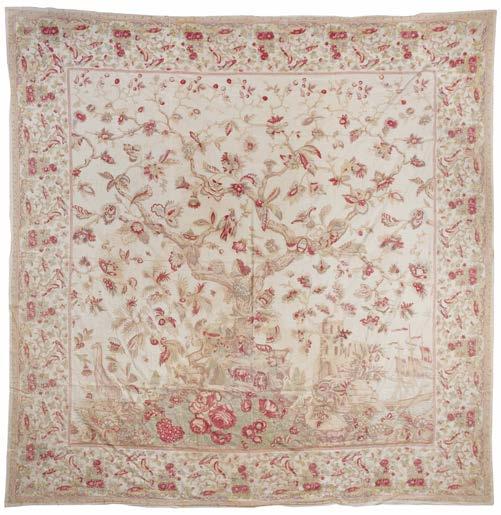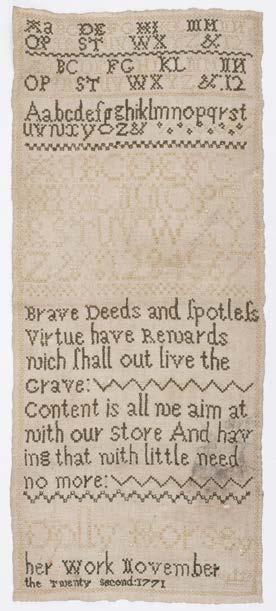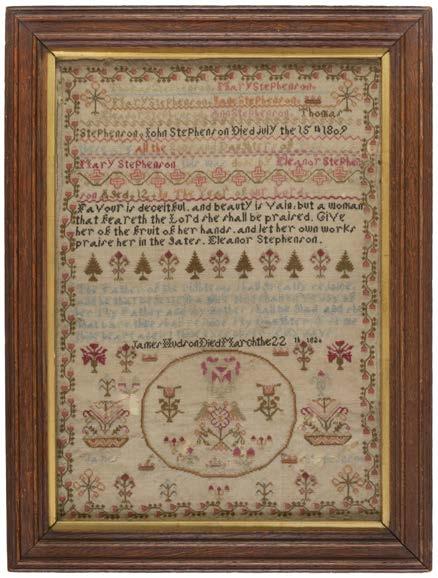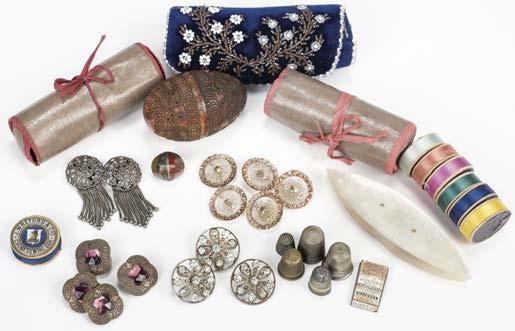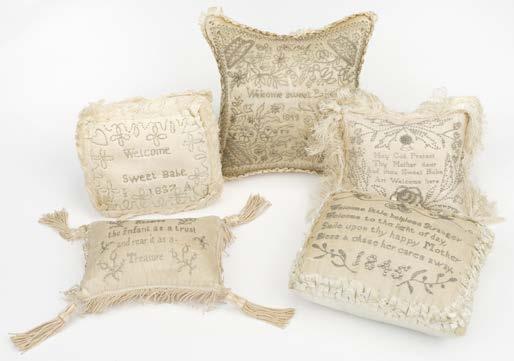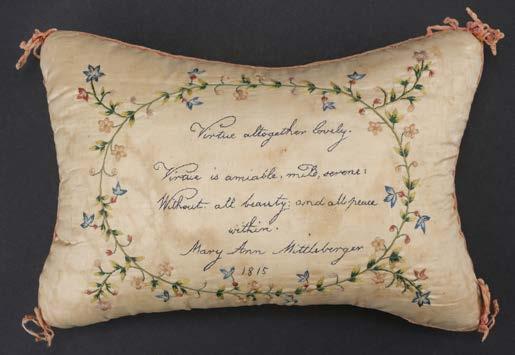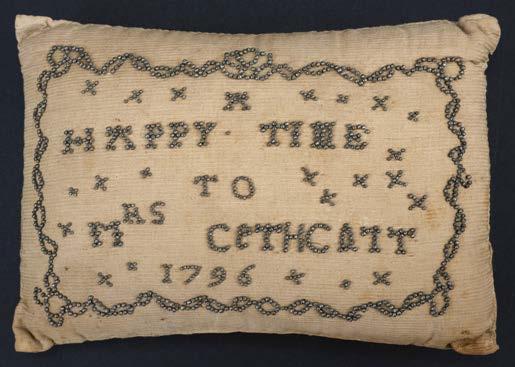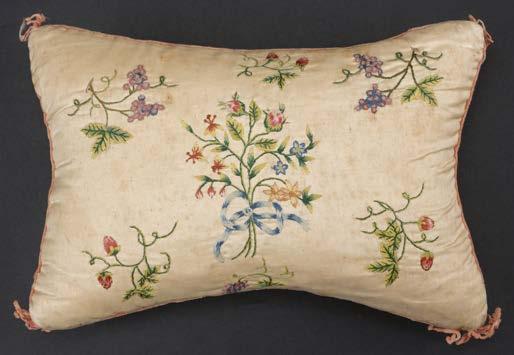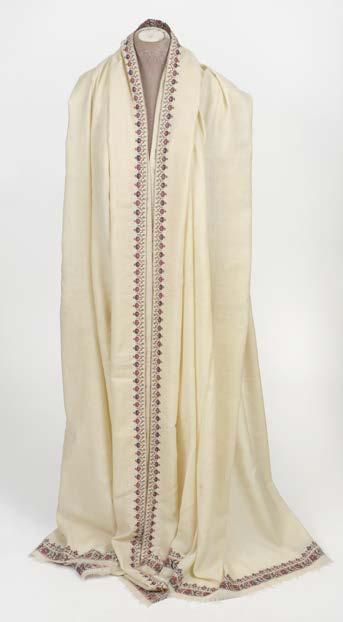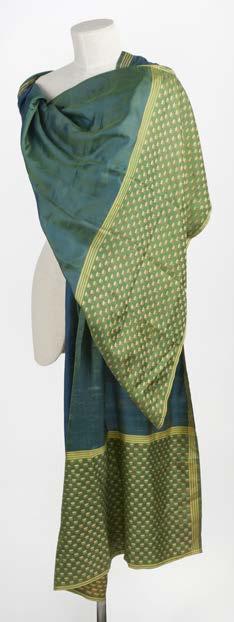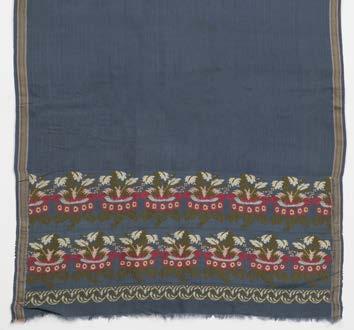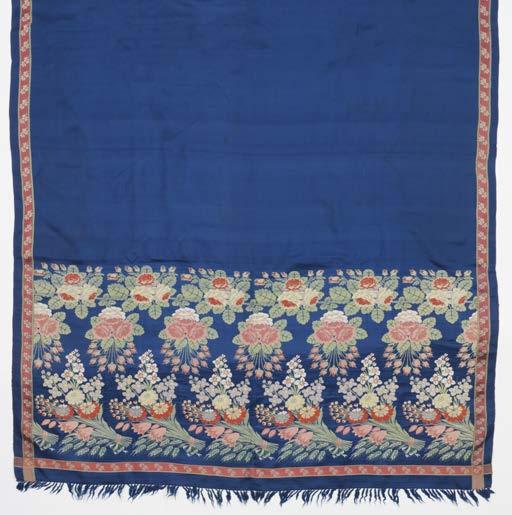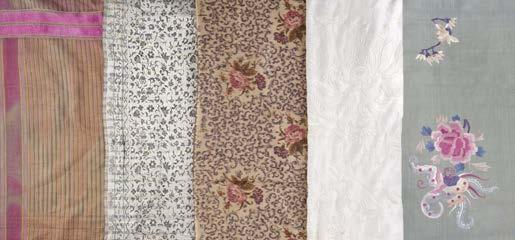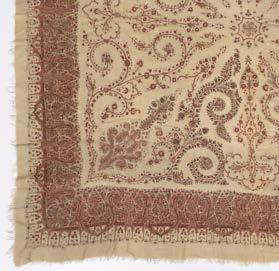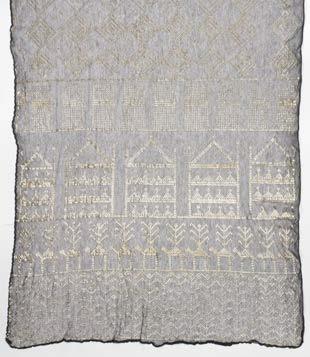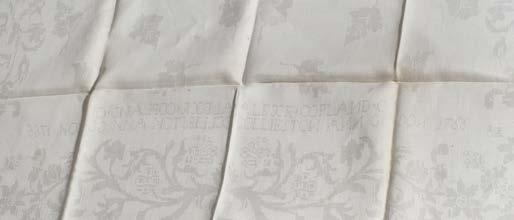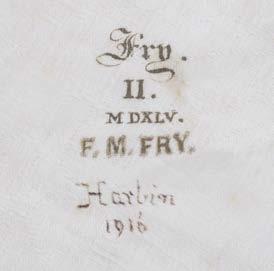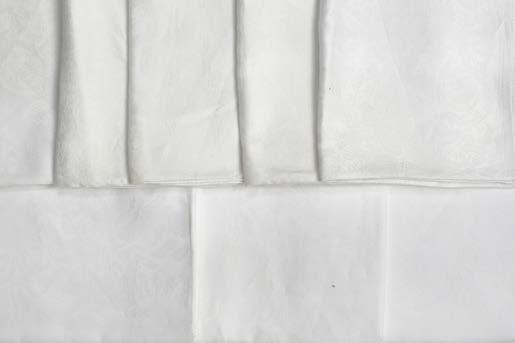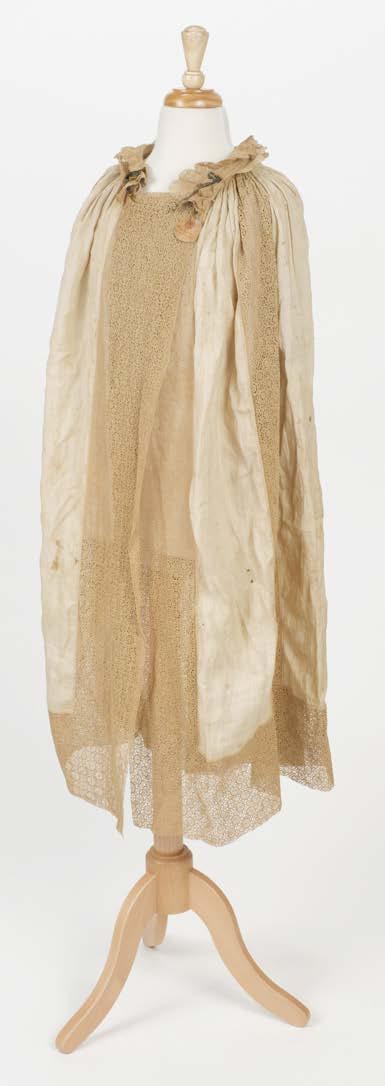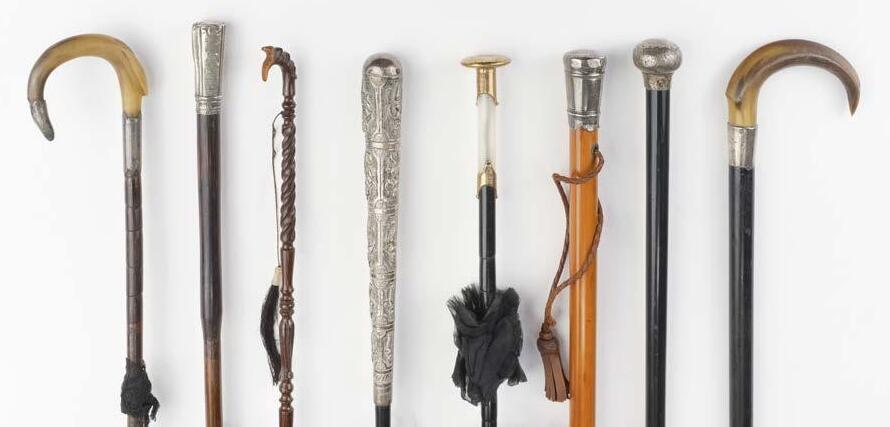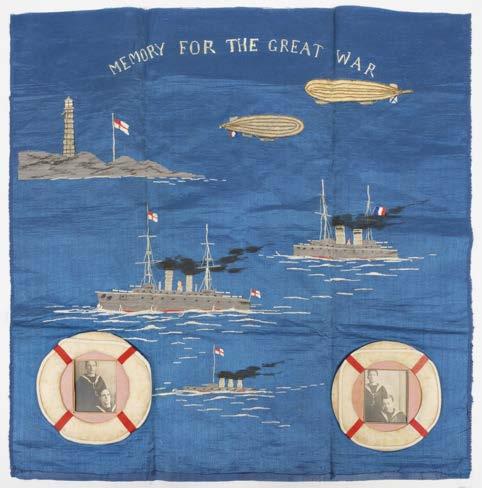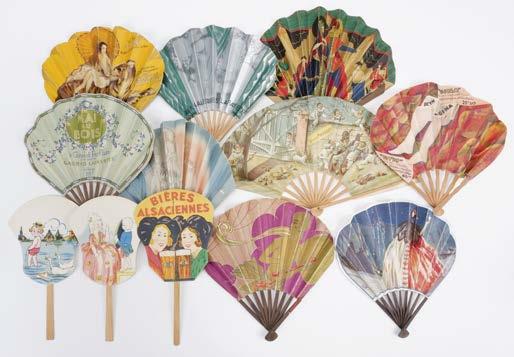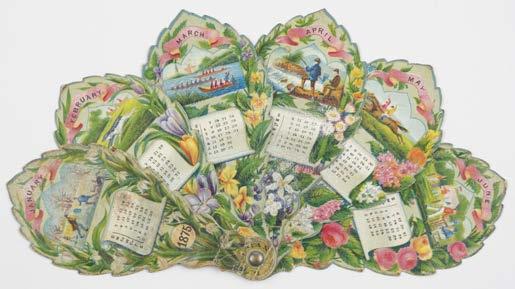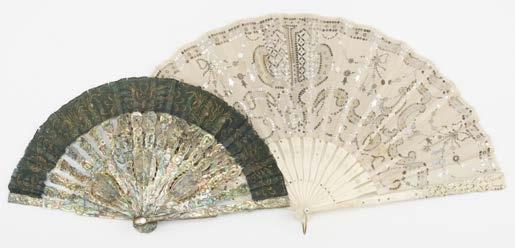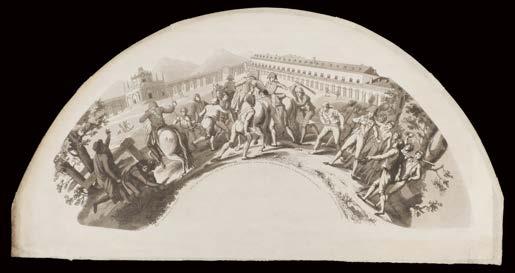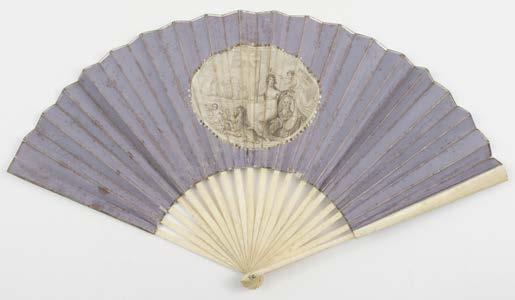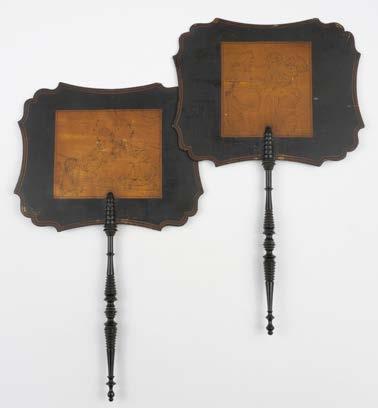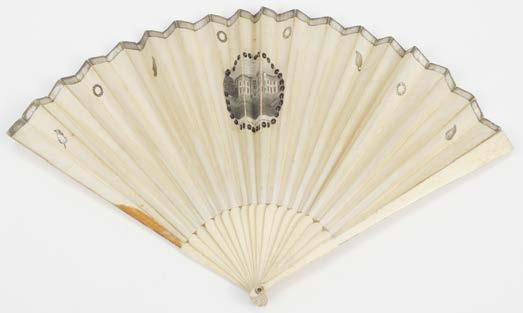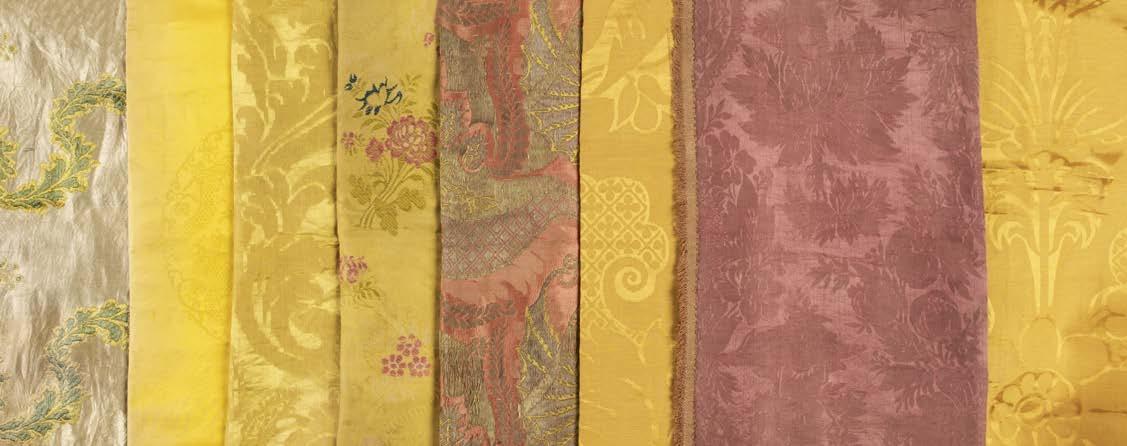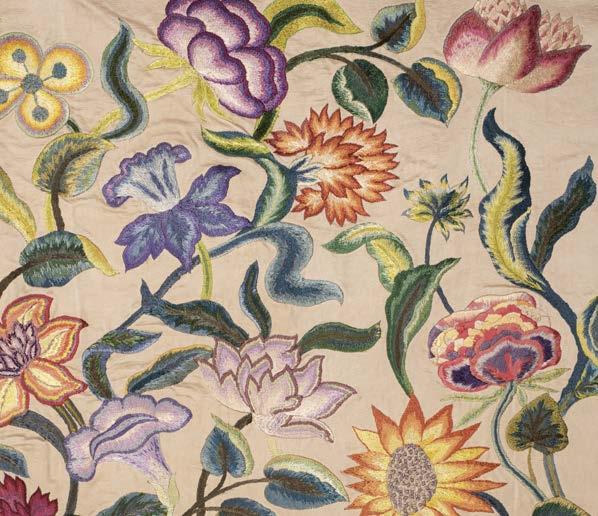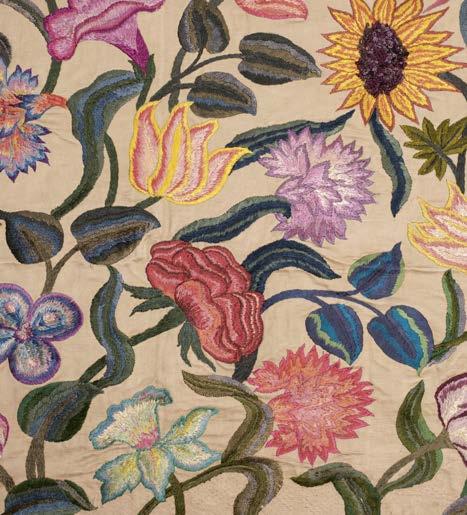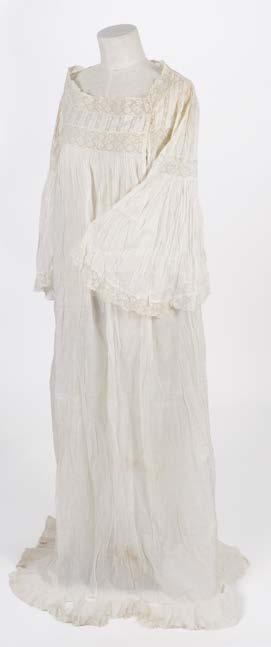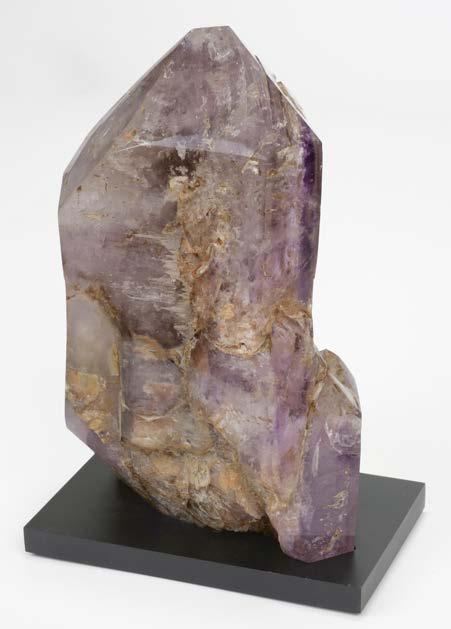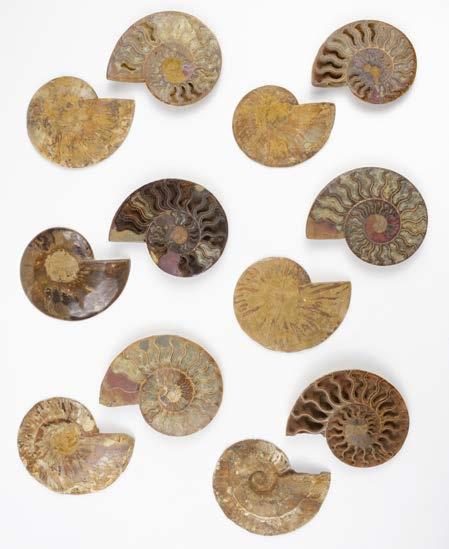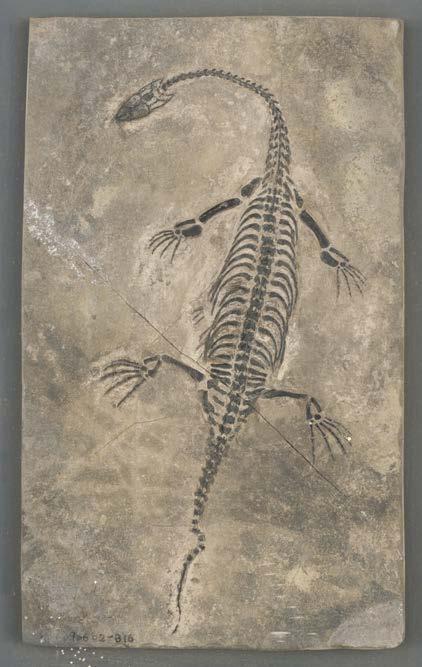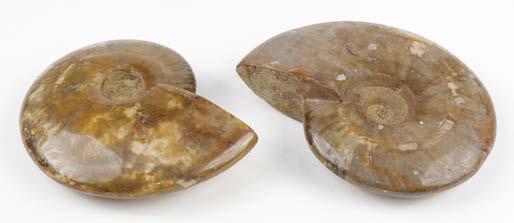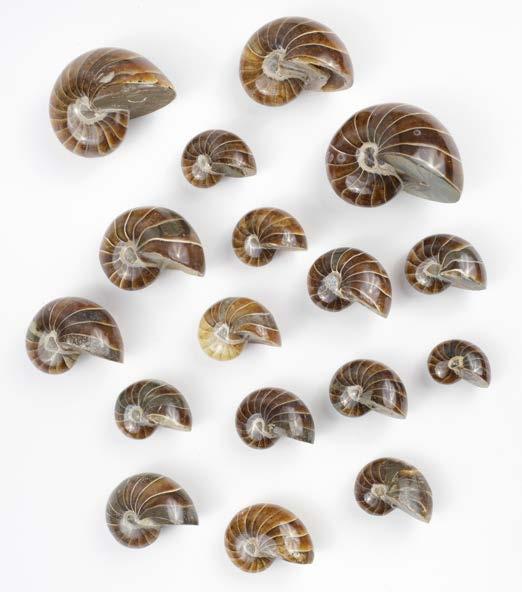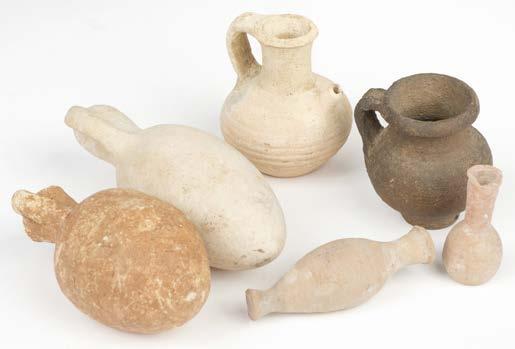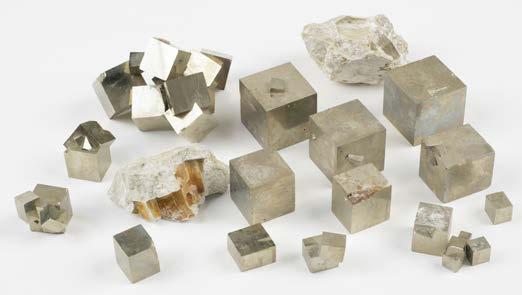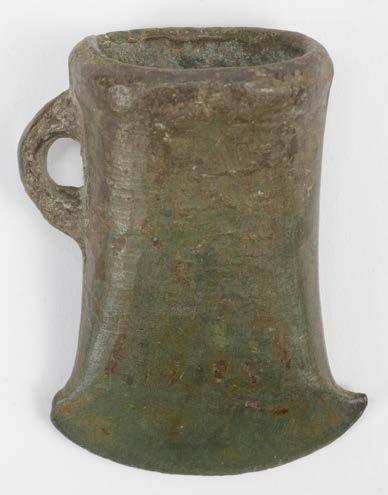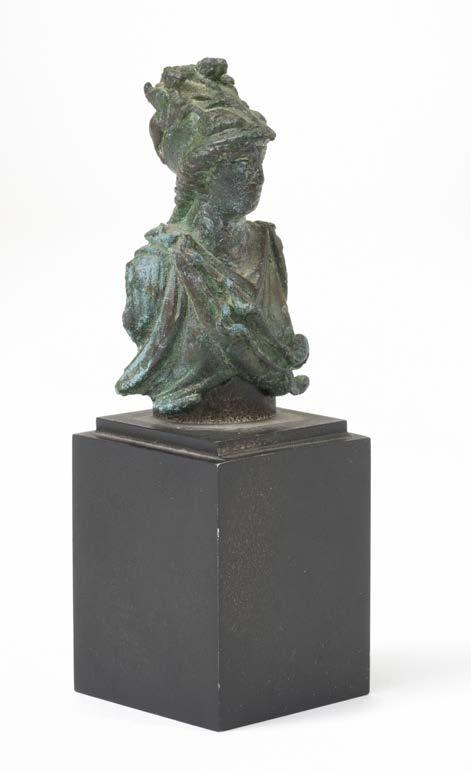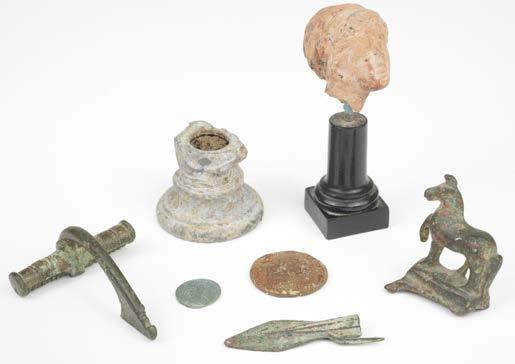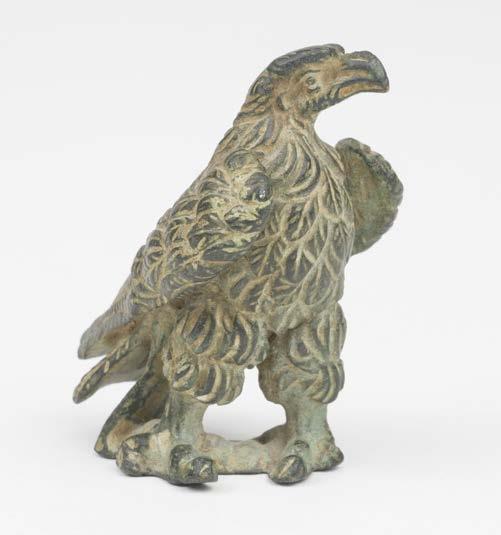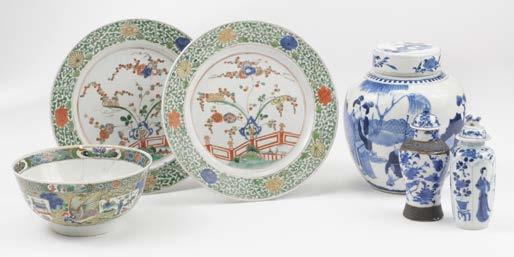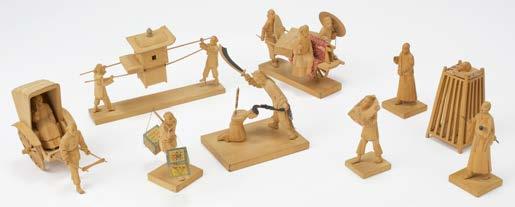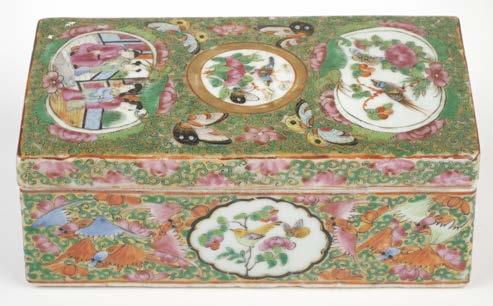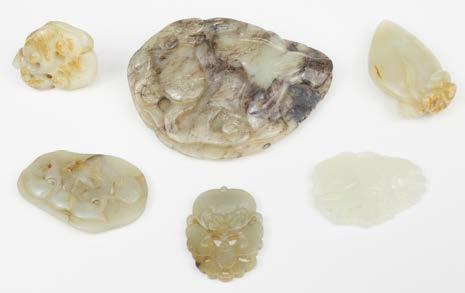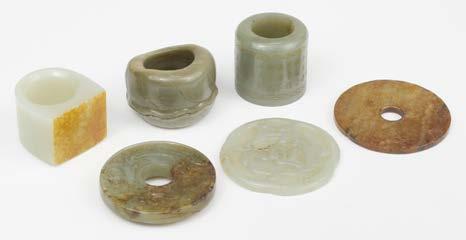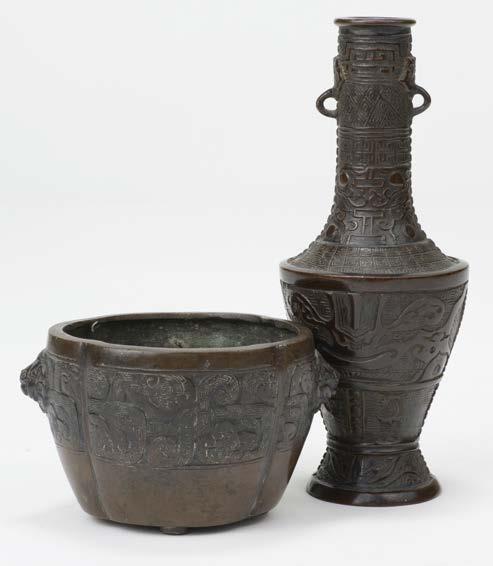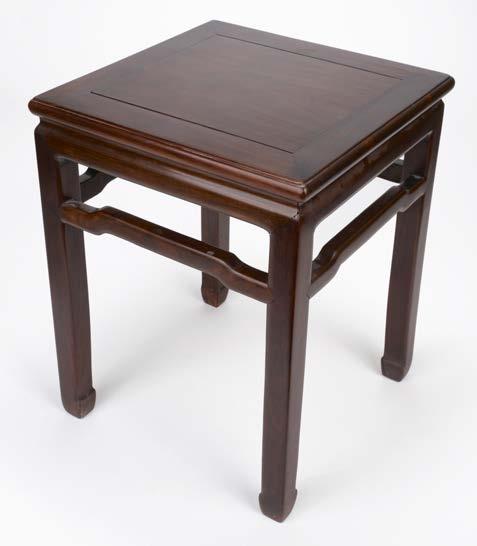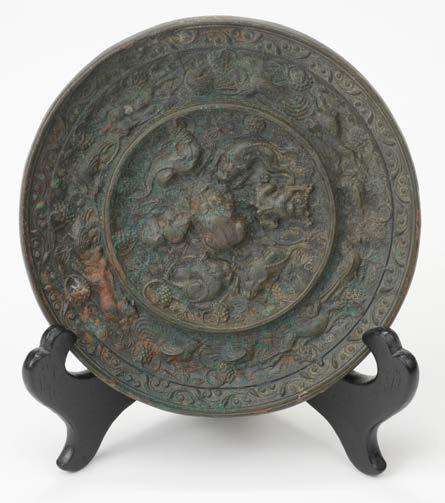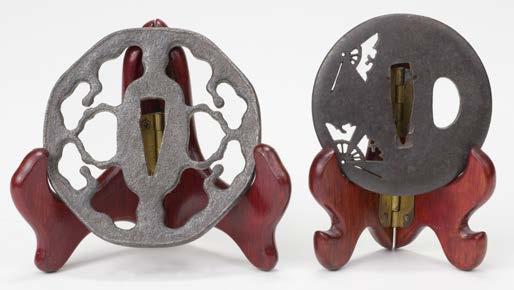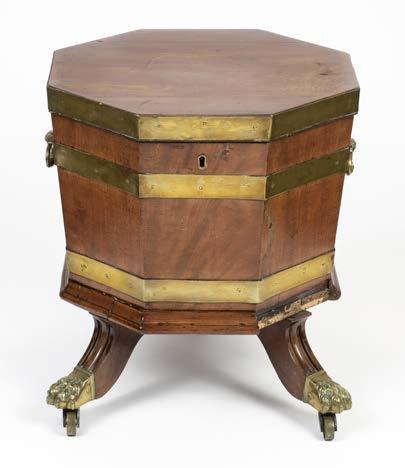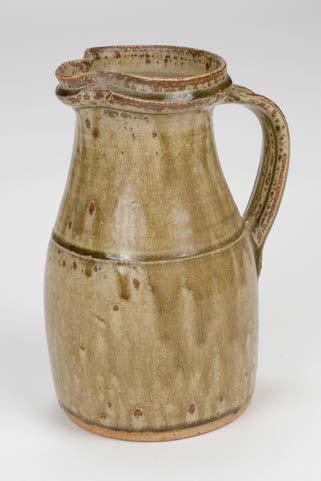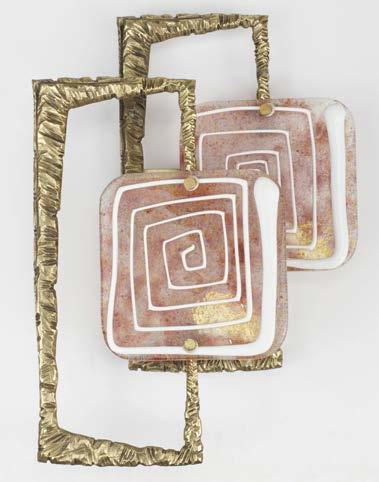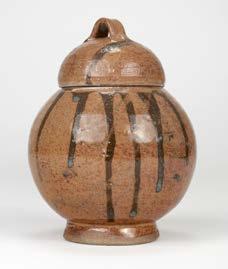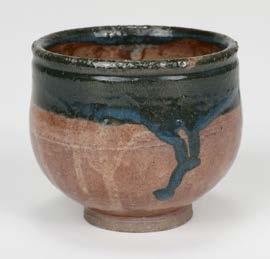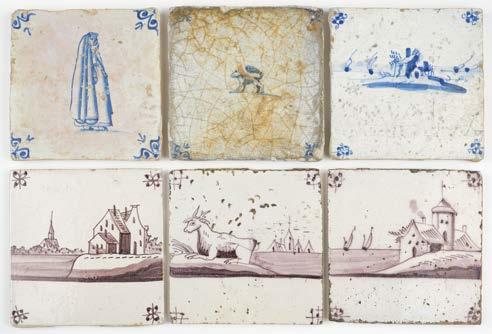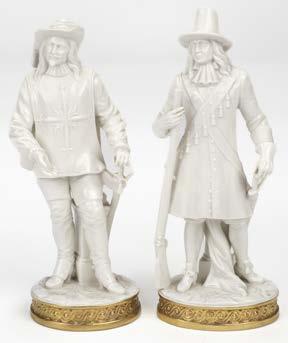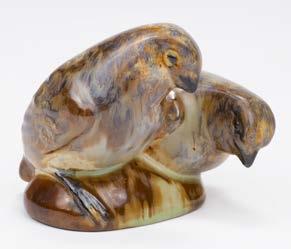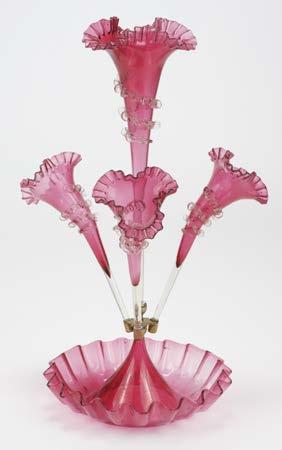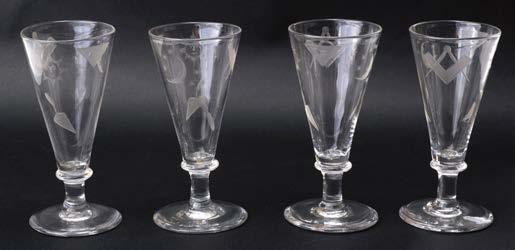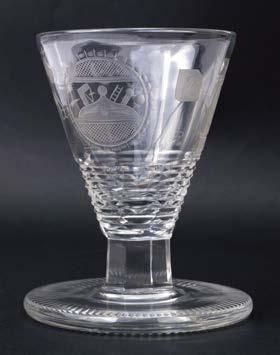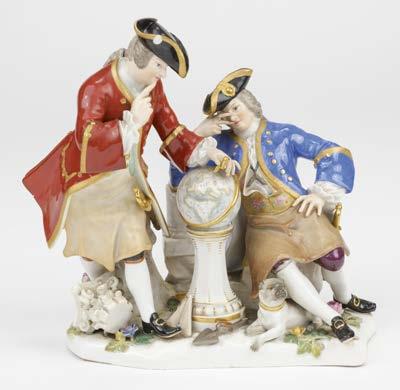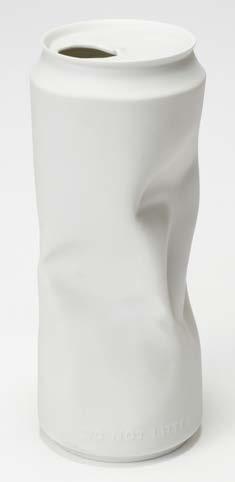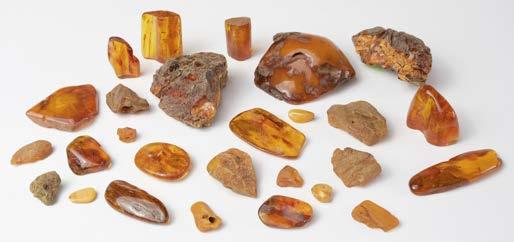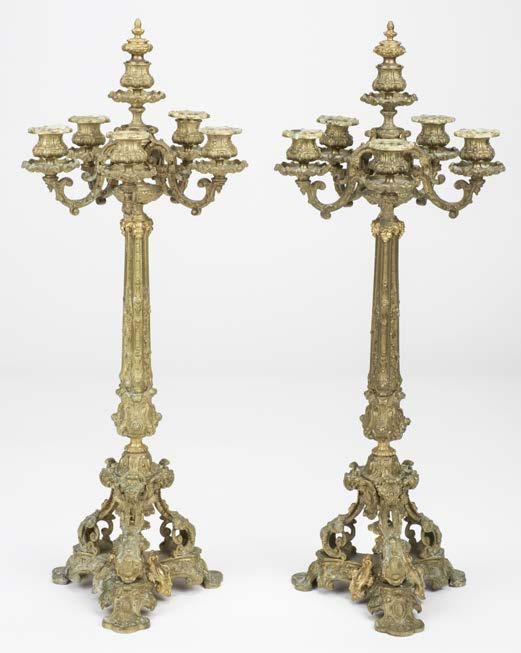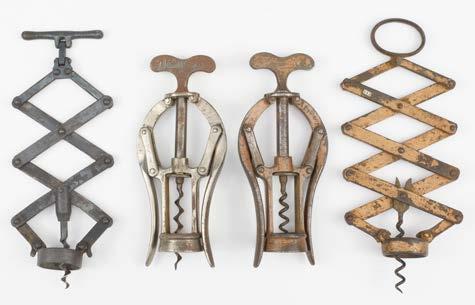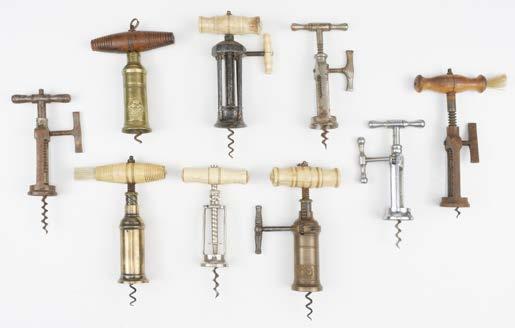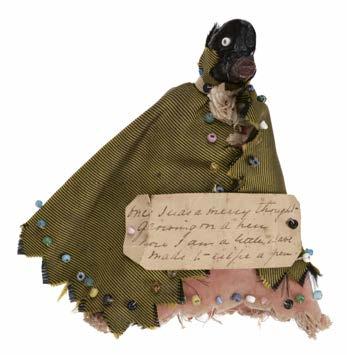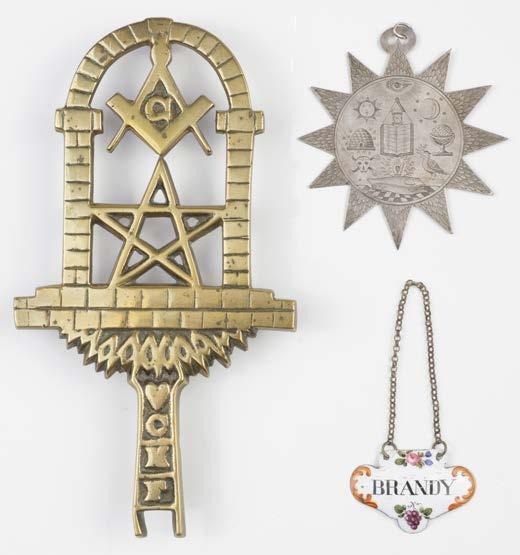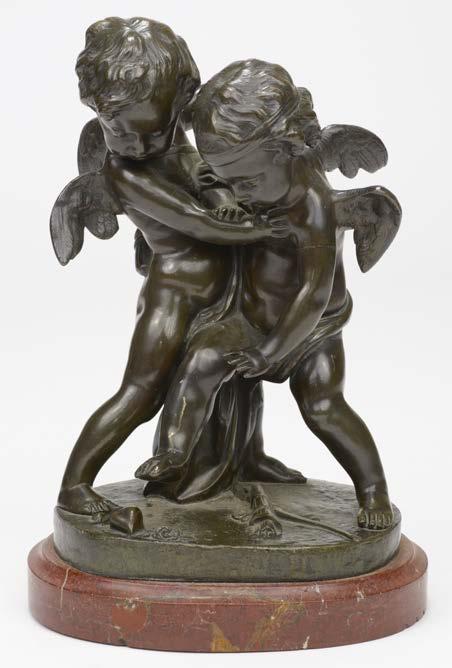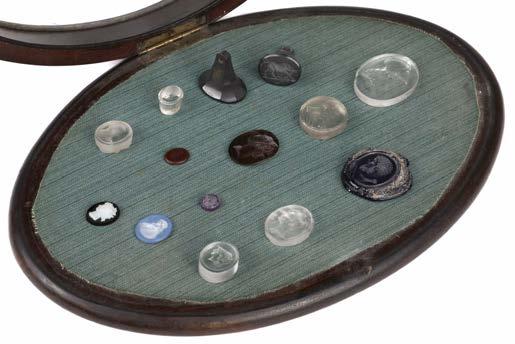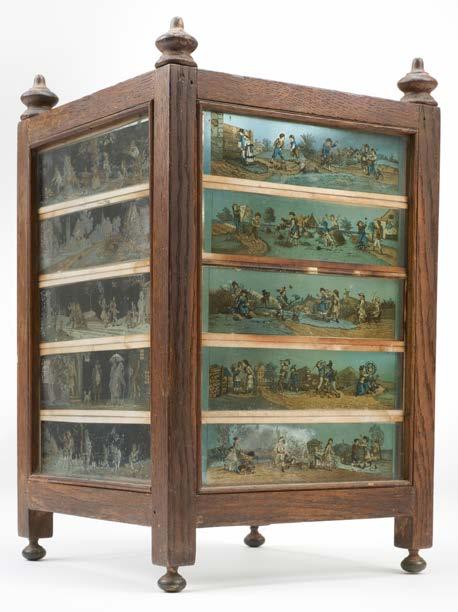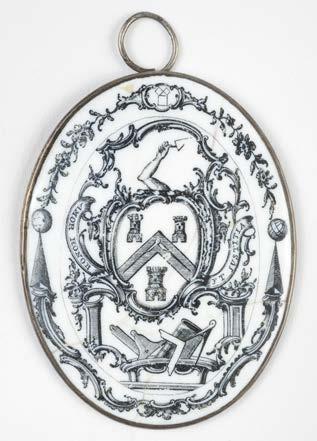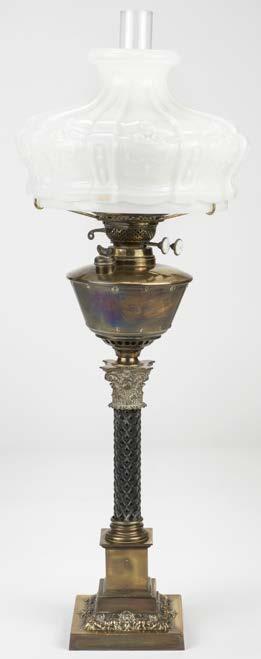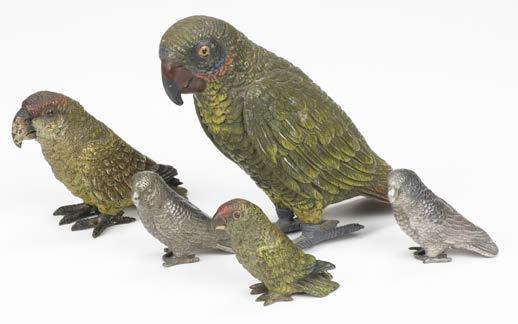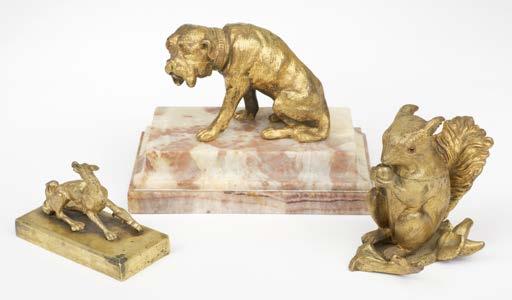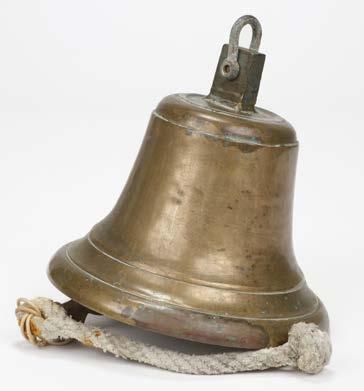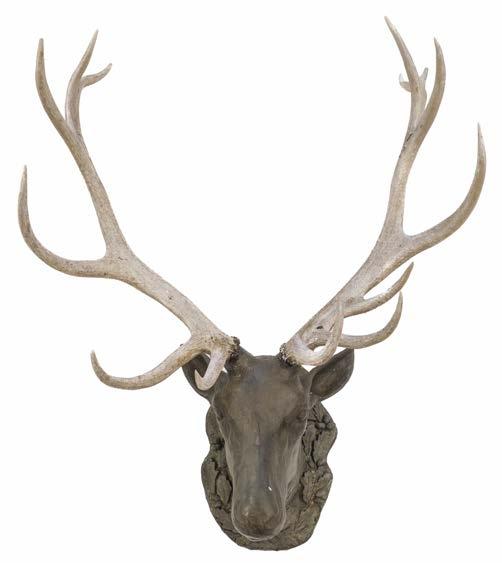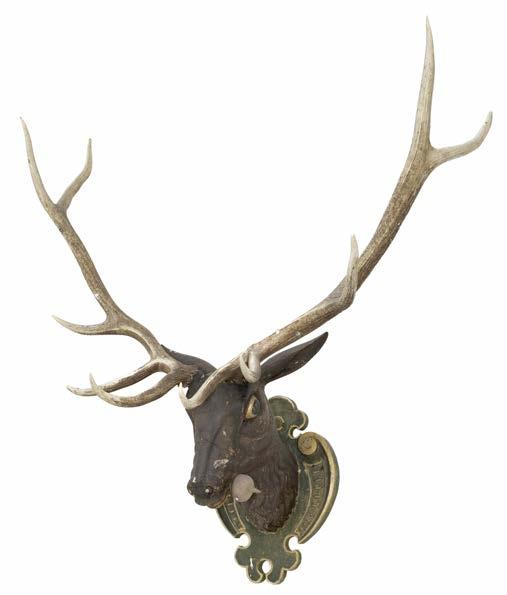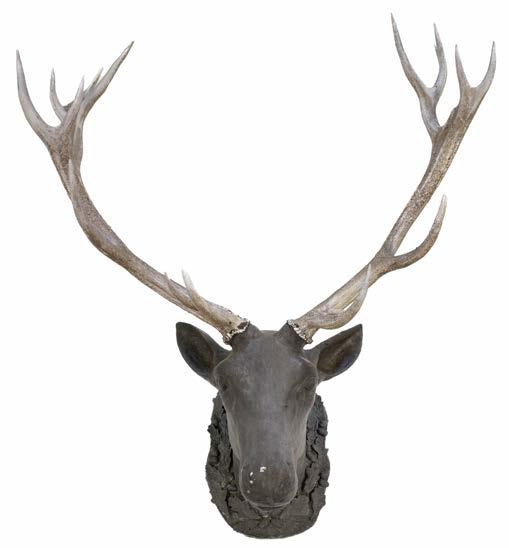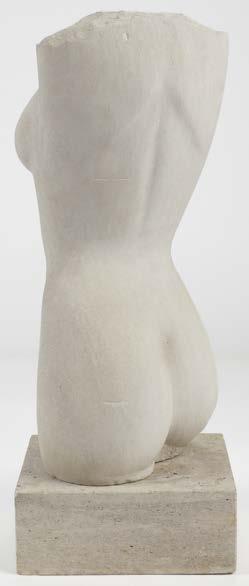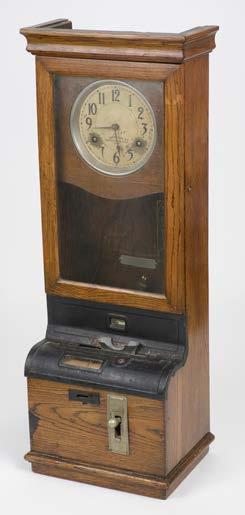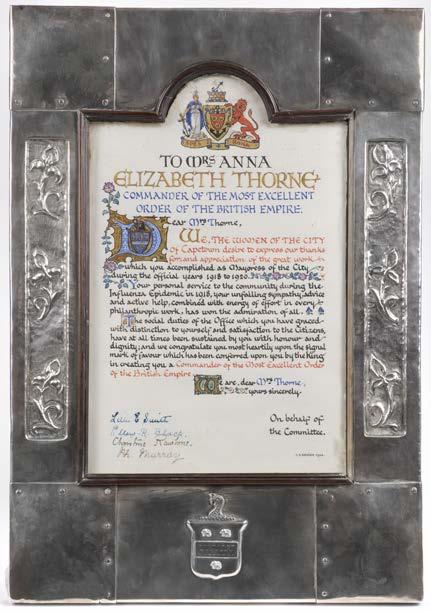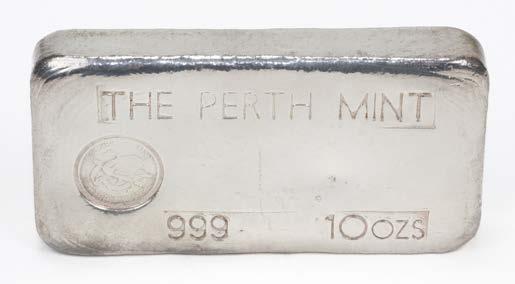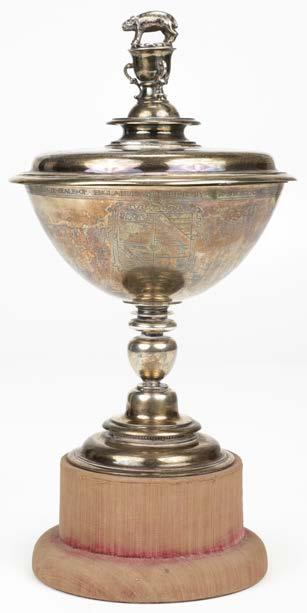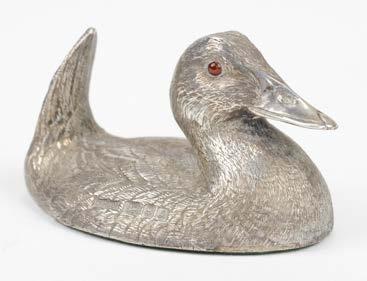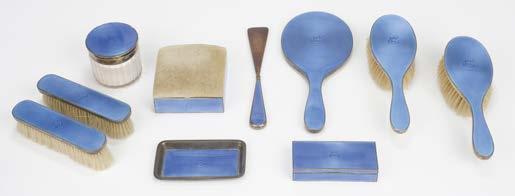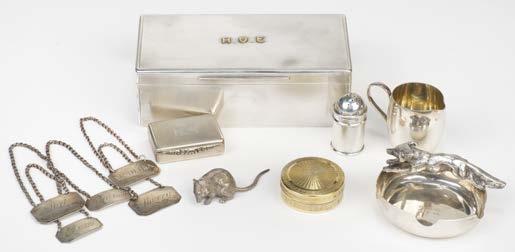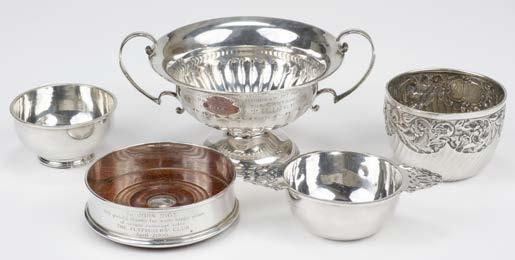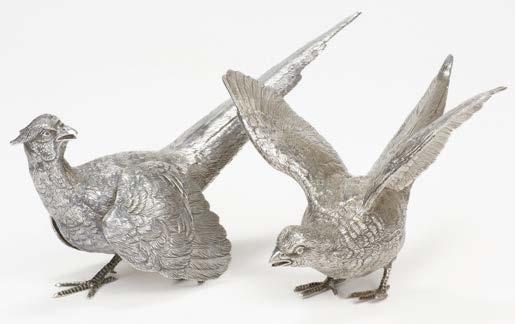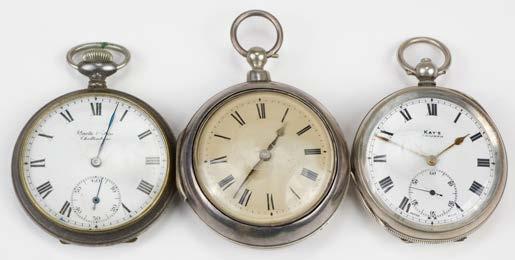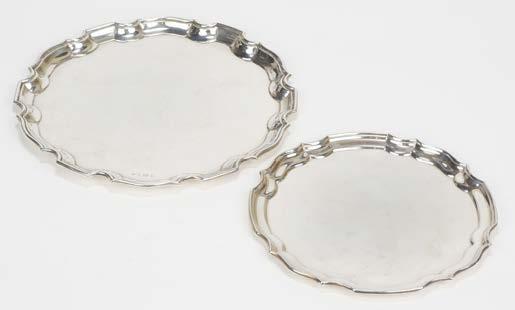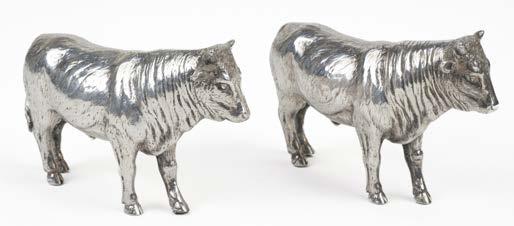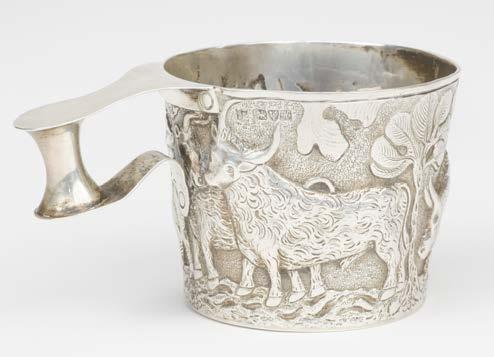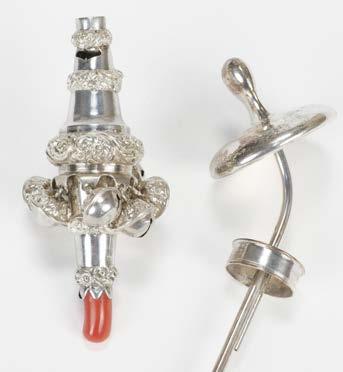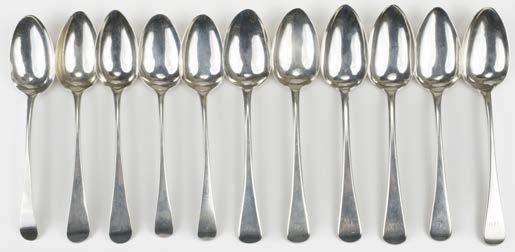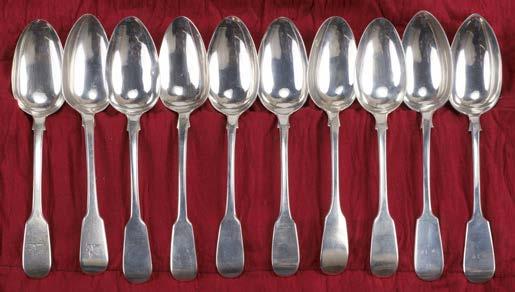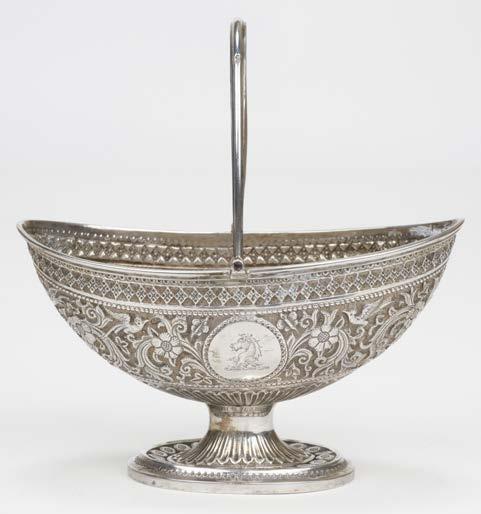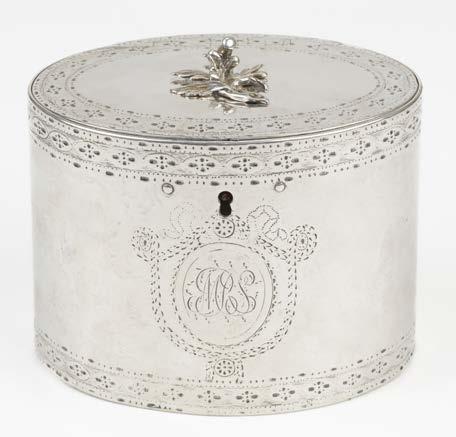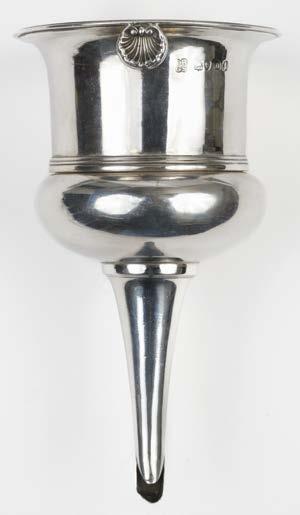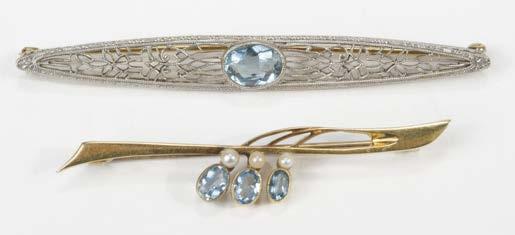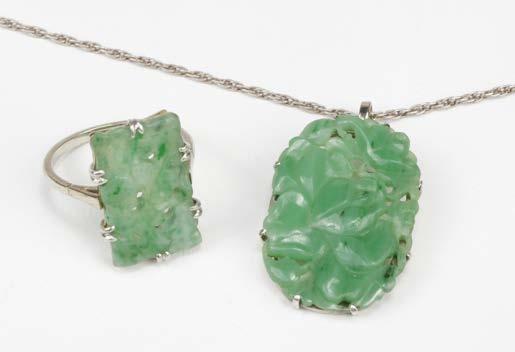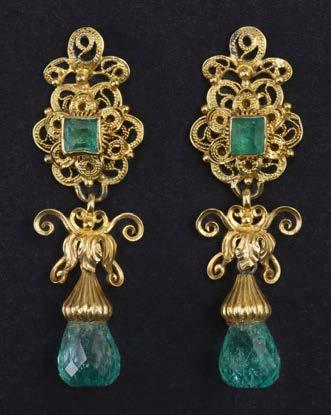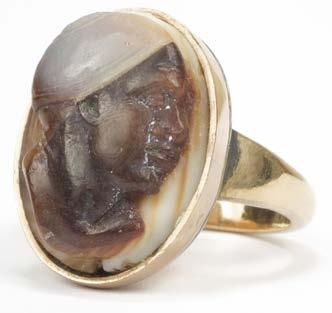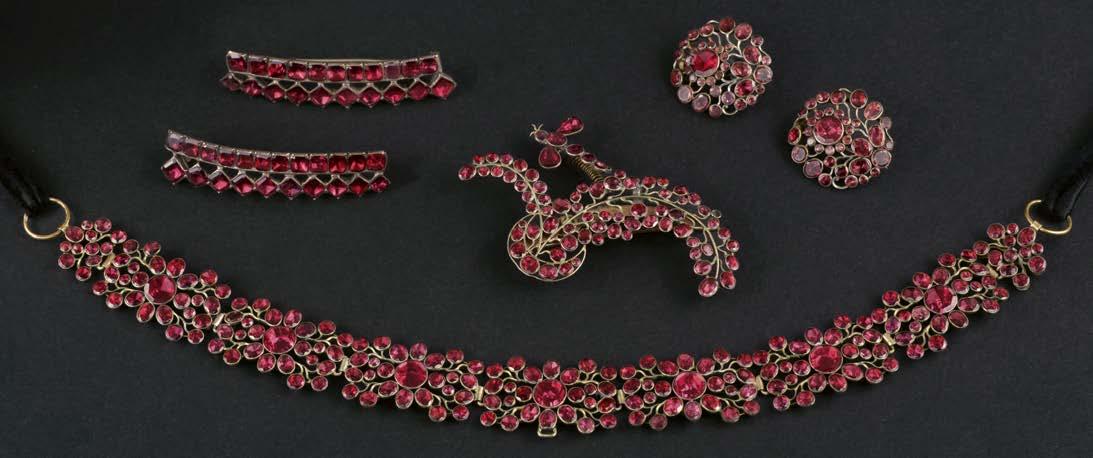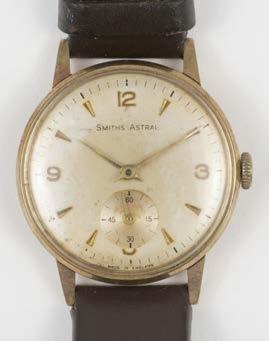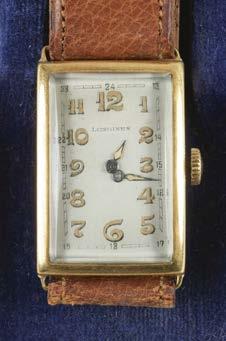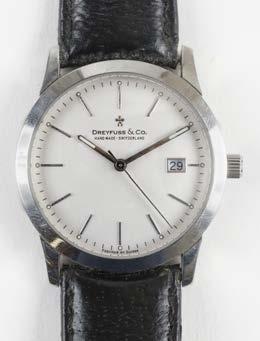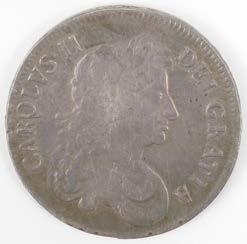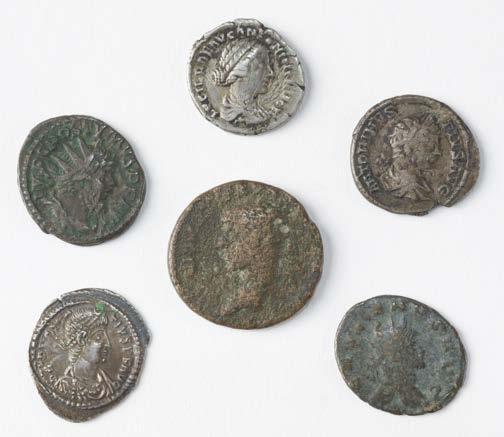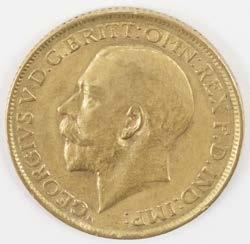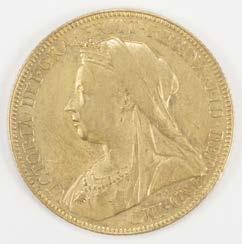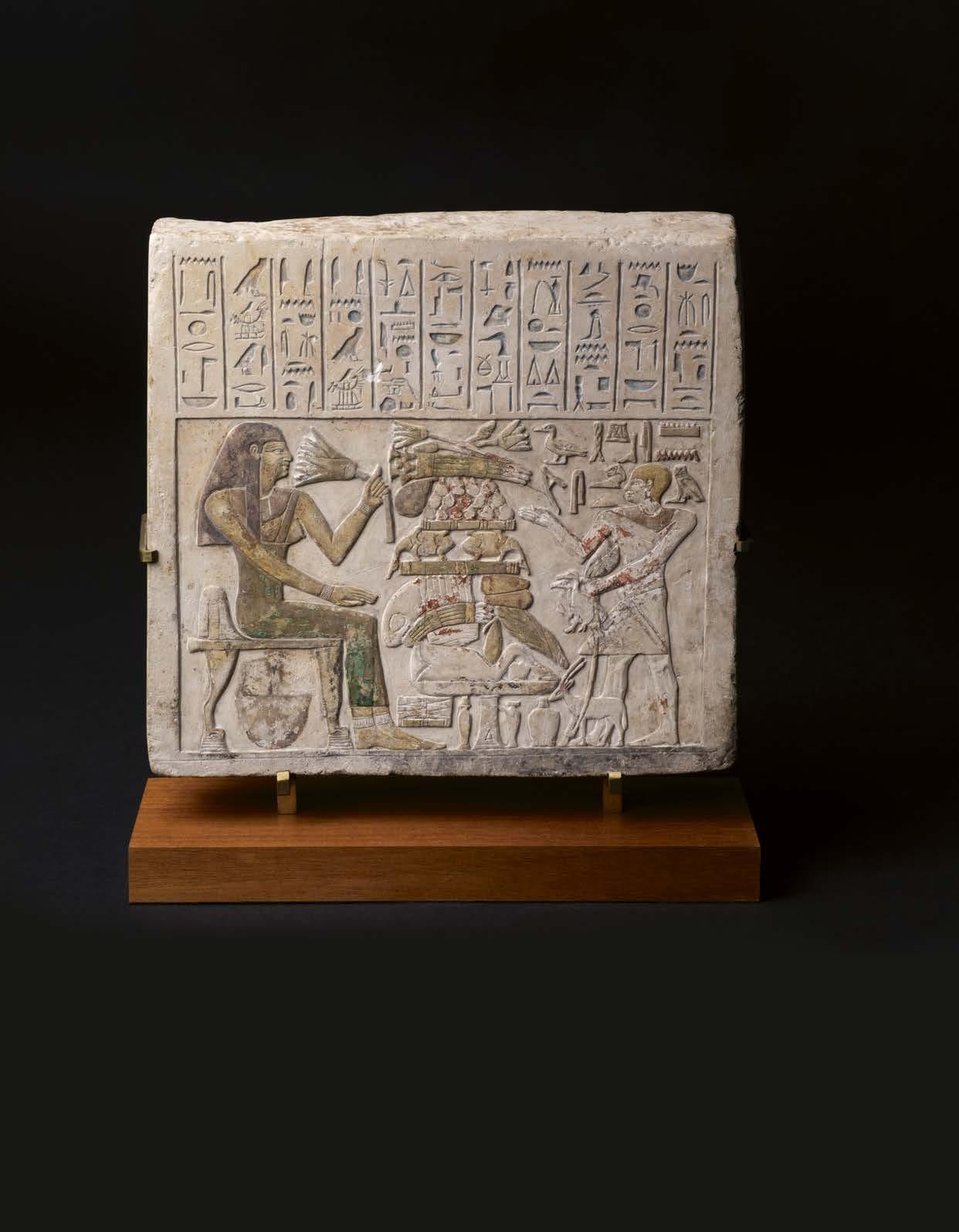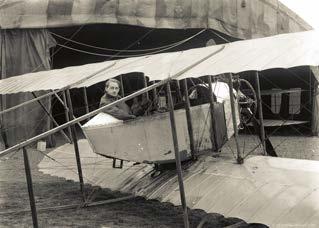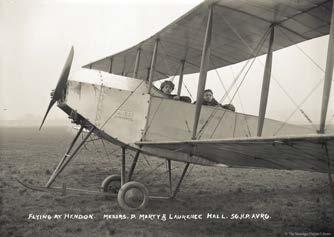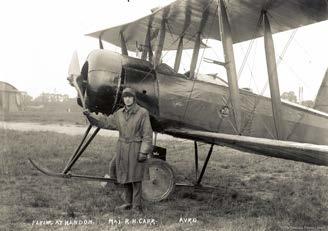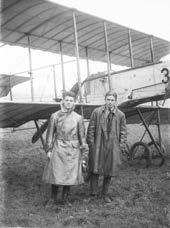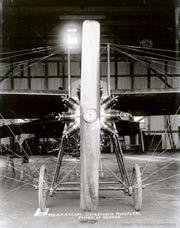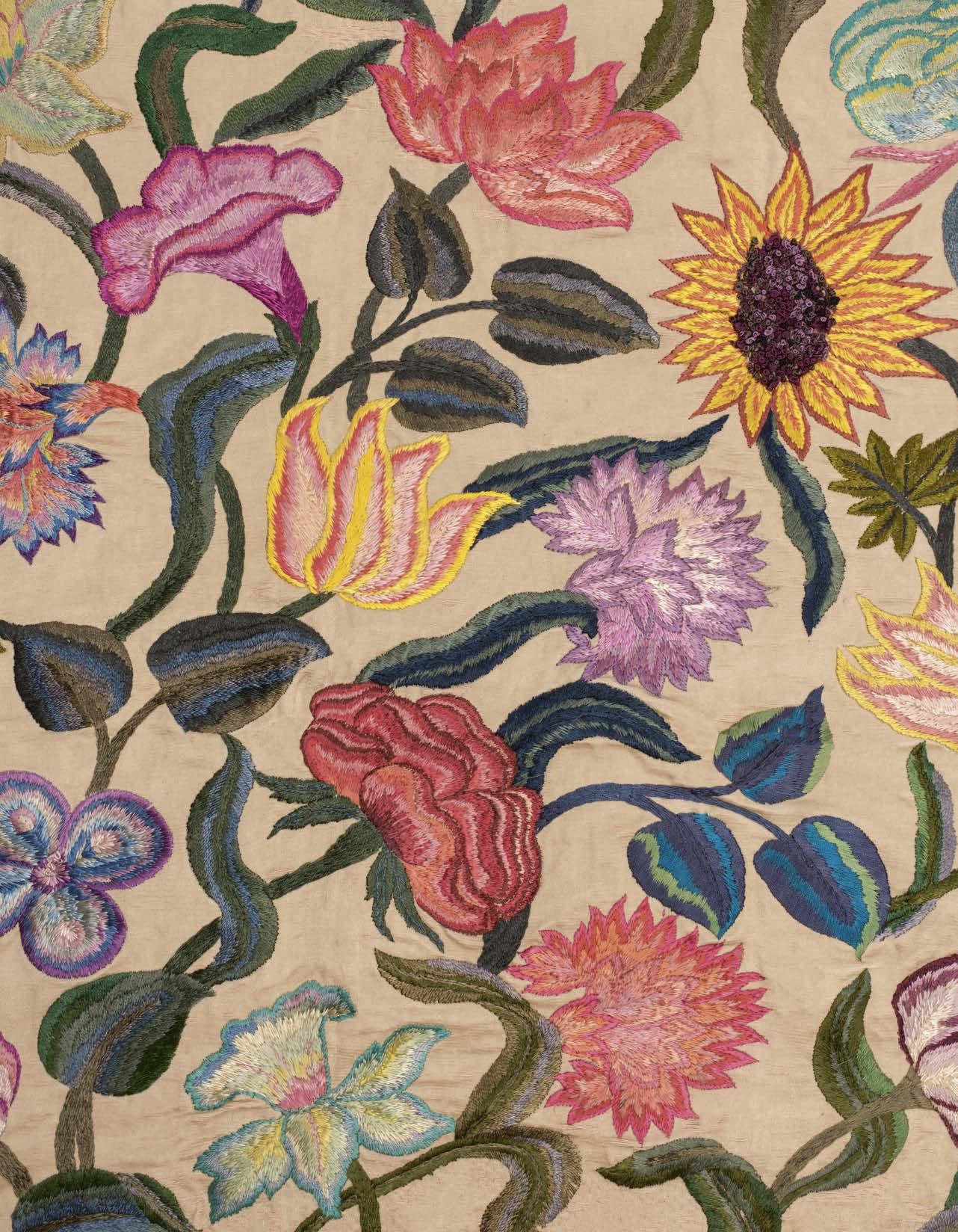IMPORTANT SALE INFORMATION
AUCTION DETAILS
COMMENCING 10.00 am
VIEWING
Monday & Tuesday 10/11 March 9.30am-5.30pm
Morning of sale from 9am (other times strictly by appointment)
Tel: 01285 860006 info@dominicwinter.co.uk
CONDITION REPORTS
Condition reports now including video conferencing can be requested in the following ways: T: +44 (0)1285 860006 | E: info@dominicwinter.co.uk Via the relevant lot page on our website www.dominicwinter.co.uk
ARTIST'S RESALE RIGHT LAW ("DROIT DE SUITE")
Lots marked with AR next to the lot number may be subject to Droit de Suite. Droit de Suite is payable on the hammer price of any artwork sold in the lifetime of the artist, or within 70 years of the artist's death. The buyer agrees to pay Dominic Winter Auctioneers Ltd. an amount equal to the resale royalty and we will pay such amount to the artist's collecting agent. Resale royalty applies where the Hammer price is 1,000 Euros or more and the amount cannot be more than 12,500 Euros per lot.
The amount is calculated as follows:
Royalty For the Portion of the Hammer Price (in Euros)
4.00% up to 50,000
3.00% between 50,000.01 and 200,000
1.00% between 200,000.01 and 350,000
0.50% between 350,000.01 and 500,000
Invoices will, as usual, be issued in Pounds Sterling. For the purposes of calculating the resale royalty the Pounds Sterling/Euro rate of exchange will be the European Central Bank reference rate on the day of the sale.
Please refer to the DACS website www.dacs.org.uk and the Artists’ Collecting Society website www.artistscollectingsociety.org for further details.
For payment arrangements please refer to information for buyers at rear of this catalogue. We would kindly request that commission bids are submitted by 9.30am on the morning of sale.
BIDDING
Customers may submit commission bids or request to bid by telephone in the following ways: T: +44 (0)1285 860006. |. E: info@dominicwinter.co.uk Via the relevant lot page on our website www.dominicwinter.co.uk
Live online bidding is available on our website www.dominicwinter.co.uk (surcharge of 3% + vat): a live bidding button will appear 30 minutes before the sale commences. Bidding is also available at the-saleroom.com (surcharge of 4.95% + vat) and invaluable.com (surcharge of 3% + vat).
POST-SALE
For payment information see our Information for Buyers page at the rear of this catalogue. For details regarding storage, collection, and delivery please see our Information for Buyers page or contact our office for advice. Successful bidders will not incur storage fees while current government restrictions remain in place.
All lots are offered subject to the Conditions of Sale and Business printed at the back of this catalogue. For full terms and conditions of sale please see our website or contact the auction office. A buyer’s premium of 22% of the hammer price is payable by the buyers of all lots, except those marked with an asterisk, in which case the buyer’s premium is 26.4%.
CONTENTS
DAY ONE
Old
19th & 20th Century Prints 345-512
DAY TWO
Paintings, Watercolours & Prints
Nathan Winter MA (History of Art)
Colin Meays BA Hons (Conservation)
Rachael Richardson MA
Edmund Saddington BMus (Hons) Antiques & Historic Textiles
Henry Meadows BA Hons, MRICS
Mark Glew
Susanna Winters MA (History of Art)
Catalogue Produced by Jamm Design – 020 7459 4749 info@jammdesign.co.uk
Cover illustrations: Front cover: lot 348 Back cover: lot 624
Photography by Marc Tielemans – 07710 974000 | marc@tielemans.co.uk Darren Ball – 07593 024858 | darrenball1989@gmail.com
Nathan Winter Henry Meadows Colin Meays
Susanna Winters
Rachael Richardson Edmund Saddington
Mark Glew
Shanghai Panorama. 'View of the Foreign Settlement at Shanghai. Taken by D. Satow of P.469, Nanking Road on 22nd August 1895, from the top of the chimney altitude 125 feet at the Municipal Council's New Electric Lighting Station, Hongkew', 8 albumen prints (each 20.5 x 27 cm, the whole panorama c. 20.5 x 215 cm), mounted with adjacent printed title label in English and Chinese, the whole mounted on a silk-lined paper scroll with wooden batons and decorative silk lining to verso, some creasing and slight fading to left-most print, remains of scroll tie and external short title paper label Rare. No other copies located and not in Terry Bennett, History of Photography in China (2009-2010).
Sato Denkichi, who anglicised his name to D. Satow, was a Shanghai-based portrait, landscape and general photographer, running a studio at P.469 Nanking Road and, at another time, at 347 Nanking Road. He photographed the Shanghai Amateur Circus, for an album, in c. 1901, and 44 of his images of Shanghai sights were published in Souvenir of Shanghai, [1905]. Some of Satow's photographs are included in Charles Darwent’s Shanghai guidebook, Shanghai: a handbook for travellers and residents..., c.1904. Some of his Shanghai photographs were also published as postcards.
£2,000-3,000* (21 May 2025)
FORTHCOMING SALES
Wednesday 9 April
Wednesday 14 May
Wednesday 21 May
Thursday 22 May
Wednesday 18 April
Thursday 19 June
Wednesday 16 July
Thursday 17 July
Wednesday 23 July
Printed Books, Maps. Prints & Documents
Early English & Continental Literature
Printed Books, Maps & Documents
Photography, Autographs & Historical Documents
19th & 20th Century British Photography
The Billie Love Historical Collection
Military & Aviation History, Medals & Militaria
Printed Books, Maps, Prints & Documents
Modern First Editions & Literature
Children’s Books, Original Artwork & Private Press
Playing Cards, Toys & Games
British & European Paintings & Watercolours
Old Master & Modern Prints
Antiques, Jewellery & Historic Textiles
Printed Books, Maps, Prints & Documents
Entries are invited for the above sales: please contact one of our specialist staff for further advice
OLD MASTER PAINTINGS, WATERCOLOURS & PRINTS
To commence at 10am
1* Dürer (Albrecht, 1471-1528). The Holy Family in Egypt, from The Life of the Virgin, circa 1503 [but slightly later], woodcut on laid paper (without watermark), signed in the block lower right, a very well printed impression, probably Meder d or e state (after the Latin book edition of 1511), circa 1570 or just after, early handwritten annotation ‘14’ in brown ink to centre of lower margin, in very good condition (the sheet edges generally intact), sheet size 294 x 209 mm (11 5/8 x 8 1/4 ins) modern frame, glazed Bartsch 90; Meder 202, d/e; Strauss 69; Schoch, Mende, & Scherbaum 180. Plate 15 from the series of 20 woodcuts of the Life of the Virgin: the Holy Family rest outside a ruined house on their flight into Egypt, St Joseph mending a wooden trough, the Virgin sitting and spinning, with the sleeping infant Christ in a cradle next to her, various putti and angels. (1)
£1,500 - £2,000
2* After Titian (Tiziano Vecellio, 1485/89-1576). Satyrs in a Landscape, after Titian, circa 1515-1560, etching on laid paper, with watermark, with publisher’s name above the pond: ‘Nicolai Onlegii formis’, trimmed to plate margin, sheet size 255 x 415 mm, corner mounted to an 18th-century sheet of cream backing paper, with old numeral ‘72’ inscribed in ink to verso, and price of ‘2s 6d’, together with Boldrini (Nicolo, active 1540-1566). Three Monkeys imitating the Statue of Laocoön, after Titian, circa 1545, woodcut on laid paper, trimmed to image, with some tears and losses to edges of the sheet (upper and lower corners, to right margin, and several small holes or fissures across the image), sheet size 270 x 402 mm For the first work see M. Catelli Isola, Immagini da Tiziano, 51 (attributed to Marco Angelo del Moro); M. Agnesi Chiari, Incisioni da Tiziano, 28 (as Battista del Moro).
Boldrini: Rosand and Muraro, Titian and The Venetian Woodcut (1976), 40. (2) £300 - £400
1
3* Dürer (Albrecht, 1471-1528). Cardinal Albrecht of Brandenburg (The Small Cardinal), 1519, engraving on laid paper, a good Meder ‘a’ impression, the first edition before the book edition of 1520 with letterpress text on the reverse, and with the fifth line of Latin text showing traces of an earlier corrected V in the A of the word PRIMAS, without watermark, a few marks and minor stains (generally in good condition), trimmed just inside the plate margin, sheet size 94 x 145 mm (3 3/4 x 5 3/4 ins), paper hinges to top margin verso, backing card inscribed with details of the print in pencil, early 20th century trade label of Arthur Reader, 71 Charing Cross Road, London to verso, framed and glazed (32.5 x 23 cm) Bartsch 102; Meder, Hollstein 100.
(1)
£400 - £600
Lot
4* Da Trento (Antonio, circa 1510-1550). The Virgin and Child with Saint John the Baptist (Madonna of the Roses), after Parmigianino, circa 1527-1530, chiaroscuro woodcut on laid paper, printed in two blocks in black and pale olive green, minor surface marks, sheet size 192 x 238 mm 97 5/8 x 9 3/8 ins), black painted frame, glazed, with manuscript notes on the work to verso in the hand of Michael Jaffé
Provenance: Estate of Michael Jaffé (1923-1997), art historian and former director of the Fitzwilliam Museum, Cambridge.
Bartsch XII.56.12; Boccazzi, Antonio da Trento Incisore, Trento, 1962, page 59. Naoko Takahatake, The Chiaroscuro Woodcut in Renaissance Italy (2018), pp 98ff, number 26.
See also Fondazione Giorgio Cini ALU.0961.1 for a discussion of the variant printings of this woodblock.
This print is one of four listed by Vasari as made by Antonio da Trento in collaboration with Parmigianino, in his workshop in Bologna in 1527-1530. (1) £700 - £1,000
5* Master of the Parrot (active Antwerp, 1525-1550). Virgin and Child with bunch of grapes, oil on wood panel, of the Virgin Mary seated, presenting her breast to the Christ child, with a bunch of grapes on the corner of a table before them, and flowers in a goblet to the right, 38 x 28 cm (15 x 11 ins), old recessed gilt frame
Provenance: Probably Samuel Day (1757-1806) of Hinton House, Hinton Charterhouse, Somerset; by descent to Mary Day, his widow, until 1846; by whom bequeathed to Thomas Jones (1808-1848), heir of Hinton House, Hinton Charterhouse, Somerset; by descent to his son Edward Talbot Day Jones (1837-1911); by descent to R. Robertson-Glasgow, Hinton House, Hinton Charterhouse, Somerset; thence by descent in the RobertsonGlasgow family.
Literature: Inventory of all the Household Furniture, Linen, China, Glass, Books, Paintings, Prints, Plate, Plated Ware and Miscellaneous Articles at Charterhouse, Hinton, Somerset. Entailed by Will of the late Thomas Jones Esqre, made August the 23rd, 24th, 25th, 26th and 28th 1848 by English & Son, 21 Milsom St., Bath, unpublished manuscript (where listed as ‘Mother and Child & bunch of grapes, 15 ins by 11 ins, Italian).
T. H. Poilvache-Lambert, Une Vierge et enfant dans un paysage, attribution à un artiste de l’entourage de Pierre Coecke, le Maitre au Perroquet, Revue des Archéologues et Historiens d’Art de Louvain, volume XVII, 1984, pages 118-142 (where the work is discussed on pages 132 and 133, and illustrated as figure 8). A copy of the article accompanies this lot.
An attractive and typical example of the work of the anonymous painter known as the Master of the Parrot. In 1949, the historian Max J. Friedländer was the first to identify a group of similar paintings and attribute them to ‘Der Meister mit dem Papagei’ (Phoebus, 1949, ii, pages 49-54), so-named for the exotic birds that often appeared in this artist’s compositions, active in Antwerp (or possibly Bruges) during the second quarter of the 16th century. Close similarities to this artist are also discernable in the oeuvre of Pieter Coecke van Aelst (1502-1550), one of the most distinguished south Netherlandish painters of the 16th century, and master of the Antwerp Guild of St. Luke, who maintained a large and productive workshop there. This oil on panel was professionally cleaned and restored by Patrick Corbett, fellow of the British Association of Picture Conservators and Restorers, approximately 20-30 years ago, according to information provided by the owner.
(1)
6* Bonasone (Giulio, 1498-1580). Flora and her Nymphs, after Giulio Romano, circa 1531-50, engraving on laid paper, the 2nd state, with the addition of the publisher's name Antonio Lafreri (1512-1577) to lower margin, probably a later impression (late 16th or early 17th century?), trimmed to plate mark, sheet size 331 x 431 mm (12 1/8 x 17 ins), laid down on old backing paper
Bartsch XV.142.111; Massari 66.
Antonio Lafreri (1512-1577), print publisher in Rome from the 1540s onwards published under his own name from 1563 to 1577, following the death of his publishing partner Antonio Salamanca.
£7,000 - £10,000
(1)
£200 - £400
Lot 4




7* Aldegrever (Heinrich, circa 1502- 1555/1561). Lust (Begierde), from the series Virtues and Vices, 1552, engraving on laid paper, with two-line printed inscription below the image: Depmit ingenuas animi caligine vires / Contemptrix summi spurca Libido Dei, trimmed to plate margins, sheet size 103 x 62 mm, hinge-mounted to a later 19th century sheet of grey wove paper with decorative double-rule outer border in black ink surrounding the print, backing sheet 310 x 238 cm, together with Lens (Bernard, 1659-1725). Cupid and Psyches, after Van Dyck, mezzotint on cream laid paper with indistinct watermark, published by Edward Cooper, trimmed to platemark, a little rubbed, and two small losses to extreme upper left corner and to upper margin towards right corner, sheet size 248 x 332mm, plus a small engraving of a crowded classical scene attributed to Pierre Woeiriot de Bouzey (1532–1599), possibly a later reissue, trimmed to margins, sheet size 73 x 111 mm, and other vraious Old Master prints including six small etchings by Jacques Callot from The New Testament (The Resurrection of Lazarus, Christ and the Woman taken in Adultery, The Tribute Money, Christ in the Temple, The Conversion of Saint Paul and Christ’s Entry into Jeruselem), all trimmed, later impressions, trimmed to image, Franz Cobell, Mountainous Landscape, etching on laid paper, and Jean Hauer, Cahier de Billets à rendre viste pour l’usage decrire de dans le Noms, engraving printed in red on laid paper, and several small engravings on orange paper of agricultural workers by en English hand
Aldegrever: Illustrated Bartsch 127; New Hollstein 127; Hollstein 127. Lens: state 2 (of 5), with ‘E. Cooper ex’ at lower right (16)
£200 - £400
8* Ghisi (Giorgio Mantovano, 1520-1582). Venus and Adonis, after Teodoro Ghisi, circa 1570, engraving on laid paper, without watermark, lettered within the image in a tablet, lower left, ‘TEODORO GHISI IN’ and with Ghisi’s monogram ‘G MAF’, a strong, well-contrasted impression, probably of the second state (of 7), old (19th century) pencil description to verso, some light overall spotting and toning to outer edges, with thread margins, lower right corner torn and nearly repaired to verso (without loss), plate size 320 x 225 mm (12 5/8 x 8 7/8 ins), sheet size 327 x 228 mm (12 7/8 x 9 ins), adhered to later backing paper at upper corners only, card window mount, with John Leech Gallery, 10 Lorne Street, Auckland, New Zealand, to verso Bartsch XV.402.42; Boorsch, Lewis & Lewis 42. (1)
£500 - £800
9* Goltzius (Hendrik, 1558-1617). The Muse Erato, from the series The Nine Muses, 1592, engraving on laid paper, with numeral nine towards lower left edge of image, and ‘H Goltius invent.’ to lower right, and four lines of Latin verse below ‘Uranie celi motus, et sydera monstrat/Quid Jovis et placide promittat Cypridos astrum/Quid portendat hyas, et quid nimbosus Orion/Feraliq coma signum ferale Cometes’, trimmed just inside the plate mark, with loss of the printed initials F. E. to lower right corner, sheet size 241 x 162 mm 9 1/2 x 6 3/8 ins), tipped on to large sheet of old laid paper, together with Saenredam (Jan, circa 1565-1607). Jael and Sisera, after Hendrik Goltzius, circa 1595, engraving on laid paper, the third state with imperial priviledge ‘Cum privil. Sa. Cae. M.’, lettered lower left H Goltzius Invēt, and I.S. sculptor, with two lines of Latin verse at foot ‘Non semper validis sternuntur viribus hostes,/Ferminea pereunt etiam virtute potentes. C. Schoneus’, trimmed to plate mark (lower edge trimmed just inside the plate mark), short worm track towards upper left margin (18 mm), sheet size 283 x 200 mm (11 3/16 x 7 15/16 ins), tipped on to old laid backing paper
Goltzius: New Hollstein 137; Hollstein 156; Saenredam: New Hollstein 393, iii, Hollstein 19, iii, Bartsch III.236.43.
One of a series of nine prints, designed and engraved by Goltzius entitled The Nine Muses, which the artist dedicated to his friend and colleague Jan Sadeler. (2) £200 - £300
Lot 9
Lot 8
Lot 7
10* After Annibale Carracci (1560-1609). Vision of Saint Francis, early 17th century, oil on canvas, relined, 45.5 x 37.5 cm (18 x 14 3/4 ins), gilt wood frame, with label of Manley Restoration Limited, Eton, Berkshire to verso, (61.5 x 54 cm)
Provenance: Private Collection, Berkshire, U.K.
11* Attributed to Carlo Caliari (1570-1596). Head of an Old Man, black and white chalk on pale blue-grey laid paper with thin black ink border, sheet size 14 x 11.9 cm (5 1/2 x 4 3/4 ins), modern doublesided card window mount (bears pencil inscription ‘Carlo Caliari 1570-1576 ? and ‘Christie’s 1/3/57 302LK’), framed and glazed (43 x 35 cm)
Provenance: Christie’s, 1 March 1957, with stock number 302LK; purchased by Professor Ray Pahl (1935-2011) from Shelton, 26 January 1976; thence gifted to the present owner.
£400 - £600
The original version of this work on copper is dated circa 1598, and was part of a group commissioned for the chapel of San Diego de Alcalá, in the town of Santa Maria degli Angeli near Assisi. The present work is after Carracci's original, most probably the version formerly in the collection of Sir John Pope-Hennessy, London. (1)
The present attribution to Carlo Caliari was put forward by Francis Russell, Old Master specialist and Deputy Chairman, Christie’s UK. (1)
£700 - £1,000
12* Grimaldi (Giovanni Francesco, 1606-1680). Landscape with fishing boat and figures by a river, etching on laid paper, sheet size 160 x 227 mm (6 1/4 x 8 7/8 ins), tipped on to old laid backing paper, together with other various 17th and 18th century Italian and French landscape etchings, incluidng examples by Barbault, Boissieux, Chiboust, etc.
(12)
£200 - £300


13* Dürer (Albrecht, 1471-1528). Saint Jerome in His Study, 1514, engraving on laid paper, trimmed just inside the plate mark, an early (possibly 16th century) impression, some staining and several small tears repaired, generally without loss, sheet size 240 x 185 mm (9 1/2 x 7 1/4 ins), laid down on early 19th century English backing card, with ruled outer border in brown ink and pale brown wash, inscribed in ink to foot of the backing sheet 'Etching by Albert Durer - the Picture by the same Artist at Powerscourt', together with Jan Wierix (circa 1549-1615). Melencolia I, after Albrecht Dürer, 1602 [but later], engraving on wove paper, a good impression from a later printing (probably late 18th century or early 19th century), trimmed to plate margin, sheet size 239 x 190 mm (9 1/2 x 7 1/2 ins), plus two other later engravings after Dürer, including The Virgin Seated on a Grassy Bank, 1566, published by Claes Jansz. Visscher, engraving on antique laid paper, trimmed to plate margin, sheet size 116 x 72 mm
Saint Jerome: Meder 59. Wierix: Mauquoy-Hendrickx, Estampes des Wierix 1556; Hollstein 2000; Alvin 1576. Virgin Seated on a Grassy Bank: Bartsch 34, Meder 31.
(4)
£300 - £500
14* Circle of Guido Reni (1575-1642). Head of a Youth, black, sanguine and white chalks on grey-green laid paper with a winged figure watermark, with a study of an upraised hand to verso in black and white chalks, the sheet slightly unevenly trimmed, with a few fine perforations towards the left sheet edge and a few pinholes at the lower left corner, a vertical drying fold towards the right (inherent to the paper), the upper left corner folded, further minor handling creases (generally in very good condition), sheet size 29.4 x 19.7 cm (11 1/2 x 7 3/4 ins), plus Study of a female hand, black, sanguine and white chalks on grey-green, laid paper with a winged figure watermark, the left and lower edge untrimmed, a small brown stain and three pinholes and inherent paper creasing towards the lower margin, sheet size 29.1 x 17.8 cm (11 3/8 x 7 ins), together with Attributed to Pietro Bernardi (circa 1585/90-1623). St. Francis receiving the Stigmata, black chalk heightened with white on fibrous, grey-green laid paper, together with two other studies to verso of the same sheet: head of a young woman in a helmet (possibly Minerva), black and sanguine chalks heightened with white, and studies of an arm, hands gripping a spear, and a calf and foot, in black, white and sanguine chalks, sheet size 57.2 x 43 cm (22 1/2 x 16 7/8 ins) (3)
£1,500 - £2,000
15* Baglione (Giovanni, 1566/71-1643/44). Young couple in contemporary dress, black chalk on pale grey-brown laid paper, with touches of white chalk, early manuscript number 174 in brown ink to centre of top margin, and ‘l 225’ in brown ink to lower right corner, inscribed in pencil to verso (in a later hand) ‘Del Cavalier Baglione’, sheet size 298 x 224 mm (11 3/4 x 8 7/8 ins), hingemounted to a larger sheet of 18th century laid backing paper, with elaborate presentation title and inscription in Italian in brown ink above and below the drawing, giving the artist’s name above, and a long biographical note below, old inscribed number in brown ink to upper left corner: 161, some marks and soiling to the backing sheet with a few short closed marginal tears to margins (not affecting the drawing itself), the backing sheet with ruled framing lines around the drawing, backing sheet 49 x 34 cm
Provenance: Private Collection.

16* Sadeler (Aegidius, 1570-1629). Landscape with buildings and figures approaching a bridge, after Pieter Stevens II (circa 1567circa 1624), circa 1620’s, etching and engraving on thick laid paper, published by Marcus Christoph Sadeler (1614-1660), from the series Eight Bohemian Landscapes, a very good, rich impression, with margins (close-trimmed to lower margin), plate size 160 x 255 mm ((6 1/2 x 10 ins), sheet size 174 x 267 mm (6 3/4 x 10 1/2 ins), together with Van der Cabel (Adriaen, circa 1631-1705). Landscapes, five etchings of landscapes (including one duplicate and one portrait format title page without lettering), published by Nicolas Robert, and one etched landscape by Jan Both (circa 1615-1652), Landscape with wooden bridge at Sulmona near Tivoli, etching on laid paper, with ‘Bothfe’ etched to lower left outer margin, from the set of six prints entitled Landscapes of the Environs of Rome (Bartsch, Hollstein 10), trimmed to platemark, sheet size 192 x 269 mm Adriaen van der Cabel or Ary van der Touw (16311705), was a Dutch Golden Age landscape painter and etcher active in France and Italy. He was born and grew up in the small town of Rijswijk, near The Hague. Cabel was also known as Ary. According to Houbraken, he was a student of Jan van Goyen, and his real name was van der Touw (English: of String), but that wasn’t grand enough according to Van Goyen, so he changed it to mean of Cable. Cabel moved to Lyon as a young man in 1655 and spent most of the rest of his life there apart from a stint in Rome (1659-66). His work is sometimes confused with that of his brother Engel van der Cabel (1641-after 1695), also known as Ange or Angelo. Engel accompanied his brother on his travels and they both married on the same day. Like his brother, Engel became a member of the Bentvueghels, a long established group of Dutch artists who worked in Southern Europe, painting under the pseudonym of ‘Geestigheid’. (7)
£300 - £400
Giovanni Baglione worked mainly in Rome, his mature style typical of the early Roman Baroque, whilst also retaining elements of his early training in the Central Italian tradition of disegno. Between 1621 and 1622 he was in Mantua as the court artist to Duke Ferdinando Gonzaga. Baglione is best known as the author of the Vite de’ Pittori, Scultori, Architetti, ed Intagliatori (Lives of Painters, Sculptors, Architects and Engravers), first published in 1642, one of the most important contemporary sources for artists in Rome at this time. The artist is also famous due to his suit for libel in August 1603 against Caravaggio, Orazio Gentileschi and other painters in connection with some unflattering poems then circulating in Rome the previous summer. Caravaggio’s testimony during the trial is one of the few documented records of his opinions on art and his contemporaries. The present drawing, in which the chalk has been applied lightly and with shaded areas creating a sfumato effect, depicts an elegant young couple in contemporary dress, with two other figures behind, and may be a study for a wedding procession or similar subject. (1)
£1,000 - £1,500
17* Broggiotti (Andrea, active in Rome 1617-1646). Portrait of Cardinal Lelio Biscia, from Sanctissimi D.N. Urbani papae VIII ac illustrissimorum et reverendissimorum DD. S. R. E. cardinalium nunc viventium effigies, insignia, nomina, & cognomina, Rome: Typis Vaticanis, 1628, woodcut portrait, printed in red and black, from the series of 66 woodcut portraits all printed in red and black published by Broggiotti in 1628, with printed inscription at foot ‘Lelius SS. Viti, & Modesti Card. Biscia, Romanus, 19. Januarii 1626’, 175 x 116 mm, framed and glazed
From the rare collection of colour-printed portraits of Pope Urban VIII and members of the Sacred College of Cardinals published by Andrea Brogiotti, director of the Stamperia Vaticana. Little is known about Brogiotti, who was also a bookseller and publisher and later civic treasurer of Rome. In 1628 he published the Indice de caratteri, the type specimen of the Vatican Press, the earliest type specimen book. Among his other published works are two volumes of verse, and an edition of the vulgate in pocket format. All his published works were dedicated to the Barberini family. Firmin-Didot 384 (“Livre rare”).
Lelio Biscia (1575-1638) became cardinal of the church of Santi Viti e Modesto, Rome in 1626. A great collector of books and manuscripts, he served on the committee charged with the completion of St. Peter’s, Rome, through which he came into contact with many of the leading artists in Rome. (1) £100 - £150

18* Galle (Cornelis, 1576-1650). Maphaei S.R.E. Card. Barberini nunc urbani Pp. VIII Poemata, Antwerp: Ex officina Plantiniana Balthasaris Moreti, 1634, engraved allegorical title page after Rubens on laid paper, trimmed to platemark, plate size 195 x 140 mm (7 3/4 x 5 1/2 ins), window-mounted, framed and glazed, 400 x 325 mm (unexamined out of frame), together with Galle (Joannes, 1600-1676). Omnes Sancti (All Saints), circa 1620, engraving after Rubens on wove paper, with margins, plate size 305 x 195 mm (12 x 7 5/8 ins), window-mounted, framed and glazed, 485 x 385 mm (unexamined out of frame), plus four others similar after Rubens, engraved by Cornelis Galle the Elder, Martinus van den Enden, Schelte à Bolswert and Jacob de Wit, matching ebonised and gilt moulded frames, glazed
Provenance: Estate of Michael Jaffé (1923-1997), art historian and former director of the Fitzwilliam Museum, Cambridge. (6)
£200 - £300
19* Bolswert (Schelte Adamsz., 1576-1659). Forest Crossed by a Stream & Landscape with a Cart and Sunset, (from the Set of Small Landscapes, after Peter Paul Rubens), circa 1638, two engraving on laid paper by Bolswert after Rubens, with watermark of a shield with two horizontal central bands, published by Gillis Hendricx, Antwerp, each with 19th century inscription to verso ‘lot 32/1’ and lot 32/2’ to lower left corner of verso, the first work with engraved dedication inscription to Cornelius de Wael from Martin van den Enden, with artist’s and engraver’s name to lower left blank corner, and publisher’s name ‘Gillis Hendrix excudit’ to lower right corner (the first additionally inscribed Antverpiae Cum purivilegio), some marks and a few small spots to the first work, each trimmed near or to the plate mark, sheet size 320 x 454 mm and 338 x 449 mm respectively (12 1/4 x 17 3/4 ins or similar), together with Saint Ignatius of Loyola, after Peter Paul Rubens, circa 1623-1633, engraving on laid paper by Bolswert after Rubens, laid down on old backing paper, timmed to, or just within plate mark, a few ligth marks and spotting, sheet size 388 x 259 mm, and one other engraving of the Risen Christ published by Messager with printed title at foot Christi de Morte Triumphus
Hollstein 308 & 309, iv/v respectively.
(4)
£200 - £300
20* Bolswert (Schelte Adamsz., 1576-1659). Landscape with Milkmaids and Cows (from the Set of Small Landscapes), circa 1638, engraving on laid paper by Bolswert after Rubens, published by Gillis Hendrix, Antwerp, with artist’s and engraver’s name to lower left blank corner, and publisher’s name ‘Gillis Hendrix excudit Antverpiae’ to lower right corner, trimmed to plate margin, laid down on archival tissue, and tab-mounted on thin card, sheet size 320 x 442 mm (1)
£100 - £150
21* Breenbergh (Bartholomeus, Deventer 1598-1657 Amsterdam). Italianate Landscape with soldiers and hunting dogs going, early morning, oil on wood panel, showing a group of soldiers and hunting dogs on a path, with buildings on a rocky outcrop and distant view of the Apennine mountains, with printed red label to verso of Thos. Agnew & Sons Ltd. bearing the number W.O. 0668-73, and printed label for Christie’s Old Master Paintings and Sculpture sale, December 2019, lot 208, the wood panel with chamfered edges to verso, 26 x 38.5 cm (10 1/4 x 15 1/8 ins), old ebonised wood frame
Provenance: with E. T. Parker & Co., Bristol by 1914; with Thos. Agnew & Sons Ltd.; Professor Michael Jaffé (1923-1997); thence by descent; Christie’s, London, Old Master Paintings and Sculpture, December 2019, lot 208. The printed catalogue note for this lot states ‘We are grateful to Professor Marcel Roethlisberger for confirming this attribution on the basis of a photograph’.
Bartholomeus Breenbergh lived and worked in Rome from 1619, where he was influenced by the Italian landscapes of his older compatriot Cornelis van Poelenburgh. He was one of the founder members of the society of Dutch and Flemish artists in Rome, the Bentvueghels (Birds of a Feather), or Schildersbent (Band of Painters), by whom he was nicknamed Het Fret (The Ferret). Breenbergh’s use of the panoramic landscape with dramatic contrasts of light and shade, and buildings drenched in sunlight (as in the present work) influenced the French landscape painter Claude Lorrain, who arrived in Rome around the same time. (1) £7,000 - £12,000



22* Lommelin (Adriaen, circa 1687- circa 1677). Marie de Barbancon, Princess of Arenberg, Antwerp: Joannes Meyssens, circa 1645, engraving on laid paper after Anthony van Dyck from the Iconography (Icones Principum), indistinct collectors ink stamp to verso, plate size 282 x 200 mm (11 1/8 x 7 7/8 ins), sheet size 305 x 220 mm (12 1/8 x 8 5/8 ins), together with Jode (Petrus de, 1570-1634). Beatrice de Cusance, Princess of Cantecroix, Antwerp, circa 1645, engraving on laid paper after Anthony van Dyck from the Iconography (Icones Principum), plate size 250 x 200 mm (9 7/8 x 7 7/8 ins), sheet size 420 x 317 mm (16 1/2 x 12 1/2 ins),
Neeffs (Jacobus, 1610- after 1660). Marie-Marguerite de Berlaymont, [Antwerp]: Joannes Meyssens, circa 1649, engraving on laid paper after Anthony van Dyck, with jester/fool watermark, plate size 278 x 202 mm (11 x 8 ins), sheet size 363 x 268 mm (14 1/4 x 10 1/2 ins),
Bolswert (Schelte Adams, 1586-1659). Albert de Ligne, Prince of Arenberg and Barbancon, circa 1677, engraving on laid paper after Anthony van Dyck from the Iconography (Icones Principum), plate size 243 x 183 mm (9 5/8 x 7 2/8 ins), sheet size 332 x 260 mm (13 x 10 1/4 ins),
Bailliu (Pieter de, 1613- after 1660). Albert de Ligne, Prince of Arenberg and Barbancon, circa 1650, engraving on laid paper after Anthony van Dyck, verso strengthened at head and foot (creased at foot), trimmed to plate mark, plate/sheet size 475 x 331 mm (18 3/4 x 13 ins),
Bolswert (Schelte Adams, 1586-1659). Landscape by moonlight with horse grazing, from the Small Landscapes series, circa 1650, etching on laid paper after Peter Paul Rubens (1577-1640) published by Gillis Hendricx, trimmed to plate mark and laid down on mount board, plate/sheet size 317 x 455 mm (12 1/2 x 18 ins) (6) £200 - £300
23* Testa (Giovanni Cesare, active 1630-1655). The Last Communion of Saint Jerome, after Domenichino, circa 1650-55, etching on laid paper, published by Francois Collignon, Rome, trimmed to platemark, sheet size 548 x 360 mm (21 1/2 x 14 1/8 ins), together with other various Italian and French Old Master prints, mostly 17th and 18th century, including several plates from Valentin Lefebvre (circa 1642-1682), Opera Selectiora after Titian and Veronese (1682), Francois Joullain (1697-1778), Apollon Ecorchant Marsyas, after Veronese, Salvator Rosa (Apollo and The Cumaean Cibyl, a copy in reverse), Panini, Nicolo della Casa, Detail from the Last Judgement, after Michelangelo (damaged), etc. (50)
£200 - £300
24* Elle (Louis Ferdinand, 1612-1689). Divers Sujets d’Amour, after Louis Testelin, Paris, circa 1650, the series of 7 etchings on laid paper of putti among ornate arches, urns, busts, floral motifs and scrolls inscribed with moral apothegms, light areas of spotting and some creases, all trimmed to printed area, each approximately 26 x 18 cm, all tipped onto later paper to verso
A set of decorative etchings published by P. Ferdinand, titled to the foot of the first plate ‘Divers objets d’Amour, designez en sorte qu’il pourront servir en divers lieux, d’ornemens, et de decorations, Utille par consequent aux artisans qui se meslent du dessein’. (7)
£200 - £300
25* Mignard (Nicolas, 1606-1668). Odysseus defying the Sirens, Odysseus and Circe & Odysseus Escaping Polyphemus, 1637, etchings on laid paper, after the frescoes of Annibale Carracci (1560-1609), published by Pierre Mariette (1596–1657), Latin text below the image, later 18th-century manuscript title in ink to upper margins, each with 'bunch of grapes' (within a double circle) watermark, with margins, some dust soiling and old handling creases, plate size 26 x 44.7 cm (10 x 17 1/2 ins), sheet size 35.5 x 51 cm (14 x 20 ins), together with fourteen further engravings after Annibale Carracci (17)
£400 - £600
Lot 24
Lot 23
Lot 22
25

26* Testa (Giovanni Cesare, circa 1630-1655). The Prophecy of Basilides, after Pietro Testa, circa 1650, etching on laid paper, with watermark of a fleur-de-lys within a double-rule circle, trimmed to plate mark, small loss to extreme left margin, plate size 384 x 710 mm, together with other various 17th century etchings after Pietro Testa, including: The Suicide of Dido, etching with engraving, published by Giovanni Giacomo de Rossi, [Rome], close-trimmed, small nick to extreme lower blank margin, sheet size 363 x 464 mm, Jupiter, Io and Juno, by Pietro Santi Bartoli after Pietro Testa, etching on laid paper, trimmed to image, sheet size 285 x 434 mm, Young Man favoured by Fortune and hindered by Time and Envy by Francois Collignon (1609-1687) after Pietro Testa, 1656, etching on laid paper with watermark, lettered to lower right corner Pietro Testa delneavit, close-trimmed, sheet size 355 x 233 mm, The Education of Achilles, by Giovanni Cesare Testa after Pietro Testa, 1650-55, etching on laid paper with watermark, published by Giovanni Giacomo de Rossi, trimmed to plate mark, sheet size 275 x 407 mm, The Resurrection, by Francois Collignon after Pietro Testa, Allegory of the Rest on the Flight into Eg ypt, by Giovanni Cesare Testa after Pietro Testa, etching on laid paper, published by Giovanni Giacomo de Rossi, trimmed to platemark, sheet size 208 x 250 mm, The Resurrection, by Francois Collignon after Pietro Testa, etching on laid paper with watermark, short margins, sheet size 477 x 353 mm, and others similar including Midas, Justice and Charity (Giovanni Cesare Testa), all on laid paper, various sizes (30) £300 - £500

27* Venetian School. Seated Male Nude, 17th century, red chalk on light pale grey-green laid paper, with indistinct watermark, numbered 2 in pencil to lower right corner, and a further pencil number to lower left corner ‘176’, extreme lower left blank corner replaced, some marks and pale discolouration, sheet size 392 c 280 mm (15 3/8 x 11 ins), hinge-mounted, antique-style gilt frame, together with Italian School. Three Male Heads, 17th century, brown wash, heightened with white body colour on oval laid paper, numbered 36 in an early hand to upper margin, laid on modern backing paper, stained to match, secured to backing board with tape to top of sheet verso, sheet size 23.4 x 33.5 cm (9 1/4 x 13 1/4 ins), mounted
Provenance: Estate of Michael Jaffé (1923-1997) art historian and former director of the Fitzwilliam Museum, Cambridge. (2) £500 - £800

28* Verini (Giovanni, active circa 1660). The Birth of Bacchus (The Infant Bacchus Entrusted to the Nymphs of Nysa), after Poussin, circa 1660, etching and engraving on laid paper, published by Giacinto Parbeni, Rome, faint central vertical crease (more visible to verso), with consequent short closed tear to lower margin (without loss), trimmed to plate margin, sheet size 226 x 365 mm (8 7/8 x 14 1/2 ins), together with Baudet (Etienne, 1638-1711). Venus and Cupid, after Poussin, 1665, engraving on laid paper, published by Francois Chereau, Paris, six lines of engraved verse to lower margin, a good, strong impression, with margins, plate size 248 x 292 mm (9 3/4 x 11 5/8 ins), sheet size 267 x 313 mm (10 1/2 x 12 1/4 ins), plus Oudran (Gérard, 1640-1703). Saint Frances of Rome Implores Divine Justice, after Poussin, etching on heavy laid paper, the first state (of 2), before the addition of the engraved title Ste Francoisse at foot, an excellent, clear impression, with margins (except lower margin trimmed just inside the plate), plate size 36 x 29 cm (14 1/2 x 11 1/2 ins), sheet size 36.5 x 31 cm (14 1/2 x 12 1/8 ins), and Attributed to Pierre Mariette (1634-1716). Nymphs and Satyrs, after Poussin, etching on laid paper, published by Pierre Mariette, Peris, with engraved inscription to lower margin N. Poussin invent. A Paris chez Pierre Mariette rue St. Jacques a Lesperance, with margins, plate size 278 x 395 mm (11 x 15 5/8 ins), sheet size 285 x 405 mm (11 3/8 x 16 ins), plus four other etchings after Poussin, including Bernard Picart (1673-1733), Pan & Syrinx, 1724 (Le Blanc 78), Anna Snelling, Pyramus & Thisbe after Nicholas Poussin, and Joseph Wood (1720-1763/64), Landscape with Cattle and figures caught in a storm, & Three Travellers resting with two dogs on a winding path outside a town, both after Gaspar Poussin, 1742 & 1743 respectively, all on laid paper in good condition, with margins, various sizes (largest sheet size 33.5 x 43 cm)
Verini: Le Blanc, Manuel de l’Amateur d’Estampes, 2; Oudran: Robert-Dumesnil, Peintre-Graveur Francais, 28, i/ii. (8)
£300 - £500
29* Circle of Carlo Marratta (Camerano, 1625-1713, Rome).
Portrait of Cosimo III de' Medici, Grand Duke of Tuscany (16421723), oil on canvas, full length portrait of the Grand Duke of Tuscany in the vestments of a canon of St. Peter's, Rome, with the ducal crown on a table beside him, surface scratch to lower right corner with small loss of paint, printed label of W. Freeman & Son Ltd, picture restorers to verso with handwritten note on the picture by Michael Jaffé 'Cardinal Giacomo Carlo di Medici a son of Grand Duke Cosimo II as Canon of the Lateron', older handwritten address label '23 Bramley H[ill], Croydon', and auction stencil 'XESS7', further auction identification in white chalk '165 9 July 08', and Christie's printed label for Old Masters & 19th Century Art, 26 October 2011, lot 145, all to verso, 46 x 29.5 cm (18 1/8 x 11 6/8 ins), old gilded and patterned wood frame (55 x 39 cm)

30* Aquila (Pietro, 1650-1692). Ganymede, Polyphemus, Acis and Galatea, after Annibale Carracci, Rome: Jo Jacob de Rubeis ad Templ. S. Maria de Pace, circa 1674 [but slightly later] handcoloured engraving, some light mainly marginal spotting, sheet size 46 x 72 cm, together with 5 other hand-coloured engravings by Aquila after Carracci: Leander and Hero; Iole and Hercules; Pan and Syrinx, plus Hyacinth and Apollo; Polythemus and Galatea (with small marginal chips and repairs), plus plates II-IV from the decorations of the portico of the Farnese Palace (one with small light marginal water stain, slight marginal dust-soiling), these three plates 73 x 46 cm
The first three plates are numbers 1, 3 & 10 by Pietro Aquila (1650-1692) after Annibale Carracci (1560-1609) whose monumental frescoes decorated the ceiling in the Palazzo Farnese in Rome. (6)
£300 - £500
31* Blondeau (Jacques, 1555-1698). A Young Prince being educated in the Arts of War and Leadership by Mars, after Pietro da Cortona (1597-1689), Rome: Giovanni Giacomo de Rossi 1677, two engravings on laid paper after the frescoes by Pietro da Cortona for the Sala di Marte in the Palazzo Pitti, both with old central folds, platemarks approximately 38 x 79 cm (14.9 x 31.1 ins) sheet sizes approximately 44 x 85 cm (17.3 x 33.4 ins), together with Cesi, Carlo (1622-1682). Divine Providence, after Pietro Berrettini (1596-1669), 1690, two engravings on laid paper after the frescoes by Pietro da Cortona for the Gallery of Palazzo Pamphili, both with old central fold, some minor paper flaws to margins, platemarks approximately 61 x 29 cm (24 x 11.4 ins), sheet sizes approximately 64 x 38 cm (25.1 x 14.9 ins)
£2,000 - £3,000
Provenance: Christie's London, Important Old Master & British Pictures Day Sale including Property from the Collection of the Princely House of Liechtenstein, 9th July 2008, lot 165; Christie's London, Old Masters & 19th Century Art, Wednesday 26th October 2011, lot 145; Estate of Michael Jaffé (1923-1997), art historian and former director of the Fitzwilliam Museum, Cambridge. The prototype for this portrait (Florence, Uffizi) was executed by Maratti during Cosimo's visit to Rome in early June 1700, when Pope Innocent XII appointed him a Canon of San Giovanni in Laterano. On his return to Florence, Cosimo placed the picture in his villa at Castello. It is possible that Cosimo himself commissioned the present copy - perhaps even from Anton Domenico Gabbiani (1651-1726) - as agift for a fellow ruler, cardinal, or prestigious guest. This might explain the addition of the carved gilt table, draped, in the lower right, with an enormous Medici coat-of-arms propped against it and the grand-ducal crown on the marble top, which act as to emphasise his rank and descent, in a particularly delicate diplomatic moment. (From the note to the Christie's catalogue entry in 2011). (1)
Metropolitan Museum of Art, New York, 2012.136.936 for the first work. The Mars Room (Sala di Marte) is one of the grand rooms in the Palazzo Pitti in Florence, decorated with ceiling frescoes by Pietro da Cortona between 1643 and 1644. (4)
£300 - £400
32* Spanish School. Plato's Symposium, after Pietro Testa (16111650), probably late 17th or early 18th century, pen and ink on heavy cream laid paper, inscribed in ink to lower margin 'Convite de Socrates, Pedro Testa inv.', some light soiling, sheet size 327 x 450 mm (14 1/2 x 17 3/4 ins)
33* Herregouts (Jan Baptist, 1640-1721). St Cecilia, etching on laid paper with Strasbourg Lily watermark (and another watermark, unidentified), some scattered spotting, with thread margins, small circular collector’s mark to lower right corner verso of the Chevalier Joseph-Guillaume-Jean Camberlyn (1783-1861), plate size 345 x 255 mm (13 1/2 x 10 ins), sheet size 350 x 260 mm (13 3/4 x 10 5/16 ins), adhered to later backing paper at upper corners only, card window mount, with label of John Leech Gallery, 10 Lorne Street, Auckland, New Zealand, to verso Lugt 514.
Chevalier Joseph-Guillaume-Jean Camberlyn was born in Ghent and served from 1815 in the Dutch army. He was in favour with King William I, and lived for a long time in The Hague. He had left the army by 1830 and settled in Brussels, confining himself to voluntary solitude, and devoted himself almost exclusively to his love of prints and paintings. He published various articles, on Memling, and other primitives and was friends with the great collector Baron Verstolk. His personal collection of prints contained approximatley 4,000 prints. After his death his collection was sold over three sales, in April & November 1865 by Guichardot in Paris and in April 1867 by Henry Le Roy in Brussels. (1)
£200 - £300
Fine large-scale Spanish copy (considered to be so due to the inscription 'Pedro Testa') after Pietro Testa's 1648 etching of this subject, depicting Socrates and his companions seated around a table discussing ideal love, interrupted by Acibiades at left. (1)
£300 - £400
34* Robinson (Robert, active 1674-1706). Classical Capriccio, mezzotint on laid paper, showing an artistdepicting an artist sketching classical ruins, including an obelisk and a mausoleum with an urn, a very good, rich impression, trimmed to plate mark, 197 x 156 mm (7 3/4 x 6 1/8 ins), framed and glazed (34 x 28.5 cm)
Provenance: Purchased at Colnaghi Exhibition in 1972, at the Original Printmaking in Britain exhibition, 1600-1900, no. 27. (1)
£200 - £300
35* Circle of Francesco Solimena (1657-1747). Dido Enthroned, from Aeneas at the Court of Dido, circa 1720s, black chalk on early 18th century textured laid paper, backed by a transparent paper release layer, depicting Dido with a crown enthroned beside a classical pillar, with female and male attendants and putti, sheet size 52.5 x 38.5 cm (20.5 x 15.25 ins), framed and glazed
A well-executed study of the figure of Dido clearly related to Solimena’s large painting of circa 1739-1741, Aeneas at the Court of Dido held in the Museo di Capodimonte, Naples. A small handwritten note affixed to the back of the frame indicates that this work was at some time shown to Nicholas Turner of the British Museum. (1) £300 - £500
36* Mercier (Philippe, 1689-1760). Leçon d’Amour, after JeanAntoine Watteau, etching and engraving on laid paper, with engraved dedication to the Comte de Caylus to lower margin, plate size 465 x 595 mm (18 1/4 x 23 7/16 ins), with thread margins, sheet size 470 x 610 mm (18 1/2 x 24 ins), several marks and short closed tears to margins, one or two small spots to image, together with Le Prince (Jean-Baptiste, 1734-1781). ‘O fortunatos nimium, sua si bona norint Agricolas: Virg. Georg. II [Oh Happy Farmers did they but know the beauty they possess, Virgil, Georgics, Book II], 1768, uncoloured etching with aquatint on laid paper, some light soiling and marks to margins, trimmed near platemark, sheet size 400 x 555 mm (15 3/4 x 21 7/8 ins), plus Massard (Jean, 1740-1822). La Cruche Cassée, after Jean-Baptiste Greuze, 1773, etching and engraving on laid paper, some overall soiling and waterstain to left margin, trimmed to platemark, sheet size 502 x 365 mm (19 3/4 x 14 3/8 ins), and three others similar: J. B. Lucien, Tête d’Ange, after Bouchardon, after Chevalier Lanfranc, Philippe de Larmessin, Le Jeu de Pied de Beuf, after Nicolas Lancret, and Henri Gerard, The Unexpected Bouquet, after Marguerite Gerard (1761-1837)
Mercier: Dacier & Vuaflart 263. (5)
£200 - £300
37* Verkolje (Nicolaas, 1673-1746). Man showing a Picture to a Woman by Candlelight, after Arnold Houbraken, circa 1700, mezzotint on laid paper, with good margins, plate size 195 x 163 mm (7 5/8 x 6 7/16 ins), together with Van Somer (Jan, circa 1645-1699). Two Sleeping Peasants in an Ale House, after Adriaen Brouwer, 1672, mezzotint on laid paper, trimmed to plate margins, one or two small ink marks, sheet size 243 x 175 mm, plus Smith (John, 1662-1742). Venus with cupid and a satyr, mezzotint on laid paper with fleur-de-lys watermark, with margins, plate size 205 x 279 mm, sheet size 229 x 295 mm, and two other small mezzotint engravings, late 17th or early 18th century, including a Dutch interior with peasant family and father feeding a child, and a small oval mezzotint profile of an oriental, both on laid paper (5) £200 - £300
Lot 35
Lot 36
38* European School. Wayfarers with cattle and sheep, early 18th century, oil on panel, a naively painted view of two figures, one seated playing a flute, the other stood holding a staff standing beside sheep and a cow on a hillside, horizontal cracking and some small losses to the panel, panel size 19.7 x 30.4 cm (7 3/4 x 12 ins), in a .... gilt frame (34.5 x 45 cm) (1)
£200 - £300
39* Italian School. Scenic landscape with fortified buildings beside river, early 18th century, oil on canvas roundel laid on circular board, depicting fortified buildings within a landscape beside a river, with figures in foreground and hilltop church building, neatly cleaned, revarnished with some discreet retouching, diameter 23.5 cm (9 1/4 ins), 18th-century carved acanthus leaf gilt moulded wood frame, diameter 38cm (1)
£800 - £1,200
40* Ricci (Marco, 1676/79-1729/30). Landscape with Ruins, & Landscape with a Village on a Hill, from the series of 20 landscapes, 1730, etching on laid paper, one with small watermark of a W, with a small circle at the end of each point, trimmed to plate margins, 292 x 433 mm (11 1/2 x 17 ins), together with two other slightly smaller landscape etchings after Marco Ricci, each numbered in roman numerals to lower right corner VIII and XI, some fraying and short closed tear to upper margin to one etching, the other with trimmed margins, sheet size 265 x 388 mm and slightly smaller (4)
£300 - £500
41* Piranesi (Giovanni Battista, 1720-1778). Veduta sul Monte Quirinale del Palazzo dell’Eccellentissima Casa Barberini, from the Vedute di Roma, 1749, etching and engraving on heavy laid paper, the second state (of five), a crisp impression, with margins, vertical centre fold, plate size 40 x 62 cm (15 3/4 x 12 1/4 ins), sheet size 52 x 72 cm (20 1/2 x 28 1/4 ins), modern good quality antique-style black and gilt frame, glazed Hind 25 (ii/v); Wilton-Ely 188; Focillon 740; Ficacci 926. (1)
£300 - £500
44* Piranesi (Giovanni Battista, 1720-1778). Veduta della Basilica di S. Sebastiano fuori della mura di Roma, su la via Appia, from the Vedute di Roma, 1750, etching and engraving on paper, lifetime Roman edition, the first state (of four) before numbers, a rich impression, with margins, J. Middleton, Frame Maker, Chelsea SW3 label to frame verso, plate size 42 x 66.5 cm (16 1/2 x 26 1/4 ins), sheet size 50 x 74 cm (19 3/4 x 29 ins), framed and glazed Hind 13 (i/iv); Wilton-Ely 192; Focillon 731; Ficacci 930. (1)
£300 - £500
42* English School. Portrait of seated clergyman, 18th century, oil on canvas, small abrasion and loss to right hand, a few small repairs, some light craquelure, exhibition number 140 nailed at foot of frame, 61 x 43 cm, framed (framed size 69 x 50 cm (1)
£200 - £300
45* Rosaspina (Francesco, 1762-1841). Festeggiamento degli Amori per la Rapita Proserpina, circa 1810, fine copper engraving by Rosaspina after Francesco Albani, printed by Rambez, light browning to edges, small loss to right side margin and small hole near right side printed edge, plate size 65 x 77 cm (25 9/16 x 30 5/16 ins), gilt frame, glazed, sheet size 68 x 79 cm (26.7 x 31.1 ins)
Rosaspina insisted on having the original painting by Albani before him when engraving the present work, his most famous print. Albani’s painting of dancing cupids is now in the Pinacoteca di Brera, Milan.
43* Manner of Peter Le Cave (active 1769-1816). Rural Landscapes, a pair of large-scale 18th century rustic landscapes in pastel, unsigned, one with a shepherd and cattle, horse and cart, the other with a young shepherd and cattle and figures fishing by a bridge, 66 x 81 cm (26 x 81 ins) and 61 x 79 cm (24.25 x 31.25 ins) respectively, period gilt moulded frames (81 x 96 cm) (2)
£500 - £700
‘Having conquered the sky and the earth, Venus told her son that she wished to extend their dominion to the Underworld. Cupid aimed his sharpest arrow at Pluto, causing him to fall violently in love with Proserpina, who was gathering flowers with her companions in a land of perpetual spring... After her daughter’s abduction, the distraught Ceres, goddess of the harvest, neglected her duties and the crops failed. To restore the earth’s fertility, Jupiter decreed that Proserpina spend part of each year above ground.’ (Metropolitan Museum of Art, New York, object number: 45.78.123). (1)
£200 - £300
46* Wilson (Richard, 1713-1782). Villa Negroni, Rome, black chalk on pale blue-grey laid paper, inscribed by the artist to lower edge ‘Villa Negroni’, some light overall spotting, sheet size 170 x 200 mm, mounted (along extreme left margin only) to early 20th-century card with brown wash ruled framing border, with early 20th-century ink inscription to verso, giving the artist’s name and the title of the work, together with an account of the history of the villa, plus a reference to another drawing of the same villa by J. Henderson in the British Museum (‘no. 54 in album’), card mount 585 x 420 mm
Provenance: John Bulloch Souter (1890-1971), painter, sculptor and printmaker, born in Aberdeen; thence by descent.
A similarly sized drawing of the Villa Negroni by Richard Wilson on the same blue-grey paper, measuring 222 x 194 mm, was sold at Christies, London, Old Master and British Drawings and Watercolours including works from the Collection of Jeon Bonna, 2 July 2019, lot 200.
The Villa Negroni once stood near the Baths of Diocletian, at Rome. Only the Casino now remains at the south-west corner of the Piazza delle Terme. This was built by Domenico Fontana in 1580 for Cardinal Felice Berutti, afterwards Pope Sixtus V. (1)
£800 - £1,200
47* Hogarth (1697-1764). The Four Stages of Cruelty (First Stage of Cruelty, Second Stage of Cruelty, Cruelty in Perfection & The Reward of Cruelty), 1751, four engravings on thick laid paper, mixed states: First and Second Stages both 1st states, Perfection 2nd state, Reward 3rd state, plate size 385 x 320 mm and similar, with margins, some marks and light soiling, and several closed tears to sheet edges without loss, stitch marks to left blank margins, sheet size 570 x 440 mm (22 1/2 x 17 1/4 ins) and slightly smaller, together with two further Hogarth engravings: Characters & Caricaturas, 1743, and one with title removed Paulson 187-190. Mixed states: First and Second Stages are both first states (with prices to lower margin), Perfection is second state (letter in engraving reads "Dear Tommy, My Mistress has been the best of Women ...", Reward is third state ('James Field' over left skeleton, and price to lower margin).
(4)
£200 - £300
Lot 46
Lot 47
48* Piranesi (Giovanni Battista, 1720-1778). Veduta, nella Via del Corso, del Palazzo dell' Accademia istituita da Luigi XIV, 1752, etching and engraving on heavy laid paper, the third state (of five), from the first Paris edition (1800-1807), with margins, plate size 41 x 62.5 cm (16 1/4 x 24 1/2 ins), sheet size 52 x 72 cm (20 1/2 x 28 1/4 ins), framed and glazed
Hind 24 (iii/v); Wilton-Ely 177; Focillon 739; Ficacci 915. (1)
£300 - £500
49* Piranesi (Giovanni Battista, 1720-1778). Teatro di Marcello, from the Vedute di Roma, 1753, etching and engraving on heavy laid paper, from the first Paris edition, the fifth state (of seven), with margins, plate size 40 x 54 cm (15 3/4 x 21 1/4 ins), mount aperture 42 x 56.5 cm (16 1/2 x 21 3/4 ins), framed and glazed
Hind 33 (i/iii); Wilton-Ely 157; Focillon 818; Ficacci 895. (1)
£300 - £500
50* Piranesi (Giovanni Battista, 1720-1778). Veduta dell’avanzo del Castello..., from the Vedute di Roma, 1753, etching and engraving on heavy laid paper, the fourth state (of six), an impression with contrast, with margins, plate size 40 x 60.5 cm (15 3/4 x 23 3/4 ins), sheet size 51 x 70 cm (20 x 27 1/2 ins), modern good quality antique-style black and gilt frame, glazed
Hind 34 (iv/vi); Wilton-Ely 169; Focillon 822; Ficacci 907. (1)
£300 - £500
51* Cattini (Giovanni, 1715-1804/1809). Six engravings from Icones ad Vivum Expressae, after Giovanni Battista Piazzetta, circa 1754, fine large engravings on laid paper, consisting of the portrait of the artist Piazzetta, and plates I-III, VIII, and XI from the complete set of twelve plates, crossbow watermark (132 mm length, similar to the watermark listed in Robison, Piranesi, Early Architectural Fantasies, catalogue raisonné number 49, page 225, dated to 1747-1748), each close-trimmed, portrait of Piazzetta with small circular stain to centre of image, plate VIII with horizontal tear to left margin generally without loss, sheet size 465 x 360 mm and similar
Giovanni Cattini engraved a set of fifteen plates (a portrait frontispiece and fourteen numbered plates) after Piazzetta with the printed title: Icones ad Vivum Expressae. Many copies of the set are dated 1754 on the title page, but an early issue dated 1743 exists in the Bibliothèque Nationale, and Moschini and Palluchini referred to a title page with the date 1763.
The Venetian painter and draughtsman Giovanni Battista Piazzetta (16821754) produced drawn portraits and ‘teste di carattere’ as ready-made works of art to be displayed on the wall, the first series of drawings ever produced specifically for this purpose. These prints were popular, with at least six editions of the Icones published in 1743, 1753, 1754, 1763, 1767, and 1779. (6) £300 - £500
54* Piranesi (Giovanni Battista, 1720-1778). Veduta del Campidoglio di fianco, 1757, etching and engraving on heavy laid paper, from the first Paris edition, the fourth state (of six), with margins, a rich impression, plate size 40 x 69 cm (15 3/4 x 27 1/4 ins), sheet size 50 x 77 cm (19 3/4 x 30 1/4 ins), framed and glazed
Hind 39 (iv/vi); Wilton-Ely 189; Focillon 747; Ficacci 927. (1)
£300 - £500
£300 - £500
52* Piranesi (Giovanni Battista, 1720-1778). Pyramide di C. Cestio, from the Vedute di Roma, 1756, etching and engraving on heavy laid paper, from the first Paris edition, the first state (of three), a fine impression, with margins, J. Middleton, Frame Maker, Chelsea SW3 label to frame verso, plate size 39.5 x 53.8 cm (15 1/2 x 21 1/4 ins), sheet size 46 x 61.5 cm (18 x 24 1/4 ins), framed and glazed Hind 36 (i/iii); Wilton-Ely 190; Focillon 745; Ficacci 928. (1)
55* Piranesi (Giovanni Battista, 1720-1778). Veduta del Tempio di Cibele a Piazza della Bocca della Verita, 1758, etching and engraving on heavy laid paper, later Paris edition, the final state (of 5), lower portion of text (below image) removed and stuck to verso of frame, areas of staining, mount aperture 35 x 58.5 cm (13 3/4 x 23 ins), framed and glazed (43.5 x 67 cm)
£300 - £500
53* Piranesi (Giovanni Battista, 1720-1778). Veduta degli Avanzi del Foro di Nerva, from the Vedute di Roma, 1757, etching and engraving on heavy laid paper, the fifth state (of seven), an impression with good contrast, with margins, plate size 40.3 x 62 cm (16 x 24 1/2 ins), sheet size 51.5 x 71.5 cm (20 1/4 x 28 1/4 ins), modern good quality antique-style black and gilt frame, glazed Hind 42 (v/vii); Wilton-Ely 181; Focillon 749; Ficacci 919. (1)
Hind 47 (v/v); Wilton-Ely 183; Focillon 820; Ficacci 921. (1)
£150 - £200
56* Sandby (Paul, 1731-1809). Landscape with Travellers, 1758, etching on paper, ‘P Sandby Inv Sculp’ inscribed lower left, Brodbury House Gallery label to frame verso, plate size 24 x 19 cm (9 1/2 x 7 1/2 ins), framed and glazed (36.5 x 30 cm), together with Waterloo (Anthonie, 1609-1690). Three landscapes, etching on paper, each inscribed to the upper margin ‘Antoni Waterlo fe. et in.’ or ‘Antoni Waterlo in. et ex.’, some light toning, largest mount aperture 13.5 x 15 cm (5 1/4 x 6 ins), uniformly framed and glazed (the largest approx. 19 x 21.5 cm) (4)
£200 - £300
57* Berardi (Fabio, 1728-circa 1782). Rest on the Flight into Egypt, after Giovanni Battista Tiepolo, 1760, etching on cream laid paper, old central fold, trimmed to plate margins, sheet size 582 x 354 mm (23 x 14 ins), together with Bartolozzi (Francesco, 17281815). Costante di Fortuna ad ogni evento, & Villa Nello fanciul come si piglia, after Francesco Zuccarelli, 1762, published by Joseph Wagner, Venice, two etchings and engravings on laid paper, with short margins, one with watermark, one with pinhole to top portion of the printed area, both with small areas of paper residue to corners on the verso, sheet sizes approximately 460 x 340 mm (18.1 x 13.3 ins) plus Frey (Johann Jakob, 1681-1752). The Virgin and Child with Saints John the Baptist, Zeno and Anthony, after Antonio Balestra, 1739, etching and engraving on laid paper, with margins, some repaired closed tears to margins, plate size 556 x 340 mm (31 3/4 x 13 3/8 ins), sheet size 590 x 410 mm (23.2 x 16.1 ins), and Morghen (Raphael, 1758-1833). Angelica and Medoro in vari modi legati insieme di diversi nodi, after Teodoro Matteini, Rome, 1795, engraving on thick laid paper, plate size 490 x 400 mm (19.2 x 15.7 ins), sheet size 550 x 430 mm (21.6 x 16.9 ins) Frey, Virgin and Child: Le Blanc II.252.10; Morghen, Angelica and Medoro: Palmerini, Opere d’Intaglio del Morghen, 133. (5)
£300 - £500
58* Piranesi (Giovanni Battista, 1720-1778). Veduta degl’avanzi del sepolcro della famiglia Plauzia..., from the Vedute di Roma, 1761, etching and engraving on heavy laid paper, the first state (of three), with margins, plate size 56 x 62 cm (22 x 12 1/4 ins), sheet size 54 x 67 cm (21 1/4 x 26 1/4 ins), modern good quality antiquestyle black and gilt frame, glazed Hind 83 (iv/vi); Wilton-Ely 216; Focillon 783; Ficacci 954. (1)
£300 - £500
61* Attributed to John Hamilton Mortimer (1741-1779). Study of Three Banditti, including one in feathered turban, pen and brown ink on heavy cream laid paper, some light scattered spotting, sheet size 213 x 205 mm (8 3/8 x 8 1/8 ins)
£300 - £500
59* Piranesi (Giovanni Battista, 1720-1778). Sepolcro di Cecilia Metella, from the Vedute di Roma, 1762, etching and engraving on heavy laid paper, likely the second state (of five), plate size 44.5 x 63 cm (17 1/2 x 24 3/4 ins), framed and glazed Hind 67 (ii/v); Wilton-Ely 200; Focillon 772; Ficacci 938. (1)
60* Piranesi (Giovanni Battista, 1720-1778). Veduta interna del Tempio della Tosse..., from the Vedute di Roma, 1764, etching and engraving on heavy laid paper, the third state (of 5), a rich and dark impression, with large margins, plate size 60.8 x 45.6 cm (24 x 18 ins), sheet size 73 x 55 cm (28 3/4 x 21 1/2 ins), modern good quality antique-style black and gilt frame, glazed Hind 70 (iii/iv); Wilton-Ely 203; Focillon 775; Ficacci 941. (1) £300 - £500
Each lot is subject to a Buyer’s Premium of 22% (Lots marked * 26.4% inclusive of VAT @ 20%)
Provenance: Collection of Michael Jaffé (1923-1997), art historian and former director of the Fitzwilliam Museum, Cambridge.
For a similarly turbaned Banditti, see the pen and ink drawing sold at Sotheby’s London, Old Master & British Works on Paper, 2-8 July 2021, lot 180. (1)
£300 - £400
62* Landerer (Ferdinand, 1730/46-1795). The Alchemist, after Martin Johann Schmidt, circa 1765, etching on laid paper, a good impression of this rare print, with margins, light soiling to margins and pale waterstain to lower right outer corner, early collector’s signature in brown ink of H. Mothorp and dated 1803 to verso, plate size 317 x 202 mm (12 1/2 x 8 ins), sheet size 337 x 223 mm (13 1/4 x 8 3/4 ins)
Nagler 6. (1)
£200 - £300
63* Attributed to Richard Earlom (1743-1822). Academic study of a male nude statue with raised arm, circa 1770, black chalk heightened with white chalk on laid paper with a pale pink prepared ground, numbered in ink to head of the sheet verso in an contemporary hand ‘21’, modern pencil attribution to verso ‘Richard Earlom 1743-1822’, 37.5 x 26 cm (14 3/4 x 10 1/4 ins)
65* De Boisseau (Jean-Jacques, 1736-1810). Buste de Jeune Paysanne, the sitter depicted is either the artist’s wife or the maid, Josephine, crayon and ink wash, signed with monogram top right, laid down on board, spotted foxing marks and short tears to edge, image measures 16.2 cm x 13.4 cm (6 1/2 x 5 1/8 ins), labels verso, presented in ornate gilded frame, overall 29 cm x 25.5 cm (11 1/2 x 10 ins)
(1)
£150 - £200
Provenance: Estate of Michael Jaffé (1923-1997), art historian and former director of the Fitzwilliam Museum, Cambridge. (1)
£700 - £1,000
64* Carloni (Marco, 1742-1796). A collection of 28 hand-coloured engravings from Vestigia delle terme di Tito e loro interne pitture, Rome: Presso Ludovico Mirri mercante di Quadri incontro al Palazzo Bernini, 1776, 28 fine engravings on heavy laid paper after Francesco Smugliewicz (1745-1807), hand-coloured in watercolour and gouache, depicting decorative frescoes found on the walls of the Baths of Titus at Nero's Domus Aureus, some with multiple sheets conjoined and old folds, with margins, some with minor damp stains to margins, largest sheet size 65 x 96cm (25.5 x 37.7 ins), smallest sheet size 31 x 42 cm (12.2 x 16.5 ins)
From the series of 60 large-scale engravings after the frescoes found on the walls of the Baths of Titus at Nero's Domus Aureus (Golden House), first excavated in 1460. Carloni's beautifully rendered plates faithfully capture the ancient Roman 'grotesque' style, which became a hallmark of Italian Renaissance art. The prints are based on drawings made by the Polish artist Francesco Smugliewicz (1745-1807) and the Italian architect Vincenzo Brenna (1747-circa 1818). The series was available uncoloured, or coloured in gouache (as here) following the colours of the original frescoes. (1)
£2,000 - 3,000
66* Italian School. Studies of Groups of Figures, circa 1770-80, brown ink on laid paper with partial watermark, inscribed in Italian in ink ‘Dei Sali, e dei Luperci’ (recto) and ‘dei Sacerdoti d’Ercole, e di Cibele’ (verso), 21.7 x 14 cm (8 1/2 x 5 1/2 ins), adhered to backing board with tape to upper corners only, framed and glazed (33 x 25 cm) (1)
£200 - £300
67* Piranesi (Giovanni Battista, 1720-1778). Veduta di Piazza Navona sopra le rovine del Circo Agonale, 1773, etching on heavy laid paper, from the first Paris edition (1800-1807), a rich, dark impression with good margins, plate size 47.5 x 79.5 cm (18 1/2 x 31 1/8 ins), sheet size 55 x 78 cm (21 1/2 x 30 1/2 ins)
Hind 108 (ii/iv). From the first Paris edition printed between 1800 and 1807 by Piranesi’s sons Francesco and Pietro. (1)
£700 - £1,000
Lot 66
Lot
68* Volpato (Giovanni, 1733-1803). Raphael’s Stanze for Pope Pius VI, circa 1770-80, a series 14 engravings on India laid paper by Giovanni Volpato, Raphael Morghen, Aloysius Fabri, and Vincenzo Salandri after drawings by Joseph Cades, Bernardino Nocchi, Stefano Tofanelli, Jacopo Conca, Tommaso Minardi, Ferdinando Cavalleri, and Gaetano Palmaroli, of the original frescoes by Raphael, printed by the Calcographia Camerale, Rome, and sold by Giovanni Volpato, each with circular blindstamp of the Calcographia Camerale to lower outer corners, with very wide blank margins, some marks and soiling to margins, with short closed tears to sheet edges (without loss), plate size 56.5 x 74.5 cm (22 1/4 x 29 1/4 ins)
The prints illustrate Raphael’s decorations for the Vatican Stanze: The School of Athens, The Disputa, The Expulsion of Heliodorus, The Meeting of Leo and Attila, Parnassus, The Fire in the Borgo, The Mass at Bolsena, The Deliverance of Saint Peter, The Coronation of Charles the Great, and others. (14)
£700 - £1,000
69* Ottaviani (Giovanni). A pair of large hand-coloured engraved plates after Raphael (plates III & VIII), of two frescoes in the Loggia of the Vatican, circa 1772, 2 hand-coloured engraved plates, heightened in gouache, each 2 conjoined sheets, each remargined with small repairs, imprint close-trimmed in plate III and lacking in plate VIII, plate III sheet size 110 x 43.5 cm, plate VIII sheet size 106 x 44.5 cm
Giovanni Ottaviani (1735-1808) was the first engraver to reproduce Raphael’s frescoes in the Vatican Loggia, originally in a series of 37 plates (expanded to 46 plates) in three parts in Logge di Rafaele nel Vaticano (Rome, 177277) (2)
£200 - £300
70* Piranesi (Giovanni Battista, 1720-1778). Veduta dell’Arco di Settimio Severo, from the Vedute di Roma, 1772, etching and engraving on heavy laid paper, the first state (of 3), an excellent impression, with margins, plate size 47 x 71 cm (18 1/2 x 28 ins), sheet size 54 x 76.5 cm, modern good quality antique-style black and gilt frame, glazed
Hind 99 (i/iii); Wilton-Ely 232; Focillon 754; Ficacci 970. (1)
£300 - £500
71* Piranesi (Giovanni Battista, 1720-1778). Veduta della Piazza, e Basilica di S. Giovanni in Laterano..., from the Vedute di Roma, 1774, etching and engraving on heavy laid paper, 1st Paris edition, the first state (of three), with margins, plate size 49 x 70.5 cm (19 1/4 x 27 3/4 ins), sheet size 55 x 75 cm (21 3/4 x 29 1/2 ins), modern good quality antique-style black and gilt frame, glazed
Hind 117 (i/iii); Wilton-Ely 250; Focillon 725; Ficacci 988. (1)
£300 - £500
72* Piranesi (Giovanni Battista, 1720-1778). Veduta della Facciata di dietro della Basilica di S. Giovanni Laterano, from the Vedute di Roma, 1775, etching and engraving on heavy laid paper, the second state (of 4), cartouche with ‘V 24’ added, a very good, richly inked impression, with good margins, plate size 710 x 490 mm (28 x 19 1/4 ins), sheet size 55 x 75 cm, modern good quality antique-style black and gilt frame, glazed Hind 122, ii/iv; Wilton-Ely 255.
The Church of San Giovanni di Laterano was the official seat of the Pope, as well as the oldest church in Europe, completed in 1737 in a neo-classical style with a facade by Alessandro Gallilei. (1)
£300 - £500
73* Piranesi (Francesco, 1758/59-1810). Veduta del Piedestallo del’ Apoteosi di Antonino Pio, e di Faustina sua moglie nella Piazza di Monte Citorio, circa 1776-1779, etching and engraving on heavy wove paper, with margins, a very good dark impression, very light soiling to outer blank margins, plate size 490 x 705 mm (19 1/4 x 27 3/4 ins), sheet size 520 x 735 mm (20 1/2 x 29 ins)
Focillon 573; Wilton-Ely 713. (1)
£200 - £400
74* Piranesi (Giovanni Battista, 1720-1778). Veduta di un Eliocamino per abitarvi l’Inverno..., from the Vedute di Roma, 1777, etching and engraving on heavy laid paper, 1st Paris edition, the first state (of three), printed with great depth, with margins, plate size 42 x 60 cm (16 1/2 x 23 1/2 ins), sheet size 54 x 69.5 cm (21 1/4 x 27 1/2 ins), modern good quality antique-style black and gilt frame, glazed Hind 133 (i/iii); Wilton-Ely 266; Focillon 847; Ficacci 1004. (1)
£300 - £500
75* Piranesi (Giovanni Battista, 1720-1778). Four etchings from Vasi, candelabri, cippi, sarcofagi, tripodi, lucerne, ed ornamenti antichi disegnati ed incisi dal Cav. Gio. Batt. Piranesi, 1778, four etchings on heavy cream laid paper, with margins: Vaso antico di Marmo di elegante intaglio di maniera Egizia, transportatio da Roma in Inghilterra d’ordine, e a spese del Sig. Riccardo Hayward; Vaso antico di marmo presso S. E. il Sigr. Genle Schouvaloff rappresentante i Fatti d’Ercole; Altro Candelabro antico de due posseduti dal Sigr. Tommaso Jenkins Pittore Inglese; Veduta im Prospettiva di um antico Vaso di marmo di gran mole, ritrovato l’anno 1770 (shorter margins), some minor closed marginal tears, plate size 67.5 x 42 cm (26.5 x 16.5 ins) sheet size 73.5 x 51.5 cm (28.9 x 20.2 ins) or similar Ficacci 734, 748, 808 and 780. (4)
£400 - £600
Lot 74
76* Sherwin (John Keyse, 1751-1790). A Tale of Love, stipple engraving on laid paper, creases to extremities, minor loss to upper left corner touching platemark but not printed image, contemporary ink inscription to lower left margin ‘Mrs Bury’, printed area 46 x 37 cm, sheet size 48 x 39 cm, together with other 18th and 19th century British prints including: Paul Sandby (1730-1809).
View of a Bridge, London, Sept 19, 1781, aquatint on laid paper, narrow margins, printed area 13 x 16 cm, sheet size 13.5 x 17 cm, Bernard Baron (1696-1762). Homer..., etching on laid paper after Thomas Wood, printed area 36.5 x 25.5 cm, sheet size 43 x 31 cm, and Achilles’s Life Painted by Sr Peter Paul Rubens, London 1724, etching on laid paper, trimmed to printed edge, 38.5 x 32, William Ward (1766-1826). ‘And it came to pass that David wrote a Letter to Joab and sent it by the hand of Uriah’, London Sept 1, 1791, mezzotint on laid paper after Ferdinand Bol, proof before letters, platemark 47 x 56 cm, Francesco Bartolozzi (1727-1815). Landscape with Roman Ruins, engraving on laid paper printed in brown ink, trimmed margins, 18 x 24 cm, ‘Despair’, an engraving after Charles Le Brun, printed in red ink on laid paper, spotting and toning to margins, plate size 27.5 x 19 cm and an engraving by John Varley of a landscape featuring a riverbank with trees, trimmed to printed edge, 18 x 24 cm
£200 - £300
77* English School. Portrait of a young girl and a robin, circa 1770s-1790s, oil on canvas, full length portrait of a young girl with curly fair hair, wearing a diaphanous gown with frilled fitted bodice and horizontally striped skirt, a wide pale blue silk sash around her waist, standing in a picturesque landscape framed by trees, a beribboned straw hat beside her on a mossy bank strewn with wild flowers, and a robin perched on a branch above singing, overall craquelure, re-lined, 124.5 x 97 cm (49 x 38 1/4 ins), gild moulded frame (136 x 110 cm)
Provenance: Miss Carrie Snelling (1892-1995), the owner’s great aunt.
The sitter is likely to be a member of the Snelling family of St Mary Cray, Kent, possibly Elizabeth, known as Kitty (1771-1838) or her sister Fanny (1773-1815), the offspring of Joseph Snelling (1730-1814) and his wife Frances, known as Fanny (1738-1820).
Joseph Snelling was Miss Carrie Snelling’s great great grandfather. Somewhat provincial in style this appealing portrait is likely to have been painted by a jobbing provincial artist.
(1)
£400 - £600
Lot 76

78* Green (Valentine, 1739-1813). Masters Joseph and John Gulston, after Francis Cotes, 1771, mezzotint on watermarked laid paper, proof before letters, depicting two young boys standing together, Joseph the elder child looking to the front, the younger child, John, carrying a flower basket, ‘F Cotes pinxit Publish’d Jan 1st 1771 Val Green fecit’ to lower margin, a few scattered spots, plate size 42.6 x 51.2 cm (16 3/4 x 20 1/8 ins), sheet size 47 x 55 cm (18 1/2 x 21 5/8 ins), together with McArdell (James, 1727/18-1765). Mrs Day now Lady Fenhoulet, after Reynolds, mezzotint, proof before letters, depicting a half portrait of a well dressed woman, plate size 33 x 22.8 cm (13 x 9 cm), framed and glazed (56 x 46 cm), plaque fixed to lower edge of frame ‘29. Anne Day (Lady Fenhoulet) by J. Macardell after Sir J Reynolds’, ISO MP stencil and P & D Colnaghi & Comp label to verso, and Frances Anne Crewe (née Greville), mezzotint, depicting a woman holding a small decorative urn, a cherub standing next to her, plate size 51 x 36.1 cm (20 x 14 1/4 ins), framed and glazed (59.5 x 45 cm)
Provenance: From the estate of The Late Reverend John Watson (19392019), an avid private collector from Hampshire. (3) £200 - £300
79* Hamilton (Gavin, 1723-1798). The Erythraean Sibyl, after Michelangelo (1475-1574), later 18th century, black and red chalk on laid paper, sheet size 230 x 153 mm (9 1/8 x 6 ins), glued to outer corners verso to later laid cream backing paper, window-mounted, with inscription in pencil to lower right ‘Gavin Hamilton (after Michelangelo) [done in Rome: Italian paper]’ in the hand of Michael Jaffé, framed and glazed
Provenance: Estate of Michael Jaffé (1923-1997) art historian and former director of the Fitzwilliam Museum, Cambridge. (1)
£300 - £500
80* Romney (George, 1734-1802). Miranda and Ferdinand playing chess in Prospero’s cell (Shakespeare’s The Tempest, Act V, scene one), pen, brown ink, and brown wash on laid paper, later pencil numeral 47 to upper left corner, sheet size 110 x 185 mm (4 3/8 x 7 3/8 ins), framed and glazed, with remnant of Sotheby’s printed label to verso Provenance: Sotheby’s New York, 9th January 1996, lot 166; Forum Auctions, London, Editions and Works on Paper, 26 June 2019, lot 28.
In common with many prominent English artists, Romney worked intensively on Shakespearian subjects from November 1786 onwards, when the publisher and printmaker John Boydell launched his great project The Shakespeare Gallery, which included a gallery in Pall Mall where the original paintings commissioned by Boydell based on Shakespearian subjects were exhibited, as well as a lavishly illustrated folio edition of Shakespeare’s plays, which was published between 1791 and 1803 in nine volumes with engraved plates after Reynolds, SmirKe, Hamilton, Opie, Westhall, Northcote, Fuseli, and others. (1)
£1,000 - £1,500
81* Unterberger (Ignaz, 1748-1797). Venus, surrounded by cupids with torches, mezzotint on laid paper with indistinct watermark, upper left with area of restoration (60 x 22 mm), small puncture hole to back of Venus’s upper arm, light crease to lower edge, blue ink collector’s stamp to verso (indistinct), adherred to card mount with adhesive tape at verso corners and midway at edges, plate size 200 x 198 mm (7 7/8 x 7 6/8 ins), sheet size 217 x 211 mm (8 1/2 x 8 5/16 ins), framed and glazed (34 x 39 cm)
Unterberger was a painter, mezzotinter, and inventor, born into a family of artists from Cavalese (Trento). Around 1769, he worked with his older brother Christoph in Rome, in the circle of Mengs. By 1776, he had returned to Vienna and gained recognition in 1795 when the exhibition of his Hebe caused a sensation. The Emperor purchased it and subsequently appointed Unterberger as court painter. In the 1780s, he began printmaking and developed a grounding machine which shortened the time for preparing a copper plate for mezzotinting from three weeks to just one day. (1)
£200 - £400
82* Italian School. Landscape with Figure and Ruin, 1784, pen and black ink, indistinctly signed and dated lower right (N. Graoon? 1784), on laid paper with large oval watermark to centre, laid on backing paper, 157 x 240 mm (6 1/4 x 9 1/2 ins) (1) £200 - £300
83* After Richard Cosway (1742-1821). His most Serene Highness Louis Phillip Joseph Duke of Orleans & The Right Hon’ble Harriet Viscountess Bulkeley, 1788 and 1785, two hand-coloured stipple engravings by G. Hadfield and F. Bartolozzi respectively, after R. Cosway, the first published by R. Cosway, 1788, visible size 32.4 x 22.7 cm (12 3/4 x 9 ins), the second by S. Watts, May 1st 1785, plate size 27.9 x 21.5 cm (11 x 8 1/2 ins) with margins, black and gilt frames, glazed (36.5 x 29 cm and similar), together with Vorsterman (Lucas, 1595-1675), Portrait of Jacques Callot, after Anthony van Dyck, circa 1645, etching and engraving on pale cream laid paper, a very good impression, without publisher’s name lower right, plate size 23.0 x 17.0 cm (9 1/8 x 6 3/4 ins), with margins, sheet size 27.7 x 21.7 cm, black and gilt frame (43 x 35 cm), plus Pond (Arthur, circa 1705-1758), Portrait of Sebastiano Resta, after Pier Leone Ghezzi (1674-1755), 1738, etching on laid paper, with etched caption at lower edge: Il P. Seb. Resta, insigne, Dilettante nell’ Arti del Disegno, morto in Roma nell’ anno 1714. E Museo Gul. Kent, arm., plate size 28.5 x 18.6 cm (11 1/4 x 7 1/4 ins), with margins, Hogarth-style black and gilt frame, glazed (47 x 35.5 cm), and Bartolozzi (Francesco, 1728-1815), Marchese Antonio Canova, 1798, fine engraving by Bartolozzi after R.Suhrlandt, published by A.Molteno, March 15, 1798, plate size 21.5 x 15 cm (8 1/2 x 6 ins), with wide margins, black and gilt frame, glazed (34.5 x 24.5 cm), plus Gribelin (Simon, 1661-1733), Whitehall Banqueting House Ceiling, after Rubens, 1720, engraving on paper, after the ceiling painted by Peter Paul Rubens (1577-1640), defective (some tears and small losses), visible size 95.7 x 45.5 cm (37 5/8 x 18 ins), moulded gilt frame, glazed (109.5 x 60.5 cm)
Provenance: Estate of Michael Jaffé (1923-1997) art historian and former director of the Fitzwilliam Museum, Cambridge. (6) £200 - £300
84* Keate (Georgiana, 1771-1850). Deal, Boats going off to ships in Distress, 8th October 1786, watercolour and ink on paper, laid onto backing sheet with hand drawn and coloured borders, A.T, title and artist's signature in black ink to backing sheet, image size 20 x 32.5 cm (7 7/8 x 12 3/4 ins), framed and glazed (40 x 52.5 cm), printed label of Myers & Co, Fine Art Dealers, 143 Brompton Road, London, S.W, to verso
Georgiana Keate was a painter, illustrator and daughter of the landscape painter and author George Keate (1727-1797). In 1785 she painted a picture now held by the Royal Astronomical Society entitled Mr Biggin and Mrs Sage ascending from St Georges Fields in Lunardis Balloon 29 June 1785. She also met Prince Lee Boo from the Pelew Islands, and fifteen months after his death in London from smallpox she painted his portrait from memory. The portrait appears in the book her father wrote about the Pelew Islands and also formed the basis of Henry Kingsbury's engraving of Prince Lee Boo now held by the National Portrait Gallery. (1)
£300 - £500
Lot 83
86* Morland (George, 1762/63-1804). Mutual Joy, or The Ship in Harbour, circa 1788, oil on wood panel, 31 x 25.5 cm (12 1/4 x 10 ins) mount aperture, period recessed gilt moulded frame, glazed, with old hand written label to verso ‘R. L. Foster. This picture was bequeathed to him by F. C. Foster of Prospect House, Queensbury, Yorks’, frame size 46 x 40.5 cm
Provanance: Frederick Charles Foster (born 1852), wool manufacturer of Prospect House, Queensbury, Yorkshire; Robert Lionel Foster (1870-1952); thence by descent.
The present work is the original painting by George Morland from which the 1788 mezzotint engraving by Philip Dawe (circa 1745-1809), published by W. Dickinson in May 1788 with this title, is derived. The mezzotint has a printed caption below the image with the title and four lines of verse: ‘The Ship safe moord, - like light’ning William flies/To kiss the pearly tears from Nancy’s eyes/With open arms he views the constant Fair/And throbs to find his pleasant Harbour there’. Affixed to the back of the frame is the engraved caption for the published print. For an impression of the engraving see British Museum, 1872,0511.241.
(1)
£200 - £400
85* Piranesi (Francesco, 1758/59-1810). Il Santo Padre in atto d’adorazione innanzi al Sacramento..., 1787, etching on paper, after a design by Louis-Jean Desprez (1743–1804), published by Firmin Didot Frères, Paris, a rich impression, central fold (as issued), with margins, mount aperture 88 x 60 cm (34 3/4 x 23 1/2 ins), with Prospetto interiore del Tempio Vaticano veduto nelle sere di Giovedi e del Venerdi Santi..., 1787, etching on paper, after a design by Louis-Jean Desprez, published by Firmin Didot Frères, Paris, central fold (as issued), with margins, mount aperture 86 x 58 cm (33 3/4 x 22 3/4 ins), both in modern good quality antique-style black and gilt frames, glazed. (2)
£700 - £1,000
87* Piranesi (Giovanni Battista, 1720-1778). Rovine dell’
Anfiteatro detto di Domiziano nell’ orto de’ Monaci di S. Paolo d’Albano, from the Antichita d’Albano e di Castel Gandolfo discritte ed incise da Giovambatista, 1764, etching and engraving on heavy laid paper, small closed tear to lower central fold, window mounted (hinge tape to verso of upper margin), plate size 40 x 65.5 cm (15.7 x 25.7 ins) sheet size 55.5 x 78 cm (21.8 x 30.7 ins), together with Avanza di un antico Sepolcro oggi detto la Conochia, che si vede poco lungi dalla Porta di Capua per andar a Napoli...,1776, etching and engraving on heavy laid paper, first of three states from the first Paris edition, laid on thick card, plate size 73 x 48 cm (28.7 x 18.8 ins) sheet size 85.5 x 61 cm (33.6 x 24 ins)
Ficacci 571 for the first work; Hind 130 (i/iii) for the second. (1)
£300 - £500
88* Ottley (William Young, 1771-1836). Two seated Male Figures, 1791, pen, brown ink and grey wash with traces of pencil on laid paper, signed and dated lower right: ‘WY O.INV: 1791’, sheet size 159 x 127 mm (6 1/4 x 5 ins)
89* Flemish School. Horse and Rider, late 17th or early 18th century, oil on wood panel, unsigned, remnant of red owner’s seal to verso, panel with horizontal crack across the middle of the image, late 18th or early 19th century gilt moulded frame, with later handwritten label to verso ‘Dining Room, Brittas’, 247 x 197 mm (9 3/4 x 7 3/4 ins)
Provenance: General Bligh (1695-1775), Brittas, County Meath, Ireland. (1)
£200 - £300
Provenance: Collection of Michael Jaffé (1923-1997), art historian and former director of the Fitzwilliam Museum, Cambridge. Almost certainly executed during Ottley’s extended period in Italy, from 1791 to 1798. Ottley’s style as a draughtsman is clearly influenced by the more senior Henry Fuseli. (1)
£200 - £300
90* Piranesi (Giovanni Battista, 1720-1778). Veduta della Basilica di S. Sebastiano Fuori le Mura di Roma, su la via Appia, 1750, etching and engraving on heavy laid paper, from the first Paris edition (1800-1807), a rich, dark impression with margins, plate size 42.5 x 67 cm (16.7 x 26.3 ins), sheet size 55.5 x 82 cm (21.8 x 32.2 ins) (1)
£300 - £500
91* Rossini (Luigi, 1790-1857). Six views of Rome, 1819-1823, etchings and engravings on cream wove paper, with margins, comprising: Veduta degl’ Avanzi delle Torri di Belisario, 1822; Veduta della parte posteriore degl’ avanzi del Foro di Nerva, 1823; Veduta del Tempio delle Camene, da altri del Dio Ridicolo, 1823; Veduta del Castello dell’ Aqua Guilia, secondo lo scavo fatto in quest anno 1822, nella Via Tiburtina, 1822; Tempio di Romolo in oggi S. Teodoro, 1819; Veduta dei Portici d’Ottavia, 1820, very good impressions, plate size 42.5 x 53 cm (16.7 x 20.8 ins) sheet size 52 x 75 cm (20.4 x 29.5 ins) or similar (6)
£300 - £400
92* Rossini (Luigi, 1790-1857). Six views of Rome, 1819-1823, etchings and engravings on cream wove paper, with margins, including Veduta del Tempio di Antonino, e Faustina, 1821; Unici avanzi dei Portici di Filippo a S. Maria in Cacaberis, 1819; Arco di Druso, e Por ta Capena, 1820; Veduta del Monumento del Condotto delle Acque Claudia, e Anione nuovo, e dell’ Acqua Felice, 1823; Veduta Generale del Tempio di Venere, 1821 & Veduta del Castello dell Acqua Guilia in oggi Porta S. Lorenzo, 1820, good impressions, some short closed tears to margins repaired, plate size 46 x 36 cm (18.1 x 14.1 ins) sheet size 76 x 62 cm (29.9 x 24.4 ins) or similar (6)
Each lot is subject to a Buyer’s Premium of 22% (Lots marked * 26.4% inclusive of VAT @ 20%)
£300 - £400
93* French or Flemish School. Autumn and Winter, circa 1600, bronze plaquette with scene in relief of two draped female figures, one representing Autumn, carrying a cornucopia and with vine leaves in her hair, the other representing Winter, carrying a brazier of burning coals, the bare ground with a tree stump, raised base line, fine dark brown patina (lightly rubbed in places), corners pierced, 99 x 90 mm (3 7/8 x 3 1/2 ins)
Provenance: with Alfred Spiro Fine Art, London by 1963; from whom purchased by Michael Jaffé in 1963; Estate of Michael Jaffé (1923-1997), art historian and former director of the Fitzwilliam Museum, Cambridge.
The British Museum holds an example of this plaquette (1915,1216.117), listed as being of French or Italian origin. Together with its companion Spring and Summer (1915,1216.109) it was exhibited in Renaissance Medals and Plaquettes in Northern Europe, June-October 1995, 37-38. The Victoria and Albert Museum also hold examples of this pair of plaquettes, catalogued as French circa 1550-1620.
94* Italian or German School. Christ as Man of Sorrows, early 17th century, wooden sculpture with traces of polychrome, modelled as a naked man, a red cloth partially draped across his thigh and loins, seated on an integral carved wooden base, some splits, cracks and small chips, few small original plaster infills missing, height 39.5 cm
Provenance: Estate of Michael Jaffé (1923-1997), art historian and former director of the Fitzwilliam Museum, Cambridge.
(1)
£1,000 - £1,500
Plaquettes are small plaques or reliefs made of bronze, brass, lead or precious metals. They originated in the 1440s with the desire to reproduce coins and hardstone engravings from ancient Greece and Rome. Some were made as collector’s pieces, to be viewed and displayed in private, and others for practical purposes. They were valued as fine miniature works of art and had a role in disseminating imagery and designs throughout Europe. (1)
£1,500 - £2,000
95* Henning (John, 1771-1851). Two plaster reliefs of the Parthenon frieze, circa 1816-20, a pair of fine low relief plaster panels, one depicting horses and charioteers, the other depicting the Battle of Athenian Youths and Amazons, one signed Henning 1816, each 55 x 225 mm (2 1/4 x 8 3/4 ins), the first with near-invisible hairline vertical fracture towards the right, old matching black frames with gilt wood inner mount (17.5 x 34.5 cm)
Provenance: Estate of Michael Jaffé (1923-1997), art historian and former director of the Fitzwilliam Museum, Cambridge.
96* Plaster Relief Panels. The Burning of the Philosophers, & The Beheading of Saint Catherine, probably early 19th century, a pair of plaster relief panels in the style of Nottingham alabasters, some patination and light wear, dimensions (Burning of the Philosophers) 50.5 x 23.5 cm (20 x 9 1/4 ins), in moulded tabernacle oak frame (62 x 33 cm), Beheading of St Catherine 50 x 27.5 cm (19 3/4 x 10 3/4 ins), in moulded tabernacle oak frame (61.5 x 37.5 cm)
Provenance: Purchased from David and John Hansord of Hansord Antiques, Lincolnshire.
The two alabaster relief panels depict the interconnected scenes of the burning of the philosophers and the beheading of Saint Catherine. Catherine of Alexandria (died early 4th century, Alexandria, Egypt; patron saint of philosophers and scholars) was among the most popular early Christian martyrs. Of noble birth, she protested against the persecution of the Christians under Roman emperor Maxentius (306-312 AD), successfully converting Maxentius’ wife and several soldiers while she was imprisoned. Her steadfast faith enabled her to oppose the most eminent philosophers that Maxentius tasked to convert her to paganism. During her subsequent torture, she professed that she had consecrated her virginity to Jesus Christ, her spouse, and was sentenced to death. The spiked wheel by which she was to be killed broke when she touched it (whence the term Catherine Wheel), and she was then beheaded. The Burning of the Philosophers relief panel depicts Maxentius overseeing the scene beneath him of the philosophers being burnt after failing to convert Saint Catherine.
For further information regarding the Burning of the Philosophers and the Beheading of Saint Catherine panels, see the Victoria & Albert Museum Catalogue, English Medieval Alabasters, 1984 and Alabaster Images of Medieval England, 2003
£500 - £800
John Henning saw the Elgin Marbles at Burlington House in 1811 and persuaded Lord Elgin to allow him to copy them. It took twelve years for him to complete these masterful scale models of both the Parthenon and the Bassae friezes at 1/20th of their original size. (2)
Nottingham alabaster was popular from the 14th century to the 16th century. Many alabaster workers were from London, York and Burton-onTrent, however, the largest concentration was centred around Nottingham, which led to all production in this medium being referred to as “Nottingham alabaster”. Alabaster is a mineral of gypsum and various impurities, which makes it softer and easier to work than marble. Many carvings were made as single figures and parts for tomb monuments. They were also used to make devotional panels for altarpieces.
(2)
£1,000 - £1,500
97* Attributed to Antoine-Louis Barye (1795-1875).
Gavial attaqué par un tigre, circa 1840, terracotta sculpture, modelled as a large cat, with the neck of a pangolin-type creature in its maw, on an integral teracotta base, 10 x 18 x 11.5 cm
Provenance: with Cyril Humphries by 1963; from whom purchased by Michael Jaffé, 1 January 1963; Estate of Michael Jaffé (1923-1997), art historian and former director of the Fitzwilliam Museum, Cambridge.
In 1840 Antoine-Louis Barye created a larger (21 x 52 x 16 cm) bronze sculpure Gavial attaqué par un tigre. The present work appears to be an autograph terracotta maquette for this bronze.
(1)
£2,000 - £3,000
98* Barye (Antoine-Louis, 1796-1875). Panthère couchée (Recumbent Panther), bronze with dark reddish brown patina, incised BARYE, and with incised name of the foundry: Barbedienne, fondeur, Paris, 7 cm (2 3/4 ins) high,18.5 cm (7 1/4 ins)
Provenance: Estate of Michael Jaffé (1923-1997), art historian and former director of the Fitzwilliam Museum, Cambridge. Poletti & Richarme (2000), number A83.
99* Nicolini (Giovanni, 1872-1956) Ebbro (Drunk), bronze sculpture of a nymph and satyr reclining on a rock, signed G. Nicolini, with foundry plaque ‘T Laguna / Napoli’, 40 cm high, 63 cm wide, 34cm deep
Provenance: The artist by descent to his widow, Marcella Colignon-Nicolini; her sale, to Pietro Palmieri, 28 January 1958; by descent to his daughter, Alarico Palmieri; acquired by the present owner in 1999.
Giovanni Nicolini (1872-1956) was born in Palermo and studied under the Italian sculptor Vincenzo Ragusa at the Museo Artistico Industriale. Nicolini later moved to Rome to work for the naturalist sculptor Giulio Monteverde (1837-1917), where he won the national prize with his relief of Le Marie al Sepolcro and the sculptures La Meditazione and Il Risveglio. His oeuvre ranges from literary to historical and mythological subjects. He is best known for his sculptures in Rome, such as La Calabria (1907) and Trionfo Politico (1911). Nicolini exhibited a work titled Satiro e Ninfa in San Francisco in 1915, which may refer to the present work. See A. Panzetta, Nuovo Dizionario degli Scultori Italiani dell’Ottocento e del Primo Novecento, volume 2, pp. 651-652. (1) £700 - £1,000
The original model dates from around 1838, and is the first in his series of panther subjects. After 1876, the model was edited by Barbedienne, but in smaller numbers than other panther subjects. (1)
£600 - £800
Lot 97
Lot 98
Lot 99
100* Naïve School. Portrait of two children, circa 1780/90s, oil on canvas, a portrait of a girl and boy, the girl wears a white dress with a blue sash and stands beside the boy, the seated boy wears a green waistcoat, frock coat and breeches with his right arm around the girl, re-lined, areas of craquelure, small (2 cm) closed tear lower left and a small portion of restoration, canvas size 78.5 x 65 cm (31 x 25 1/2 ins), in a black painted wood frame (83 x 70.5 cm) (1) £300 - £500

101* Strickland Family Archive. A collection of approximately 200 drawings, late 18th-early 19th century, by various members of the family, comprising 25 finely executed botanical preparatory studies, in partial watercolour and pencil (believed to be by Juliana Strickland), and approximately 175 pencil sketches and studies, mostly of historical buildings and landscape scenes, the majority on loose sheets, some in sketchbooks (one disbound), or in portfolios (one titled in ink manuscript ‘Mrs Freeman’s Sketches’), many captioned, some dated, together with: several ink manuscript letters, lists etc. by the Strickland family (especially Strickland Freeman and his wife Elizabeth), one dated 1798, unsigned and describing a tour of the country, visiting various estates including Woburn, another similar, dated 1817 and describing a tour around Devonshire, with accompanying itinerary; empty envelope addressed to ‘Mr Freeman, Fawley Court’; a paper bi-fold roughly titled ‘Monsters’, containing numerous ink blot insects and animals; ink manuscript notes regarding oil painting, the materials used and their preparation; a pencil manuscript list of people met with notes about them (eg. ‘good humour & honor’ [sic], ‘mate of the Perseverance East Indiaman’, etc.), a small folder of leaf skeletons together with ink manuscript notes on how to make them, and a few silhouettes, also a folder containing 24 Chinese Export? watercolour drawings of a red plant (seaweed?) and 26 watercolour drawings of oysters?, some with Chinese annotations in ink manuscript, most with English ink manuscript annotations, apparently regarding prices, quality of the materials, and possible use of the red seaweed for making buttons, plus: a single folio sheet advertisement for ‘John Holl, Bookseller, Printer and Stationer, High-Street, Worcester’, circa 1790, printed on both sides with details of publications, pocket-books and almanacks, sealing-wax and wafers, musical instruments, colours and materials for drawing, painting &c., playing and printing cards, etc., also advertising a large selection from ‘Holl’s Genuine Patent Medicine Warehouse’, including items for coughs, nervous disorders, for the stomach, for weaknesses, Dr. Hill’s Herbal Medicines, etc., ornate woodcut printer’s device to recto, both sides with outer typographical border, with some unrelated artworks and prints, comprising: an album of 14 sketches by Harry J. Johnson, some watercolour, some pencil; and another 17 items, sketches and prints, various conditions and sizes
This collection of drawings and manuscripts comes from the archive of Apperley Court, Gloucestershire, the home of Henry Eustachius Strickland (1777-1865), his sisters Juliana and Charlotte, and his daughter Frances. The family members involved in this collection are believed to include Juliana Sabina Strickland (1765-1849), Elizabeth Freeman née Strickland (died 1821), and Frances Strickland (1803-1888). Possibly also Charlotte Strickland (died 1833) and John Henry Strickland (1818-).
The places drawn include: Bristol, Aysgarth Force, Fountains Abbey, Windermere, Richmond, Matlock, Warwick Castle, Battle Abbey, Valle Crucis Abbey, Cambridge, etc.
Three female members of the Strickland family, Julia (also called Juliana), Charlotte, and their niece Frances were good watercolourists. Charlotte and Juliana were sisters who provided the ‘exquisite’ botanical illustrations for the work Select Specimens of British Plants, edited by their cousin and brother-in-law Strickland Freeman. Many of the pencil drawings are by their sister Elizabeth, who married Strickland Freeman of Fawley Court near Henley, in 1781.
(a carton)
£300 - £500
Lot 101
103* Searles (Michael, 1750-1813). Union Place, pen, ink and watercolour on wove paper, titled, signed and dated in ink to lower right, Union Place Deptford, Built 1786, sheet size 43.6 x 15.4 cm (17 1/8 x 6 ins), adherred to mount board by tape to three small sections of upper edge verso, card mount 37.5 x 64 cm (14 3/4 x 25 1/8 ins)
Union Place (now part of Blackheath Road) was a terrace of eight houses by the now celebrated London architect Michael Searles (1750-1813), who designed and built many Georgian residential developments south of the River Thames. His masterpiece is the nearby Paragon, Blackheath (1794–1806), a crescent of semi-detached houses linked by colonnades in Coade stone. He also designed Surrey Square in Southwark (1792–93), and The Circus in Greenwich (1790–93). (1)
£300 - £500
104* Attributed to Giovanni Battista Cipriani (1727-1785). Bacchanale, pen, black ink and watercolour on laid paper, laid onto later backing paper, black ink outer border rule, some overall toning and areas of discolouration, blank sheet edges with remains of adhesive and consequent surface losses, image size 85 x 340 mm (3 3/8 x 13 3/8 ins), sheet size 126 x 353 mm (5 x 14 ½ ins), lettered to lower mount ‘G. B. Cipriani, R.A’, early gilt beaded frame, glazed (24.5 x 50 cm) (1)
£500 - £800
102* Naive School. Portrait of an Infant, circa 1800, oil on canvas, an infant sitting in a wooden carver chair, wearing lace trimmed white gown and puff sleeves, with matching lace bonnet with pink ribbon insertions, laid onto 20th century plywood panel, some retouching and overpainting to the picture surface, particularly to the dress and the child’s left cheek, 50 x 40 cm (19 3/4 x 15 3/4 ins), antique-style wood frame (60.5 x 50.5 cm) (1)
£300 - £500
105* Green (William, 1760-1823). View of Grasmere Lake & Church and View of Grasmere from Loughrigg Fell, circa 1810, two pencil sketches on wove paper, the first signed and dated 1810, 590 x 455 mm and 485 x 260 mm respectively together with Davidson (Caroline, active 1830s-1860s). View of Hever Castle, signed and dated lower right 1865, watercolour, in original mount, 330 x 215 mm, plus Petit (John Louis, 1801-1868). View from Westerham Hill, 1867, watercolour, inscribed in pencil to verso and dated 27th August 1867, 390 x 280 mm (4)
£200 - £300
106* Robson (George Fennel, 1788-1833). Chirk, South Wales, watercolour heightened with white on paper, underdrawn in pencil, a view of women gathering water from a spring with the Chirk Aqueduct in the background, Leger Galleries, 13 Old Bond Street, W.1. label to frame verso, mount aperture 48.5 x 78 cm (19 1/2 x 30 3/4 ins), framed and glazed (75.5 x 102 cm) (1)
108* Dutch School. Figures on a Frozen River, April 11th 1811, brown ink on laid paper, watermarked 1801, depicting a small group of three figures in the foreground, one holding a long forked fishing spear gesturing to a seated figure in a wooden sledge fishing chair and another figure resting on the back of the chair, a gentleman skating behind them, signed 'D. Koning' and dated lower left, additional pencil study of the lower half of a nude male figure to verso, pale mount stain, a few minor spots, short closed tear to lower right margin, sheet size 20.5 x 26.5 cm (8 x 10 3/8 ins), corner mounted to later backing paper, together with:
£500 - £800
107* Stothard (Thomas, 1755-1834). The Laurel and the Reed, & The Sunflower and the Ivy, together two pen, ink and grey wash original drawings on laid paper, sheet size 82 x102 mm and 91 x 94 mm (3 1/4 x 4 ins and 3 5/8 x 3 3/4 ins respectively), windowmounted, together with another pen, ink, grey and black wash drawing in the manner of Thomas Stothard, of an older and younger man inside a chapel, sheet size 176 x 102 mm (7 x 4 ins) (3)
£200 - £300
£100 - £150
Walking Cattle along Country Path through Wooded Glade, midlate 18th-century, black chalk on laid paper, depicting a bucolic scene with man on pony and lady walking beside directing three cattle along path, and man resting beside tree looking towards distant buildings beyond, some light creasing along lower edge and small repair to lower right corner, few light spots mostly to sky, sheet size 19 x 24.3 cm (7 1/2 x 9 1/2 ins), window mounted (2)



109* After Joseph Mallord William Turner (1775-1851). The Castle above the Meadows, circa 1814, pen and brown ink, brown wash with traces of pencil, on paper, single rule in brown ink to outer edges of the sheet, two small pinholes to upper left and right corners, sheet size 181 x 263 mm (7 3/16 x 10 3/8 ins), laid down on modern backing card, with original blue backing card affixed to verso, bearing a contemporary inscription in brown ink ‘4/2/14 Maria’s I believe. Lady Polwarth’s née Brühl’, and a later (probably 20th century) inscription below: ‘Turner’s original of Okehampton engraved in Liber Studiorum...left hand corner...’, (partly undecipherable), framed and glazed (38 x 45.5 cm)
Provenance: Harriet Brühl Scott, Lady Polwarth (1767-1853), inscription on backing card; Private Collection, Derbyshire.
The contemporary inscription on the back of the original mount for this skilful copy after Turner’s Liber Studiorum plate, often thought to depict Okehampton Castle, suggests that it may have been executed by the second of Lady Polwarth’s four daughters, Maria Annabel Scott (1798-1844). Lady Polwarth had a close connection with Petworth in Sussex, due to her mother Alicia’s position as the Countess of Egremont, having married Charles Wyndham, 2nd Earl of Egremont. It is possible therefore that both Harriet and her daughter Maria enjoyed the company of Turner during his many visits to the Egremonts’ home at Petworth.
The Castle above the Meadows, drawn in sepia watercolour and then etched in outline by Turner, was engraved in mezzotint (under Turner’s direction), and published by Charles Turner in 1808, as plate 8 of the second part of Turner’s Liber Studiorum (Finberg 8 i/iv; Rawlinson 8 i/iv). (1)
£500 - £800
110* Cotman (John Sell, 1782-1842). South Door, Framlingham Earl Church, Norfolk, circa 1817, pencil on paper, inscribed ‘Framlingham Earle’ by the artist in pencil to lower left margin, some light scattered spots, 32 x 23 cm (12 1/2 x 9 ins) mount aperture, framed and glazed
Provenance: Patricia Jaffé née Milne-Henderson (1935-2018), art historian.
The original drawing for one of Cotman’s series of 50 etchings of Norfolk subjects, all taken from his own drawings, entitled Specimens of Norman and Gothic Architecture in the County of Norfolk, published in Yarmouth between 1816 and 1818.
(1)
£500 - £800
111* Heriot (George, 1766-1844). The Waterfall of Scaleforce near Crummoch Lake, Cumberland, 1819, watercolour on paper, 173 x 265 mm, antique-style gilt wood frame, glazed, with printed label for Ruskin Gallery,11 Chapel Street, Stratford-on-Avon to verso (stating that the work is inscribed and dated verso 1818), original manuscript title in brown ink (presumably by the artist) pasted to verso of frame, together with Glennie (Arthur, R.W.S., 1803-1890). Cutting Marble in a Quarry, watercolour on paper, sheet size 17.4 x 26.1 cm (6 7/8 x 10 1/4 ins), gilt frame, glazed, (37.5 x 45 cm) with Abbott & Holder label to verso Geroge Heriot produced picturesque watercolour views of both in England, on the Continent, and also in Canada, where he took up the office of deputy postmaster general at Quebec in 1799. As an officer cadet at the Royal Military Academy, Woolwich, he was instructed by the foremost topographical artist of the time Paul Sandby. He is the author of Travels through the Canadas (1807), and A Picturesque Tour made in the years 1817 and 1820 through the Pyrenean Mountains. (2)
£150 - £200
Lot 109 Lot 110
112* After James Baillie Fraser (1783-1856). Pair of indian waterside views, possibly near Calcutta, oil on tin, one depicting a moored sailing ship and small fishing boats at the water's edge with buildings in the distance, the other of a rocky hillside tree-covered landscape in the foreground with expanse of water and mountains in the distance, each 7.5 x 9.5 cm (3 x 3 3/4 ins), mounted together in gilt window mount, gilt frame, glazed (16 x 28.5 cm) (1)
£200 - £300
113* Barenger (James, 1780-1831). Portrait of a Chestnut Mare, oil on canvas, signed lower left, relined, 35.5 x 44.5 cm (14 x 17 1/2 ins), antique-style elaborately moulded gilt frame, with label of Manley Restoration, 27 High Street, Eton to verso, frame size 55 x 64 cm (1)
£300 - £500
114* Harding (George Perfect, 1779/80-1853). Half-length portrait of William Shakespeare after the Chandos portrait attributed to John Taylor, watercolour on card, 20.2 x 15.7 cm (8 x 6 1/8 ins) sheet size, gilt moulded frame, glazed, 32 x 27 cm (1)
£300 - £500
115* Naples. Place Royale & Les Temples de Pestum, circa 1820, two pen, brown ink and wash on wove, each with title to lower margin, image size 13.6 x 21 cm (5 3/8 x 8 1/4 ins), sheet size 22.6 x 29.4 cm (9 x 11 1/2 ins) (2)
£100 - £150
£300 - £500
116* Wilkie (David, 1785-1841). Blind Man’s Bluff, pencil on paper, showing a man with a blindfold over his eyes, arms outstretched, in a room full of jovial figures, sheet size 16 x 22.9 cm (6 1/4 x 9 ins), framed and glazed (35 x 42 cm), printed F.R. label with typed artist, title, registered number D 12507 and size, and ‘lot 299 25/9/85’ in white chalk to verso (1)
Lot 115
117* English School. Family group of a mother and two children, 1829, pencil on wove paper, the faces delineated in watercolour, full-length portrait of a seated lady wearing a white frilled bonnet over her brunette ringlets and a gown with gigot sleeves and lace collar, a smiling baby wearing a white cap and long gown seated on her lap, and a small child standing beside her, wearing a puffsleeved dress and pantalettes, and holding a rose stem, a vista of sailing boats seen to the right of drapery behind, and some toys to lower right foreground, dated and indistinctly signed in pencil to lower margin, 36.8 x 30.9 cm (14.25 x 12 1/8 ins), mounted, framed and glazed (1)
118 No lot
£200 - £300
119* English School. Family Portrait, circa 1830s, oil on canvas, unsigned, depicting a family dressed in typical late Georgian attire: the woman in a satin gown with wide gathered sleeves wearing a gold belcher necklace, the gentleman in a tailcoat, waistcoat and cravat, and the child in a blue satin dress, with four crab apples and a silver articulated fish in the foreground, relined, canvas size 83.5 x 96 cm (33 x 37 3/4 ins), in a gilt wood frame (97.5 x 110 cm) (1)
£500 - £800
120* Circle of Benjamin West (1738-1820). Seated Boy, 1808, pen, brown ink and watercolour, showing a study of a young boy sitting against a step, playing with a dog, another small sketch to the lower margin, signed and dated 1808 in pencil to lower right, some overall spotting, 27.5 x 25 cm (10 7/8 x 9 7/8 ins) mount aperture, framed and glazed (54 x 48 cm), together with English School. Prospect view of a Regency villa with figures in garden, 1830s-40s, watercolour heightened with bodycolour on wove paper depicting figures in garden with herbaceous flower beds and trees in front of Regency villa with fine bow fronted balcony and windows with shutters, lined to verso on modern card, 38 x 54 cm (15 x 21 1/2 ins), framed and glazed 46.5 x 62 cm
Provenance: Rosebery's, London, Ted Few: An Idiosyncratic Eye, Wednesday 24 March 2021, lot 264. (Seated Boy).
Provenance: Furzehill Place, Woking, Surrey. Former home of Sir Henry Morton Stanley GCB (born John Rowlands; 1841-1904). (Prospect view of a Regency villa).
(2)
£200 - £300
Lot 119
121* De Vito (Michela, early 19th century). A collection of 68 original watercolours of Italian costume, circa 1830, with J Whatman Turkey Mill 1831 watermark, most titled below image or to verso, including: Costume di Lecce Provincia d'abruzzo viel Regno di Napoli, Costume Napolitano del bergo di Chiaja, Castellamare, Nutrice, Lazzarone, Brigante, Eminente Romano,Venditore d'acqua, Venditore d'Olio, Costume di Piedimonte Provincion di Terra di Lavoro nel Regno di Napoli, etc., 22 signed below image, some leaves still held by original stitching, some leaves frayed and chipped to edges, two with adhesive tape repairs, two with holes to edge of image, 33 x 22.4 cm (13 x 8 3/4 ins)
Michela de Vito was the daughter of artist Camillo de Vito, based in Naples in the first half of the 19th century. She produced many watercolours depicting popular figures and costumes of different regions of Italy.
(a folder)
£1,500 - £2,000
122* Attributed to John Linnell (1792-1882). Couple admiring the crenellated round tower at Bruce Castle, Tottenham, London, oil on board, depicting a lady and gentleman walking down a path beside a picket fence, whilst admiring the round tower, modern manuscript attribution label to verso, 22.5 x 17.5 cm (8 7/8 x 7 ins), modern painted moulded frame 27 x 22 cm
The painting depicts the Tudor brick tower, part of Bruce Castle, Tottenham, London, constructed in 1514 from locally made bricks. Sir William Compton (1482-1528), Groom of the Stool and a royal favourite of Henry VIII, was Lord of the manor and during his upgrades of Bruce Castle added this tower to the estate. The original use of the tower is unknown, but suggestions have been made that it was possibly a hawks’ mews (a home for keeping hawks for hunting) or part of a structure supplying water to the house.
(1)
£200 - £300
Lot 121
123* English School. A pair of miniature marriage portraits, circa 1840s, watercolour and gouache on ivory, one depicting a lady wearing a lace-trimmed white gown, lace bonnet and shawl, and a triple row of pearls, the other depicting a grey-haired gentleman wearing falling bands and a black coat, each 74 x 59 mm, contained back-to-back in a copper locket frame (8.5 x 7 cm), set into the original red velvet-lined cloth-covered case with brass clasp, split at hinge, 12 x 9.5 cm
Ivory Act registration reference: VSBX8KCG. (1)
£150 - £200
124* Jackson (Samuel, 1794-1869). The Avon from Durdham Down with Cook’s Folly, looking towards Portishead Point and the Bristol Channel, fine watercolour with traces of pencil, 22 x 29 cm (8 5/8 x 11 3/8 ins) mount aperture, with Heather Newman Fine Quality Early English Watercolours gallery label to verso (erroneously giving the artist’s dates as 1830-1904), framed and glazed (44 x 50.5 cm)
£400 - £600
Provenance: Heather Newman Fine Quality Early British Watercolours, Painswick, Gloucestershire; Estate of Martin R. Davies, Bristol. (1)
125* Jackson (Samuel, 1794-1869). Cheddar Gorge, watercolour with traces of pencil on paper, with inscription in pencil by the artist to verso ‘Cheddar. Samuel Jackson, Senr.’, gallery label of Martyn Gregory, 34 Bury St. St. James’s, London, SW1’ to verso, facsimile copy (in a contemporary hand) of old attribution label also to verso, additional pencil sketch to verso, sheet size 12 x 19 cm (4 3/4 x 7 1/2 ins), framed and glazed (26 x 34 cm)
Provenance: Martyn Gregory, 34 Bury St., St James’s, London, SW1, by 2005; purchased by Martin R. Davies from Martyn Gregory; Offered Bonham’s, Bath, Wales and West Country Sale, 20th June 2005, lot 331; Estate of Martin R. Davies, Bristol. (1) £200 - £300
126* Richmond (George, 1809-1896). Study of a standing woman with shield and outstretched arm, and (to verso) studies of a female nude and legs, black chalk with traces of pencil, (female nude studies in brown ink), on wove paper, each signed with initials GR in pencil lower right, recto with contemporary pencil inscription to lower right 'from John R sale 54/George Richmond', small pin holes to upper and lower right corners, sheet size 252 x 194 mm (10 x 7 5/8 ins), inlaid to modern pale blue paper, with matching card window mount, framed and double-glazed (43.5 x 35 cm), with Christie's printed label for 2019 to verso
Provenance: Christie's, London, Old Master and British Drawings and Watercolours, 2nd July 2019, lot 221. Estate of Michael Jaffé (1923-1997), art historian and former director of the Fitzwilliam Museum, Cambridge. (1)
£300 - £500
Lot 125
127* Scott (David, 1806-1849). Macbeth and Lady Macbeth, sketch for a fresco, oil on board, showing Macbeth and Lady Macbeth leaning against a balcony looking to the left, board size 25 x 32 cm (9 7/8 x 12 5/8 ins), inscribed ‘sketch for fresco of Macbeth and Lady Macbeth by David Scott [in the artist’s hand?] and printed label ‘J. Guthrie, Advocate, Edinburgh’ to verso, framed (33 x 40 cm), some writing in ink and pencil to upper edge of frame (illegible)
Provenance: From the estate of the late John Watson (1939-2019). (1)
£200 - £300

128* Harding (James Duffield, 1797-1863). Carew Castle, August 1844, pencil and white body colour on grey wove paper, laid onto mount board, titled and dated lower right in pencil, mid 20th century Thos Agnew & Sons Ltd printed label and old auction/exhibition label preserved on paper adhered to verso, sheet size 12.8 x 17.4 cm (5 x 7 ins), together with Cooper (Thomas Sidney, 1803-1902). Study of a Goat, 1842, pencil study on paper of a horned goat, a few small brown marks, signed and dated lower right, 13.5 x 19 cm (5 3/8 x 7 1/2 ins) mount aperture, framed and glazed (30 x 34 cm), plus Calvert (Frederick, 1785-1845). St Martin’s Church, Birmingham, circa 1850, watercolour on paper, a view of St Martin’s church in the Bull Ring, typed information label to verso, mount aperture 17.5 x 10.5 cm (7 x 4 1/4 ins), framed and glazed (39 x 31 cm), and Duncan (Edward, 1803-1882). The Shore at Oystermouth, Mumbles, pen and ink, depicting boats on the shore at Oystermouth, a sketch of a woman’s figure in the upper left corner, monogram, title and signature to lower margin, 11 x 17.5 cm (4 3/8 x 6 7/8 ins) mount aperture, framed and glazed (27.5 x 32.5 cm), and eight other 19th century English watercolour and pencil drawings by various artists, mostly landscapes, churches, boats, etc., including a view of Iona Abbey by R. Peyton(?), watercolour on paper, with manuscript and printed information to frame verso: title, artist and date inscribed in ink, Charles E. Luton framer’s label, and an article on Iona from The Times, dated 1870, mount aperture 11.5 x 24 cm (4 1/2 x 9 1/2 ins), framed and glazed (32 x 43.5 cm), James Robertson, E. Ellis, W. Cheesman, E.H. Ernest, various sizes, largest 31 x 35 cm (12)
£150 - £200
129* Hildenbrandt (Eduard, 1817/18-1866). Coastal Landscape, circa 1845, watercolour on paper, showing figures collecting rushes from a group of three boats, signed lower right, 17 x 25.5 cm (6.75 x 10 ins), mount aperture, modern gilt frame, glazed, frame size 39 x 52 cm (1)
£150 - £200
Lot 128
130* Roberts (David, 1796-1864). Church of St. Pierre, Caen, 1845, oil on wood panel, signed and dated lower left, faint inscription to panel verso ‘Chapel of Our Lady / Church of St. Pierre / Caen / Painted for W. Wethered Esq.’, old auction stencil to panel verso ‘S6 ORR’, Thomas Agnew & Sons, Manchester labels to both panel and frame verso, areas of craquelure, panel size 46 x 37 cm (18 x 14 1/2 ins), in a moulded gilt wood frame (59 x 50 cm) with title and artist’s name to lower portion of frame (1)
£1,000 - £1,500
131* Attributed to John Melhuish Strudwick (1800-1862). Head of a Young Woman, pencil on thick wove paper, some soiling and a few small stains, sheet size 255 x 357 mm (10 x 14 ins), together with Study of a female figure bending forward, left leg raised, & Study of a seated young woman, both pencil on thick wove paper, a few pale stains and surface dirt, 255 x 357 mm and 354 x 250 mm respectively, each in card window mount, with modern pencil attribution to card mount to Sir E. Burne-Jones
Provenance: Estate of Michael Jaffé (1923-1997), art historian and former director of the Fitzwilliam Museum, Cambridge.
We are grateful to Scott Thomas Buckle for this attribution. He notes that “The left hand study is possibly for Passing Days, the middle one appears to be an early idea for Love and Time (although the artist used a male figure in the finished composition), and the right hand study is for Isabella.” (3)
£700 - £1,000
132* Naive School. Woman with Cat, by Jones Leigh, 1846, naive oil on canvas portrait of a seated woman, wearing a dark grey dress with pleated neckline and white collar, white bonnet with ruffles and flowers, the ribbon tied in a bow beneath her chin, a plain gold wedding ring on her finger, her right hand holding a letter, a tortoishell cat sitting on her left, the background with crimson drapes, some small areas of retouching, especially to the face, some spots of flaking and minor surface loss (especially to right edge and lower right corner), 101.5 x 84.5 cm (40 x 33 1/4 ins) inner frame verso with period ink inscription: 'Painted Feb 1846 by Jones Leigh', framed (122 x 104 cm)
Possibly an American Folk portrait, the lady may be in half-mourning. (1) £400 - £600
133* Bligh (Theodosia Sophia, 1821-1898). Self Portrait, 1848, oval miniature watercolour and gouache on ivory, head and shoulders portrait of a young lady with crimped and ringletted dark hair, wearing a blue dress with lace-trimmed neckline, a large stand-up lace ruff, and a lace cap, with a blue enamel cross around her neck and matching drop earrings, 7.5 x 6.4 cm (2 7/8 x 2 1/2 ins), gilt moulded and brown velvet mount, gilt moulded frame (32 x 28 cm), some losses, near contemporary manuscript label on backboard
‘Aunt Theo Bligh daughter of Edward Bligh of Brittas painted by herself in Paris, during the Revolution in 1848, when her father would not allow her to leave the house’, with another somewhat faint manuscript label above stating the sitter as Theodosia Bligh Ivory Act Submission Reference: 6Q68NLKN.
A very finely painted self portrait. Theodosia Bligh was born in Horsham, Sussex, the daughter of Edward Bligh of Brittas, County Meath, Ireland, and Sophia Eversfield. She married Edward Tredcroft in 1850, in Saint George Hanover Square, Middlesex. She died in Bedminster, Somerset at the age of 77. How Theodosia came to be in France during the Revolution of 1848 we have been unable to discover, but it may have been thanks to her father’s prudence that she was able to return to England and live a long life. (1) £300 - £500
Lot 133
Lot 134
134* English School. A collection of 66 views in England, Wales and Switzerland, 1849-1892, comprising 48 pencil and 18 watercolours, mostly on thick wove paper, mainly all signed and titled, various subjects including: Dolgelley, North Wales; Portelet Bay, Jersey; Rock, Jersey; Capped Shocks, Careton; Mischabelhorner from top of Monte Moro; Heath Farm; Hog Boat, Brighton; Ullswater; Bridge over the Bothay near Ambleside; Galleys, Brighton; Lodore Waterfall; The Mountains above Locarno from Magadius; Mont Blanc de Courenayeux from Miage moraine; Monte Rosa from Monte Moro; Mer de Glace; Mountains of Derwentwater; The Intrepid of London; Watcombe Bay; Derwentwater; Mont Blanc from above La Vachey; Alum Bay; Skiddaw & Keswick Church; Conway Castle; Penrhyn Slate Quarries, etc., various sizes, largest 22 x 34 cm (8 5/8 x 13 3/8 ins)
Provenance: From the estate of The Late Reverend John Watson (19392019), an avid private collector from Hampshire. (a folder) £200 - £300
135* Attributed to Thomas Allom (1804-1872). Mafra, near Sintra, Portugal, watercolour with ink on paper, adherred to backing mount at each corner, sheet size 26.2 x 38 cm (10 3/8 x 15 ins), card mount 34.5 x 43 cm (13 6/8 x 16 7/8 ins) (1)
£150 - £200
136* Attributed to Henry Martens (1790-1868). Cavalry Scenes, pair of watercolours on paper, heightened with white body colour, unsigned, 16.5 x 24 cm (6 1/2 x 9 1/2 ins) mount aperture, with small printed framer’s label of J. P. Ballard, Reading Fine Art Gallery, 21 Cross Street, Reading, to verso, matching period gilt moulded frames (34 x 41 cm) (2)
£300 - £400
137* Attributed to Henry Martens (1790-1868). Officer of the Blues & Fifteenth Hussars, a pair of watercolours on paper, heightened with white body colour, unsigned, 28.5 x 22.2 cm (11 1/4 x 8 3/4 ins) mount aperture, with small printed framer’s label of J. P. Ballard, Reading Fine Art Gallery, 21 Cross Street, Reading, to verso, matching period gilt moulded frames (47.5 x 40.5 cm) (2)
£300 - £500
138* Brierly (Oswald Walter, 1817 - 1894). Sailing Vessels in a Stiff Breeze, watercolour with attribution label to the verso, 17 x 26 cm (6.75 x 10.25 inches), framed and glazed
The label to verso states, “Sir Oswald Walters Brierly R. W. S. 1817 - 1894. London marine painter and watercolourist. Studied at Sass’s Academy and Plymouth Naval College. Exhibited at the R. A. and at O. W. S. Travelled widely with [the] Prince of Wales, 1874 appointed Marine Painter to Queen Victoria. Knighted 1885. Full scale exhibition of his work was held at Pall Mall Gallery in 1887”.
(1)
£500 - £800
139* Coghetti (Francesco, 1804-1875). Presentation in the Temple, oil on canvas, 21 x 16.3 cm (8 1/4 x 6 1/2 ins), contemporary gilt moulded frame (with a few small losses), with a small sheet of handwritten notes by Michael Jaffé on the artist loosely inserted at the back of the frame
Provenance: Estate of Michael Jaffé (1923-1997), art historian and former director of the Fitzwilliam Museum, Cambridge. Born in Bergamo, Francesco Coghetti moved to Rome in the early 1820’s, where he studied under Camuccini, and developed his classical style by study of the works of Raphael. He was president of the Accademia di San Luca in Rome from 1858. The present work is probably a sketch, or bozzetto, for an altarpiece.
(1)
£500 - £800
140* Daumier (Honoré, 1808-1879). Head of a Lawyer reading, pen and grey ink on pale cream laid paper, mount stained, tippedon to card mount, some marks and minor soiling to outer blank areas, a strip of paper (10 x 188 mm) was taken from the blank top of the sheet and remounted to the lower edge (at the instigation of Patricia Milne-Henderson) in 1961, sheet size 145 x 188 mm (5 3/4 x 7 1/2 ins), mounted
Provenance: Claude Roger-Marx (1888-1977) French critic, art historian and collector, and editor of the Gazette des Beaux-Arts, with pencil inscription to card mount ‘Daumier / ex col. Roger Marx’; Madame Claude Roger-Marx; M. R. Schweitzer, 205 East 54th Street, New York by 1961; by whom sold to Patricia Milne-Henderson, later Mrs. Michael Jaffé (1935-2018) January 16th 1962 (according to the original dated invoice); thence by descent.
A group of original letters relating to this drawing accompanies the lot: correspondence and invoice from Schweitzer to Ms. Milne-Henderson (December 1961-January 1962), a letter of valuation for this drawing from W. Feilchenfelt of Sotheby’s, dated 13 August 1965, a letter from K. E. Maison, stating he would like to include the work in his forthcoming catalogue raisonné, dated 16 September 1965, and copy of Patricia MilneHenderson’s reply, dated October 10, 1965.
An inscription to the verso of the card mount, in Patricia Jaffé’s hand, reads: “Sketch - probably intended for a lawyer. Bought by Pat MilneHenderson 1960/61 in Boston (Mass). It is listed in the catalogue raisonné by K.E. Maison - in the Appendix or Addendum.”
Literature: K. E . Maison, Honoré Daumier: Catalogue Raisonné of the Paintings, Watercolours, and Drawings, 2 volumes, New York Graphic Society, 1967.
(1)
£1,500 - £2,000
141* Frost (William Edward, 1810-1877). Seated Female, resting on a cushion, watercolour with traces of ink, showing a seated woman naked from the waist up, leaning on a cushion, her head in her hands, 17.5 x 11.4 cm (6 7/8 x 4 1/2 ins) mount aperture, framed and glazed (36 x 28.5 cm), printed J S Maas & Co Ltd label to verso with typed artist name, dates and description
Provenance: From the estate of John Watson (1939-2019).
(1)
£200 - £300
Lot 140
142* Lound (Thomas, 1802-1861). Norwich River Estuary at Sunset, with windmill, cattle watering and wherries, 1861, oil on Winsor & Newton prepared mill-board, with faint contemporary pencil inscription giving the artist, title ‘Norwich’ and date 1861, original Winsor & Newton printed label to verso, and additional handwritten label below, 22 x 33.5 cm (8 1/2 x 13 ins), original gilt moulded frame by Townsend of Norwich Provenance: Collection of Malcolm McVail, Dover; thence by descent.
Thomas Lound was the son of a Norwich brewer, and become a successful landscape painter after studying with John Sell Cottman (1782-1842). Although he was never a member of The Norwich Society of Artists, he exhibited at Norwich from the age of 18 until 1833, at the Royal Academy from 1846 to 1857, and at the British Institution.
144* Neapolitan School. Bay of Naples, with shipping and Mount Vesuvius in the background, 19th century, gouache, 41.5 x 61 cm mount aperture, framed (frame size 55 x 75 cm), together with Mount Vesuvius at night, 1906, gouache, ‘Vesuvio 1906’ captioned at foot, 31 x 43 cm mount aperture, framed (frame size 39 x 51 cm) (2)
£300 - £500
Samuel Thomas Townshend (1828-1903) was a carver and gilder, picture frame and looking glass manufacturer working from 13 Charing Cross, Norwich from 1854-1896. He produced a variety of trade labels, which are infrequently found on picture frames. (1)
£300 - £500
143* Martens (Henry, 1790-1868). Fifth Dragoon Guards, a pair of watercolours on paper, heightened with white body colour, each signed with initials HM to lower right, 24x 33 cm (9 1/2 x 13 ins) mount aperture, matching gilt moulded frame, glazed, with small printed framer’s label of J. P. Ballard, Reading Fine Art Gallery, 21 Cross Street, Reading, to verso, frame size 43 x 52 cm (2)
£400 - £600
145* Russian School. Icon: The Dormition of the Mother of God (Theotokos), 19th century, gesso, tempera and gilding on panel, depicting the body of the Theotokos lying on a bier surrounded by the Apostles, with Christ raised slightly higher holding a small body wrapped in a winding cloth (representing the soul of the Theotokos), with a mandorla around him, label to verso ‘B784’, 31.5 x 27.5 cm (12 1/2 x 10 3/4 ins), unframed, together with: Russian School. Icon: Theotokos with the Christ Child, late 19th early 20th century, gesso, tempera and gilding on panel, depicting the Theotokos (Virgin Mary) holding Jesus at her side, the Virgin’s head inclined towards the child, who raises his hand in a blessing gesture, with painted MP OY (abbreviation of the Greek ‘Mater Theos.’) and IC XC (for Jesus Christ), 36 x 30 cm (14 x 12 ins), unframed (2)
£300 - £500
146* Schotel (Pieter Jan, 1808-1865). Battle of Livorno, 1653, circa 1850, pen and ink with grey and brown wash on wove paper, signed 'P. J. Schotel' lower right, some spotting in the sky area, 22 x 35.5 cm (8 1/2 x 14 ins), tipped onto a later mount, tipped into an aperture mount, antique gilt relief frame with moulded floral corners, glazed, 55 x 70 cm overall
The naval Battle of Livorno took place on 14 March 1653, during the First Anglo-Dutch War, near Leghorn (Livorno), Italy. It was a victory for the Dutch squadron under Commodore Johan van Galen over an English squadron commanded by Captain Henry Appleton. (1)
£1,000 - £1,500
147* Schotel (Pieter Jan, 1808-1865). First Battle of Tobago, 1677, circa 1850, pen and ink with grey and brown wash on wove paper, signed 'P. J. Schotel' lower right, a few spots, 22 x 36 cm (8 1/2 x 14 ins), tipped onto a later mount, antique gilt relief frame with moulded floral corners, glazed, 55 x 70 cm overall
The First Battle of Tobago was an attempt by the French fleet to recapture the Dutch colony of Nieuw Walcheren on Tobago off the coast of Venezuela, fought 3-12 March 1677. Commander Jacob Binckes achieved a strategic victory with the help of Captain Roemer Vlacq and drove back the French. (1)
£1,000 - £1,500
148* English School. Portrait of the Earl of Orford, circa 1820s40s, pencil on wove paper, small paper loss towards upper left corner, sheet size 100 x 98 mm (4 x 3 7/8 ins), laid down on modern backing paper, gilt frame, glazed
150* Martens (Henry, 1790-1868). Charge of the Light Brigade, Balaklava, watercolour on paper with traces of pencil, heightened with white body colour, signed with initials HM to lower right, 38.5 x 61 cm (15 x 24 ins) mount aperture, period gilt moulded frame, glazed, with early printed framer’s label of J. P. Ballard, Reading Fine Art Gallery, 21 Cross Street, Reading, to verso, frame size
58 x 81 cm (1)
£500 - £800
Provenance: Estate of Michael Jaffé (1923-1997), art historian and former director of the Fitzwilliam Museum, Cambridge. (1)
£200 - £300

149* Cope (Charles West, 1811-1890). A group of 8 original watercolours, watercolour and ink, and one in pencil, on coloured paper, depicting various everyday life scenes and landscapes including: Swanage, Oct 13 1854, showing a woman sitting on a rock on the beach knitting (possibly Charles’s first wife Charlotte); The Fisherman Returns, showing a woman and baby greeting a man holding fishing rods against his shoulder; Calais 1861, showing a busy fish market; R. P. Barrow, Blackheath, a pencil portrait and four landscapes, each with titles to verso in later hand, together with five other landscapes, including: Scottish Landscape with Rowan Tree, 1876; Maxwelton Dumfries Scotland (staying with Charles and wife Mary), 1876; Sandy Road, Petworth, Surrey, 1857; Windy Day, Thame Bridge, 1870; etc., three monogrammed or initialled, 16.8 x 22.4 cm (6 5/8 x 8 3/4 ins) and smaller, and one other watercolour of Calais, 1861 by Florence Cope, 17 x 16.5 cm (6 5/8 x 6 1/2 ins) (10) £300 - £500

151* Roberts (David, 1796-1864). The Old Moat, watercolour on paper, a view of a moat with a ruined castle in the background and a figure gathering water, laid down to mount board, mount staining to the very extreme edges of the sheet, sheet size
38 x 26 cm (15 x 10 1/4 ins), framed and glazed (1)
£700 - £1,000
152* Vrolijk (Adrianus Jacobus, 1834-1862). Landscape with Farmstead and Sheep by a River, oil on canvas, relined, signed lower right, 47 x 61 cm (18 1/2 x 24 ins), gilt frame
Provenance: Private Collection, Berkshire, U.K.
(1)
£300 - £500
153* Jackson (Samuel Phillips, 1830-1904). A Dead Calm far at sea, 1858, fine large-scale watercolour on paper, showing a ship in calm waters, signed and dated lower left, some light brown discolouration notably to the upper right, 62 x 96 cm (24.5 x 37.75 ins), period gilt gesso frame, glazed (frame size 73.5 x 104.5 cm), with two original manuscript labels to verso, one inscribed (probably by the artist) ‘A dead calm far out at sea, S.P. Jackson, 1 Cambridge Place, Clifton, Bristol’, the other titled with a poem According to William Benjamin Owen, Jackson’s strength lay in firm and careful execution, and in restrained harmonies of tone and colour. In such early work as his Hazy Morning on the Coast of Devon (1853) he favoured restful sunlight effects. His handling of grey mist and clouds always skilfully interpreted the placid West Country atmosphere (DNB).
A fine exhibition-sized watercolour in period frame. This work is recorded as one of the earliest by Jackson; his Devon and Cornish seascapes won the praise of John Ruskin. (1)
£400 - £600
154* Mayer (Auguste, 1834-1889). View of Meudon, Sevres and St. Cloud, 1870, oil on canvas, signed and dated to lower right, 30 x 46.5 cm (11 3/4 x 18 1/4 ins), decorative moulded gilt frame (40 x 56 cm), W H Patterson label to verso (1)
£700 - £1,000
155* Neapolitan School. Eruzione 9. Xbre, Night & Day, 1861, a pair of gouaches on paper, one showing Mount Vesuvius erupting at night with naval vessels and boats in the bay, the other showing Vesuvius smoking in the daytime with naval vessel and boats in the bay, sheet size 205 x 300 mm (8 1/4 x 11 3/4 ins), matching plain gilt wood frames, glazed (2)
£300 - £500
156* Champion (Mrs H, 1823-1896). The Balcony, watercolour, depicting a young woman in 16th century dress leaning against a wall, signed lower right A Champion, 38 x 27.5 cm (15 x 10 3/4 ins) mount aperture, framed and glazed (53.5 x 42.5 cm), contemporary printed framer’s label and handwritten label to verso ‘Exhibited at the Society of British Artist’s 1877, No 1, The Balcony, Mrs. H. Champion, 4 Alma Terrace Kensington’ Antonia Charlotte Richter married Henry Francis Nobel Champion on 15th September 1853. Antonia’s father was artist Henry James Richter (17721857).
Mrs H. Champion appears in A Dictionary of Artists who have exhibited works in the principal London exhibitions from 1760 to 1893, by Algernon Graves F.S.A. She is listed on page 51 where her total number of exhibitions is given as 85, comprising: 6 at the Royal Academy, 33 at Suffolk Street, 4 at the Old Watercolour Society and 42 at various other exhibitions. (1)
£400 - £600
Lot 154 Lot 156
157* Switzerland. An album of watercolour views of Switzerland, circa 1863-1871, containing 46 watercolours by an English hand, laid onto 43 leaves, mostly titled and dated, including Falls of Schaffhausen, Lucerne, Berne, Interlaken, The Matterhorn, The Bath Lodge, St Moritz Lake, etc., largest sheet size 18 x 25.5 cm (7 1/8 x 10 cm), first gathering and upper cover detached, contemporary quarter black morocco over brown cloth boards (39.5 x 30 cm) (1)
£150 - £200
158* Circle of George Frederic Watts (1817-1904). Orpheus, oil on wood panel, showing a young male figure wearing an animal skin draped across his lower waist, playing a lute, a small bird by his feet, 23.7 x 13.2 cm (9 3/8 x 5 1/4 ins)
Provenance: From the estate of John Watson (1939-2019). (1)
£200 - £300
159* Neapolitan School. Eruzione del 1868, gouache on paper, showing the Bay of Naples at night with Mount Vesuvius erupting, inscribed with title lower right, 30.5 x 43.5 cm mount aperture, period gilt molded frame, glazed, with old auction stencil to frame verso 535 SF, and additionally inscribed with auction date and number in white chalk 24-Feb-70, 220/2 Mount Vesuvius began erupting on the 15 November 1868. Lava erupted from the north west flank fissure with flows moving down Fosso della Vetrana and Fosso Faraone, lasting until 26 November 1868. A previous eruption had lasted 6 months only ending in May 1868. (1)
Each lot is subject to a Buyer’s Premium of 22% (Lots marked * 26.4% inclusive of VAT @ 20%)
£500 - £800
Lot 158
160* Attributed to Edward Coley Burne-Jones (1833-1898).
Head of a Young Woman, pencil on paper, with three additional smaller sketches to lower margin of male figures, and a faint sketch of the head of a dog, some marks and small losses to sheet edges, and a few short closed tears, two further small compositional studies in pencil to verso, one of a young woman standing in front of a low colonnade, the other a sketch of two young women reading in an interior, some light soiling, sheet size 354 x 252 mm
161* Chapman (John Watkins, 1832-1903). Shove Halfpenny, 1870, oil on canvas, signed and dated, an interior scene of a public house with a game of shove ha’penny taking place, canvas size 83 x 107 cm (32 3/4 x 42 ins), in a gilt wood frame (103.5 x 127 cm)
Chapman was a London-based painter and engraver of landscapes, portraits, interior and genre scenes. He exhibited more than 30 paintings at the Royal Academy between 1853 and 1903 and extensively at both the British Institution and at Suffolk Street.
(1)
£400 - £600
Provenance: Estate of Michael Jaffé (1923-1997); thence by descent. (1)
£400 - £600
162* Goodwin (Albert, 1845-1932). The Venetian Fruit Market, 1872, watercolour with bodycolour heightened with gum arabic, underdrawn in pencil, areas of scratching out, signed lower right Albert Goodwin ‘72, inscribed label to verso ‘The Venetian fruit market / Albert Goodwin / 2 Finboro Road / West Brompton / S.W. / Sold’, old auction stencil and labels to verso, T Rushworth & Sons framers’ label to verso, minor fading and some scattered spotting to the upper portion of the sheet, laid down, sheet size 51.5 x 91 cm (20 3/4 by 37 7/8 ins), framed and glazed (62 x 98.5 cm)
Exhibited: London, The Royal Watercolour Society, Winter, 1872, No. 247.
Sotheby’s, London, British Drawings, Watercolours and Portrait Miniatures, 22 November 2007, Lot 160. (1)
£500 - £800
163* Burne Jones (Edward, 1833-1898). Study for the figure of Perseus in The Rock of Doom, The Perseus Cycle, black and purple chalk with traces of pencil on wove paper, with numerals in pencil to lower right corner ‘15.15’ and ‘16’, sheet size 26.8 x 15.1 cm (10 5/8 x 5 7/8 ins), framed (48.5 x 35 cm), backboard with various labels, including Sotheby’s and Peter Nahum Ltd, 5 Ryder Street, London, latter stating family provenance
Provenance: Mrs J.W. Mackail, the artist’s daughter; Sotheby’s, London, Early English Drawings and Victorian Watercolours, 21st September 1988, lot 416; Sotheby’s, Cheltenham, 11th November 1998, lot 18 (label to verso).
Margaret Mackail (1866-1953) was the third and final child of Edward and Georgiana Burne-Jones, and their only daughter. She married John William Mackail (1859-1945), Virgil scholar, educational reformer and official biographer of William Morris.
In 1875 the politician Lord Arthur Balfour commissioned Edward Burne-Jones to create a series of paintings for the music room of his London home. The subject was to be a re-telling of the classical story of Perseus and the slaying of Medusa, as related in William Morris’s epic poem ‘The Earthly Paradise’. Burne-Jones worked on the project for ten years but it was never completed. Southampton Art Gallery has ten full-size cartoon studies in gouache for the Cycle, but only four of the oil paintings were finished, with one other partially completed. The eighth painting, ‘The Rock of Doom’, which was one of those completed - now in Staatsgalerie, Stuttgart, Germany - depicts the moment Perseus discovers and falls in love with Andromeda, who, having been cursed by Poseidon, is chained to a rock awaiting her fate.
(1) £7,000 - £9,000
Each lot is subject to a Buyer’s Premium of 22% (Lots marked * 26.4% inclusive of
Hine (Henry George, 1811-1895). Moorland Landscape, Dorset, circa 1878, watercolour, with touches of body colour, signed and indistinctly dated lower left, 49 x 87 cm (19 1/4 x 34 1/4 ins), gilt framed, glazed (1)
£300 - £500
164* Ward (William H., active 1850-1900). Fishermen and woman playing cards, Cornwall, 1876, watercolour on wove heightened with bodycolour depicting three fishermen and a lady playing cards (possibly the game of Cutthroat Euchre), beside a dilapidated outbuilding surrounded by fishing nets, crab pots, fishing tackle and nautical remnants, signed and dated lower left, laid down on mount board, 47 x 54.7 cm (18 1/2 x 21.5 ins), mounted, framed and glazed (74 x 83 cm) (1)
£500 - £800
166* Hine (Henry George, 1811-1895). Wareham, Dorset, circa 1878, watercolour, with touches of body colour, signed and titled lower left, 305 x 712 mm (12 x 28 ins) mount aperture, gilt framed, glazed (55.5 x 95.5 cm (1)
£300 - £500
167* Hine (Henry George, 1811-1895). Thirlwall Castle, Northumberland, circa 1879, watercolour heightened with bodycolour, signed and titled lower left, 68 x 120 cm (26 3/4 x 47 1/4 ins) mount aperture, period gilt moulded frame, glazed, with original labels for The Royal Institute of Painters in Water Colours, and the Australian International Exhibition, Sydney, 1879, contained in envelope attached to the frame (94 x 146 cm) (1) £300 - £500
165*

168* Orrock (James, 1829-1913). Iona Abbey, 1875, watercolour on card, showing Iona Abbey, figures in the foreground making hay, across the water the Isle of Mull visible in the distance, signed and dated lower left, 37.5 x 56 cm (14 3/4 x 22 ins), window-mounted (48 x 67 cm), together with Donnington Castle, 1881, watercolour on paper, showing a figure sitting on the grass in front of Donnington Castle (possibly sketching), signed and dated lower right, 27.1 x 37.5 cm (10 5/8 x 14 3/4 ins), window-mounted (47 x 57 cm), plus a Tower near Edinburgh, 1893, watercolour on thick paper, showing a large stone building looking over a valley, a church in the distance, figures working in the fields, titled ‘Tower near Edinburgh’ signed and dated lower left, 30 x 37 cm (11 3/4 x 14 1/2 ins), window-mounted (51 x 57 cm), and three other Swiss watercolour landscapes by Orrock, comprising: At Unterseen, 1873, signed and dated, framed and glazed (71 x 56 cm); Travellers on a Bridge, the Swiss Alps behind them, A Village in the Alps, various sizes, largest 50 x 36 cm, and Paris (George de, 1829-1911). At Unterseen, pencil on card, laid onto backing card, signed and titled in pencil, some mount staining, sheet size 45.5 x 32 cm (17 7/8 x 12 1/2 ins), together with: Orrock (James, 1829-1913). River Irthing, Gilsland, Cumberland, 1886, watercolour on thin card, showing the river Irthing flowing through Cumbrian moorland, a flock of sheep grazing on one side, signed and dated 1886 lower right, 48 x 72 cm (18 7/8 x 28 1/4 ins), printed Cumbrian Fine Art Galleries label to verso of backing board with artist and title in ink, framed and glazed (72 x 94 cm), together with Landscape with Windmill, watercolour, showing a windmill (possibly Woodhouse Mill, Leicestershire), a horse-drawn carriage passing by, a storm approaching overhead, 17.3 x 29.2 cm (6 3/4 x 11 1/2 ins) mount aperture, framed and glazed (34 x 44.5 cm), together with four other English lanscape sketches by Orrock, comprising: Rough Sea (possibly Brighton), no 286-158 in pencil to verso; Gay Ling, Yorkshire; Moorland nr Aysgarth (no 103-144 in pencil to verso); and Bradgate Park, Leicestershire (no 224-122 in pencil to verso), all with title and artist’s name to verso, 33 x 51 cm (13 x 20 ins) and similar (13)

£200 - £300
169* Scottish School. Young Child playing an Aulos, circa 18801900, oil on canvas board, with manufacturer’s stamp to verso of Reeves & Sons Manufacturers, 113 Cheapside London, 20.3 x 13.6 cm (8 x 5 3/8 ins), framed and glazed (34.5 x 28 cm), Bowman & Son, Aberdeen, printed label to verso, together with Nude Boy, oil on board, 23.9 x 15.1 cm (9 3/8 x 6 ins), framed and glazed (37.5 x 29 cm) (2)
£200 - £300
170* White (Florence, 18??-1932). Flock of Sheep in a Landscape, oil on wood panel, signed lower left, 20.2 x 29 cm (8 x 11 1/2 ins), framed, together with English School. Landscape with Figure in a Gorge with Waterfall, circa 1840, oil on wood panel, 18 x 13.5 cm (7 x 5 1/4 ins), old gilt frame (2)
£150 - £200
Lot 169
171* Meadows (Arthur Gordon, 1866 - 1937). Dutch Craft at the Mouth of the Maas, 1884, oil on canvas, re-lined, inscribed on verso, 24 x 34.5 cm (9.5 x 13.5 inches), framed (1)
£200 - £300
172* Hine (Henry George, 1811-1895). The Debatable Land: The Roman Wall, circa 1885, watercolour, indistinctly signed lower left, 15 x 27.5 cm (6 x 10 3/4 ins) mount aperture, framed and glazed, with later handwritten label to verso indicating that this work was purchased at the ‘Family sale, May 1913, Joseph King & Katherine King’, frame size 35.5 x 47 cm (1)
£200 - £300
173* Moser (H., 1840 - circa 1905). English Landscapes, a pair of oil on canvas landscapes, each signed in red lower left, 37 x 58 cm (14 1/2 x 23 ins), matching period gilt moulded frames (61 .5 x 83 cm) (2) £400 - £600
174* Tucker (Edward, 1830-1909). Stormy Sea with dismasted boat near Shakespeare Cliff, Dover, watercolour with scratching-out and touches of bodycolour, signed lower left, 53 x 73.5 cm (21 x 29 ins) mount aperture, framed and glazed (81 x 98 cm), together with English School. Kynance, Cornwall, watercolour, signed lower left, 43.5 x 73 cm (17 x 28 3/4 ins) mount aperture, framed and glazed (65.5 x 93.5 cm) (2)
£200 - £300
175* English School. Still Life. 1886, oil on canvas stamped to verso Wood & Co Brompton Road London, monogrammed RMC and dated to lower left, 25.5 x 20.5 cm (10 x 8 1/8 ins), framed (29 x 24 cm) (1)
£200 - £300
176* Barlow (John Noble, 1861-1917). October Morning, Cornwall, circa 1890, oil on canvas, showing a figure in woodland landscape, 61.5 x 75 cm (24.25 x 29.5 ins), signed lower right, period cream moulded frame, frame size 93 x 106 cm, typed biographical information to verso plus inscribed with artist name and title and numbered 6 (probably an exhibition number)
178* Fraser (George Gordon, 1854-1895). The Old Mill, watercolour on thin card, with some scratching out, laid onto card mount, signed to lower right, 17.8 x 25.4 cm (7 x 10 ins), framed and glazed (38.5 x 47.5 cm)
(1)
£200 - £300
John Noble Barlow (1861-1917) was born in Manchester and emigrated to America in 1887 where he became an American citizen. He returned to Europe two years later and settled in St Ives, Cornwall. Many of his landscapes are from the Lamorna Valley, where he had a studio. . (1)
177* Stuart-Wortley (Archibald James, 1849-1905). Breaking Waves, Cornish Coast, circa 1880's, oil on canvas, original artist suppliers embossed oval metal plaque to verso 'James Lanham, Artist's Colorman, St Ives, Cornwall' and contemporary manuscript note of artist's name and address attached to verso (slightly damaged); 'A. J. Wortley, Fre? Lea, Wilford Lane, Bridgford, Nottingham' to verso, two small puncture holes to right edge, one similar minute puncture to upper centre with small glue repair to verso, 91.5 x 112 cm (36 x 44 ins) later moulded wooden frame 100 x 132 cm (39.3 x 51.9 ins)
Archibald John Stuart-Wortley (1849–1905), British painter and illustrator. Although renowned for his portrait and sporting art, Woortley created notable landscape paintings such as From Wharncliffe Crags looking towards the Derbyshire Moors, 1875, exhibited at the Royal Academy in 1875 (sold Christie's London, Victorian Pictures, 3rd June 1999, lot 152 (£11,500).
£200 - £300
The entry in Kelly’s Cornwall directory in 1889 lists James Lanham (1848-1931) as an ‘Artists’ colorman, china, glass and earthen ware dealer, general ironmonger & cutler, general draper & furniture dealer, & ale & porter bottler…, wine & spirit merchants’.
being one of the few venues where local artists could exhibit their work. (1)
His gallery was a vital hub for the artistic community in West Cornwall,
179* Gianni (Girolamo, 1837-1895). Naples from the Sea, watercolour and gouache on paper, signed lower left, 31 x 47 cm (12 1/4 x 18 1/2 ins) mount aperture, framed and glazed, with old handwritten label to verso, frame size 50 x 64 cm (1)
£200 - £300
180* Gifford (Robert, 1840-1905). Continental Village, oil on canvas, some craquelure, 31.4 x 44.3 cm (12 3/8 x 17 3/8 ins), decorative moulded gilt frame (44.5 x 58 cm), Cooling Galleries label and older label obscured by tape to verso (1)
£700 - £1,000
181* Kilburne (George Goodwin, 1839-1924). Boy Playing, 1870, oil on Winsor & Newton prepared wood panel, showing a young boy sitting holding a short whip, a large pair of black boots and smaller pair of black boots lined up before him, signed and dated to lower left, some minor chips to upper and lower edges of panel, 29.5 x 22.6 cm (13 x 10 ins), Winsor & Newton label and white tape with black pen Lot 176 11-11-98 to verso, period gilt frame (41.5 x 36 cm) (1)
£1,000 - £1,500
Lot 181
Lot 180
182* Kilburne (George Goodwin, 1839-1924). The Toast, watercolour, signed lower right, 14.2 x 21 cm (5 5/8 x 8 1/4 ins) mount aperture, period gilt molded frame, glazed (30.5 x 39.5 cm) (1)
£200 - £300
183* Manner of Jean-Louis Forain (1852-1931). Portrait of a seated gentleman, oil on panel, of a seated gentleman in evening dress, 46 x 38 cm (18 1/8 x 15 1/8 ins), moulded gilt frame (62 x 54 cm)
184* Morisot-Pontillon (Edma, 1839-1921). Figure by a River, oil on canvas, signed lower right, 52 x 65 cm (20.5 x 25.5 ins), period gilt carved wooden frame, frame size 58 x 74 cm
Edma Morisot was the older sister of the impressionist painter Berthe Morisot, close friend of Edouard Manet, and the only woman to exhibit at the first Impressionist exhibition in 1874, alongside Degas, Renoir, and Monet. Both Edma and Berthe were taught by Camille Corot whose influence can clearly be seen in Edma's Barbizon-style landscapes, as here. When Manet first met the Morisot sisters in 1868, he wrote (perhaps ironically) 'What a shame they are not men'. (1)
£300 - £500
Provenance: Stoppenbach and Delestre, London; Private Collection, Gloucestershire, UK. (1)
£500 - £800
185* Prinsep (Valentine Cameron, 1838-1904). Young Girl, pen and ink on paper, showing the head and shoulder of a young woman, hair tied back in a bun, 11 x 9 cm (4 3/8 x 3 1/2 ins), initial sketches surrounding her including: man in a turban, preliminary sketch of a young woman, a female side profile, eyes and a nose, framed and glazed (40 x 38.5 cm), handwritten label in black ink to verso Val Prinsep RA (1838-1904) face studies pen + ink, 9 x 8 3/4 ins inscr. verso ‘Drawn by Prinsep bought at his house sale Regents Park’ Maas Gallery May 1989
Provenance: Artist’s house sale, Regents Park: then Maas Gallery by May 1989: thence by descent via John Watson (1939-2019), Hampshire. (1)
£200 - £300
186* Reymann (Joseph Jacques, 1848-1920). The Marriage Procession (Bedouin Caravan in the Arabian Desert), oil on champfered wood panel, signed lower left, painted black auction stencil to verso HT77, and chalk auction number 127A, 29.11.88, 14 x 27 cm (5 1/2 x 10 1/2 ins), period gilt frame (1)
£200 - £300
187* Yeend King (Henry John, 1855-1924). Anglers on a River Bank, oil on board, signed, some scattered pigment loss, 60 cm x 44 cm (23 1/2 x 17 1/4 ins), ornate gilded frame (75 x 59 cm) (1)
£800 - £1,200
188* Challice (Annie Jane, 1842-1920). Shelling Peas, circa 1892, oil on canvas, indistinctly signed lower left, inscribed to verso ‘Challice, Bolton Studios, South Kensington, London’, 51 x 40.4 cm (20 x 16 ins), period oak frame, frame size 62 x 54 cm
Exhibited: Society of Women Artists, 1892, No 268 'Shelling Peas' £31. Annie Challice was a domestic painter from London. She exhibited from 1881-1906 and had five works exhibited by the Society of Women Artists. (1)
£400 - £600
189* Lucas (Arthur, 1845-1922). Land’s End, Cornwall, 1894, oil on wood panel, inscribed by the artist to verso ‘Land’s End to Lucas 1894’, 22.5 x 14 cm (8 3/4 x 5 1/2 ins), period gilt frame, glazed, together with Henry (James Levin, 1855-1929). Summer Landscape with Cattle Grazing, 1892, oil on canvas, signed and dated lower left, relined, 31 x 41.5 cm (12 x 16 1/4 ins), framed, with old handwritten label to verso (indistinct)
(2)
£200 - £300
190* After Frank Bramley (1857-1915). A Hopeless Dawn, circa 1890/1900, oil on canvas, unsigned, small patch repairs to verso, canvas size 86.5 x 112 cm (34 x 44 ins), framed (116.5 x 141 cm)
Frank Bramley was an English post-impressionist genre painter of the Newlyn School. A Hopeless Dawn (1888) is held by the Tate Gallery, London having been purchased for the nation by the Chantrey Bequest and is one of Bramley's most famous works.
The title of the painting comes from a passage by John Ruskin which affirms that Christ is at the helm of every boat. The kneeling woman, comforted by her mother-in-law, realises that her husband is lost at sea, but the open Bible, altar-like table, and print on the wall hint at the consolations of religion.
(1)
£500 - £800
191* French Orientalist School. Egyptian Wedding, circa 19001910, oil on canvas, depicting a busy wedding scene, a bride standing under a canopy with other figures, revellers milling in the foreground with baskets of flowers and musicans, initialled ‘A’ upper right corner, relined, canvas size 50 x 85 cm (19 3/4 x 33 1/2 ins), framed (79 x 114 cm), numbers in yellow and white chalk to verso of stretcher
Provenance: From the estate of John Watson (1939-2019). (1)
£700 - £1,000
192* Wilde Parsons (Arthur, 1853 - 1931). Hulks at Anchor, 1896, large watercolour, signed and dated by the artist to the lower left, 500 x 696 mm, mounted, framed and glazed (1)
£200 - £300
193* De Burgh (Anna Constance Blanche, 1858-1915). Portrait of Sir Joshua Reynolds, 1900, watercolour heightened with body colour on card, inscribed in ink by the artist to verso ‘Sir Joshua Reynolds P.R.A. done from a picture by his G. G. great neice Blanche de Burgh, Feb: 1900’, 90 x 75 mm (3 1/2 x 3 ins), original polished brass frame, glazed, housed in original padded box Blanche de Burgh was the daughter of Charles Augustus Paget and Emily Anna Colomb, and wife of Colonel Ulick George Campbell de Burgh (18551922), of Naas, County Kildare, Ireland. He was commanding officer of the 3rd Dragoon Guards from 1897 to 1900. (1)
£200 - £300
Lot 191
194* Lodge (George Edward, 1860-1954). MacQueen’s Bustard, gouache on buff coloured paper, signed lower right, Glenbow Foundation, Calgary, Canada catalogue label to frame verso, with original Sotheby’s invoice dated November 1994, mount aperture 22.5 x 29.5 cm (9 x 11 3/4 ins), framed and glazed (48 x 53.5 cm)
Provenance: Sotheby’s London, Glenbow Collection, 23 November 1994, lot 250. (1) £300 - £500
195* Thorburn (Archibald, 1860-1935). Silver Birch, watercolour and gouache on paper, signed lower right, mount aperture 53.5 x 37.5 cm (20 3/4 x 14 3/4 ins), framed and glazed (78.5 x 60.5 cm) (1) £300 - £500
196* Follower of Archibald Thorburn (1860-1935). Woodcock with young, watercolour and gouache on paper, unsigned, mount aperture 19 x 24 cm (7 1/2 x 9 1/2 ins), plus another similar watercolour and gouache study of woodcocks, unsigned, mount aperture 19 x 24.5 cm (7 x 9 3/4 ins), together with Hunt (R.). Woodcocks, oil on board, signed lower right, board size 31 x 20 cm (12 1/4 x 8 ins), all framed, the largest 42.5 x 48 cm (3)
£300 - £400
197AR* Monahan (Hugh, 1914-1970). Morning Flight of Brent Geese over the Bombing Range at Holbeach Marsh, 1954, oil on canvas, signed and dated lower right, 51 x 61 cm (20 x 24 ins), framed (1)
£300 - £400
198AR* Rickman (Philip, 1891-1982). Melting into the Bracken, 1973, watercolour and gouache on paper, signed and dated lower left, Moorland Gallery label to frame verso, with the original invoice, mount aperture 40 x 55 cm (15 3/4 x 21 1/2 ins), framed and glazed (60 x 74 cm)
Provenance: Purchased from the Moorland Gallery, 29 May 1975. (1)
£200 - £300
199AR* McPhail (Rodger, 1953-). Highland Salmon, watercolour and gouache on paper, signed lower left, Tryon Gallery Ltd., Cork Street, London label to frame verso, with the original invoice, mount aperture 25.5 x 24 cm (10 x 9 1/2 ins), framed and glazed (45.5 x 43 cm)
Provenance: Purchased from Tryon Gallery, 20 August 1993. (1)
£300 - £500
200AR* McPhail (Rodger, 1953-). Redwings, watercolour heightened with white bodycolour on paper, signed lower right, Tryon Gallery Ltd., Cork Street, London label to frame verso, with the original invoice, mount aperture 18.5 x 24.5 cm (7 1/4 x 9 3/4 ins), framed and glazed (35 x 40.5 cm)
Provenance: Purchased from Tryon Gallery, 18 October 1993. (1)
£200 - £300
201AR* McPhail (Roger, 1953-). Sea Trout, watercolour and gouache on paper, signed lower left, 29.5 x 39.5 cm (11 1/2 x 15 1/2 ins) mount aperture, framed and glazed, with Tryon Gallery label to verso, dated October 2003 (1)
£200 - £300
202AR* Robjent (Richard, 1937-). Woodcock - Winter, watercolour and gouache on paper, signed lower right, artist’s information label to frame verso, mount aperture 24 x 33 cm (9 1/2 x 13 ins), framed and glazed (47 x 54.5 cm) (1)
£200 - £300
205* Gould (Alexander Carruthers, 1870-1948). The Cumbraes: from the Arran Coast, September 1902, oil on wood panel, signed to lower left, some marks to edges, 17.3 x 33.6 cm (6 3/4 x 13 1/4 ins), No. 5 in blue ink, title, artist’s signature and date in pencil to verso (1)
£150 - £200
203AR* Gere (Charles March, 1869-1957). St. Lunaire, watercolour on board, with Newman’s artist stamp to verso, titled and signed in pencil to lower left, 26 x 36.7 cm (10 1/4 x 14 1/2 ins), some light mount staining, small crease to lower right corner, framed and glazed (51.5 x 62.5 cm) (1)
£300 - £400
204* Vannini (Nella, early 20th century). Santa Maria Maddalena, after Perugino, circa 1900, fine gouache on vellum, signed, after the original work by Pietro Perugino (1446-1523), manuscript inscription (partially indistinct) to frame verso ‘Nella Vannini / Firenze Via Palazzuolo(?) / Telef [...] / S. Maria Maddalena / del Perugino / Galleria Palatina / Palazzo Pitti / Firenze’, vellum size 9 x 7.2 cm (3 1/2 x 2 3/2 ins), in a contemporary slim metal frame (9.5 x 7.6 cm) A miniature copy after the famous painting by Perugino in the Pitti Palace, Florence. (1)
£150 - £200
206* Bland (E., late 19th/early 20th century). Making for Port, North Sea, 1903, oil on Winsor & Newton Academy Board, signed and dated lower left, title annotated on verso, 19.5 x 28 cm (7 3/4 x 11 ins) framed, together with Emmersley (Gunn). Boats in a Storm, 1843, oil on board, signed and dated lower right, 30.5 x 40 cm (12 x 16 ins), framed, with Dickins (S. A.). Sailing boat passing the Nore Lightship at the mouth of the River Thames, 1870, oil on canvas, signed and dated lower right, 18.5 x 36.5 cm (7 1/4 x 14 1/2 ins), framed, plus Pilot boat approaching an anchored Warship, 1870, oil on canvas, signed and dated by the same artist lower right, 18.5 x 36 cm (7 1/4 x 14 inches), framed, and an unsigned oil on canvas of a first-rate British warship, 29 x 44.5 cm (11 1/2 x 17 1/2 ins), framed, with an oil on board of a British warship in a gale, signed in initials ‘L. M. N. 1891’ lower right, 39 x 49 cm (15 1/2 x 19 1/4 ins), framed, plus a pair of unsigned oil on boards of Dutch coastal craft, each approximately 18 x 23.5 cm (7 x 9 1/4 ins) framed and an indistinctly signed oil on canvas of Thames Barges, 29 x 21 cm (11 1/2 x 8 1/4 ins) framed (9)
£200 - £300
207* Priestman (Bertram, 1868-1951). Near Le Touquet, Boulogne Road, 1907, oil on wood panel, signed and titled by the artist to verso, 28.5 x 38.5 cm (11 1/4 x 15 1/4 ins), framed, with printed label of Peter Hedley Gallery, Wareham, Dorset to verso, frame size 40.5 x 50.5 cm
(1)
£300 - £500
208* Wilson (Peter MacGregor, 1856-1928). Boat Yard, 1909, oil on canvas, some craquelure, 40.5 x 61 cm (15 7/8 x 24 cm), gilt decorative frame (67 x 86.5 cm), title, artist and date written to verso of frame in pencil
(1)
£200 - £300
209* De Glehn (Wilfred Gabriel, 1870-1951). English River Landscape, watercolour with traces of pencil, signed in pencil to lower right, 31.5 x 52 cm (12 3/8 x 20 1/2 ins) mount aperture, framed and glazed (61 x 82.5 cm)
(1)
£200 - £300
210* Holman (Agnes Gladys, 1886-1966). Molly, circa 1913, watercolour on ivory, showing a young girl with blonde curly hair standing in front of a large toy donkey on wheels, reins in her right hand, left hand resting on the donkey’s rump, signed lower left, small faint scratch to donkey’s hind quarters, small black dot to lower part of donkey’s neck, 11 x 8.5 cm, in decorative silver painted metal frame (12 x 9 cm), handwritten label to verso with artist’s name, address, title of work and medium in blue ink, together with: English School. Portrait miniature of Dr. Billing, by G. Hamilton, 1830, watercolour and gouache on ivory, half-length portrait of a young gentleman with curly fair hair, dressed in a black cloak with fur collar, with window in back of frame revealing pencil inscription ‘Dr Billing G. Hamilton fecit March 1830’, 9.3 x 7.4 cm (3 5/8 x 2 7/8 ins), glazed ebonised frame (14.5 x 12.5 cm)
Ivory Act 2018 self-declaration submission reference: 40ORYXC8. Ivory Act registration reference: R9KULZVA. (2)
£200 - £300



211* Lantoine (Fernand, 1876-1955). An archive of 40 original studies of World War I scenes and figures in pen and ink, black chalk and wash, circa 1913-1919, including: Batterie ...? 199 sous le feu Guben, La Bataille de la Marne Soldats en marche, Les Deux Russes debout, A plat ventre dans l'herbe, Sur les chalands, Le Train, and others similar, 22 signed and some dated, largest 35.2 x 26.5 cm (13 7/8 x 10 1/2 ins), and smaller Fernand Lantoine was born in France but settled, aged 15, in Uccle, Belgium. He studied in Paris at the Ecole des Beaux-Arts from 1897. While in Paris he exhibited at the Salon des Indépendants and befriended pointillist Paul Signac. After the outbreak of World War I Lantoine was captured during the siege of Maubeuge and became a prisoner of war. He was moved to the Russian front to dig trenches and roads but still managed to find time to draw, documenting his life and experiences during this period. After the war he travelled with the French Navy as their official marine painter, travelling to the Mediterranean and to North Africa. (1 folder)

£200 - £300
212* Lee Hankey (William, 1859-1962). Labourer with a sack, watercolour and gouache with pen and ink, canvas laid on board, signed lower left, artist’s information label detailing address, title and price to board verso, remnants of old glue to extreme margin edges to recto, some general wear, board size 41.5 x 34 cm (16 1/4 x 13 1/4 ins), framed and glazed (58.5 x 45.5 cm) (1)
£200 - £300
213* Nelson (Harold, 1871-1948). Initial with Mermaid, pen and ink on paper, heightened with bodycolour, depicting a mermaid with flowing hair on rocks beside the sea, with a large letter T beside her, artist’s monogram to lower left corner, trimmed to image, image size 11.2 x 9.5 cm (4 1/2 x 3 3/4 ins), framed and glazed (41 x 33.5 cm)
(1)
£200 - £300
Lot 212
Lot 213
214* Bradshaw (Harold Chalton, 1883-1943). Italian Landscape, 1919, watercolour and gouache on paper, signed and dated, chalk inscription to frame verso ‘Mrs Bradshaw / 11 Ornan Rd. / NW3 / New mount / and glass’, numerous gallery and framer’s labels to frame verso: W. M. Power, Victoria Galleries, 123 Victoria Street, Westminster label, Chas. H. West Ltd., Artists’ Colorman, Picture Frame Maker, 117, Finchley Road label, and a modern gallery label, mount aperture 16 x 27 cm (6 1/4 x 10 1/2 ins), framed and glazed (42 x 50.5 cm) (1)
£300 - £500
215* Eves (Reginald Grenville, 1876-1941). Portrait of Miss Marsham Townsend, 1919, charcoal drawing, boldly signed and dated by the artist below the image, 570 x 435 mm, framed and glazed
Known for his portraits of celebrities, R. G. Eves studied at the Slade, where he was encouraged by John Singer Sargent. He exhibited at the R.A. from 1933 - 39 and was also an official war artist from 1940 to 1941. (1) £100 - £150
216* Manner of Ivan Kliun (1873-1943). Abstract Composition, circa 1920, watercolour and pencil on cream wove paper, initialled in pencil to lower right, interlocking geometric shapes in black, yellow, red, blue and purples in the Constructivist manner, laid down to backing board, light mount staining to extreme edges of sheet, image size 11.5 x 7 cm (4 1/2 x 2 3/4 ins), sheet size 28 x 19.8 cm (11 x 7 3/4 ins), mounted (1)
£300 - £500
217* Holmes (Charles J, 1868-1936). Fells near Tebay & Mallerstang from Aisgill, 1916, two watercolours with black chalk, both titled, initialled and dated to lower, 24.7 x 33.5 cm (9 3/4 x 13 1/4 ins) mount apertures, both in matching gilt frames (50 x 58 cm), both with printed T & R Annan & Sons labels to verso with typed title, medium and artist details (2)
£200 - £300
218* Kramer (Jacob, 1892-1962). Head of a Woman, 1920s, black and blue chalks on buff paper, signed in black chalk lower right, mount opening 50.5 x 42.5 cm, framed and glazed (72 x 62.5 cm), together with Portrait of a Man, 1924, chalk and pastel on buff paper, signed and dated in black chalk lower right, mount opening 45 x 32 cm (17 5/8 x 12 1/2 ins), framed and glazed (59.5 x 45cm)
Provenance: Collection of Michael and Megan Dawson. (2)
220 Nelson (George, 1864-1921). Jungfrau, Switzerland, watercolour on Winsor & Newton artist's board, 37.5 x 52.5 cm (14 3/4 x 20 3/4 ins), framed and glazed (62 x 76 cm), together with another, Muncaster Castle, Cumbria, circa 1920, watercolour, signed lower right, 33 x 50 cm (13 x 19 3/4 ins) mount aperture, period oak frame, glazed (59.5 x 76 cm)
Brothers George and James Nelson were artists from Whitehaven, Cumberland. There are works by the artists held in the Beacon Gallery, Whitehaven. (2) £200 - £300
£100 - £200
221* Wright (Bert, 1930-). Morning Coffee, San Stephano, watercolour, depicting a bustling square, signed lower left, 26 x 38 cm (10 1/4 x 15 ins) mount aperture, framed and glazed (49 x 59 cm), printed Bert Wright studio label to verso with title in ink, together with three other watercolours by the same artist, comprising: Misty Morning, The Thames; Tugs in Retirement; and Sunlight & Shadows Rialto Bridge, all with printed Bert Wright studio labels with titles in ink to versos, various sizes, all framed and glazed, largest (48 x 55 cm), together with Nesbitt (Frances Emily, circa 1864-1934).
219* Leaver (Noel Harry, 1889-1951). Bootham Bar, York, watercolour and gouache on paper, underdrawn in pencil, signed lower right, a view of Bootham Bar (part of York’s city walls) with a partial view of the west front and central tower of York Minster in the background, Austin G. Hall, Fine Art Dealer label to frame verso, title and artist printed to lower margin of gilt mount, mount aperture 35 x 51 cm (13 3/4 x 20 ins), in an ornate gilt frame (56 x 70.5 cm) (1)
£300 - £500
Floating Market in Venice, watercolour, showing a boat surrounded by large reed pots, other boats gathering around , signed lower right, 25 x 34.5 cm (9 7/8 x 13 1/2 ins) mount aperture, framed and glazed (46 x 54 cm), printed Burlington Paintings label to verso, together with Sailing Boats, watercolour, 24 x 33.5 cm (9 1/2 x 13 1/4 ins) mount aperture, framed and glazed (45 x 53.5 cm), printed Green and Stone of Chelsea label to verso, and another watercolour depicting a canal scene with barges full of colourful produce in Venice, mounted, framed and glazed (46 x 57 cm) (7)
£200 - £300

222* French (Cecil, 1879-1953). Moroccan Kasbah, November 1922, pastel with traces of pencil on wove paper, showing an arid landscape with cactus, a cream stone wall with battlements and building running through the background, monogrammed and dated in pencil to lower right, 15.5 x 32 cm (6 1/8 x 12 5/8 ins), sheet size 17 x 33 cm (6 6/8 x 13 ins), together with North African Kasbah, 6th November 1922, pastel heightened with body colour on wove paper, showing a rocky and arid landscape with the edge of a wall and tall building emerging from the side, dated in pencil to lower right, image size 19 x 35.5 cm (7 1/2 x 14 ins), sheet size 21.3 x 37.5 cm (8 3/8 x 14 3/4 ins), plus Sleeping in the Ruins, oil on linen backed paper, showing a man dressed in white with a red hat and belt resting against a ruin, three small pinholes to upper corners, image size 18.4 x 37 cm (7 1/4 x 14 1/2 ins), sheet size 23 x 37 cm (9 x 14 1/2 ins), and another three drawings (2 in pencil, 1 pen and ink), various sizes
Provenance: David Gould (1922 -2004), art dealer, connoisseur, and founder of the Taranman Gallery with Christopher Hewett.
Cecil French was born in Dublin and trained as an artist at the Royal Academy Schools, London, and at Herkomer’s Art School at Bushey, Hertfordshire. He regularly exhibited between 1902 and 1922, including the Royal Academy in 1902 and the Baillie Gallery in 1903. His first illustrated volume of verse Between Sun and Moon, was published in 1922 in a limited edition of 350 copies by the Favil Press. He dedicated the work to his fellow Irishman, W. B. Yeats. According to David Gould, writing in 1954, French largely abandoned painting after 1903 because he felt unable to attain the standards of the Florentine Renaissance painters and Pre-Raphaelites he so admired.
(6)
223* Attributed to Reginald Francis Hallward (18581948). Portrait of a Young Woman, oil on board, 34 x 25.3 cm (13 3/8 x 10 cm), attractive original Arts & Craftsstyle gilt moulded frame, glazed (47 x 39 cm)
Reginald Hallward (1858-1948) studied at the Slade and the Royal College of Art, and in the late 1880s with the leading Arts and Crafts stained-glass artist Christopher Whall at his studio in Dorking. He is known for his mystical landscapes (often featuring cypress trees), as well as his designs for stained glass and First World War memorials.
(1) £500 - £800
£200 - £300
Bennett (Frank Moss, 1874-1953). Courting couple by a stream, 1915, oil on canvas, signed and dated to lower left, decorative moulded gilt frame with plaque containing artist’s name to lower edge (51 x 58 cm), Cooling Galleries label and 3959 stamp to verso (1)
£800 - £1,200
224*
225* Eden (William Denis, 1878-1949). Blackbird on a Wall, signed with initials, watercolour on Windsor & Newton board, image and board size 25 cm x 18 cm (10 x 7 1/4 ins), together with a further 55 original studies, mainly pencil, depicting Italy, architecture, figures and still life
Denis Eden painted in what was to be described as the ‘neo-PreRaphaelite’ style, along with Cadogan Cowper and Campbell Lindsay Smith. The ‘New Brotherhood’ travelled to Italy in 1903, in search of subject matter. Eden regularly exhibited at the Royal Academy and illustrated his wife’s medieval tales.
(56)
£100 - £150
226AR* Hatt (Doris Brabham, 1890-1969). Musicians, circa 1930, watercolour, gouache and pencil on buff paper, a group of four musicians play various stringed instruments, in good condition, pinholes to upper corners, minimally attached to mount with tape to sheet verso, image size 26.5 x 23.2 cm (10 1/2 x 9 ins), sheet size 28.2 x 24.8 cm (11 x 9 3/4 ins), framed and glazed (40.5 x 36 cm)
The daughter of a Mayor of Bath and a professional concert pianist, Doris Hatt went first to Berlin in 1909 to train as a pianist and to study art, but returned to England to continue her studies at Goldsmith’s College and The Royal College of Art. She moved to Clevedon in 1922 with her widowed mother. Her early work was shown at the Clifton Arts Club in 1921 alongside works by Wyndham Lewis, Duncan Grant and Roger Fry. In 1925 she moved to Paris to work in the studio of Fernand Léger, returning to Clevedon an ardent communist. She exhibited at the Leicester Galleries in 1943 and the Modern Art Gallery in 1944 with Sickert, Kokoschka, Pissarro, Modigliani, and Spencer.
(1)
£300 - £500
227AR* Lamorna Birch (Samuel John, 1869-1955). Donside, Kenway, Aberdeenshire, oil on canvas, signed lower right, inscribed by the artist to stretcher verso ‘Donside, Kenway, Aberdeenshire, S. J. Lamorna Birch, Lamorna, Polperro’, 64 x 76 cm (25 x 30 in), period gilt frame
(1)
£700 - £1,000
Lot 227 Lot 225
228* Souter (John Bulloch, 1890-1971). The Neptune Fountain, Piazza della Signoria, Florence, oil sketch on thin wood panel, 21.5 x 15.1 cm (8 1/2 x 6 ins), together with six other oil sketches on thin wood panel by the same artist, comprising: a portrait study of a young girl; St. Savin near Poitiers; countryside landscapes from France and elsewhere; and village sketch, possibly Spain; each 15 x 21.5 cm (8 1/2 x 6 ins)
(7)
£300 - £400
229* Wellesley (Victor, 1876-1954). Cloisters of San Francesco, Assisi, 1923, oil on canvas board, with Geo. Rowney & Co. stamp to verso, initialled and dated to lower right, 46.5 x 31 cm (18 1/4 x 12 1/4 ins), printed Charles Keyser label, plus handwritten label containing title and artist’s details and handwritten ‘Victor Wellesley with Royal Academy’ in pen to verso, in wooden frame (59 x 44 cm)
(1)
£300 - £400
230* Nicholls (Bertram, 1883-1974). Italian Landscape with Travellers, 1932, watercolour, signed and dated to lower right, 28 x 34.2 cm (11 x 13 1/2 ins) mount aperture, framed and glazed (45.5 x 52 cm), together with Ospovat (Henry, 1877-1909). Dutch Scene, black chalk, signed to lower right, 31.5 x 24 cm (12 3/8 x 9 1/2 ins) mount aperture, framed and glazed (48 x 41 cm), plus other 20th century prints by various artist’s including: Wyndam Payne, Bonfire Night, woodcut; John Craxton, Poet in Hilly Landscape, lithograph; printed ticket bearing F. Walker’s name for The Moray Minstrels concert, 1871; etc., all framed and glazed, largest (41.5 x 46.5 cm) (7)
£200 - £300
231AR* Grant (Duncan, 1885-1978). New Year Greetings card from Duncan Grant to Lady Ottoline Morrell, 1933, watercolour and pencil on card, with inset printed calendar for 1933, over which the artist has attached a shaped overlay depicting a large rose, inscribed by the artist underneath the overlay 'A Happy New Year from Duncan', some marks and light soiling, small indent near centre of the image, 203 x 152 mm (8 x 6 ins)
Provenance: Collection of Lady Ottoline Morrell (1873-1938); thence by descent. Duncan Grant became a close friend of Lady Ottoline Morrell and her husband Philip, and was a frequent visitor to their home at Garsington Manor in Oxfordshire where they lived from 1915 to 1928. In 1916, Philip Morrell had represented Duncan Grant at his military tribunal, and Ottoline offered Garsington to him (and other conscientious objectors) as a refuge and place of employment as farm workers.
(1)
£500 - £800
232* Cree (Janet, 1910-1992). Prunella, circa 1930s, tempera on canvas board, signed lower right, artist's label to board verso, label of The Phoenix Gallery, Lavenham to frame verso, some light surface dirt, a few small chips to the extreme edges, canvas size 25.6 x 21.9 cm (10 x 8 1/2 ins), framed and glazed Janet Cree is most noted for her portraits in tempera which have an earlyItalian feel. She studied with Ernest Jackson at Byam Shaw School of Drawing and Painting. Cree exhibited at the Royal Academy, Phoenix Gallery in Lavenham and elsewhere. Her 1932 work The Oriental Portrait was acquired by the Tate Gallery.
(1)
£200 - £300
233* Austen (John, 1886-1948). Donna Inez, Princess of Parallelograms, 1936, pencil on buff paper, signed, dated and titled in pencil, with margins, Chris Beetles Limited label to frame verso, some pale toning, image size 32 x 21.5 cm (12 1/2 x 8 ins), framed and glazed (51.5 x 38.5 cm)
Exhibited: The Artists of the Radio Times, Chris Beetles Limited, September 2002, no. 4.
The Illustrators: The British Art of Illustration 1837-2012, Chris Beetles Limited, November 2012 to January 2013, no. 216. (1) £150 - £200
Lot 232
Lot 233
234* Wylde (Geoffrey, 1903-1972). Woman with clasped hands, circa 1936, pencil on paper, signed, half-profile portrait, gallery label to frame verso, mount aperture 36.5 x 27.5 cm (14 1/4 x 10 3/4 ins), framed and glazed 55 x 44.5 cm), together with Woman in profile, circa 1940, paper on pencil, unsigned, gallery label to frame verso, mount aperture 37 x 27 cm (14 1/2 x 10 3/4ins), framed and glazed (53 x 43 cm)
Provenance: Woman in profile, Christie’s, South Kensington. (2)
£200 - £300
235AR* Aldridge (John, 1905-1983). Landscape with Church at Great Bardfield, 1939, oil on board, signed and dated in red paint to lower edge (partially obscured by frame), title, date and artist in pencil to board verso, some areas of paint loss and cracking, board size 63 x 76 cm (25 x 30 ins), in a carved wood frame (82 x 95 cm)
Provenance: Purchased by Noel Blakiston (1905-1985), author, Italian scholar, art collector, former Chairman of the Chelsea Society and a close friend of the English literary critic Cyril Connolly; thence by decent. (1)
£2,000 - £3,000
Lot 237
236AR* Armfield (Maxwell Ashby, 1881-1972). Study of vine leaves, ink and coloured pencils, image size 14.7cm x 10.7cm (6 x 4 1/4 ins), together with 8 other original studies of figures, trees, flowers and cattle
Provenance: Augustus Galleries, Tenby. (9) £100 - £150
237AR* Bouvard (Antoine, 1870-1955/6). Venetian Canal Scenes, including the Grand Canal, a pair of oil on canvas views, both signed lower right, 26.5 cm x 35 cm (10 1/2 x 13 3/4 ins), presented in original antique-style matching ornate gilt moulded frames (42 x 49.5 cm)
Provenance: Private Collection, Buckinghamshire, U.K. (2)
£3,000 - £5,000
238AR* Leach (Bernard Howell, 1887-1979). All-over repeat, circa 1940, pen, ink and pencil on wove paper, a design for a globular pot with repeated motif decoration, tipped-on to another sheet of wove paper, this sheet fixed to mount with tape to verso, gallery label to frame verso, illustrated sheet size 7 x 6.7 cm (2 3/4 x 2 3/4 ins), framed and glazed (29.5 x 29.5 cm)
This design was conceived to illustrate brushwork in Leach’s A Potter’s Book (Faber and Faber, 1940) but wasn’t included in the published version. (1) £150 - £200
239AR* Leach (Bernard Howell, 1887-1979). Band and Single, circa 1940, pen, ink and pencil on wove paper, a design for a globular pot with motif and band decoration, ‘V / 16 p. 34 le(?)’ inscribed in pencil to the top left corner of the sheet, small area of correction in white around the word ‘Band’, tipped-on to another sheet of wove paper, this sheet fixed to mount with tape to verso, gallery label to frame verso, illustrated sheet size 7.2 x 6.8 cm (2 3/4 x 2 3/4 ins), framed and glazed (29.5 x 29.5 cm)
This design was conceived to illustrate brushwork in Leach’s A Potter’s Book (Faber and Faber, 1940) but wasn’t included in the published version. (1) £150 - £200
240AR* Leach (Bernard Howell, 1887-1979). Coptic Leopard, circa 1952, pen and ink on headed ‘Black Mountain [College], N. C.’ paper, a profile view of a richly patterned and decorated leopard with annotations, another drawing entitled ‘Lifter’ to sheet verso, fixed to floating mount board with tape to top margin to sheet verso, gallery label to frame verso, sheet size 10.5 x 13.8 cm (4 x 5 ins), framed and glazed (29.5 x 33 cm)
Bernard Leach taught at Black Mountain College in North Carolina in the early 1950s, giving pottery seminars alongside Shoji Hamada. (1)
£200 - £300
241AR* Leach (Bernard Howell, 1887-1979). Design for a vase, pen and ink on paper, signed with initials lower right, a design for a vase decorated with gazelles (or mountain goats), banding and undulating, vertical and horizontal lines, gallery label to frame verso, mount aperture 17 x 13 cm (6 3/4 x 5 ins), framed and glazed (32 x 28 cm)
This vase form is comparable to Bernard Leach’s famous ‘Tree of Life’ stoneware vase, circa 1958.
(1)
£300 - £500
242AR* Leach (Bernard Howell, 1887-1979). Coiling, throwing and heating, Japan, pen and ink on wove paper, a potter sits at a traditional kick-wheel and works on a large pot with various tools placed beside him, gallery label to frame verso, mount aperture 8 x 10.5 cm (3 1/4 x 4 ins), framed and glazed (23.5 x 26 cm), together with Coiling a Pot, ink on wove paper, a potter in traditional Japanese dress hand-builds a large vessel, mount aperture 5 x 4 cm (2 x 1 1/2 ins), framed and glazed (23 x 22 cm) (2)
£200 - £400
243AR* Stone (Reynolds, 1909-1979). Bride Valley, watercolour, pastel and ink on fibrous blue paper, signed lower right, a view of Bride Valley in Dorset, gallery label to frame verso, mount aperture 34 x 34 cm (13 1/2 x 13 1/2 ins), framed and glazed (54 x 53 cm) (1)
£300 - £500
244AR* Vaughan (Keith, 1912-1977). Wheel Barrow and Farm Yard, 1940, pen, ink and wash on paper, signed lower right, a view of farm buildings, trees and a wheelbarrow, sheet size 16.5 x 12.5 cm (6 1/2 x 5 ins), framed and glazed (40.5 x 35 cm)
Provenance: Bonhams, London, Modern Pictures, 20 June 2006, lot 147. (1) £700 - £1,000
Lot 243
245* Weissenborn (Helmuth, 1898-1982). Composition, gouache abstract landscape, initialled lower left, 51 x 61 cm (20 x 24 cm), framed and glazed (58.5 x 69.5 cm) (1)
£150 - £200
246AR* Le Bas (Edward, 1904-1966). Shipyards at La Ciotat (Dawn), oil on board, signed, James Bourlet label to verso, board size 33.5 x 50.5 cm (13 1/5 x 21 3/4 ins), framed (50 x 67 cm) (1)
£700 - £1,000
£300 - £500
247* Hawke (Marjorie, 1894-1979). Sussex Sunset, oil on canvas, signed lower right, manuscript label with title, artist and price to verso, Nottingham County Council Education Department Resources Service label to frame verso, some areas of paint flaking (mainly to lower right of canvas), canvas size 58.5 x 84 cm (23 x 33 ins), in a gilt wood frame under-painted in red (70 x 96 cm) Draughtsman and painter in oil, born in London. She studied at Heatherley’s, the Central School of Arts and Crafts and the Westminster School of Art, under Bernard Meninsky. Her work found its way into many private collections in Britain and abroad from mixed exhibitions at Leicester Galleries, O’Hana and galleries in Greece, France and Italy. Her single artist shows included Bear Lane Gallery, Oxford, and the Rotunda Gallery (David Buckman, Artists in Britain Since 1945, 2007). (1)

248* McQuoid (Winston, 1909-1984). Enniscorthy, 1945, oil on plywood, signed and dated lower right, a landscape view of Irish countryside, ‘Winston McQuoid / 6 Beulah Hill / London S. E. 19 / Inis Courthy’ in pencil to verso, plywood size 22.8 x 34.9 cm (9 x 13 3/4 ins), unframed, together with Lough Neagh, 1964, oil on board, a view of Lough Neagh in Northern Ireland, ‘Winston McQuoid / 1964 / Lough Neigh’ in pen to board verso, some areas of paint loss, in need of cleaning, board size 29.5 x 41.2 cm (11 1/2 x 16 1/4 ins), unframed Winston McQuoid attended art schools in Belfast, Nantwich and London. He painted landscapes and townscapes but by the 1930s onwards he became a well-known portrait artist - his sitters included Osbert Sitwell, Lady Cunard and Sir Edward Marsh. In 1969 he moved to Ireland. His work can be found in numerous collections, including Kettle’s Yard, University of Cambridge. (2)
£200 - £400
249AR* Friend (Donald, 1915-1989). Ischia: Ship in a Bottle, 1949, ink, pencil, watercolour and gouache on paper, signed, titled and dated in pencil, Abbott & Holder label to frame verso, sheet size 30.5 x 48 cm (12 x 19 ins), framed and glazed (53 x 68.5 cm)
Provenance: Redfern Gallery, London, then Abbott & Holder, London. (1)
£300 - £500
250* British School. Woodland Scene, mid-20th century, oil on canvas, unsigned, canvas size 38 x 46 cm (15 x 18 ins), in a gilt wood frame (54 x 62 cm) (1)
£150 - £200
251AR* Canney (Michael, 1923-1999). Composition, gouache on paper, studio stamped signature on backboard, provenance is from the artist’s estate, image measures 8 x 11cm (3 1/5 x 4 1/5 ins), aperture measures 9.5cm x 12.3cm (3 3/4 x 4 3/4 ins), framed and glazed (1) £200 - £400
252AR* Dunstan (Bernard, 1920-2017). Mother and Child, 1950, acrylic on buff wove paper, signed and dated in pencil lower left, a mother nurses her infant child, painted on the verso of a partial copy of Herbert Dicksee’s etching ‘The Mill’, published by Frost and Reed, with the Printsellers Association blindstamp, fixed to mount with tape to all four sides, sheet size 53.5 x 42 cm (21 x 16 1/2 ins), window mounted (1)
£400 - £600
253* Felkel (Carl, 1896-1980). Self Portrait, watercolour on thick paper, showing a head and shoulders portrait of a man, sheet size 47.5 x 36 cm (18 3/4 x 14 1/8 ins), framed and glazed (90 x 77 cm)
Provenance: Rosebery’s, Ted Few: An Idiosyncratic Eye, Wednesday 24 March 2021, lot 392. (1)
£200 - £300
254AR* Grosperrin (Claude, 1936-1977). Les Jardins (Moisson avant le carrière), mid 20th century, oil on canvas, signed, a view of buildings and trees, information label to verso of stretcher, canvas size 54.5 x 81 cm (21 1/2 x 31 3/4 ins), framed (69 x 96.5 cm) (1)
£500 - £800
Lot 250
Lot 251
255* Hillman (David, 1894-1974). Stained Glass Design, watercolour on paper, showing a vase of flowers including, white lilies and red roses with Hebrew text below which translates ‘to feed in the gardens, and to gather lillies’ (Song of Songs 6:2), 86 x 49 cm (34 x 19.25 ins), framed and glazed, frame size 99 x 60.5 cm David Hillman (1894-1974) was a prolific Anglo-Jewish artist. In 1908 he gained a scholarship to the Glasgow School of Art followed by a move to London where he studied at the St John’s Wood Art School and then at the Royal Academy Schools. His stained glass work is found in a number of London Synagogues including St John’s Wood.
- £300
Lot 252
Lot 253
Lot 254
Lot 255
256* Rhodes (Marion, 1907-1999). Leep, Hampshire, pen, ink and watercolour on paper, signed to lower right, 25 x 35 cm (9 7/8 x 13 3/4 ins) mount aperture, framed and glazed (44 x 51.5 cm), together with British School. Polperro Harbour, pencil on paper, 28.2 x 40.6 cm (11 1/8 x 16 ins) mount aperture, framed and glazed (44 x 57 cm), plus Weir (Andrew Stewart, 1948 -). Cats and Trees above St Ives, Nov 2011, oil on board, signed and dated lower right, 25.6 x 40.4 cm (10 x 15 7/8 ins), framed (45 x 60.5 cm) plus Richmond (Leonard, 1889-1965). Cornish Landscape, pastel on paper, 35.5 x 50 cm (14 x 19 3/4 ins), in card mount (50.5 x 65.5 cm) and two individually framed ceramic hearts, hand painted by Victoria Hilliard, 12.5 x 13 cm (6) £200 - £300
257AR* Steggles (Walter, 1908-1997). Bradford on Avon, oil on canvas, signed bottom right, canvas size 29.5 cm x 39.5 cm (11 1/2 x 15 1/2 ins), framed (45 cm x 55.5 cm), together with an ink and watercolour study for the work, squared for transfer, 24.5 cm x 34.5cm (9 1/2 x 13 1/2 ins)
Provenance: the artist’s niece. (2)
£1,500 - £2,000
Lot 256
258* Webster (Walter Ernest, 1878-1959). Female courtier, circa 1950, oil on canvas, showing a young female in state dress wearing a tiara and blue sash, unsigned, 77 x 64 cm (30.25 x 25.25 ins), stamped to verso ‘I certify that this is the work of W.E. Webster’, signed S.B. Pearse (his wife), modern wooden frame, frame size 81.5 x 68.5 cm
Probably an unfinished studio work by the artist, authenticated by his wife Susan Beatrice Pearse after his death in 1959.
260* Bruce (Matt, 1915-1983). Country Lane, oil on canvas, 30 x 41 cm (11 3/4 x 16 1/8 ins), decorative moulded gilt frame (48 x 58.5 cm) (1)
£100 - £150
Walter Ernest Webster RI, ROI, RP (1877-1959) was a portrait painter and illustrator. He won a scholarship to study at the National Art Training Schools (Royal College of Arts) where he trained from 1899-1904. (1)
£200 - £300
259* Daintrey (Adrian, 1902-1988). Little Place, Bampton, circa 1951, pen, ink and wash on paper, titled, signed and dated, gallery label to frame verso, mount aperture 23 x 33 cm (9 x 13 ins), framed and glazed 39 x 50 cm, together four other pen, ink and wash or ink and pencil works by the same artist, entitled Shops Little Venice, Lovers on the Bridge, Self Portrait, and Still Life with Bust, uniformly framed and glazed (each 39 x 50 cm) (5)
£300 - £500
261AR* Cliffe (Henry, 1919-1983). Figure, circa 1955, gouache on paper, 58 x 39.5 cm (22 4/5 x 15 1/2 ins), wooden frame, 75 x 58 cm (29 1/2 x 22 4/5 ins) (1)
£400 - £600
262* Jones (Peter, 1917-2008). Vertical Growth, 1958, ink and gouache on paper, initialled and dated lower right, information label to frame verso in the artist’s hand, additional ink inscription detailing original owner, mount aperture 76.5 x 26.5 cm (30 x 10 1/2 ins), contemporary painted frame (97 x 47.5 cm) (1) £200 - £300
263* Hanson (Richard, 1908-1983). Summer Flowers, oil on panel, signed to lower right, 41 x 33 cm (16 1/8 x 13 ins), decorative moulded frame (51 x 43 cm), printed The Museum Galleries label with typed title and artist information to verso (1)
£300 - £500
264* Lawrence (Alfred Kingly, 1893-c.1975). Othello and Iago, pastel on blue paper, numerous labels to frame verso: printed certificate of authenticity signed by the artist’s son, a further typed label noting an inscription to the verso of the sheet, a typed biography of the artist, framer’s label, mount aperture 31.5 x 49.5 cm (12 1/4 x 19 1/2 ins), framed and glazed (52 x 70 cm) (1)
£200 - £300
265* Mackley (George, 1900-1983). Country Landscapes, circa 1960-1980, a collection of six works, two acrylic on wove paper and four watercolour on heavy wove paper, depicting various scenes, mainly English country landscapes, villages, riverscapes, waterfalls, rocky scenery, and buildings, etc., one signed, the rest unsigned, two with drawing pin holes to each corner, largest sheet approx. 33.5 x 49 cm (13 1/4 x 19 1/4 ins), unframed bar one
Provenance: Patricia Jaffé (née Milne-Henderson, 1935-2018), art historian. (6) £150 - £200
266* McKenzie (Hugh, 1909-2005). Sketchbooks, circa 1934-90s, ink and pencil, with some watercolour, 8 sketchbooks each containing approximately 30 pages including a few loose leaves) each with sketches of various city landscapes, some portraits, a few signed, views including: Deptford, view from Trinity Hospital, Greenwich, Marie Anne, Bromley, Waterloo, Holyrood, Portraits, Whifields Mount, Lewisham,, etc., some pages blank, in various bindings including contemporary cloth and original boards, majority oblong 8vo
McKenzie trained at the Slade School of Fine Art under Henry Tonks. He struggled during the Depression to work as a full-time artist so took on a number of administrative jobs in the City. He spent many of his lunchtimes in the pubs, cafes and churchyards of The City, feeding his fascination for its history and observing and noting his impressions in his sketchbooks. In the weekends he noted down the urban topography of Greenwich and Blackheath where he lived.
(8)
£200 - £400
267* Ngatane (Ephraim Mojalefa, 1938-1971). Street Workers at Night, Johannesburg, watercolour and gouache with black ink on thick paper, laid down on board, signed lower right, 520 x 680 mm (20 1/2 x 26 3/4 ins), framed and glazed (72 x 88 cm), frame verso with several adhered South African newspaper cuttings regarding the artist and his exhibitions, and with gallery label of Art Nova, 70c Rissik St, JHB [Johannesburg]
Ephraim Ngatane studied at the Polly Street School of Art under Cecil Skotnes, then continued his studies under the tuition of Rev. Hall Duncan. In 1963 he held his first one-man exhibition ‘Johannesburg Township Life’ at the Adler-Fielding Gallery in Johannesburg.
(1)
£1,000 - £1,500
268AR* Seago (Edward, 1910-1974). The House on the Dunes, 1945, oil on board, signed lower left, 42 x 58 cm (16 1/2 x 23 ins), framed and glazed, indistinct pencil title and date in the artist’s hand to verso
Provenance: Purchased by current owner in January 2002, from a private owner in Wiltshire whose mother purchased from Seago directly from his studio, circa 1950. The mother lived in Ludham, Norfolk. (1)
£5,000 - £8,000
269AR* De Francia (Peter Laurent, 1921-2012). Portrait of Sir Eric Hobsbawm, 1963, pencil on cream paper, signed and dated, profile portrait of the sitter reclining, exhibition label and gallery label to frame verso, mount verso 24.2 x 34.4 cm (9 1/2 x 13 1/2 ins), framed and glazed (43 x 53.5 cm)
Sir Eric Hobsbawm (1917-2012) was a British historian of the rise of industrial capitalism, socialism and nationalism. (1)
£200 - £300
270* Methuen (Paul Ayshford, 1881-1974). Landscape with turreted castle, pastel on thick paper, signed lower left, sheet size 14 x 23.5 cm (5 1/2 x 9 1/4 ins), together with Arch of Septimius Severus, Rome, 9 July 1963, watercolour with some charcoal on paper, dated, titled and signed to lower margin, left margin with perforated edge from being extracted from a notebook, two closed tears to upper edge, 20.5 x 22.5 cm, together with eight other pastel with pencil or ink, comprising: Aiguebelette, 9 July 1956; Church of Ascension, Kolomenskoye, signed, 14 October 1966; Lago di Vivarone 13 july 1956?; St Aignan Crypt XI Cont, signed, July 1954; Melvin Square, Dublin, signed, 6 May 1958; Lac Aiguebelette, 8 July 1956; Ottenslagh, 1958; and Campo Santo Pisa, 5 September 1950, all except two uniformly window-mounted (26.5 x 36 cm)

271* Newcombe (William John Bertram, 1907-1969). Spring’s Here, London, March 1964, watercolour on thick paper, signed to lower right, sheet size 23.3 x 42.2 cm (9 1/2 x 16 1/2 ins), together with twenty two other similar watercolours by the same artist, comprising: Sail Away, 1962; Sun Fire, 1962; Alone, 1963; Be Serene, 1962; Calm is Calm, 1964; Blue Rhapsody - No 1, 2 & 4, 28 October 1965, all signed, all titled and dated to verso, various sizes, smallest 17.6 x 15.3 cm (7 x 6 ins), largest 25 x 46.5 cm (9 3/4 x 18 1/4 ins) (23) £200 - £400
272AR* Eurich (Richard, 1903-1992). Rocks at Port Erin, Isle of Man, 1965, oil on board, signed and dated bottom left, board size 29 cm x 39 cm (11 1/2 x 15 1/2 ins), in the original gilded frame (41 cm x 51 cm) (1)
£1,500 - £2,000
Lord Paul Ayshford Methuen RBA RA RWS (1881-1974) was born at Corsham Court in Wiltshire and studied art under Sir Charles Holmes and Walter Sickert. His first solo exhibition was held at the Warren Gallery, London, in 1928. (10)
£200 - £300
273AR* Barry (Claude Francis, 1883-1970). Château Gaillard 4 –Decoration, circa 1967, oil on hardboard, signed ‘-F. Barry-’ lower left, 76 x 99 cm (30 x 39 ins), in a gilded frame (92 x 114 cm), together with the catalogue on the artist by Katie Campbell, ‘Moon behind Clouds, An Introduction to the Life and Work of Sir Claude Francis Barry’, published by Fine Art Promotions Limited, 1999, with a foreword by David Capps
Provenance: with an Amyl Holdings S.A. label verso, Catalogue no. 94, signed by David Capps (English solicitors to Amyl Holdings S.A., Jersey).
Exhibited: “Moon behind Clouds”, label with title, Exhibit Number 5 and price of £7,500.
Literature: Katie Campbell, Moon behind Clouds, An Introduction to the Life and Work of Sir Claude Francis Barry, illus. p. 99, cat. no. 94. (2)
£4,000 - £6,000
274* Coulthard (Jack, 1930-2016). Freud on the Spanish Steps, circa 1970, acrylic on board, board size 45 x 45 cm (17 1/2 x 17 1/2 ins), framed (defective)
Provenance: Purchased by the present owner from the Oxford Gallery in 1970. Jack Coulthard was born at Baildon and attended school at Saltaire. After leaving school he studied drawing and painting at Leeds School of Art, graduating in the early 1950s. He taught at Somerset College of Art until 1970 when he left to work as a freelance painter for the remainder of his life. (1)
£150 - £200
Lot 273
275AR* King (Cecil, 1931-1986). Berlin
Pastel I, 1970, pastel on paper, signed lower right, blocks of colours (purple, grey, maroon and dark brown) in geometric forms, mount aperture 34 x 24 cm (13 1/4 x 9 1/2 ins), in a contemporary frame with a fabric mount (58.5 x 46 cm)
Provenance: Purchased by the present owner from the Oxford Gallery in 1971.
Irish artist Cecil King began to paint in a semirealist style, but from the late 1960s figurative elements in his work were replaced by plain fields of colour and geometric forms. King was a founding organiser of Rosc, the series of international art exhibitions that took place at various venues in Dublin between 1967 and 1988. He was also the subject of a major retrospective at Dublin City Gallery in 1981, and a solo exhibition at IMMA in 2008. (1)
£400 - £600
276AR* Telepneff (Andrew Claude, 19272016). Abstract Form, watercolour, gouache and ink on paper, signed to verso by the artist’s wife ‘from the studio of the artist’, sheet size 21 x 18.8 cm (8 1/4 x 7 1/2), frame size 32.5 x 22 cm (1)
£150 - £200
277* Coulthard (Jack, 1930-2016). Città II, 1971, acrylic on board, Oxford Gallery label to frame verso, board size 100 x 100 cm (39 1/2 x 39 1/2 ins), in a slim contemporary wooden frame (103 x 103 cm)
Provenance: Purchased by the present owner from the Oxford Gallery in 1971. (1)
£300 - £500
Lot 275
Lot 276
Lot 277
278* Walker (David, 1934-2008). Costume design for Hamlet, circa 1971, pencil, ink and wash on paper, title and dedication in ink to upper and lower margins: ‘Hamlet (sailors costume)’ and ‘To Frank - love and many thanks David x’, areas of staining, mount aperture 40.5 x 24.5 cm (16 x 9 3/4 ins), framed and glazed (43 x 27 cm), together with Costume Design for Man and Superman, 1980, ink and watercolour on paper, heightened with white, signed and dated, title and dedication in ink to upper and lower margins: ‘The National Theatre - Man and Superman - The Statue’, sheet size 49 x 37.5 cm (19 1/4 x 14 3/4 ins), framed and glazed (60 x 48 cm), plus another costume design by the same artist for the National Theatre’s 1979 production of The Undiscovered Country
Provenance: From the collection of Frank Davidson, a former Head Tailor and Cutter at the National Theatre and later a Director at the theatrical costumiers Bermans & Nathans Ltd.
279* Attributed to Ben Wilson (1913-2001). Abstract Composition, 1973, watercolour and pencil on paper, mount aperture 33.5 x 24 cm (13 x 9 1/2 ins), framed and glazed (46.5 x 37 cm)
Ben Wilson was an American artist known for his early, expressionistic paintings from the mid-1930s to the mid-1950s and his subsequent nonobjective paintings, a synthesis of abstract expressionism and constructivism. (1)
£150 - £200
David Walker was a prolific British designer whose work encompassed film, theatre, ballet and opera. After studying at the Central School of Arts and Crafts, he went on to work for many of the world’s major theatre, dance and opera companies, including the Royal Ballet, English National Ballet, the Metropolitan Opera, the National Theatre, and the RSC. In 1971 Walker was awarded an Emmy for ‘Outstanding Achievement in Costume Design’ for his work on Hamlet. (3)
£300 - £400
280* Chatten (Geoffrey, 1938-). St Olaves, Norfolk, oil on board, signed lower right, titled to board verso, a view of St Olave’s Drainage Mill (or Perry’s Mill) from the north-west, board size 41 x 56 cm (16 x 22 ins), in a modern antique-style wooden frame (57.5 x 72.5 cm), together with an oil on canvas painting of a Hayrick, indistinctly signed John Clifford(?), canvas size 41 x 50.5 cm (16 1/4 x 19 3/4 ins), in a similar antique-style wooden frame (55 x 66 cm) (2)
£300 - £400

281* Gilbert (Jim, 1933-1995). The Convict, acrylic on board, depicting a half portrait of a man leaning back in a chair, his head tilted up, signed lower left, 76 x 50.5 cm, framed (78 x 52 cm), together with The Convict Smith!, acrylic on board, depicting the face of a man looking down, signed lower right, 30.5 x 20 cm, title and artist’s initals to verso, plus Protective Woman, acrylic, watercolour and pencil on board, showing a nude woman from behind looking over her right shoulder, embracing a figure, signed and titled to lower margin, 28.5 x 20.5 cm (11 1/4 x 8 ins), and Father Daughter, 1981, acrylic on board, signed lower left, 20.2 x 16.5 cm (8 x 6 1/2 ins), title, signature and date to verso Gilbert grew up in the east End of London and was dishonorably discharged from National Service aged 21. In the 1960s he was sent to jail for various crimes and whilst there began painting as a form of escapism. In 1972 he had his first show in Bath and received the Arthur Koestler Award for Prisoner Art. In 1973 he was chosen by the Dylan Thomas Society to paint a portrait of the poet for presentation to US President Jimmy Carter. (4) £200 - £300
282* Hemming (Lindy, 1948-). Costume design for The Elephant Man, circa 1977, pencil and watercolour on buff paper, character, actor and details of costume in pencil to upper left of sheet, with an additional dedication in pen ‘With love + Thanks / to wicked Francis / Lindy Hemming’, mount aperture 51 x 38 cm (20 x 15 ins), framed and glazed (54 x 42 cm), plus Bloomfield (John, 1942-). Costume Design for Casanova, mixed media on buff paper, signed and titled in pencil, mount aperture 40 x 26 cm (15 3/4 x 10 1/4 ins), framed and glazed (53.5 x 38 cm), together with two further costume designs, one by Raymond Hughes, both framed and glazed, the largest 65.5 x 46 cm
Provenance: From the collection of Frank Davidson, former Head Tailor and Cutter at the National Theatre and later a Director at the theatrical costumiers Bermans & Nathans Ltd. (4) £200 - £300
283* Brown (Nigel Roderick, 1949 -). Blood on the driveway. Suicide of Van Gogh, 1978, oil on board, titled, signed, dated and inscribed ‘Titirangi’, additionally inscribed to verso with title, artist and date, 67.5 x 57.5 cm (26.25 x 22.5 ins), black wooden frame, frame size 74 x 63 cm
Roderick Nigel Brown was born in Invercargill, New Zealand in 1949. He is a painter, printmaker and designer of stained glass windows. He was taught by Maori artist Fred Graham, before studying at the Elam School of Fine Arts from 1968-1971. Titirangi is a suburb of West Aukland in Northern New Zealand. (1) £600 - £800
Lot 282
284AR* Irvin (Albert, 1922-2015). Untitled, 1978, watercolour on thick wove paper, signed and dated top left, pinholes to each corner, sheet size approximately 55 x 75 cm (21 1/2 x 29 1/2 ins), framed and glazed (80.5 x 99 cm) (1) £1,000 - £1,500
285* Moiseiwitsch (Tanya, 1914-2003). Costume design for The Double Dealer, 1978, pencil, watercolour and gouache on paper, initialled and dated, character, production and dedication in pencil to upper and lower margins: ‘Lord Touchwood / The Double Dealer’ and ‘for Frank / with love / & thanks / from / Tanya’, some very scattered spotting, mount aperture 37.5 x 27 cm (14 3/4 x 10 1/2 ins), framed and glazed (56 x 44.5 cm), together with Costume Design for Phaedra Britannica, 1975, white chalk, wash and gouache on buff paper, initialled and dated, character and production in white chalk to upper margin ‘The A.D.C. / Phaedra Britannica’, mount aperture 42 x 29 cm (16 1/2 x 11 1/2 ins), framed and glazed (45 x 32 cm)
Provenance: From the collection of Frank Davidson, a former Head Tailor and Cutter at the National Theatre and later a Director at the theatrical costumiers Bermans & Nathans Ltd.
Sheridan’s The Double Dealer was first performed at the Olivier Theatre in September 1978, with music by Harrison Birtwistle, set and costume designs by Tanya Moiseiwitsch and Sir Ralph Richardson in the role of Lord Touchwood. Tanya Moiseiwitsch also designed the sets and costumes for the National Theatre production of Tony Harrison’s Phaedra Britannica at the Old Vic, which premiered on September 9th 1975. Daniel Thorndike played the role of the Aide de Camp to the Governor (Michael Gough), with Diana Rigg in the role of the Governor’s wife, and Diana Quick as Lilamani. Regarded as one of the foremost twentieth-century theatre designers, Tanya Moiseiwitsch worked on over two hundred productions in England, Canada, and the United States. Her thrilling combination of austere sets and opulent costumes in deep colours helped to advance the move towards a clear stage (one of the great innovations of 20th-century theatre design), opening up plays to the audience’s imagination. Her most distinctive work during the 1970s was for the National Theatre in London, working alongside John Dexter. In 1975 Moiseiwitsch collaborated with Dexter, Harrison and Rigg in a production which translated Racine to imperial India in Phaedra Britannica. She won awards for both this production, and also for Congreve’s The Double Dealer in 1978. (2)
£300 - £400
286* Bates (Robert, 1943-). Cecily Hill, 1979, fine watercolour on paper, initialled and dated, a view of a winding country road with a short stanza of poetry below, image size 8.5 x 12.5 cm (3 1/4 x 5 ins), in a hand-painted wooden frame (27 x 23 cm), plus Fields and terraces touched by moonlight, 1988, fine watercolour on paper, signed to the lower margin, Lumley Cazalet Ltd information label to frame verso, mount aperture 9.4 x 8.5 cm (3 3/4 x 3 1/4 ins), in a handed-painted wooded frame (17 x 16.5 cm), together with two further works by the same artist, and a view of a forest by night, fine watercolour on paper, signed and dated, framed (3) £400 - £600

287* Toms (Carl, 1927-1999). Costume design for Harlequinade, circa 1988, pencil, watercolour and gouache on paper, signed, character and production title in pencil to top margin 'Arthur Gosport / Harlequinade', minor staining to lower margin, mount aperture 51 x 38 cm (20 x 15 ins), framed and glazed (55.5 x 42.5 cm), together with Costume Design for Rough Crossing, circa 1984, pencil and watercolour on paper, signed, character, production and dedication in pencil to upper margin: 'Rough Crossing', 'Turai act 2' and 'for Frank / with love & gratitude', sheet size 45 x 31.5 cm (17 3/4 x 12 1/2 ins), framed and glazed (50 x 40 cm), plus another costume design by the same designer, signed, framed and glazed Provenance: From the collection of Frank Davidson, a former Head Tailor and Cutter at the National Theatre and later a Director at the theatrical costumiers Bermans & Nathans Ltd.
Harlequinade by Terence Rattigan was performed by the Royalty Theatre Company from 11 March to 30 April 1988, at Royalty Theatre, Kingsway, London. (3) £200 - £300
288AR* Ardizzone (Charlotte, 1943-2012). Greek Hillside, oil on canvas, signed to lower right, 79.5 x 38.5 cm (31 1/4 x 15 1/8 ins) mount aperture, framed (86 x 45.5 cm), printed Bohun Gallery label to verso (1) £150 - £200
289AR* Bellany (John, 1942-2013). William Packer, 1980, watercolour and pencil on thick wove paper, signed, titled and dated in pencil, half-length portrait, sheet size 76 x 56.5 cm (30 x 22 1/4 ins), (1) £700 - £1,000
290* Clarke (Graham, 1941-). Bow Head, County Cork, mixed media, showing a countryside landscape, signed lower left, 51 x 74 cm (20 x 29 1/8 ins) mount aperture, framed (64 x 86.5 cm), Spectrum Galleries printed label with title, artist and media in ink to verso (1)
£300 - £500
291AR* Macara (Andrew, 1944 -). Late Afternoon, Rosas, Costa Brava, oil on canvas, showing a beach scene with figures along the beach and in the sea, signed lower right, canvas size 31 x 35.5 cm (12 1/4 x 14 cm), framed (42.5 x 47.5 cm) (1)
£300 - £500
292AR* Norman (Michael, 1943-). Santa Maria della Salute, pastel, showing a view across Venice, the Santa Maria della Salute in the foreground, signed to lower left, 58 x 77 cm (22 3/4 x 30 1/4 ins) mount aperture, framed and glazed (76 x 96 cm), John Noott Gallery label to verso
(1)
294AR* Stockham (Alfred, 1933-2020). Goldney Hill, oil on board, signed and titled to board verso, Nevill Gallery, 2a York Street Bath label to board verso, board size 25 x 35 cm (9 3/4 x 13 3/4 ins), in a painted frame (36.5 x 46.5 cm)
(1)
£200 - £300
293AR* Quellier (André, 1925-2010). Sleeping Nude, oil on board, signed lower right, a nude, sleeping woman lays in a prone position on a blue blanket with trees and snow-capped mountains in the background, board size 26.5 x 46 cm (10 1/2 x 18 ins), framed (38.5 x 57.5 cm)
André Quellier began painting at the age of 11. In 1941 he joined the National School of Fine Arts studying painting with Jean Dupas and Edmond Heuzé. Quellier produced portraits of several well-known figures from the arts, including Brigitte Bardot, Gerard Philipe, Jean Cocteau (acquired in 1990 by the Los Angeles Museum) and Marcel Jouhandeau. Other notable portraits included Mother Teresa, John Paul II, the Dalai Lama and Felix Houphouet-Boigny. He exhibited in Paris and around France, notably at St Tropez and worldwide including New York, London, Moscow, Tokyo, Leningrad and Tehran.
(1)
£200 - £300
£150 - £200
295AR* Winn (Ann, 1930-2015). To the Sea (Santorini), circa 1980, oil on canvas board, signed lower left, information label in ink to canvas verso (presumably in the artist’s hand), canvas size 51.5 x 64 cm (20 1/2 x 25 ins), framed (59.5 x 71.5 cm)
Ann Winn trained at the Slade School of Fine Art. Known as a colourist with ‘a touch of Bloomsbury’ her subjects often included landscapes or interiors. She worked both en plein air and in the studio capturing views from her extensive travels to Greece, Turkey, Nepal, India, and Morocco. She exhibited extensively with solo shows at Annex Gallery, London, Christopher Hull Gallery, London, and Cleveland Bridge Gallery, Bath. Group exhibitions included the Royal Academy Summer Exhibitions, New English Art Club, London Group of British and Contemporary Painters, and the Royal Society of British Artists.
(1)
£200 - £300
298* Bates (Robert, 1943-). Landscape, 1983, fine watercolour on paper, signed and dated, a landscape view with hints of surrealism, image size 11 x 13.5 cm (4 1/4 x 5 1/4 ins), in a wooded frame handpainted by the artist (25 x 29.5 cm), plus Garden I can no Longer Find, 1990, fine watercolour on card, signed and dated, Lumley Cazalet Ltd information label to frame verso, card size 5.8 x 9.5 cm (2 1/4 x 3 3/4 ins), in a wooded frame hand-painted by the artist (25 x 28.5 cm), the frame additionally initialled and dated by the artist, together with Country Lane, 1973, fine watercolour on paper, initialled and dated, a view of a winding country road, image size 14 x 9 cm (5 1/2 x 3 1/2 ins), in a hand-painted wooden frame (24.5 x 20 cm) (3)
£400 - £600
296AR* McComb (Leonard, 1930-2018). Valerie against curtain, 1981, pencil on handmade paper, signed and dated lower right, Arts Council of Great Britain exhibition label to frame verso, sheet size 62 x 42.5 cm (24 1/2 x 26 3/4 ins), framed and glazed (108 x 85 cm) (1)
£200 - £400
299AR* Ackroyd (Norman, 1938-2024). Burnham Beeches, 1985, watercolour on thick wove paper, signed and dated lower left, additionally inscribed by the artist in pencil to the sheet verso with title, date and an additional signature, tipped onto mount board, sheet size 19 x 27.5 cm (7 1/2 x 11 ins), framed and glazed (34 x 44 cm) (1)
£500 - £800
297* Southall (Derek, 1930-2011). Untitled, 1982, oil and pastel on paper, signed and dated lower right, gallery label to frame verso, sheet size 15.4 x 20.3 cm (6 x 8 ins), framed and glazed (35 x 39 cm) (1)
£150 - £200
300* Dudley (William, 1947-). Costume Design for the National Theatre production of Sheridan’s The Critic, 1985, pencil and watercolour on paper, signed and dated, production information in pencil to lower margin ‘The Critic Mr Dangle. 1st Scene Roy Kinnear’, scattered spotting and a few marks, sheet size 42 x 30 cm (16 1/2 x 12 ins), in a clip frame (glazing defective), plus seven other costume designs for National Theatre productions, including designs by Cynthia Tingey (1931-2005) and Timothy O’Brien (19292022), the others unsigned or indistinctly signed, all framed and glazed, together with a National Theatre Twenty-Fifth Anniversary commemorative coin, in its original presentation case
Provenance: From the collection of Frank Davidson, a former Head Tailor and Cutter at the National Theatre and later a Director at the theatrical costumiers Bermans & Nathans Ltd.
The National Theatre production of Richard Brinsley Sheridan’s The Critic, which opened at the Olivier Theatre in September 1985, was directed by Sheila Hancock, and starred Roy Kinnear as Mr. Dangle, and Ian McKellen as Mr. Puff.
(9)
£200 - £300
301AR* Mc Lean (Bruce, 1944-). Exploration of an Idea, pencil and crayon on lined paper, sheet irregular with maximum measurements 24 x 18 cm (9 1/2 x 7 ins), presented in box frame measuring 37.5cm x 31cm (14 3/4 x 12 1/2 ins) (1)
£200 - £300
302* Coulthard (Jack, 1930-2016). Europa and the Bull, 1987, fine watercolour and gouache on paper, signed in pencil, from the series ‘Cold Mountain’, image size 22 x 39 cm (8 3/4 x 15 1/2 ins), framed and glazed (45 x 60.1 cm)
Provenance: Gifted to the present owner by the artist.
(1)
£150 - £200
303AR* Emanuel (John, 1930-). Figure with Raised Leg, 1987, mixed media on board, signed in ink to frame verso, two gallery labels to verso detailing artist, title and medium, board size 152 x 56.5 cm (59 3/4 x 22 1/4 ins), mounted and framed (175.5 x 79 cm) John Emanuel has exhibited extensively throughout the United Kingdom. Solo exhibitions include Wills Lane Gallery, St Ives, Newlyn Gallery, Penwith Gallery, Gilbert Parr Gallery, London, Montpelier Studio, London, Beaux Arts Gallery, Bath and Maltby Art, Winchester. (1) £400 - £600
304* Farthing (Stephen, 1950-). The Home of the British Army, 1987, mixed media including collage on card, signed, titled and dated in pen to lower edge, card size 34.5 x 50.5 cm (13 1/2 x 20 ins), unframed, together with other prints and drawings by various artists associated with the Ruskin School of Art, Oxford, including Maria Chevska ‘Complicity’, Betsy Tyler Bell, Jean Lodge, Kevin Slingsby, Marion Thomson, and David Brown (11)
£150 - £200
305* Russian School. Icon: Theotokos with the Christ Child, 1987, gesso, tempera and gilding on panel, signed and dated lower right, depicting the Theotokos (Virgin Mary) holding Jesus at her side, flanked by saints, some areas of paint flaking, gallery label to verso, 41.5 x 34.5 cm (16 1/4 x 13 1/2 ins) (1)
£150 - £200
306AR* Shephard (Rupert, 1909-1992). Fred Astaire and Ginger Rogers, 1987, watercolour and pencil on paper, signed and dated lower left, additionally dated lower right, with an Alton Gallery promotional pamphlet for an exhibition of works by Shephard (with this work used as the frontcover illustration) and the original purchase receipt from the same gallery dated February 1990, mount aperture 24 x 33.5 cm (9 1/2 x 13 1/4 ins), framed and glazed (43.5 x 52 cm)
(1)
£200 - £300
307AR* Tindle (David, 1932-). View from the Berkshire Downs, 1988, watercolour and bodycolour on paper, signed and dated in pencil lower right, inscribed label in ink to frame verso: ‘David Tindle - “View from the Berkshire Downs” / Given to Peter Paget Rhodes / by him’, plus numerous other gallery labels, mount aperture 22 x 32.5 cm (8 1/2 x 12 3/4 ins), framed and glazed (43.5 x 53 cm)
308AR* Algar (Patricia, 1939-2013). Tulips and Lemons, oil on canvas laid onto board, signed to lower right, 22.3 x 27 cm (8 3/4 x 10 5/8 ins) mount aperture, framed (36 x 40.5 cm), printed label to verso including artist’s details and sketch to reverse (1)
£200 - £300
309AR* Cartwright (Richard, 1951 -). Industrial Town, pastel on paper, signed lower right, titled to verso, 20.5 x 27.5 cm (8 x 10.75 ins), pine frame, frame size, 32.5 x 39.5 cm
Richard Cartwright (1951 -) is a Bristol-based artist who studied at Goldsmith’s College School of Art. (1)
£200 - £300
Provenance: Christie’s London, British Art on Paper including Original Book Illustration, 13 June 2002, lot 361. (1)
£200 - £300
310AR* Cartwright (Richard, 1951 -). Sailing Past the Abbey, pastel on paper, showing Tintern Abbey ruins with sailing boats on the River Wye, signed lower left, titled to verso, 46 x 57.5 cm (18 x 22.5 ins), pine frame, frame size, 58 x 70 cm (1)
£400 - £600
311AR* Cox (Morris, 1903-1998). Nude under a tree, 1990, acrylic on board with incised lines and collage, signed and dated lower right, 61 x 46 cm (24 x 18 1/8 ins), printed label to verso, unframed, together with Head with sun, 1990, acrylic on panel with incised lines, signed and dated lower left, 46 x 56 cm (18 1/8 x 21 3/4 ins), unframed (2)
£300 - £400
312* Maw (Jo, 20th century). Poppy Fields, acrylic on canvas, signed lower right, titled to verso of frame, 61 x 61 cm, together with Lavender, acrylic on canvas, signed lower right, titled to verso, 61 x 61 cm (2)
£200 - £300
313* Newberry (John, 1934-). Pembroke College, Oxford, 1990, watercolour on paper, signed and dedicated ‘For Nico’ in pencil to lower margin, a view of Pembroke College from Pembroke Square, mount aperture 11.8 x 17 cm (4 3/4 x 6 3/4 ins), framed and glazed (33 x 43 cm), together with Lake Trasimeno, 1988, watercolour on paper, signed lower right, New English Art Club at The Mall Galleries label and dedication to frame verso: ‘For Nico, Christmas 1988 / with thanks John Newberry’, mount aperture 13 x 20.5 cm (5 x 8 ins), framed and glazed (32.5 x 42.5 cm) (2)
£200 - £300
314AR* Palmer (Simon, 1956-). Changing Gear, Changing Year, watercolour and gouache, showing a rural landscape, a tractor driving down a lane, a figure walking across the road, signed, and titled in pencil to lower margin, image size 37 x 40 cm (14 1/2 x 15 3/4 ins), framed and glazed (63 x 63 cm), Alexander Gallery labels to verso (2)
£1,500 - £2,000
315* Ward (Eric, 1945 -). St Ives Harbour, oil on board, showing boats moored to and sailing past Smeatons Pier, St Ives, Porthminster in the background, signed lower right, 25 x 30 cm (9 7/8 x 11 3/4 ins), framed (45.5 x 50 cm), together with Luggers in the early morning, oil on board, signed, 20.3 x 25.4 cm (8 x 10 ins), framed (36.5 x 41.5 cm) (2)
£200 - £400
Lot 314
316AR* Berlin (Sven, 1911-1999). Horses Grooming, 1992, pencil on buff paper, signed and dated, inscribed by the artist in red ink to frame verso: ‘Happy Christmas / To John Sansom / & all at Redcliffe / Sven & Julie’, Alexander Gallery, 122 Whiteladies Road, Clifton, Bristol label to frame verso, mount aperture 19.3 x 31.5 cm (7 1/2 x 12 1/4 ins), framed and glazed (39 x 50 cm)
John Sansom (1937-2019), to whom this drawing is dedicated, was a prolific Bristol-based art book publisher. He founded Redcliffe Press and its second imprint, Sansom & Co. (1)
£200 - £300
318* Ward (Eric, 1945-). St Ives nocturne, oil on board, signed lower left, a view across St Ives Bay with Smeaton’s Pier and fishing boats in the foreground, 20.4 x 30.5 cm (8 x 12 ins), framed (42 x 46.5 cm), plus West Pier at St Ives, oil on board, signed lower left, 20.3 x 25.4 cm (8 x 10 ins), framed (36.5 x 41.5 cm), together with three etchings by the same artist, Avril, Barbara Hepworth Garden and The Jazz Trio, each on deckle-edged Somerset wove paper, signed, titled and numbered in pencil, sheet size 38 x 28 cm, unframed
(5)
£300 - £500
317* Paul (Jeremy, 1954 -). Fox in the Woods, gouache and watercolour, signed lower left, 34.8 x 52.6 cm (13 5/8 x 20 5/8 ins) mount aperture, framed and glazed (57.5 x 75.5 cm), together with five others by the same artist comprising: Tawny Owl, Peregrine, Badger by the Sett, Doormouse and Comma, all signed, four with titles, various sizes, largest 46 x 37 cm (18 1/8 x 14 1/2 ins) mount aperture, all framed and glazed (6)
£200 - £400
319AR* Hilton (Bo, 1961 -). The Jetty, oil on canvas, laid onto thin board, signed lower left, 20 x 25 cm (7 7/8 x 9 7/8 ins), framed (38 x 43.5 cm)
(1)
£300 - £500
320* Krotov (Youri, 1964-). Four young children at the sea’s edge, circa 2000, oil on canvas, signed lower right, 54 x 65 cm (21 x 25 1/2 ins), gilt frame, together with two others similar by unidentified Russian artists, both oil on canvas, the first of three children fishing off a wooden bridge in reed beds on a lake, signed (?)’F. Sa’ in Cyrillic lower left, 59 x 79 cm (23 x 31 ins), the second of bathers sitting on a lakeside pontoon, signed (?)’Krabyob E.’ lower right, 38 x 61 cm (15 x 24 ins), plus a smaller picture of a young boy fishing, possibly by V. S. Zaakarkin, 1956, oil on board, initialled and dated ‘V. S. 56’ lower right, 16 x 12 cm (10 x 8 1/2 ins), all with details in Cyrillic to versos, framed (4) £300 - £500
321AR* Weir (Linda, 1951 -). St Ives, 2010, oil on board, showing a view over St Ives Harbour, St Ives Church in the foreground, initialled and dated lower right, canvas size 21 x 60 cm (8 1/4 x 23 3/4 ins), framed (38 x 76.5 cm) (1) £300 - £500
Lot 320
322* Baskin (Leonard, 1922-2000). Man with Dead Bird, 1950, etching with aquatint on Arches heavy wove, signed and titled ‘Man with Dead Bird’, full sheet, plate size 450 x 400 mm (17 3/4 x 15 3/4 ins), sheet size 660 x 500 mm (26 x 19 3/4 ins)
Provenance: Given by the artist to Patricia Milne-Henderson (1935-2018); thence by descent. (1)
£150 - £200
323* Baskin (Leonard, 1922-2000). Dead Bird, woodblock on heavy wove paper, artsit’s prrof, signed and inscribed and ‘for Paul/Pat?. for waxing the Belon’, some scattered light spots, plate size 152 x 370 mm (6 x 14 1/2 ins), sheet size 385 x 565 mm (15 1/4 x 22 1/4 ins)
Provenance: Given by the artist to Patricia Milne-Henderson (1935-2018); thence by descent. (1) £100 - £150
324* Baskin (Leonard, 1922-2000). The Strabismic Jew, 1955, large woodcut printed in black and red, printed on thin tissue, signed, titled and inscribed ‘To Pat’ in pencil, a fine impression with full margins, sheet size 1320 x 860 mm (52 x 34 ins), wood frame, glazed
Provenance: Given by the artist to Patricia Milne-Henderson (1935-2018); thence by descent.
Fern/O’Sullivan 259; Leonard Baskin The Graphic Work 1950-1970, Far Gallery New York, 1970, 11. (1)
£500 - £800
325* Baskin (Leonard 1922-2000). Blake, 1956, wood engraving on thin paper, signed and titled in pencil, tape marks to corners of borders, sheet size 21.5 cm x 16.8 cm (8 1/5 x 6 3/4 ins), together with Study for a portrait of William Blake, Blake after Linnell, A Swedenborgian Portrait of William Blake and Visionary Self-Portrait of Blake, all signed and titled, various papers
Provenance: Given by the artist to Patricia Milne-Henderson (1935-2018); thence by descent.
(5)
£400 - £600
326* Baskin (Leonard, 1922-2000). Death of The Laureate, 1957, wood engraving on wove paper, signed, titled and inscribed ‘For Pat’, the full sheet, large margins, a few short closed tears and a small area of paper loss to extreme edge of two margins (not affecting image), image size 29.5 x 29.5 cm (11 3/4 x 11 3/4 ins), sheet size 50 x 53.8 cm (19 3/4 x 21 1/4 ins), together with View of Worcester, 1953, signed, titled and inscribed ‘For Pat’, with large margins, scattered spotting, some nicks to lower margin (not affecting image), sheet size 42.5 cm x 45.5 cm (16 3/4 x 18 ins)
Provenance: Given by the artist to Patricia Milne-Henderson (1935-2018); thence by descent.
(2)
327* Baskin (Leonard, 1922-2000). Thistle (in memory of Louis Black), 1959, bronze relief, a landscape depiction of various flowers and grasses, height 21.5 cm, width 44.5 cm, depth 1 cm
Provenance: Given by the artist to Patricia Milne-Henderson (1935-2018); thence by descent.
£200 - £300
Literature: Irma B. Jaffé, The Sculpture of Leonard Baskin, Viking Press, New York, 1980, pg. 212, illustrated pg. 161. (1)
£600 - £800
328* Baskin (Leonard, 1922-2000). Pomegranate, circa 1960, mixed media (black ink, pencil and embroidery wool on needlepoint fabric), mounted to linen backing panel, signed lower right, 415 x 425 mm (16 3//8 x 16 3/4 ins), framed and glazed
Provenance: Given by the artist to Patricia Milne-Henderson (1935-2018); thence by descent.
The Pomegranate was Baskin’s symbol for the Gehenna Press, publishing works by numerous poets and writers. (1)
£200 - £300
329* Baskin (Leonard, 1922-2000). Rembrandt, circa 1960, etching with aquatint on Arches heavy wove, an artist’s proof, signed and inscribed ‘her favorite for Patricia’, some scattered light spots, plate size 450 x 370 mm (17 3/4 x 14 1/2 ins), sheet size 750 x 555 mm (29 1/2 x 22 ins), wood frame, glazed
Provenance: Given by the artist to Patricia Milne-Henderson (1935-2018); thence by descent.
(1)
£200 - £300
330* Baskin (Leonard, 1922-2000). Birdman, 1961, bronze relief, reddish-brown patina, edition of 6, 35.5 cm high (14 ins high)
Provenance: Given by the artist to Patricia Milne-Henderson (1935-2018); thence by descent.
Literature: Irma B. Jaffé, The Sculpture of Leonard Baskin, The Viking Press, New York, 1980, pg. 213
(1)
£700 - £1,000
331* Baskin (Leonard, 1922-2000). Tall Seedheads, 1961/62, a pair of circular bronze reliefs, brown patina, one with handwritten label label to verso ‘LEONARD BASKIN 1961/62 Given to Pat MilneHenderson’, 23 cm high (9 ins high), and slightly smaller, together with another carved bronze of a tall stemmed plant, with insised monograph of the artist and dated 1962 lower left, 110 x 257 mm (4 1/4 x 10 1/8 ins)
Provenance: Given by the artist to Patricia Milne-Henderson (1935-2018); thence by descent.
(3)
£700 - £1,000
Lot 330
Lot 331
332* Baskin (Leonard, 1922-2000). The Great Tree, 1961, etching with aquatint on Arches heavy cream wove, an artist's proof, signed and inscribed 'for Pat', the full sheet, plate size 455 x 370 mm (18 x 14 1/2 ins), sheet size 760 x 560 mm (30 x 22 ins), plus Love Me, Love My Dog, 1957, wood engraving on cream wove Japanese paper, signed and titled lower left 'Love me, love my Dog', in pencil, plate size 184 x 155 mm (7 1/2 x 6 1/4 ins) sheet size 275 x 292 mm (10 3/4 x 11 1/2 ins), window mounted on card
Provenance: Given by the artist to Patricia Milne-Henderson (1935-2018); thence by descent.
Love me, love my Dog: Plate 167 from The Wood Engravings of Leonard Baskin. (2) £200 - £300
333* Baskin (Leonard, 1922-2000). Thistle, 1961, circular bronze relief, brown patina, with handwritten label label to verso ‘LEONARD BASKIN 1961 Given to Pat Milne-Henderson’, 23 cm high (9 ins high)
Provenance: Given by the artist to Patricia Milne-Henderson (1935-2018); thence by descent.
Literature: Irma B. Jaffé, The Sculpture of Leonard Baskin, The Viking Press, New York, 1980, pg. 212. (1) £400 - £600
334* Baskin (Leonard 1922-2000). Crow, 1962, wood engraving on thin paper, signed and titled in ink, dedicated ‘For Pat from Leonard, 1962’, image size 20 x 19.5 cm (8 x 7 3/4 ins), sheet size 28 cm x 35.5 cm (9 3/4 x 14 ins), together with a blind stamped impression of Hercules Beetle, signed and dated in ink, additionally dedicated in ink ‘blind-stamped for Pat, with the etcher’s affection & love’, plus two further prints, on entitled Enskins(?) young and a natural history print
Provenance: Given by the artist to Patricia Milne-Henderson (1935-2018); thence by descent.
(4) £200 - £300
335* Baskin (Leonard, 1922-2000). Grass Seedhead, 1962, bronze relief, light brown patina, with insised monograph of the artist and dated 1962 at head, 362 x 118 mm (14 1/4 x 4 1/2 ins)
Provenance: Given by the artist to Patricia Milne-Henderson (1935-2018); thence by descent.
(1)
£400 - £600
336* Baskin (Leonard, 1922-2000). Untitled Portrait, 1962, pen, black ink and wash on heavy wove paper, signed in ink, additionally inscribed 'for Pat / with affection / Leonard / Fort Hill / Northampton / 12 May 1962' lower right, affixed to backing board with pins to each corner, the full sheet, sheet size 78.5 x 57.5 cm (31 x 22 3/4 ins), in a contemporary white painted wooden frame with backing board covered in grey fabric (88 x 65.cm)
Provenance: Given by the artist to Patricia Milne-Henderson (1935-2018); thence by descent.
(1)
£700 - £1,000
337* Baskin (Leonard, 1922-2000). Rembrandt, 1962, black ink and wash on heavy wove paper, signed and dated in pencil, additionally inscribed ‘for Pat / with love / Leonard’ lower right, affixed to backing board with pins to each corner, the full sheet, sheet size 77.5 x 56.5 cm (30 1/2 x 22 3/8 ins), in a contemporary white painted wooden frame with backing board covered in blue fabric (88 x 65.5 cm)
Provenance: Given by the artist to Patricia Milne-Henderson (1935-2018); thence by descent.
(1)
£700 - £1,000
338* Baskin (Leonard, 1922-2000). Bird Man, 1963 etching with aquatint on Arches heavy cream wove, artist’s proof, signed in pencil, additionally inscribed ‘for Pat - with warm regards’, full sheet, plate size 450 x 370 mm (17 3/4 x 14 1/2 ins), sheet size 760 x 560 mm (30 x 22 ins)
Provenance: Given by the artist to Patricia Milne-Henderson (1935-2018); thence by descent.
(1)
£150 - £200
Lot 336
Lot 337
339* Baskin (Leonard, 1922-2000). Hanged Man, circa 1956, bronze, green and red-brown patina, 18 cm high (17 ins high)
Provenance: Given by the artist to Patricia Milne-Henderson (1935-2018); thence by descent.
Literature: Irma B. Jaffé, The Sculpture of Leonard Baskin, The Viking Press, New York, 1980, pg. 210. (1)
£300 - £500
341AR* Baldwin (Gordon, 1932-). Maquette for a Garden Sculpture, 1958, earthenware, covered in white and black slips, sgraffito decoration, incised initials to base, ‘Cleveland County Museum Service / Gordon Baldwin Retrospective Exhibition’ label to base, height 36 cm
Provenance: Purchased from the artist by the present owner’s mother in 1958
Exhibited: Gordon Baldwin: A Retrospective View, Cleveland County Museum tour, Middlesbrough, 1983 (No. 2, Code NM4).
£100 - £150
340* Baskin (Leonard, 1922-2000). Self Portrait, 1977, lithograph on heavy wove paper, an artist’s proof, aside from the edition of 200 numbered impressions, signed, and marked A. P., additionally inscribed ‘for Adrian & Lucretia from Lisa & Leonard, 1978’, small blind stamp to lower left corner, some light spotting mainly to margins, sheet size 51 x 60.5 cm (20 x 24 ins) (1)
Literature: The Painter & Sculptor. A Journal of the Visual Arts, Volume 2 No. 3, 1959, p.11 and Gordon Baldwin: A Retrospective View, Carole and John Houston, [1983], p.16. (1)
£700 - £1,000
342AR* Baldwin (Gordon, 1932-). Seated King, circa 1958, solid lead sculpture, with a weathered patina, initialled GB to the base, mounted on a Victorian ceramic tile, stamped ‘Garrett Brothers / Brownhills / Burslem / Staffordshire’ to the underside, height 45.5 cm (including tile plinth)
Provenance: Given to the present owner by the artist in 1959. (1)
£1,000 - £1,500
343AR* Baldwin (Gordon, 1932-). Boccioni’s Vase, 1984, earthenware, covered in white slip, with incised and painted black linear designs, incised initials and date to base ‘GB / 84 / June’, height 39 cm, 27 cm at the widest point
Provenance: Purchased directly from the artist by the present owner in 1984. (1)
£1,500 - £2,000
344AR* Maltby (John, 1936-2020). Large Resting Angel, circa 1997, stoneware sculpture of a recumbent angel, mounted on a stoneware plinth, impressed M mark, height 22 cm, width 29 cm
Provenance: Purchased from the Hart Gallery Islington by the present owner in 1998. (1)
£400 - £600
Lot 343
Lot 344
19TH & 20TH CENTURY PRINTS
345 Knight (Laura, 1877-1970). An archive of letters and sketches sent to Allardyce & Josephine Nicoll, 1938-1967, comprising: 18 pen & ink or biro sketches on 17 leaves, of dogs and people, some with typed captions tipped on, two on 'Wind's Acre' headed paper, some fraying and chipping to edges, sheet size largest 36.5 x 26.5 (14 1/4 x 10 1/2 ins), smallest 14 x 13 cm (5.5 x 5 1/8 ins), and a further 8 pen & ink or biro sketches on postcards or headed paper, mostly of angelic figures, together with 33 autograph letters signed from Laura Knight, comprising: 8 letters to Allardyce and Josephine, 11 letters to Josephine, 8 letters to Allardyce, and 6 to Allardyce and his second wife Maria, variously written on plain or headed paper, including a number written on red embossed headed paper '16, Langford Place', some written from the British Camp Hotel, Malvern, and 3 written from the Grand Hotel, Nuremberg, Germany, 4 with additional sketches, including one of Laura and Harold imbibing wine sent by the Nicolls, and another of Laura in bed whilst her new cleaning lady manically scrubs the floor, plus a portion only of 2 other letters from Laura to the Nicolls, an autograph letter signed from Harold Knight to Allardyce and Josephine (and a partial letter from him), and 18 other letters to Allardyce or Josie from other friends, including one from Arthur Pinero and a number from Sir Barry Jackson, several on 'The Birmingham Repertory Theatre Ltd.' headed paper, various sizes
An important archive of letters and drawings sent by Dame Laura Knight to Allardyce and Josephine (known as Josie) Nicoll. The letters are full of warmth and appreciation for these closest of friends, whom Laura socialised and corresponded with over three decades.
Allardyce Nicoll was a professor of Theatre History at the University of Birmingham, and he and Josie became friends with Laura Knight through their mutual involvement with the Malvern Festival. Their house, Wind's Acre in Colwall, was situated on the hillside to the west of the Herefordshire Beacon at Malvern. During WWII the Nicolls allowed Laura to design a beautiful studio in a detached two-storey outbuilding there, which had a huge window at the rear, where the artist painted her famous views of the Malvern Hills. One of the letters in this archive describes the renovation of the studio in October 1942, presumably whilst the Nicolls were absent from home, and in another (undated) she speaks of her gratitude at her friends' generosity: 'You can never have the vaguest idea of the grandeur of both yours and Allardyce's act in allowing me to use that heavenly studio. - Apart from the joy of being there, - but for it we would have been forced to go back to London into that awful bombing ...'.

Laura's letters are wonderfully descriptive, with many passages painting a picture of people, animals and landscapes with her artist's eye. There are, of course, many references to her work as an artist. In one, dated 1938, she writes 'I am spending the days in a gypsy camp, having a grand time wading in paint', and in another of 1944 she says 'I hear my "Take-off" picture, the Bomber one, of which I told you, is hanging in the place of honour, the President's place at the R.A.' In 1945 she talks about the paintings she had embarked upon at the Skefko ball bearing factory: 'the work I have commenced here promises excitement and great interest. I think it may prove the most unusual and thrilling scheme of the kind I have done.' In 1949 she mentions the portrait she was painting of the then Princess Elizabeth: 'I go to Clarence House for another sitting from H.R.H. I do wish I could feel normal - tiresome to be so overawed, doesn't suit a hard job like doing a drawing - never easy at any time.'
Various well-known people are mentioned in this archive, including Edwin Lutyens, whose election as the new President of the Royal Academy in 1938 was a great relief to Laura, John Birch, on whose behalf she wrote to The Times in an attempt to halt the destruction of Lamorna by commercial development, and Major Peter Casson (Deputy Assistant Adjutant General of the British War Crimes Executive, based at the Courthouse, Nuremberg), who became a firm friend, and a beneficiary in Laura's will.
Peter Cassson first met Laura Knight at Nuremberg. Laura was an official war artist during WWII, and at the age of 68, in January 1946, was commissioned to record the Nuremberg Trials in paint for the British Government War Records. Peter Casson was one of those responsible for the care and travel arrangements of the artist whilst at the Trials. Three of the letters herein were written during this fascinating period of Laura's life. She describes sitting in 'a little cubby hole of a press box, glassed in front, right over, close to the 20 prisoners', and mentions Hess and Goering (the latter seems a 'jolly good fellow' but then there were 'glimpses of the ruthlessness in him'). She describes the 'utter desolation and horror' and the 'dreadful wounds' of the city of Nuremberg: walking through ruins from her luxurious hotel suite, picking her way 'over rubble, in the evenings, - sometimes in evening dress, in high heeled shoes...'. 'Being here', she writes, 'is the experience of a life-time - from the point of view of emotion: sorrow at such devastation and misery ...'. Musing on the problem of depicting such a subject she writes: 'What matters is -one's personal vision of any subject, and that must be the highest one can reach.'
Other letters are filled with more prosaic concerns. In 1966, after her husband, Harold's, death, Laura writes: 'Although Harold is not here in bodily form, his spirit still hovers arround[sic]. I polish his end of the dining table every day - most especially.' In an undated letter the artist's humour shines through when she recalls that, after recounting an ecstatic greeting by Prime Minister Harold Wilson at the Royal Society's 30th Anniversary dinner, her companion housekeeper, Miss Worth, replied 'no wonder England is going to the dogs.'
Even in later life, Laura Knight's drive to paint is evident; as busy as ever in her last years, painting, arranging exhibitions, attending dinners etc., she wrote in 1966 '... although I cannot again tramp miles with my paint box on my head, canvas and easel in hand, I still glory in the exquisite slush of paint ... to squeeze the fat tubes of lushious[sic] blue, red and yellow contents ... what a joy!' In a partial letter, undated but clearly written later on in her life, it is clear that Laura was still striving to produce her best work: '[I] work as a hard as usual - with perhaps ever greater joy and zest in the hope of doing something worth while before the book of Life closes its covers.'
(approx. 80)
£700 - £1,000
346* Goya (Francisco, 1746-1828). Por que fue sensible (Because she was susceptible), from Los Caprichos, 1799 [but later], etching and aquatint on wove paper, plate 32 from Los Caprichos, from the fifth edition, printed by the Calcografica for the Real Academia Madrid, 1881-1886, light spotting to blank margins, plate size 215 x 150 mm (8 1/2 x 6 ins), sheet size 285 x 210 mm (11 1/4 x 8 1/4 ins) Harris, Goya: Engravings and Lithographs (1964), 67. (1)
£200 - £300
348* Calvert (Edward, 1799-1883). The Early Engravings of Edward Calvert (The Carfax Portfolio), London: Carfax & Co. Ltd., 1904, the complete portfolio of 11 engravings, woodcuts, and lithographs on India paper, printed from the original plates and blocks by Carfax & Co. in 1904, in an edition limited to 30 sets, comprising two copper engravings, seven woodcuts, and two lithographs, plus printed title, and original printed envelope, all loose, sheet size 415 x 313 mm, now presented in individual brown card passe-partouts and housed in later grey cloth drop-over book box, with large morocco gilt label to upper cover 'Edward Calvert, 17991883, The Carfax Portfolio 1904'
Provenance: Estate of Nicholas and Frances McDowall.
Lister 2, 6c, 7c, 8c, 9b, 10, 11, 12c, 13c, 14b, 15b.
The printed title page provides a note on the edition: 'The issue is limited to thirty copies. The two copper engravings and seven woodcuts have been printed from the original plates and blocks, which have been presented to the British Museum, and from which no more impressions will be taken. Of the two engravings on stone, the impressions are from a remainder, numbering only thirty-five, of those printed under the artist's own supervision in 1829. (After printing the stones were cleaned and in the 'Memoir' by his third son these subjects were reproduced by means of photo-process blocks.)'.
A key member of the artist's group known as the Brotherhood of the Ancients alongside Samuel Palmer, George Richmond, and Frederick Tatham, Edward Calvert studied at the Royal Academy Schools in 1824. He produced a total of eleven prints between 1827 and 1831, which express the group's common admiration for Wiliam Blake's intense mystical vision of an ideal pastoral world or earthly paradise. The young artists were particularly struck by the minute visionary woodcuts Blake had produced for Robert Thornton's school edition of Virgil in 1821.
The portfolio contains two copper engravings: The Bride, and The Sheep of his Pasture, seven wood engravings: The Ploughman, The Brook, The Chamber Idyll, The Cyder Feast, The Lady and the Rooks, The Return Home, and The Baccante, and two lithographs: The Flood, and Ideal Pastoral Life. (1) £6,000 - £9,000
£150 - £200
347* Rossini (Luigi, 1790-1857). Veduta di Fianco dei Portici d’Ottavia, & Veduta dell Interno dell Arco di Giano, 1819-1820, two uncoloured etchings from Le Antichita Romane (1823), plate size 48 x 37.5 cm (18 7/8 x 14 3/4 ins) and lightly smaller, all good dark impressions, each individually framed in uniform antique-style gilt frames, glazed, (69.5 x 57 cm) (2)
349* After William Blake (1757-1827). A set of 17 relief electrotype printing plates reproducing Blake's wood-engravings to Robert John Thornton's Pastorals of Virgil (1821), circa 1970s, each metal plate mounted on thick plywood blocks, some signs of minor surface oxidization to some plates, larger block 7 x 9 cm (2 3/4 x 3 1/2 ins), remainder approximately 4 x 8 cm (1 3/4 x 3 1/4 ins), accompanied with some proofs taken from the blocks on paper, contained together in Dupont cardboard box
Provenance: Patricia Jaffé (née Milne-Henderson, 1935-2018), art historian. Robert John Thornton commissioned William Blake to contribute designs to illustrate Ambrose Philips' Imitation of Eclogue 1 in his school edition of the Pastorals of Virgil, which were published in 1821. These modern printing plates are relief electrotype copies of the original printing blocks. (1)
£200 - £300
351* Hayden (Francis Seymour, 1818-1910). Early Morning, Richmond Park, 1859, etching and drypoint on thin Van Gelder laid paper, the third state (of 3), as issued in Etudes a l’Eau-Forte in 1865, in an edition of approximately 180, signed in pencil lower right, with the collector’s mark of Alexis Pencovic (Lugt 4000), minimally secured to mount with tape in two places to sheet verso, even mount toning, plate size 11.4 x 27.8 cm (4.5 x 11 ins), sheet size 16 x 32 cm (6 1/4 x 12 1/2 ins), window-mounted, together with Whistler’s House at Old Chelsea, 1863, etching and drypoint on wove paper, signed in pencil lower right, the seventh state (of 7), plate size 17.5 x 33 cm (7 x 13 ins), sheet size 20 x 35 cm (8 x 13 3/4 ins), window mounted
Schneiderman 25 (iii/iii) and 50 (vii/vii). (2)
£200 - £300
352* Whistler (James Abbott McNeill, 1834-1903). Thames Warehouses, 1859, etching on laid paper, signed and dated in the plate, the fourth ‘b’ state of five, indistinct watermark, with large margins, some light scattered spotting, minimally secured to mount with tape in two places to sheet verso, plate size 7.4 x 19.9 cm (3 x 8 ins), sheet size 15.5 x 26 cm (6 x 10 1/4 ins), window mounted
Kennedy 38; Glasgow 46 (iv b/v). (1)
£300 - £500
353* After Frederic Leighton (1830-1896). Solitude, July 6th 1891, photogravure on chine collé, published July 6th 1891 by Arthur Tooth & Sons, 5 & 6 Haymarket, signed by Frederick Leighton in pencil to lower left, Printseller's Association blind-stamp to lower left corner, plate size 76 x 38 cm (25 3/4 x 11 1/2 ins), fine 'Aesthetic' style walnut frame with classical pilasters either side, lacking short edge of lower frame, (115 x 75 cm), Maas Gallery Ltd label to verso
Provenance: From the estate of John Watson (1939-2019). (1)
£150 - £200
£300 - £500
350* Meryon (Charles, 1821-1868). Tourelle, Rue de la Tixéranderie, 1852, etching with drypoint on laid paper, the third state (of five), a richly inked impression, with very wide margins, 'Hudelist' watermark, partial dealer's stamp to sheet verso, plate size 24.5 x 12.9 cm (9 5/8 x 5 ins), sheet size 48.5 x 32 cm (19 x 12 1/2 ins), window mounted Delteil/Wright 29 (iii/v); Schneiderman 24. (1)

354* Bauer (Marius Alexander Jacques, 1867-1932). Een Straat In Constantinopel (A Street in Constantinople), 1893, etching, initialled in pencil to lower right, image size 47.5 x 63 cm (18 6/8 x 24 3/4 ins), mounted, framed and glazed (72.5 x 86.5 cm), together with De Koningin Van Sheba Te Jeruzalem (The Queen of Sheba at Jerusalem), 1893, etching, No. 97 [of 100 impressions] and initials in pencil to lower margin, image size 32 x 33 cm (12 1/2 x 13 ins), mounted, framed and glazed (58 x 55.5 cm), plus 4 other etchings by the same artist comprising: De Reiniging van den Tempel (Christ Cleansing the Temple) trial proof, De Schoone Slaapster (The Sleeping Beauty), Romance, and Een Fakir in Den Tempel van Madura (A Fakir in the Temple at Madura), all from a limitation of 100 impressions, all signed or initialled in pencil to lower margin, some occassional spotting and toning, largest image size 23 x 18 cm (9 x 7 1/8 ins), all in matching cream mounts (56 x 40.5 cm), together with Een Optocht met Vaandels (A Procession with Banners), 1902, etching, trial proof, initialled in pencil to lower right, image size 37.5 x 32.5 (14 3/4 x 12 3/4 ins), mounted, framed and glazed (64 x 55.5 cm), plus Intocht van een Koning (Entry of a King), 1894, etching on cream wove paper, numbered titled and initialled in pencil to lower margin, 115/150 impressions, some very light toning, image size 30.5 x 46.5 cm (12 x 18 1/4 ins), sheet size 37 x 54 cm (14 1/2 x 21 1/4 ins), and two other etchings by Bauer comprising: Een Kruidenbazaar te Cairo (A Herb Bazaar in Cairo), 1926, 79/100 impressions, and Eene Overdekte Straat in Cairo (A Roofed Street in Cairo), 1922, 50/100 impressions, both numbered and initialled in pencil to lower margin, some overall toning, largest sheet size 45.5 x 29 cm (17 7/8 x 11 3/8 ins), in card mounts (55.5 x 40.5 cm) (10) £300 - £500

355* Short (Frank, 1857-1945). A Span of Old Battersea Bridge, aquatint and soft ground etching, signed in pencil to lower right, plate size 18.9 x 29.6 cm (7 3/8 x 11 5/8 ins), sheet size 28.4 x 38.8 cm (11 1/4 x 15 1/4 ins), together with another etching by the same artist of Syon House, signed in pencil to lower right, some overall toning, small hole to right edge, print size 25.2 x 35.2 cm (10 x 13 7/8 ins), sheet size 31.4 x 42.7 cm (12 3/8 x 16 3/4 ins), plus thirteen other prints, mainly etchings and one original black chalk study by various artists including: Frederick Arthur Farrell, Andrew F. Affleck, Dorothy F. Sweet, George Percival Gaskell, Edmond Adolphe Rudaux, etc., 52 x 36 cm (20 1/2 x 14 1/8 ins), and smaller (7) £200 - £300
356* Strang (William, 1859-1921). The Last Supper, 1889, etching, signed in pencil and in plate, plate measures 25 cm x 20 cm (9 3/4 x 7 3/4 ins) plus borders (partly visible), framed, together with Rajon (Paul Adolphe, 1842/3-1988). Sir Frederick Leighton P. R. A. (after George Frederick Watts), etching, image measures 37 cm x 24 cm, some ruckling to paper, framed, and Hyde (Laurence, 1914-1987). Deer, signed wood engraving, block measuring 11 cm x 10 cm, framed (3) £150 - £200

357* Orlik (Emil, 1870-1932). Portrait of Max Klinger, 1902, etching in russet ink on wove paper, signed in pencil, additionally signed by the printer Otto Felsing, Garton & Co label to verso, with margins, (1854-c.1920), plate size 29 x 19.7 cm (11 1/2 x 7 3/4 ins), sheet size 41.5 x 31.5 cm (16 1/4 x 12 1/4 ins), window mounted, together with Wiegers (Jan, 1893-1959). Herman Poort, circa 1920, woodcut on papier viergé, with studio stamp lower left, image size 27.5 x 20 cm (10 3/4 x 7 7/8 ins), sheet size 34 x 27.5 cm (13 1/2 x 10 3/4 ins), window mounted, plus Tittle (Walter Ernest, 1883-1966). JeanLouis Forain, 1923, etching with drypoint on paper, signed in pencil, signed and dated in the plate, gallery label to verso, plate size 23.7 x 29.7 cm (9 1/4 x 16 5/8 ins), framed and glazed (44 x 54 cm), and Müller-Linow (Bruno, 1909-1997). Selbstbildnis, 1980, etching on conjoined paper, signed, dated and numbered 3/20 in pencil, inspired by the work Bone at the Press by Francis Dodd, image size 30 x 27.2 cm (11 7/8 x 10 3/4 ins), window mounted
The works by Jan Wiegers, Walter Ernest Tittle and Bruno Müller-Linow were all exhibited as part of Portrait of the Artist, Touring Exhibition, February to November 1999 - Abbot Hall Art Gallery, Kendal; Wolseley Fine Arts, London; Pallant House, Chichester; The Victoria Art Gallery, Bath. (4) £200 - £400
358AR* Brangwyn (Frank, 1867-1956). London Bridge No. 2, 1903, etching with drypoint on wove paper, signed in pencil to the lower margin, contemporary typed gallery label to verso detailing title, artist and medium, plate size 42.8 x 56 cm (16 3/4 x 22 ins), framed and glazed (70 x 85 cm) (1)
£200 - £300
360* Shannon (Charles Haselwood, 1863-1937). An Idyll, 1905, lithograph printed in blue-black on toned wove paper, signed in pencil, an early trial proof, image size 31 x 27.5 cm (12 1/4 x 10 3/4 ins), sheet size 34 x 29.5 cm (13 1/4 x 11 1/2 ins), window mounted, together with Le Fumeur (Reginald Savage), 1895, lithograph on laid paper, signed in pencil, gallery label to frame verso, image size 26.5 x 32.2 cm (10 1/2 x 12 5/8 ins), framed and glazed (65 x 54.5 cm), C.H. Delaney, The Lithographs of Charles Shannon, 61 and 29.
Le Fumeur (Reginald Savage) was exhibited as part of Portrait of the Artist, Abbot Hall Art Gallery, Kendal; Wolseley Fine Arts, London; Pallant House, Chichester; The Victoria Art Gallery, Bath, February to November 1999. (2)
£200 - £300
359* Cameron (David Young, 1865-1945). Amboise, 1903, etching on laid paper, signed in pencil, published in The Studio in Representative Art of Our Times Pt. IV, 1902-1903, plate size 26 x 15.2 cm (10 1/4 x 6 ins), sheet size 31 x 19.5 cm (12 1/4 x 7 3/4 ins), window mounted, plus Upper Green, Charterhouse, 1895, etching on laid paper, signed, titled and dated in the plate, plate size 11.4 x 16.1 cm (4 1/2 x 6 1/2 ins), sheet size 18 x 23 cm (7 x 9 ins), window mounted, together with an etching of Perth Bridge by the same artist, unframed Rinder 252 (ii/ii), 241. (3)
£150 - £200
361* Herkomer (Hubert, 1849-1914). The Council of the Royal Academy, 1908, photogravure on chine collé, showing members of the council of the Royal Academy, signed by each member of the council in pencil to lower margin, including: John Singer Sargent, Edward J. Poynter, Herbert von Herkomer, B. W. Leader, Solomon S. Solomon, Ernest Crofts, Briton Rivire, Thomas Brock, Fred A. Eaton, T. G. Jackson, Seymour Lucas, Walter W. Ouless, David Murray, publisher's oval blindstamp to lower right edge, small abrasion to lower right edge of image, framed and glazed (63 x 98 cm) (1)
£200 - £300
364* Royds (Mabel Allington, 1874–1941). Knife Grinders, circa 1916, woodcut in colours on ivory laid paper, signed lower right, image size 20.5 x 25.8 cm (8 x 10 ins), framed and glazed (40 x 45.5 cm) (1) £150 - £200
£200 - £300
362* Brodzky (Horace Ascher, 1885-1969). Hadrian’s Villa, Tivoli, 1912, etching with drypoint on brown fibrous buff paper, signed, dated and titled in pencil to lower margin, with margins, even mount toning, tipped onto backing mount, plate size 10.3 x 13 cm (4 x 5 1/4 ins), sheet size 18.5 x 22 cm, window mounted, plus The Aviary, Brockwell Park, 1912, etching with drypoint on thin laid paper, signed, dated and titled in pencil to lower margin, with margins, tipped onto mount, plate size 12.5 x 15 cm (5 x 6 ins), sheet size 17.5 x 21 cm, window mounted, together with two further etchings on paper of European landscape views by the same artist, both signed in pencil, the largest plate size 15 x 17.5 cm (6 x 7 ins), each window mounted (4)

363* Brodzky (Horace Ascher, 1885-1969). The Bather, 1913, linocut on wove paper, signed, dated and titled in pencil, ‘Alexandra’ watermark, with margins, small area of concentrated spotting to the centre of the image, tipped onto mount, image size 22 x 20.5 cm (8 1/2 x 8 ins), sheet size 32.2 x 24.2 cm, window mounted, together with Girl with Mirror, 1919, linocut on wove paper, signed, with margins, tipped onto mount, image size 22.5 x 15.5 cm (8 3/4 x 6 ins), sheet size 33 x 25.5 cm, plus Toilette, linocut on wove paper, signed, with margins, tipped onto mount, image size 20 x 14.5 cm (8 x 5 3/4 ins), sheet size 31.5 x 24.5 cm, window mounted (3) £300 - £400
365* Schwabe (Randolph, 1885-1948). The Quadrant: Regent Street, circa 1918, etching on cream paper, signed in pencil, workmen completing building work with a busy street below, plate size 33.3 x 25.8 cm (13 x 10 ins), framed and glazed (52 x 43.5 cm) (1) £150 - £200


366* Brodzky (Horace Ascher, 1885-1969). Festa, 1919, linocut on wove paper, signed, dated, titled and numbered 1/50 in pencil, with margins, even mount staining, short 2 cm closed tear to left margin (not affecting image), tipped onto mount, image size 23 x 17 cm (9 x 6 3/4 ins), sheet size 32 x 24.5 cm, window mounted, together with Soho Square, 1919, linocut on thin wove paper, signed in pencil, with an additional inscription in blue pencil ‘Soho Square / By Horace Brodzky’ to lower margin, with margins, tipped onto mount, light spotting, image size 19 x 12.6 cm (7 1/2 x 5 ins), sheet size 25 x 19.5 cm, window mounted, plus Stonehenge, linocut on wove paper, signed, tipped onto mount, image size 11.6 x 9.2 cm (4 1/2 x 3 1/2 ins), window mounted (3)
£300 - £400
367* Brodzky (Horace Ascher, 1885-1969). Suburban House, linocut on thin wove paper, signed and titled in pencil, with margins, minor spotting to lower right, a few short closed tears to left margin (not affecting image), tipped onto mount, image size 23.8 x 18.5 cm (9 1/4 x 7 1/2 ins), sheet size 31.5 x 24.2 cm, window mounted, together with The Workers, linocut on thick white wove paper, signed in pencil, with margins, image size 17.7 x 22.5 cm (7 x 8 3/4 ins), sheet size 25.3 x 30.6 cm, window mounted (2) £200 - £300

368* Hagreen (Philip, 1890-1988). Sunrise, 1920, woodcut on cream wove paper, depicting two adults, and a small child before the rising sun, numbered 6 and 6/50 to lower left margin, signed and dated to lower right, with margins, plate size 10.1 x 7.9 cm (4 x 3 1/8 ins), sheet size 17.5 x 13 cm (7 x 5 ins), unframed, together with Jesus appearing to Mary Magdalene, 1916, woodcut on thin laid paper, Jesus stands in front of a kneeling Mary Magdalene with the open tomb in the background, signed and dated lower right in pencil, initialled in the plate, with margins, scattered spotting, plate size 9.5 x 12 cm (3 3/4 x 4 3/4 ins), sheet size 13.5 x 20.5 cm (5 1/4 x 8 ins), unframed
Provenance: David Gould (1922 -2004), art dealer, connoisseur, and founder of the Taranman Gallery with Christopher Hewett. Hagreen was a founding member of the Society of Wood Engravers, and exhibited with them between 1920 and 1922. He and his famil y moved to join Eric Gill at Ditchling in 1923, where he became a member of the Guild of St Joseph and St Dominic. (2) £150 - £200
lot is subject to a Buyer’s Premium
(Lots marked * 26.4% inclusive of VAT @ 20%)
Lot 367 Lot 368
369* Hlrshka (Tro, 20th century). Lida Pirkova Disevsa, circa 1920, colour lithograph, showing a woman standing on a stage singing, a man playing the piano in front of her, image size 45.5 x 32 cm (17 7/8 x 12 5/8 ins), framed and glazed (69.5 x 55 cm)
Another copy of the same poster sold at Christie’s, London, 19th & 20th Century Posters, 8 Dec-5 Feb 2010, Lot 244.
(1)
£100 - £150
370* Menpes (Mortimer Luddington, 1855-1938). Venetian waterways with Santa Maria della Salute, etching on watermarked laid paper, signed to lower margin in pencil, plate size 19.9 x 19.6 cm (7 6/8 x 7 6/8 ins), sheet size 23.5 x 36 cm (9 1/4 x 14 1/8 ins), together with 21 etchings by the same artist including: Canal Scene in Venice, etching on watermarked laid paper, signed in pencil to lower margin, image size 14.5 x 19.7 cm (5 6/8 x 7 3/4 ins), sheet size 22.5 x 27.9 cm (8 7/8 x 11 ins), Farmhouse, South Africa, etching on laid paper, titled and signed in pencil to lower margin, showing an exterior scene of a large white farmhouse surrounded by trees, plate size 30 x 46 cm (11 3/4 x 18 ins), sheet size 37.5 x 46.5 cm (14 3/4 x 18 1/4 ins), Mexican Women, etching on wove paper, signed in pencil to lower margin, showing an interior scene a group of woman and children sitting and standing, all wearing broad brimmed and high crowned hats, plate size 17.1 x 22.6 cm (6 3/4 x 8 7/8 ins), sheet size 25.8 x 38.5 cm (10 1/8 x 15 1/8 ins), etc. (22)
£300 - £500
371* Reeve (Russell Sidney, 1895-1970). On Deck, circa 1920, etching on wove paper, a proof aside from the edition of 50 impressions, artist’s studio stamp to sheet verso, gallery label to verso, plate size 12.5 x 15.3 cm (5 x 6 ins), framed and glazed (26 x 28.5 cm), plus The Slade - Sculpture Studio, etching on wove paper, a proof aside from the published edition, artist’s studio stamp to sheet verso, plate size 20 x 25.3 cm (8 x 10 ins), sheet size 23.2 x 31.5 cm (9 1/4 x 12 1/4 ins), framed and glazed (40.5 x 44 cm), and A Basketful, 1925, etching on wove paper, signed, titled and numbered 16/50 in pencil, artist’s studio stamp to verso, plate size 17.6 x 25 cm (7 x 9 3/4 ins), mounted, together with sixteen further etchings and lithographs by the same artist, including: Farmyard Nativity, Nuns in Tramcar, Baby with Cat, Self-Portrait, and SelfPortrait with Coffee Maker, some with artist’s studio stamp, a few duplicates, framed and unframed (22)
£300 - £500
372AR* Gibbings (Robert, 1889-1958). Twelve Woodcuts (Decorations for Erewhon by Samuel Butler, 1923), portfolio of 12 woodcuts printed on thin laid japan, unsigned, sheet size 200 x 128 mm, loose as issued in original maroon cloth portfolio, with printed label to upper cover ‘Twelve Woodcuts by Robert Gibbings’, tie partly broken, some fading to spine, 8vo (210 x 140 mm) Gibbings’ illustrated edition of Samuel Butler’s Erewhon was first published by Jonathan Cape in 1923 with 38 woodcut illustrations. There was a deluxe issue of 25 numbered copies of the portfolio, with each print signed in pencil by the artist with the standard edition limited to 125 copies. The present portfolio contains all 12 of the woodcuts, but unsigned. The woodcuts form part of Gibbings’ early oeuvre, being similar in style to City Walls, Hamrun and Clear Waters, which utilised the ‘vanishing line’ technique. (1)
£200 - £300
373* Osborne (Malcolm, 1880-1963). Shrimant Sampatrao Gaikwad Baroda, 1923, etching with drypoint on wove paper, signed in pencil, in excellent condition, with large margins, plate size 30 x 23 cm (11.8 x 9.1 ins), sheet size 46.5 x 34.5 cm (18 1/4 x 13 1/2 ins), window mounted, together with Pissarro (Orovida, 1893-1968). Rupert Rides, 1952, etching on wove paper, signed, dated, titled and numbered ‘Final State 15/50’ in pencil, with a dedication to lower margin ‘To Catlin from O. C. P.’, even mount toning, old tape to sheet verso, plate size 31 x 23.6 cm (12 1/4 x 9 1/4 ins), sheet size 43 x 29 cm (17 x 11 1/2 ins), window mounted (2)
£200 - £300

374* Gill (Eric, 1882-1940). Gordian Gill, 1924, zinc engraving on thin laid paper, initialled and numbered 35/50 in pencil, tipped onto backing board with tape to sheet verso, plate size 20 x 15 cm (8 x 6 ins), sheet size 23.5 x 17 cm (9 1/4 x 6 3/4 ins), window mounted, together with Gordian Gill, a later impression of the same work on buff wove paper, titled and initialled in the plate, published by Douglas Cleverdon, printed by The Fanfare Press, 1929, one of 400 impressions, with the number ‘66’ to the top right corner as issued, plate size 20 x 15 cm (8 x 6 ins), sheet size 33 x 25 cm (13 x 10 ins), window mounted, plus Chaucer and Cupid, Chaucer Writing, 1927, wood engraving on buff wove paper, from Troilus and Criseyde, two images printed on one page from the original block by Douglas Cleverdon, The Fanfare Press, 1929, one of 400 impressions, with the number ‘95’ to the top right corner as issued, some mount staining, image sizes 17.5 x 4 cm (7 x 1 1/2 ins), sheet size33 x 25 cm (13 x 10 ins), window mounted
Physick 288, 443, 444. (3)
£200 - £400
375AR* Platt (John Edgar, 1886-1967). Port of St. Tropez, circa 1924, colour woodcut, signed, titled and numbered ‘No. 76’ in pencil to lower margin, mount aperture 34.7 x 26.6 cm (13 1/2 x 10 1/2 ins), framed and glazed (59 x 43.5 cm) (1)
£200 - £300
376* Brodzky (Horace Ascher, 1885-1969). Interior with two women, 1925, etching with drypoint on thick wove paper, signed lower left in pencil, additionally signed and dated in the plate, with margins, light mount staining, tipped onto mount, plate size 15 x 20.1 cm (6 x 8 ins), sheet size 25.5 x 32.3 cm, window mounted, together with Woman Dressing, 1919, etching with drypoint on laid paper, signed and dated in pencil, with margins, tipped onto plate, plate size 19.5 x 15 cm (7 3/4 x 6 ins), sheet size 27 x 22 cm, window mounted, plus Chinese Girl, 1925, etching on thick wove paper, signed lower left, with margins, tipped onto mount, some scattered spotting, plate size 15 x 10 cm (6 x 4 ins), 28.5 x 22.5 cm, window mounted
Interior with two women is also known by the title Artists’ wife duo. (3)
£200 - £300
377* Jones (David, 1895-1974). Gulliver takes leave of his family, 1925, wood engraving, a proof aside from the edition of 480 as published in Travels into Several Remote Nations of the World, by Lemuel Gulliver, published by Golden Cockerel Press, image size 5.8 x 5.8 cm (2 1/4 x 2 1/4 ins), framed and glazed (33.5 x 28.5 cm) and Stevens (Geoffrey Howard, 1899-1979). The Black Shed, 1932, etching on wove paper, signed in pencil, additionally signed and dated in the plate, plate size 16.4 x 23 cm (6 1/2 x 9 ins), framed and glazed (36.5 x 42.5 cm) plus Jacomb-Hood (George Percy, 18571929). Combat of St. George and Sansfoy, circa 1880, etching on paper, as published in The Portfolio in 1880, image size 19.7 x 16.2 cm (8 x 6 1/4 ins), framed and glazed (35.5 x 37.5 cm) (3) £150 - £200

378* Utrillo (Maurice, 1883-1955). Le petit chateau, 1925, pochoir on Velin d’Arches wove paper, signed in the plate, from an edition of 150, produced in Paris by Daniel Jacomet, image size 23 x 29.5 cm (9 x 11 3/4 ins), framed and glazed (42 x 49 cm), and Chemeche (George, 1934-). Untitled, 1979, colour lithograph on wove paper, signed and numbered 112/260 in pencil, the full sheet, sheet size 55.5 x 74 cm (21 3/4 x 29 ins), plus another similar work by the same artist, signed and numbered 240/260 in pencil, the full sheet, together with prints by or after Francesco Clemente, Antje Hassinger, Allan Kaprow, and Sol Lewitt, framed and unframed (7) £200 - £300

379* Gill (Eric, 1882-1940). Illustrations to Procreant Hymn, 1926, nine planographic prints on thick cream wove paper, published by Wolseley Fine Arts and Gerrish Fine Arts, printed by Spike Island Studio Bristol, 2011, in an edition of 20 unnumbered prints from the original plate, originally published by The Golden Cockerel Press in 1926, includes the original five illustrations and four alternative designs: God Sending, God Sending (alternative), Earth Waiting, Earth Inviting, Earth Inviting (alternative), Dalliance, Earth Wrestling (alternative to Dalliance), Earth Receiving, and Earth Receiving (alternative), with margins, in fine condition, each tipped onto backing board with tape to sheet verso, various sizes (the largest image size 12.2 x 8.5 cm), window mounted, and also with Yahoo, 1926, planographic print on thick cream wove paper, published by Wolseley Fine Arts and Gerrish Fine Arts, from the original plate Physick: Procreant Hymn, P359, P364, P360, P361, P365, P362, P366, P363, P367. Yahoo, P411. (10)
£400 - £600
380* Kennedy (Margaret, early 20th century). Tō Dai Mon, Seoul Korea, 1926, colour woodcut, titled, signed and dated to lower margin, image size 17.7 x 25 cm (7 x 9 6/8 ins), framed and glazed (41 x 49.5 cm), printed Aitken Dott & Son label with typed description to verso (1)
£150 - £200
381* Caron (André-Charles, active 1920-1949). Josephine au Bal Nègre, 1927, colour lithograph poster, published by M. Ducelier, Paris, an excellent impression, a few horizontal creases to lower portion of sheet, image size 80 x 64 cm (31 1/2 x 25 1/4 ins), mount aperture 86.5 x 65 cm (34 x 25 1/2 ins), framed and glazed (107 x 84 cm)
Le Bal Nègre was a Parisian dancing, cabaret, and jazz club. Officially known as either 'Le Bal Blomet' (after the name of the street it was situated on) or 'Le Bal Colonial' this popular night spot was more commonly referred to as Le Bal Nègre.
Joséphine Baker (1906-75) was an American-born French dancer, singer, and actress, was among the most celebrated performers to headline the revues of the Folies Bergère in Paris. Her performance in its 1927 revue Un vent de folie caused a sensation in the city. Her costume, consisting only of a short skirt of artificial bananas and a beaded necklace, became an iconic image and a symbol both of the Jazz Age and the Roaring Twenties. (1)
£500 - £800
382* Leighton (Clare, 1898-1989). Loading the Ponies, Dalmatia, 1927, wood engraving, artist’s name and edition number 61/450 inscribed in pencil by an unknown hand, a dark and rich impression, from Clare Leighton: Examples of the work of Clare Leighton, published by Longmans, Green & Co., London, 1930, trimmed close to the image, image size 21.1 x 15.6 cm (2 3/4 x 5 ins), sheet size 22 x 16.2 cm (8 3/4 x 10 1/4 ins), framed and glazed (39.5 x 34 cm) together with two other wood engravings by the same artist, comprising: The Washing Boat and Storm at the Fair, largest image size 17.5 x 12 cm (7 x 4 3/4 ins), and smaller, all in matching modern black painted wood frames
(3)
£200 - £300
383AR* Underwood (Leon, 1890-1975). Received as a Conquering Hero in the Salons of Paris, 1927, woodcut on thin laid paper, showing the shadow of a well dressed man, hat in hand, looking towards a woman in a busy dance salon, signed, dated and numbered 2/50 in pencil to lower margin, image size 28.2 x 21.6 cm (11 1/8 x 8 1/2 ins), sheet size 40.5 x 27 cm (15 7/8 x 10 5/8 ins), card mount (48 x 40.5 cm)
£100 - £150
This illustration is from a series of eight woodcuts made by Underwood for John Paul Jones: Man of Action by Russell Phillips. (1)
384AR* Drury (Paul, 1903-1987). September, 1928, etching on wove paper, signed in pencil lower right below image, numbered 17/100 in pencil lower left, the second printing published by Garton & Cooke, 1987 in an edition of 100 impressions, plate size 10 x 12.8 cm (4 x 5 ins), sheet size 24.5 x 28.5 cm (9 3/4 x 11 1/4 ins), framed and glazed Garton 24.
(1)
£200 - £400
385AR* Austin (Robert Sargent, 1895-1973). The Wooden Bridge, Sottocastello, 1929, copper engraving on pale cream laid paper, signed in pencil, an excellent impression, with margins, plate size 155 x 120 mm (6.2 x 4.75 ins), sheet size 26 x 20 cm (10 1/4 x 8 ins), window mounted Campbell Dodgson 85. (1)
£200 - £300
Lot 384
386* Parker (Agnes Miller, 1895-1980). Bison, 1929, wood engraving on thin laid paper, signed, titled, dated and numbered 9/40 in pencil, minimally secured to mount with tape in two places to sheet recto, image size 712 x 15 cm (4 3/4 x 6 ins), sheet size 18 x 20.5 cm (7 x 8 ins), window mounted, and Daglish (Eric, 1892-1966). The Aquarium, woodcut on thin laid paper, signed and titled in pencil, image size 15 x 19 cm (6 x 7 1/2 ins), sheet size 18 x 21.5 cm (7 x 8 1/2 ins), window mounted
Agnes Miller Parker studied at Glasgow School of Art from 1911 to 1917. Married to fellow artist William McCance they became part of the Chiswick Group, which included Blair Hughes Stanton and his wife Gertrude Hermes. (2) £200 - £300
387* Gill (Eric, 1882-1940). Clothes for Special Parts, 1930, wood engraving on thin laid paper, initialled in pencil, a proof aside from the edition of 10, with large margins, hinge mounted to backing board with tape in two places to sheet verso, image size 6.8 x 7.4 cm (2 3/4 x 3 ins), sheet size 22 x 16 cm (8 3/4 x 6 1/4ins), hinge mounted, together with Trousers, 1930, wood engraving on thin laid paper, initialled in pencil, a proof aside from the edition of 10, with large margins, hinge mounted to backing board with tape in two places to sheet verso, image size 8 x 7.4 cm (2 3/4 x 3 ins), sheet size 22.5 x 16 cm (9 x 6 1/4ins), hinge mounted
Physick 718 & 721.
Both images are used to illustrate Gill’s essay ‘Clothes. An essay upon the nature and significance of the natural and artificial integuments worn by Men and Women’, published by Jonathan Cape in 1931. (2)
£200 - £300
388* Gill (Eric, 1882-1940). Dilecti mei Pulsanti, 1930, wood engraving on thick cream wove paper, signed and numbered 3/15, later published as an illustration in Cranach Press’s ‘Canticum Canticorum’ (Song of Songs), with margins, hinge mounted to backing board with tape in two places to sheet verso, even mount staining, plate size 14.7 x 6.8 cm (5 3/4 x 2 3/4 ins), sheet size 24 x 18.5 cm (9 1/2 x 7 1/4 ins), window mounted
Physick 668.
(1)
£200 - £300
389* Gill (Eric, 1882-1940). Invenerunt me Custodes, 1930, wood engraving on off-white wove paper, signed and lettered A, a special edition lettered A to H before the numbered edition of 15, then later published as an illustration in Cranach Press’s ‘Canticum Canticorum’ (Song of Songs), with margins, hinge mounted to backing board with tape in two places to sheet verso, plate size 8.4 x 6.5 cm (3 1/4 x 2 1/2 ins), sheet size 21.5 x 10 cm (8 1/2 x 4 ins), window mounted
Physick 665.
(1)
£200 - £300
Lot 387
Lot 388 Lot 389
390* Gill (Eric, 1882-1940). The Tyranny of Tailors, 1930, wood engraving on thin laid paper, initialled in pencil, a proof aside from the edition of 10, with large margins, hinge mounted to backing board with tape in two places to sheet verso, image size 9.9 x 7.2 cm (4 x 2 3/4 ins), sheet size 23 x 16 cm (9 x 6 1/4ins), hinge mounted, together with Clothes as Houses, 1930, wood engraving on thin laid paper, initialled in pencil, a proof aside from the edition of 10, with large margins, hinge mounted to backing board with tape in two places to sheet verso, image size 7.2 x 7.2 cm (2 3/4 x 2 3/4 ins), sheet size 21 x 15.5 cm (8 1/4 x 6 ins), hinge mounted Physick 719 & 715.
391AR* Hatt (Doris Brabham, 1890-1969). Dial Hill, 1930, wood engraving on paper, signed, dated, titled and numbered ‘Print No 5’ in pencil to lower margin, image size 11.3 x 15 cm (4.5 x 6 ins), framed and glazed (36 x 39 cm)
The only other impression found (and inscribed in pencil ‘Print No 11’) is entitled ‘Walton Castle from Dial Hill’.
The daughter of a Mayor of Bath and a professional concert pianist, Doris Hatt went first to Berlin in 1909 to train as a pianist and to study art, but returned to England to continue her studies at Goldsmith’s College and the Royal College of Art. She moved to Clevedon in 1922 with her widowed mother. Her early work was shown at the Clifton Arts Club in 1921 alongside works by Wyndham Lewis, Duncan Grant and Roger Fry. In 1925 she moved to Paris to work in the studio of Fernand Léger, returning to Clevedon an ardent communist. She exhibited at the Leicester Galleries in 1943 and the Modern Art Gallery in 1944 with Sickert, Kokoschka, Pissarro, Modigliani, and Spencer.
(1)
£150 - £200
£200 - £300
Both images illustrate Gill’s essay ‘Clothes. An essay upon the nature and significance of the natural and artificial integuments worn by Men and Women’, published by Jonathan Cape in 1931. (2)
392* Souter (John Bulloch, 1890-1971). Frog and Lily, linocut, signed below image, image size 13.8 x 10 cm (5 3/8 x 4 ins), sheet size 17.7 x 11.4 cm (7 x 4 1/2 ins), together with Two Ducks, linocut, signed below image, image size 13.2 x 17.7 cm (5 3/16 x 6 15/16 ins), sheet size 17.7 x 22.8 cm (9 x 7 ins), plus eight other prints, four wood engravings and four linocuts by the same artist, two of which are signed, comprising: Fish, Ducks, Roses, The Merry Dancer, Farm House, Woman holding a Child, etc., largest sheet size 34 x 45 cm, and a collection of the artist’s original engraving and linocut tools including: gouges, chisels, scribe pen, shoe knife, wooden mallet, pallets, brushes, folders, etc., housed in a wooden box with lid 33 x 34 x 23.5 cm
Souter was born in Aberdeen and attended Gray’s School of Art and then the Allan Fraser School in Arbroath. He won the Byrne Travelling Scholarship which enabled him to tour the European continent. During this time he was impressed by Diego Velázquez, Johannes Vermeer, and Jean-BaptisteSiméon Chardin. After serving in the Gordon Highlanders and the Royal Army Medical Corps during World War I he married and moved to London. During this time he gained a reputation as a talented portrait artist and exhibited at Redfern Gallery, Fine Art Society, Royal Scottish Academy and at the Royal Academy’s Summer Exhibition. The latter was where his notorious painting The Breakdown was exhibited in 1926.
(10)
£300 - £500
393AR* Webb (Joseph, 1908-1962). A Master’s House, 1930, etching and drypoint on cream wove paper, from the edition of 50 impressions, signed in pencil, additionally inscribed ‘A Master’s House. III rd state’ lower left and ‘Printed by H. Welch Esq. Oldfield House. Brook Green’ to lower margin in another hand, with margins, light mount staining, remnants of old tape in two places to upper extreme margin, plate size 175 x 347 mm (7 x 13 1/2 ins), sheet size 270 x 450 mm (10 1/2 x 17 1/2 ins)
Guichard 24.
(1)
£200 - £300
£150 - £200
394AR* White (Ethelbert, 1891-1972). Netley Mill, wood engraving on paper, signed, titled and numbered 8/50 in pencil to lower margin, Alexander Gallery, Bristol label to frame verso, image size 14 x 17.7 cm (5 1/2 x 7 ins), framed and glazed (33 x 35 cm) (1)
395AR* White (Ethelbert, 1891-1972). The Punch & Judy Show, wood engraving on paper, signed, titled and numbered 14/50 in pencil to lower margin, Alexander Gallery, Bristol label to frame verso, image size 15.2 x 12.6 cm (6 x 4 3/4 ins), framed and glazed (37 x 33 cm) (1)
£200 - £300
396AR* Anderson (Stanley, 1884-1966). Between Tides, Dieppe, 1931, copper line engraving on cream wove paper, signed in pencil, titled ‘Between Tides. Dippe’ and ‘edition 85 proofs -’ by the artist to the lower margin, a rich impression in fine condition, minimally secured to mount with tape in two places to sheet verso, plate size 18.5 x 21.5 cm (7 1/4 x 8 1/2 ins), sheet size 25.5 x 37 cm (10 x 14 1/2 ins), window mounted
Meyrick & Heuser 195 (iv/iv); Hardie 136. (1)
£200 - £400
Lot 395
397AR* Anderson (Stanley, 1884-1966). The Goose Fair, Albi, 1931, etching with drypoint on wove paper, signed in pencil, additionally inscribed in pencil by the artist ‘1st state 2 proofs -’, one of only two impressions made of the first state before the published edition of 75, a fine impression, minimally secured to mount with tape in two places to sheet verso, light mount toning, plate size 23.2 x 34.1 cm (9 1/4 x 13 1/2 ins), sheet size 29 x 43.5 cm (11 1/2 x 17 ins), window mounted Meyrick & Heuser 175 (i/iv). (1)
£300 - £500
398AR* Hayter (Stanley William, 1901-1988). Untitled, from L’Apocalypse, 1931, engraving with drypoint on Arches JB wove paper, third in the series of six prints entitled L’Apocalypse, published by Editions Jeanne Bucher, Paris, May 1932, in an edition of 60 impressions, signed and numbered 36/60, plate size 293 x 232 mm (11 1/2 x 9 1/4 ins), framed and glazed (58.5 x 46.5 cm)
Black and Moorhead 51. (1)
£200 - £300
399AR* Hayter (Stanley William, 1901-1988). Untitled, from L’Apocalypse, 1931, engraving with drypoint on Arches JB wove paper, fifth in the series of six prints entitled L’Apocalypse, published by Editions Jeanne Bucher, Paris, May 1932, in an edition of 60 impressions, signed and numbered 36/60, plate size 248 x 159 mm (9 3/4 x 6 1/4 ins), framed and glazed (58.5 x 46.5 cm)
Black & Moorhead 53. (1)
£200 - £300
400AR* Carter (Frederick, 1883-1967). D. H. Lawrence, 1932, etching on laid paper, signed and titled D.H.L. in pencil, from the edition of 32 artist’s proofs, numbered 9/32 (?), window mounted, plate size 168 x 112 mm (6 1/2 x 4 1/2 ins), sheet size 322 x 202 mm (12 1/2 x 8 ins) Grenville Clark, Frederick Carter ARE 1883-1967: A study of his etchings, 131 (illustrated page 79).
Frederick Carter A.R.E. (1885-1967)), a close friend of D. H. Lawrence as well as an artist, writer and mystic, was the author of D. H. Lawrence and the Body Mystical published in 1932, for which the present etching was used as the frontispiece. The work was engraved following Carter’s trip to Bandol in 1929, and published in 1932 in an edition of 75 proof impressions. (1) £150 - £200
403* Allen (Harry Epworth, 1894-1958). Wardlow MiresDerbyshire, wood engraving on Japon paper, signed, titled and numbered 3/50 in pencil, with margins, fixed to mount with tape to sheet verso, area of loss to right-hand margin (not affecting image but close to the neatline), image size 17.6 x 25.5 cm (7 x 10 ins), sheet size 24 x 33 cm (9 1/2 x 13 ins), mounted, together with West Gate, Southampton, wood engraving, image size 20.5 x 17.3 cm (8 x 5 1/5 ins), with margins, mounted (2)
£200 - £300
401* Ganso (Emil, 1895-1941). Bathers, 1933, wood engraving, signed in the plate, image size 22.5 x 17.3 cm (9 x 7 ins), framed and glazed (39.5 x 33 cm), together with Ushin (Andrey Alekseevich, 1927-2005). Nude, linocut, titled and signed in pencil, image size 28.5 x 28.5 cm (11 1/4 x 11 1/4 ins), framed and glazed (48 x 45.5 cm) (2)
£150 - £200
402* Buckland Wright (John, 1897-1954). Composition 3, 1934, wood engraving on thin laid paper, signed, titled, dated and numbered ‘1/30’ in pencil, block size 8.8 x 13.6 cm (3 1/2 x 5 1/4 ins), sheet size 14 x 19.5 cm, very light time toning, tipped onto mount, framed and glazed (22.5 x 25 cm) (1)
£300 - £400
404* Sandford (Lettice, 1902-1993). Illustrations to The Song of Songs, 1936, two copper engravings on cream laid paper, designed to illustrate the Song of Songs published by the Golden Cockerel Press, each signed in pencil, plate size 25 x 18.5 cm (9.75 x 7.25 ins), both framed and glazed (2)
£150 - £200
£150 - £200
405* Gill (Eric, 1882-1940). Six plates from Twenty-Five Nudes, 1937, six wood engravings from the set of twenty-six, on wove paper, published by J.M. Dent & Sons, 1938, all in very good condition, some trimmed to or fractionally within the image in places (presumably as published), sheet sizes all approximately 22.3 x 13.5 cm (8 3/4 x 5 1/4 ins), together with five further woodengravings by the same artist: David, Hamlet and the Ghost, Hog and Wheatsheaf, Chaucer and Cupid, Madonna and Child with Children, from the 1929 Cleverdon Edition, each framed Physick: Twenty-Five Nudes, 943, 944, 947, 948, 953, 957. David 372. Hamlet and The Ghost 833. Hog and Wheatsheaf 31. Chaucer and Cupid 443. Madonna and Child, with Children 341. (11)
406* Leighton (Clare, 1898-1989). Shire Horse (from Country Matters), 1937, wood engraving on wove paper, signed, titled, and numbered 28/60 in pencil, a fine impression, image size approx. 7 x 12.5 cm (2 3/4 x 5 ins), framed and glazed (25.5 x 29 cm) (1)
£150 - £200
407AR* Gibbings (Robert John, 1889-1958). Iris and insects, 1938, wood engraving on cream laid paper, signed and dated in pencil, additional inscribed ‘To M.(?) A. Rogers’ lower left, minimally fixed to mount board with tape to each corner, sheet size 21 x 18 cm (8 1/4 x 7 ins), framed and glazed (38.5 x 31.5 cm) (1)
£200 - £300
Lot 406
408* Ravilious (Eric, 1903-1942). Nine illustrations from High Street, 1938, colour lithographs on cream wove paper, published by Country Life Ltd., London, printed by Curwen Press, London, from an edition of circa 2000, each with gallery labels, uniformly framed and glazed in oak (bar ‘Theatrical Properties’ which is mounted) 34 x 25.5 cm
The titles of the nine illustrations are: Oyster Bar, Theatrical Properties, Saddler & Harness Maker, Family Butcher, Furrier, Cheesemonger, Hams, Submarine Engineer, and Amusement Arcade.
High Street was never reprinted, as the original lithograph stones were destroyed during the Blitz when the Curwen Press premises in Plaistow, East London received two direct hits. (9)
£700 - £1,000
409 Piper (John, 1903-1992). Brighton Aquatints. Twelve original aquatints of modern Brighton with short descriptions by the artist and an introduction by Lord Alfred Douglas, London: Curwen Press for Duckworth, 1939, signed by Piper in pencil to limitation page, 12 hand-coloured aquatint plates by Piper (loose tissue-guards to each), interspersed with descriptive text on blue paper, original burnt orange buckram-backed marbled boards, spine lettered in gilt, paper title label to upper cover, extremities a little bumped, oblong folio, sheet size 255 x 387 mm (10 x 15.2 ins)
Signed limited edition, 12/55 copies. Levinson 12-23.
‘No other British artist used the aquatint medium at this time for a whole book, but for Piper, the technique had a particular meaning in relation to his subject matter... so Piper himself coloured 50 special copies of the edition of 250, with some help from John Betjeman’ (Mainstone Press, 2019).
(1)
£2,000 - £3,000
Lot 408
410AR* Blampied (Edmund, 1886-1966). Ostend, etching with drypoint, signed in pencil, from the edition of 100, even mount staining, fixed to mount with tape to upper margin of sheet verso, plate size 17.5 cm x 25.5 cm (6 3/4 x 10 ins), sheet size 25.5 cm x 33.5 cm (10 x 13 1/4 ins), window mounted
Appleby & Arnold 124. (1)
£100 - £150
411* Leighton (Claire, 1898-1989). Harvesting, wood engraving, image size 20.2 x 27 cm (7 7/8 x 10 6/8 ins), framed and glazed (35.5 x 42.5 cm), together with two other wood engravings by the same artist, comprising: Ploughing and Cider Making, largest image size 21.5 x 25.2 cm (8 1/2 x 10 ins), and smaller, all in matching modern black painted wood frames, largest (37 x 40.5 cm) (3)
£200 - £300
412AR* Macnab (Iain, 1890-1967). Bawdsey Ferry, woodcut on pale cream wove paper, from the edition of 100 impressions, signed, titled, numbered 11/100, and additionally inscribed by the artist (indistinct), sheet size 100 x 140 mm, framed and glazed (1)
£100 - £150
413 Stone (Reynolds, 1909-1979). A collection of 28 small-scale wood engravings, including countryside scenes, decorative designs and bookplates (for Donald & Mary Hyde, Francis Meynell, Alfred Fairbanks, Richard Gayner, Michael Jaffé, Friends of the Tate Gallery, etc.), one signed in pencil, some signed in the plate, monochrome and colour impressions, various papers, the largest sheet 10 x 13.5 cm (4 x 5 1/4 ins), unframed
Provenance: Estate of Michael Jaffé (1923-1997), art historian and former director of the Fitzwilliam Museum, Cambridge and Patricia Jaffé née Milne-Henderson (1935-2018), art historian. (28)
£200 - £300
414* Ardizzone (Edward, 1900-1979). Shelter Scene, 1941, colour lithograph on paper, published by The National Gallery, printed at the Baynard Press, showing crowds of people sheltering underneath railway arches, image size 66 x 98.5 cm (26 x 38 3/4 ins), sheet size 76 x 101 cm (30 x 39 3/4 inches) together with a further nine copies of the same print, mostly in very good condition, a few with short nicks and tears to margins (not affecting image), some with marginal toning, all unframed NAP 72. This scene depicts ‘The Tilbury’ - a huge series of wine cellars underneath railway arches at Stepney that were popular shelters during the war. (10) £300 - £500
415* Ardizzone (Edward, 1900-1979). Old Ladies on the Green, lithograph, showing two ladies wearing long coats and hats, standing on a village path, Artist’s proof, titled and signed in pencil to lower margin, image size 19.9 x 25.2 cm (7 3/4 x 10 ins), framed and glazed (43.5 x 48.5 cm), Wolseley Fine Arts, Edward Ardizzone etchings and lithographs, Centenary Exhibition Tour, Autumn 2000-Spring 2002, lender Dr Nicholas Ardizzone, accession 61, and Pallant House Gallery, Chichester 13 October 2000-4 January 2001, PH 52, exhibition labels to verso, together with Hunting for Bait, lithograph, showing two figures in bathing trunks looking around the banks of a stream, Artist’s proof, title and signed in pencil to lower margin, image size 22.3 x 32 cm (8 3/4 x 12 5/8 ins), framed and glazed (49 x 59 cm), Wolseley Fine Arts, Edward Ardizzone etchings and lithographs, Centenary Exhibition Tour, Autumn 2000-Spring 2002, lender Whatman 1958, accession 26, and Pallant House Gallery, Chichester 13 October 2000-4 January 2001, PH 23, plus The Path to the River, lithograph, limited edition, 13/20 and title in pencil to lower margin, image size 29 x 44 cm (11 3/8 x 17 1/4 ins), framed and glazed (54 x 66.5 cm), Wolseley Fine Arts, Edward Ardizzone etchings and lithographs, Centenary Exhibition Tour, Autumn 2000-Spring 2002, lender Dr Nicholas Ardizzone, accession 13, and Pallant House Gallery, Chichester 13 October 2000-4 January 2001, PH 12, and The Model and her Reflection, lithograph on thick BFK Rives France watermarked paper with The Camberwell press blind embossed stamp to lower right corner, 39/75 and title in pencil to lower margin, image size 24.6 x 35.5 cm (9 6/8 x 14 ins) sheet size 50 x 65.5 cm (19 6/8 x 25 3/4 ins), plus 4 further limited edition impressions of The Model and her Reflection (8) £300 - £500

416* Hassall (Joan, 1906-1988). What colour are Ash buds in March?, wood engraving on laid paper, signed, titled and numbered 3/15 in pencil, spotted, image size 14.6 x 9.6 cm (5 3/4 x 3 3/4 ins), sheet size 17.4 x 12.2 cm (6 1/2 x 4 3/4 ins), together with eight other wood engravings and prints by the same artist, including illustrations to The Poems of Robert Burns, an Easter greetings card (signed in pencil), a copy of The Plain Facts by a Plain but Amiable Cat (plus a separate impression of the frontcover), various sizes, plus other 20th century British wood engravings, including Hilary Paynter and Anne Jope Provenance: Patricia Jaffé née Milne-Henderson (1935-2018), art historian. (14) £200 - £300
Lot 415
Lot 414
Lot 416
417* Mackley (George, 1900-1983). Rock House, wood engraving on Japon, signed, titled and numbered 14/50 in pencil, a strong impression, with margins, small abrasion to lower margin (not affecting image), image size 12.5 x 15 cm (5 x 6 ins), sheet size 20 x 23 cm (8 x 9 ins), together with Church Path, wood engraving on cream wove paper, unsigned, titled in pencil, a deep impression with real contrast, image size 15 x 13 cm (6 x 5 ins), sheet size 22.5 x 16 cm (9 x 6 1.4 ins), plus Welsh Farm, wood engraving on wove paper, unsigned, a proof aside from the published edition of 60 impressions, image size 10.5 x 15 cm (4 1/4 x 6 ins), sheet size 19 x 23 cm (7 1/2 x 9 ins), all unframed
Provenance: Patricia Jaffé née Milne-Henderson (1935-2018), art historian. (3) £200 - £300
418* Ascher (Lily, 1923-1988). Untitled I, 1946, soft-ground etching with aquatint on wove paper, with areas of deep-bitten intaglio, signed, dated and titled in pencil, with margins, sheet a little grubby from the printing process, plate size 17.5 x 22.2 cm (6 3/4 x 8 3/4 ins), window mounted, plus Untitled II, soft-ground etching with aquatint on wove paper, with areas of deep-bitten intaglio, signed and titled, plate size 15.5 x 22.5 (6 x 8 3/4 ins), window mounted, together with another (slightly later) impression of Untitled I
Lily Ascher studied at the Cooper Union and Art Students League, New York, and after graduating joined Atelier 17. She exhibited widely, participating in Atelier 17’s exhibition at the Laurel Gallery (1949), the Brooklyn Museum (1949), and Northwest Printmakers (1951). In 1957 Ascher married the Indian art historian Prithwish Neogy, and the couple moved to Honolulu for his teaching position at the Univeristy of Hawaii. Later in life, she worked in ceramics, sculpture, and woodcarving.
(3)
£300 - £500
419* Gross (Anthony, 1905-1984). Naaf River, Arakan, Burma, 1946, etching on wove paper, signed, titled and numbered 29/50 in pencil, with margins, Oxford Gallery label to frame verso, plate size 11 x 19.7 cm (4 1/4 x 7 3/4 ins), sheet size approx. 20.5 x 28 cm (8 x 11 ins), framed and glazed (22.5 x 30 cm), together with Le Moal (Jean, 1909-2007). Paysage Breton, 1949, etching on wove paper, signed, dated and numbered 21/25 in pencil, W. Heffer & Sons, Ltd., Cambridge label to frame verso, plate size 11 x 11 (4 1/4 x 4 1/4 ins), in a mid-century wooden frame (34.5 x 27.5 cm)
Naaf River: Herdman 4601.
(2)
£200 - £300
420* Matisse (Henri, 1869-1954). The Dancer, 1949, colour lithograph on wove paper, published by School Prints Ltd, printed by W.S. Cowell Ltd, showing a red and green rectangle on a blue background with foliate designs in blue, white and black, sheet size 49.3 x 76 cm (19 3/8 x 29 7/8 ins), framed and glazed (61 x 86 cm) (1)
£200 - £400
Lot 418
421* Ellis (Clifford, 1907-1985 and Rosemary, 1910-1998). Teignmouth, colour lithograph on wove paper, initialled ‘C & R E’ in the plate, the full sheet, image size 56 x 44.5 cm (22 x 17 1/2 ins), sheet size 76 x 50.5 cm (30 x 19 3/4 ins), framed and glazed (86.5 x 65.5 cm) together with Elliot (Geoffrey, 1935-). Royal Pavilion, Brighton, 1968, screenprint in colours on T H Saunders Hot Press wove paper, signed, titled and numbered 34/75 in pencil, the full sheet, image size 44 x 58.5 cm (17 1/4 x 23 ins), framed and glazed (59.5 x 73.5 cm) plus Beck (Paul, 1922-). St Mary’s Church, Saffron Walden, 1970s, linocut on paper, an artist’s proof, signed, titled and numbered ‘AP 3’ in pencil, image size 53 x 39.8 cm (20 3/4 x 15 3/4 ins), framed and glazed (75 x 61 cm)
Another impression of Paul Beck’s St Mary’s Church, Saffron Walden is held by the Fry Art Gallery, Saffron Walden (catalogue number: Coll. 1519). (3)
£200 - £400
422* Diserens (Violette, 1888-1965). Nativité, etching on wove paper, signed and numbered 16/30 in pencil to lower margin, plate size 15.7 x 10.8 cm (6 1/4 x 4 1/4 ins), framed and glazed (43.5 x 31 cm), together with four other 20th century etchings, linocuts and one original black ink drawing, comprising: Walid Abu Shakra, Al Moallaka II; Fete au Bord de L’eau; Clowns; etc., one signed Marc Fonthien?, largest size 21 x 28 cm (8 1/4 x 11 ins), all but one framed and glazed, largest (42.5 x 49 cm) (5)
£150 - £200
423AR* Gross (Anthony, 1905-1984). The Plateau, etching, from the edition of 50 impressions, signed, titled and numbered 17/50 in pencil, plate size 395 x 495 mm (15 1/2 x 19 1/2 ins), with margins, framed and glazed (58.5 x 69 cm) (1)
£200 - £300
Lot 422
424* Mackley (George, 1900-1983). In the Spruce Woods (for the Forestry Commission), wood engraving on wove paper, signed and titled in pencil, with margins, image size 16.3 x 10.8 cm (6 1/2 x 4 1/4 ins), sheet size 21.5 x 15.5 cm (8 1/2 x 6 ins), plus The Creek, wood engraving on wove paper, signed, titled and numbered 13/75 in pencil, image size 7.5 x 10 cm (3 x 4 ins), sheet size 12.5 x 19 cm (5 x 7 1/2 ins), and Toren, wood engraving on cream wove paper, signed, titled and numbered 8/60 in pencil, image size 7.5 x 10 cm (3 x 4 ins), together with five further wood engravings, including Three Peaks, Boat Inn, and views of boats, canals and buildings, signed and unsigned, all unframed
Provenance: Patricia Jaffé née Milne-Henderson (1935-2018), art historian. (8)
£200 - £400
425* Mackley (George, 1900-1983). Breadwinner, wood engraving on cream wove paper, signed, titled and numbered 44/50 in pencil, a deep impression, plate size 12.5 x 15 cm (5 x 6 ins), sheet size 15 x 19.5 cm (6 x 7 3/4 ins), together with Sheds, wood engraving on cream wove paper, signed, titled and numbered 19/50 in pencil, with margins, plate size 12.5 x 14.5 cm (5 x 5 3/4 ins), sheet size 20 x 27 cm (8 x 10 1/2 ins), and a wood engraving of a water mill by the same artist, unsigned, all unframed
Provenance: Patricia Jaffé née Milne-Henderson (1935-2018), art historian. (3)
£200 - £300
426* Raverat (Gwen, 1885-1957). The Remise Door (2nd state), wood engraving on wove paper, signed in the block, image measures 6.5cm x 9.5cm (2.6” x 3.6”), SN 469, staining to upper edges, together with Jones (David, 1895-1974). ‘Coach and Horses’ and ‘The Lion and The Farmer’, two off-set engravings, from the Cleverdon edition of 75, published by Clover Hill Editions in 1981, and Leighton (Clare, 1899-1989). Going to Market (Country Matters), 1937, all framed and glazed (4)
£200 - £300
427 Mackley (George, 1900-1983). Memory of Montfoort, wood engraving on laid paper, signed, titled and numbered 12/75 in pencil, with margins, image size 12.7 x 10 cm (5 x 4 ins), sheet size 23.5 x 20 cm (9 1/4 x 8 ins), fixed to mount with tape to sheet verso, mounted, together with The Creek, wood engraving on wove paper, signed, titled and numbered 16/75 in pencil, with margins, image size 7.6 x 10.3 cm (3 x 4 ins), sheet size 13 x 18 cm (5 x 7 ins), fixed to mount with tape to sheet verso, mounted, and two further wood engravings by the same artist, Litter Basket and Cow Parsley from Weeds and Wild Flowers, signed and mounted
Provenance: Patricia Jaffé née Milne-Henderson (1935-2018), art historian. (4)
£200 - £300
428* Léger (Fernand, 1881-1955). Bouteille Bleu, Chevreuse, August 1951, serigraph in colour on Arches paper, dated, ink stamped and monogrammed in plate, studio stamp to lower margin ‘Serigraphie F. Leger’, 504/1000 in pencil to lower right, light mount staining, plate size 55.5 x 38 cm (21 7/8 x 15 ins), upper verso edge tipped onto mount, some toning to verso, mounted (61.5 47.5 cm), together with Composition Geometrique, serigraph in colour on Arches paper, ink stamped and monogrammed in plate, studio stamp ‘Serigraphie F. Leger’ and 328/1000 in pencil to lower right margin, mount stained and toned, sheet size 37.5 x 55 cm (14 3/4 x 21 5/8 ins), and Fleur sur un fond jaune et orange, serigraph on Arches paper, studio stamp to lower margin, 345/1000 in pencil to lower right margin, mount stained and toned, sheet size 55 x 38 cm (21 6/8 x 38 ins)
(3)
£200 - £300
429* Hasui (Kawase, 川瀬 巴水 , 1883-1957). Heirinji Temple, Nobidome (野火止平林寺), 1952, colour woodblock vertical oban on pale cream laid paper, with artist’s seal lower left, publisher’s circular seal Watanabe (Watanabe Shozaburo) to lower right, and titled to left margin, a fine rich impression in excellent condition, image size 365 x 242 mm (14 3/8 x 9 1/2 inches), sheet size 390 x 265 mm
Kendall H. Brown, Kawase Hasui: The Complete Woodblock Prints (2003), page 583. (1)
£300 - £500
430* Matisse (Henry, 1869-1954). La Gerbe, 1953, colour lithograph, 34 x 40.5 cm (13 3/8 x 15 7/8 ins) mount aperture, centre fold as issued, framed and glazed (50 x 57 cm), together with Coquelicots, colour lithograph, 17.5 x 51.5 cm (6 7/8 x 20 1/4 ins) mount aperture, centre fold as issued, framed and glazed (41 x 66.7 cm), plus Vigne, colour lithograph, all printed by Mourlot Frères of Paris, 34 x 25 cm (13 3/8 x 9 3/4 ins) mount aperture, framed and glazed (51.5 x 42.5 cm), and two others by Matisse comprising: Poissons Chinois, and Décoration - Fruits, (with folds as issued), largest 34 x 77 cm mount aperture, and smaller (5) £300 - £500
431 Hamilton (Richard, 1922-2011).
Gods and Men, an exhibition of sculpture from collections in Northumberland and Durham, University of Durham: Hatton Gallery King’s College, December 1957, exhibition catalogue, monochrome photographs, inscription in red and grey pencil ‘return to L G. LAWRENCE
GOWING - from his library’ (2) £200 - £300
Lot 431
432AR* Redpath (Anne, 1895-1965). The Little Posy, colour lithograph, signed and numbered 6/75 in black pen to lower margin, 28.4 x 45.5 cm (11 1/4 x 17 7/8 ins), framed and glazed (47.5 x 64.5 cm)
(1)
£300 - £500
433 Ghika (Nikos, 1906-1994). The Balcony, 1959, colour lithograph on paper, signed and numbered 35/50, with an additional inscription in pencil ‘To Pierre Rouve, amicalement’, gallery label to frame verso, mount aperture 29.5 x 38.5 cm (11 3/4 x 15 1/4 ins), framed and glazed (44 x 52.5 cm)
434* Picasso (Pablo, 1881-1973). Toros y Toreros, 3 lithographs on cream Arches wove paper, printed by Mourlot Frères, dated in the plate, sheet size 32 x 45 cm (12 5/8 x 17 3/4 ins), all individually mounted in matching modern frames, glazed (45.5 x 56 cm)
Cramer 112.
Three lithographs from Toros y Toreros by Luis Miguel Dominquez, 1961. (3) £400 - £600
Pierre Rouve, to whom this impression is dedicated, was a Bulgarian film producer and writer. He was also known as an interpreter, diplomat, art critic, semiotician, BBC World Service broadcaster, translator, and university lecturer. (1)
£300 - £500
435AR* Chagall (Marc, 1863-1937). La Maison de mon Village, 1960, colour lithograph on Velin d’Arches paper, from the unsigned edition of 100, printed by Mourlot, Paris, published by Andre Sauret, Monte Carlo, gallery label to verso, mount aperture 31 x 23.5 cm (12 1/5 x 9 2/5 ins), framed and glazed (54 x 47 cm), together with Le Profile l’Enfant Rouge, 1960, colour lithograph on Velin d’Arches paper, from the unsigned edition of 150, printed by Mourlot, Paris, published by Andre Sauret, Monte Carlo, gallery label to verso, mount aperture 30 x 22 cm (12 x 8 3/4 ins), framed and glazed (56 x 47.5 cm)
Mourlot 283 and 284.
(2)
£200 - £300
436AR* Chagall (Marc, 1887-1985). Vision de Paris, colour lithograph, sheet size 32 x 24.4 cm (12 5/8 x 9 5/8 ins), framed and glazed (54 x 46.5 cm)
Mourlet 287.
(1)
£300 - £500
Lot 437
Lot 438
437AR* Dali (Salvador, 1904-1989). Don Quixote, etching, plate size 17 x 12.3 cm (6 3/4 x 4 7/8 ins), framed and glazed (48 x 42 cm), authentication label to verso (1)
£150 - £200
438AR* Knight (Laura, 1877-1970). Evening Pool, 1960, charcoal on paper, signed, titled and dated lower left, a view of the countryside with a swimming pool in the foreground, gallery labels to frame verso, sheet size 34.4 x 25.5 cm (13 1/2 x 10 ins), mount aperture 34 x 25 cm (13 1/4 x 9 3/4 ins), framed and glazed (55.5 x 44 cm)
Provenance: Christie’s London, 20th Century British Art, 1 March 2006, lot 139. (1) £500 - £800

439* Guyatt (Richard, 1914-2007). Radcliffe Camera, 1962, lithograph in colours on paper, signed in the plate, from the second series of posters created to promote the Guinness World Records, gallery labels to frame recto and verso, image size 38 x 50 cm (15 x 19 3/4 ins), framed and glazed (57 x 69.5 cm), together with Bawden (Edward, 1903-1989). Aid to Russia: The Rail-head at Khanagin, Iraq, 1944, offset lithograph in colours on paper, signed and dated in the plate, numbered 63/145 in pencil, posthumously printed by The Curwen Studio, 2008, the full sheet, image size 38.8 x 51 cm (15 3/4 x 20 ins), sheet size 54 x 64 cm (21 1/4 x 25 ins), unframed, plus Shaikh Haji Farhud al-Fandi, Hatcham Tribe, Preparing to Entertain, 1944, offset lithograph in colours on paper, signed and dated in the plate, numbered 2/145 in pencil, posthumously printed by The Curwen Studio, 2008, the full sheet, image size 24.5 x 32.7 cm (9 3/4 x 12 3/4 ins), sheet size 36 x 42 cm (14 1/4 x 16 1/2 ins), unframed, and Roussel (Ker-Xavier, 1867-1944). Personnages au bord de la mer, 1898, lithograph printed in colour on paper, signed in pencil, image size 23.2 x 41 cm (9 1/8 x 16 1/8 ins), framed and glazed (51.5 x 64.5 cm)

440AR* Ayrton (Michael, 1921-1975). Acropolis at Cumae, lithograph, signed and limited 16/50 in pencil to lower margin, sheet size 480 x 550 mm (19 x 21 3/4 ins), masking tape to verso of sheet edges, card mount (54 x 59.5 cm) (1)
£200 - £300
Literature: British Printmakers 1855-1955, Garton and Co., 1992, Radcliffe Camera is listed in Appendix XIV. (4)
£200 - £400
441AR* Jones (Allen, 1937-). Polka, 1965, screenprint in colours on wove paper, signed and numbered 13/50 in pencil, printed by Chiron Press, New York, with their blindstamp, the full sheet, Christie’s and Whitford Fine Art labels to frame verso, sheet size 61 x 46 cm (24 x 18 ins), framed and glazed (glazing defective) (1)
£400 - £600
442* Bates (Robert, 1943-). The Dark Hill, 1967, etching printed in brown on paper, signed, titled, dated and numbered 13/20 in pencil to lower margin, Lumley Cazalet Ltd information label to frame verso, plate size 11.5 x 9 cm (4 1/2 x 3 1/2 ins), framed and glazed (36 x 32 cm), together with The Man under a Moon, 1969, etching on paper, signed, titled, dated and numbered 9/12 in pencil to lower margin, Lumley Cazalet Ltd information label to frame verso, toned overall, plate size 12.5 x 12 cm (5 x 4 3/4 ins), framed and glazed (42 x 31.5 cm), with two landscape views, fine watercolour on paper, the largest mount aperture 10 x 10 cm (4 x 4 ins), both framed (4) £300 - £500

443* Brunsdon (John, 1933-2014). Pembroke II, 1969, etching with aquatint on wove paper, signed, titled and numbered 14/45 in pencil, the full sheet, image size 40.5 x 30 cm (16 x 12 ins), sheet size 57 x 39 cm (22 1/2 x 15 1/2 ins), plus Hilton (Matthew, 1948-). Dora, screenprint in colours on wove paper, signed, titled and numbered ‘P.P.III’, one of three printer’s proofs aside from the edition of 100, the full sheet, sheet size 60 x 51 cm (23 3/4 x 20 ins), together with prints by or after Ronald Searle, Alistair Grant, W Meadows and one other indistinctly signed, the largest sheet 57 x 77 cm (22 1/2 x 30 3/4 ins), all unframed (6)
£200 - £300
444AR* Spender (Humphrey, 1910-2005). Cornish Tin Mines, 1969, lithograph in colours on J Barcham Green wove paper, signed and numbered 51/65 in pencil to lower margin, printed by the Curwen Studio, the full sheet, image size 42 x 66.5 cm (16 1/2 x 26 1/4 ins), sheet size 58 x 79 cm (22 3/4 x 31 ins), unframed (1)
£150 - £200
445AR* Trevelyan (Julian, 1910-1988). Father Thames, 1969, etching with aquatint on deckle-edged wove paper, signed and numbered 57/75 in pencil, the full sheet, sheet size approximately 57.5 x 77 cm (22 1/2 x 30 1/4 ins), framed and glazed (61 x 80.5 cm) (1)
£200 - £300
446AR* Bawden (Edward, 1903-1989). Lloyds Building, London, circa 1970, colour lithograph, artist’s proof, showing the interior of the old Lloyd’s building, numbered AP and signed in pencil by artist to lower margin, plate size 41 x 45 cm (16 1/8 x 17 3/4 ins), framed and glazed (67.5 x 70.5 cm) (1)
£300 - £500
447* Dunstan (Bernard, 1920-2017). Musicians in the Courtyard, lithograph, signed and numbered 147/200 to lower margin, image size 36.5 x 31.3 cm (14 3/8 x 12 3/8 ins), sheet size 62 x 53 cm (24 3/8 x 20 7/8 ins), together with Bisson (Paul, 1938-). Boatyard, River Dart, etching on wove paper, signed, titled and numbered 132/350 in pencil to lower margin, plate size 31.6 x 45 cm (12 1/2 x 17 3/4 ins), framed and glazed (58.5 x 70.5 cm), plus Gentleman (David, 1930). King’s College, Cambridge, colour lithograph, signed and numbered 165/200 in pencil to lower margin, sheet size 55 x 67.5 cm (21.5 x 26.5 ins), and 19 other 20th century prints (22)
£200 - £300
448 Graham (Dan, 1942-2022). Performance, 1st edition, New York: John Gibson, 1970, 34 pp., black and white illustrations after photograms, diagrams in-text, original white paper wrappers, spotted, 4to (28 x 21.5 cm) with a loosely inserted related programme and postcard (1)
£150 - £200
449AR* Gross (Anthony, 1905-1984). Landscape with Praying Mantis, etching with drypoint on wove paper, signed, titled and numbered 20/250, plate size 34.5 x 45 cm (13 1/2 x 17 3/4 ins), framed and glazed (64 x 72.5 cm) (1)
£200 - £300
450* Phillips (Tom, 1937-2022). A Humument, 1970, six colour lithographs on cream wove paper, each signed with initials in pencil, pages 103, 122, 181, 281, 295 and 329, from the edition of 100, sheet sizes 19 cm x 14 cm (7 1/2 x 5 1/2 ins), unframed (6) £150 - £200
451* Procktor (Patrick, 1936-2003). The Nile, two plate etching and aquatint on wove paper, signed and numbered 60/75 in ink, printed by Charles Newington, published by the Redfern Gallery, plate size 18.5 x 14.5 cm (7 1/4 x 5 3/4 ins), framed and glazed (36 x 30.5 cm), together with Patrick Procktor by John McEwen, Aldershot: Scolar Press, 1997, signed and numbered by the artist 60/75 in ink to the title page, numerous colour and monochrome plates, original pictorial wrapper, 4to (2) £200 - £300
452AR* Thornton (Valerie, 1931-1991). Divinity School, Oxford, circa 1970, etching with aquatint, signed and numbered 48/50 in pencil, plate size 38.8 x 59.2 cm (15 1/4 x 23 1/4 ins), framed and glazed (69.5 x 89 cm)
Provenance: Purchased by the present owner from the Oxford Gallery in 1973.
Valerie Thornton was a London-born painter and printmaker, who began her art training in 1949 at the Byam Shaw School of Drawing and Painting. She was a member of the Philadelphia Print Club, the Printmakers Council, and was elected Fellow of the Royal Society of Painters-Etchers and Engravers. (1) £150 - £200
453* Waters (Herbert Ogden, 1903-1996). Nova Scotia Shipyard, woodcut, signed and titled in pencil, additionally inscribed ‘Ed/95’ to lower margin, image size 18.5 x 33 cm (7 3/4 x 13 ins), framed and glazed (41 x 57.5 cm), together with prints by or after Joanna Irvin, Tom Philips, Felix Topolski, Harold Sayer, J. Dodd, Theo Carter, and Peter Burridge, the largest image 28 x 21 cm (11 x 8 1/4 ins), framed and unframed (9)
£200 - £300
Lot 454 Lot 456
454* Orr (Chris, 1943-). Learning a part in 10 minutes flat, 1972, etching with aquatint, signed, titled, dated and numbered 56/75 in pencil, the full sheet, image size 22.5 x 35 cm (8 x 13 3/4 ins), sheet size 44.5 x 53.5 cm (17 1/2 x 21 ins), unframed, together with Travelling. Where next?, 1972, etching with aquatint, signed, titled, dated and numbered 56/75 in pencil, the full sheet, image size 22.5 x 35 cm (8 x 13 3/4 ins), sheet size 43.5 x 55 cm (17 x 21 1/2 ins), unframed (2) £150 - £200
455AR* Nolan (Sidney, 1917-1992). Miner, 1973, screenprint in colours on thick wove paper, signed and titled in pencil, a proof before the edition of 70, with margins, image size 76 x 76 cm (30 x 30 ins), sheet size 81 x 81.5 cm (31 3/4 x 32 ins), unframed (1) £200 - £300
456AR* Tanner (Robin, 1904-1988). Full Moon, 1973, etching on pale cream heavy wove paper, signed in pencil to lower margin, plate size 24.5 x 18.9 cm (9 5/8 x 7 3/8 ins), sheet size 36.5 x 26 cm (14 3/8 x 10 1/4 ins), framed and glazed (45 x 35 cm) (1)
£200 - £300
457AR* Herman (Josef, 1911-2000). The First Star, published by Curwen Press, lithograph, signed and limited 62/100 in pencil to lower margin, some cockling to upper edge, image size 31.3 x 47.4 cm (12 3/8 x 18 5/8 ins), framed and glazed (59 x 74 cm) (1)
£200 - £300
458* Armitage (Kenneth, 1916-2002). Landscape, 1977, etching on Crisbrook handmade wove paper, from the published edition of 30 impressions, signed, numbered 1/30, and dated in pencil, plate size 37.5 x 30.5 cm (14 3/4 x 12 ins), sheet size 57.5 x 49.5 cm (22 1/2 x 19 1/2 ins), together with two similar landscape etchings by Armitage, both on handmade wove paper, each signed, numbered and dated, plate size 30 x 37.5 cm (12 x 14 3/4 ins), sheet size 51 x 60 cm (20 x 23 1/2 ins), unframed (3)

459* Holloway (Edgar, 1914-2008). Daisy Monica, 1977, copper engraving on Wookey Hole hand-made paper, signed, titled and numbered X/X in pencil, with ‘EH’ blindstamp, as issued in the 1992 portfolio ‘Edgar Holloway: Etchings and Engravings’ by Merivale Editions, London, printed by Anthony Dyson at The Black Star Press, from the smaller run of 10 larger paper impressions (there was also an edition of 30 on Somerset mould-made paper), with wide margins, plate size 20 x 14.5 cm (8 x 5 3/4 ins), sheet size 42.5 x 30 cm (16 3/4 x 12 ins), window mounted, and Grey Topper, 1977, copper engraving on Wookey Hole hand-made paper, signed, titled and numbered X/X in pencil, with ‘EH’ blindstamp, as issued in the 1992 portfolio ‘Edgar Holloway: Etchings and Engravings’ by Merivale Editions, London, printed by Anthony Dyson at The Black Star Press, from the smaller run of 10 larger paper impressions, with large margins, plate size 17.5 x 15 cm (7 x 6 ins), sheet size 42.5 x 30 cm (16 3/4 x 12 ins), window mounted, together with two further etchings by the same artist Orchard Moon and Keymer, West Sussex, window mounted, all in fine condition, each with Abbot and Holder labels to verso
Meyrick 224, 109, 254, 236. (4)
£200 - £300 Lot 459
£400 - £600
460AR* Tanner (Robin, 1904-1988). The Old Road (Elegy for the English Elm I), 1977, etching on laid paper, the third state (of three), signed in pencil, from the edition of about 1000 as published in British Etchers 1850-1940 by K. M. Guichard, published by Robin Garton, 1977, plate size 29.8 x 23.7 cm (11 3/4 x 9 1/4 ins), framed and glazed (53 x 43 cm)
Garton 36 iii/iii.
(1)
£150 - £200
461AR* Tanner (Robin, 1904-1988). The Old Road (Elegy for the English Elm I), 1977, etching on thick laid paper, the third state (of three), signed in pencil, from the edition of about 1000 as published in British Etchers 1850-1940 by K. M. Guichard, published by Robin Garton, 1977, with margins, plate size 29.8 x 23.7 cm (11 3/4 x 9 1/4 ins), sheet size 32.9 x 26.2 cm (15 3/4 x 10 1/4 ins)
Garton 36 iii/iii. (1)
£150 - £200
462AR* Moore (Henry, 1898-1986). Two Reclining Figures, 1978, etching on Arches wove paper, signed and numbered III/XV in pencil, a proof before the edition of 75, printed by Atelier Lacourière et Frélaut, Paris, plate size 29.7 x 22.5 cm (11 3/4 x 9 ins), framed and glazed (72 x 57 cm)
Another impression of this etching can be found in the collection of the Henry Moore Foundation, catalogue number CGM 468. (1)
£300 - £500
463 House (Gordon, 1932-2005). An Assemblage of Several Things, London: Kelpra Editions, 1979, 23 colour silkscreens with tissue guards all monographed & numbered in pencil by the artist, signed in pencil to the limitation page, loose in original half white cloth to boards in slipcase, folio, limited edition 27/60 (1)
£200 - £300
464 Laffon (Carmen, 1934-2021). Still Life, 1979, lithograph on thick arches wove paper, with watermark, from the edition of 10 impressions numbered in Roman numerals, signed, dated and numbered X/X in pencil, image size 335 x 445 mm, sheet size 505 x 655 mm, card window mount (1)
£150 - £200
Lot 462
465AR* Moore (Henry, 1898-1986). Reclining Mother and Child I: Profile, 1979, etching with drypoint on Arches wove paper, signed and numbered 38/50 in pencil, printed by Michael Rand and published by Raymond Spencer Company Ltd. for The Henry Moore Foundation, Lillian Heidenberg Gallery, New York City label to frame verso, mount toning (not affecting image), plate size 22.5 x 28 cm (9 x 11 ins), framed and glazed (55.5 x 58.5 cm)
Cramer 514. Henry Moore Foundation catalogue number CGM 514. (1) £300 - £500
466AR* Bawden (Richard, 1936-2024). River Stour at Nayland, etching with aquatint, signed, titled and numbered 26/75 in pencil, with margins, plate size 49.5 x 39.7 cm (19 1/2 x 15 1/2 ins), framed and glazed (72 x 59 cm) (1)
£200 - £300
467* Bellany (John, 1942-2013). Albert Irvin, 1980, etching on paper, signed in the plate, a proof before the unnumbered edition, plate size 14.8 x 15.6 cm (6 x 6 1/4 ins), together with Joan Strickland, 1980, etching on paper, a proof before the unnumbered edition, plate size 16 x 15 cm (6 1/4 x 6 ins), both uniformly framed and glazed (2)
£200 - £300
468AR* Gillmor (Robert, 1936-2022). Brooding Ringed Plover, linocut on wove paper, signed in pencil, titled and numbered 42 from the edition of 65, image size 6.4 x 20.6 cm (2 1/2 x 8 ins), sheet size 12.4 x 27.6 cm (4 7/8 x 10 7/8 ins), in card mount (24 x 33.5 cm) (1)
£300 - £400
469AR* Gillmor (Robert, 1936-2022). Turnstones, linocut on light brown paper, signed, titled and numbered 17/32 in pencil to lower margin, image size 12.8 x 18.5 cm (5 x 7 1/4 ins), framed and glazed (25.5 x 31.5 cm) (1)
£300 - £400
470AR* Gillmor (Robert, 1936-2022). Willy Wix, linocut on buff paper, signed, titled and numbered 11/65 in pencil to lower margin, image size 19 x 13.4 cm (7 1/2 x 5 1/4 ins), sheet size 27.5 x 19 cm (10 7/8 x 7 1/2 ins)
(1)
£300 - £400
471* Jackson (Russell, 1947-). Quail, 1980, etching on thick wove paper, signed, dated, titled and numbered 5/50 in pencil, with margins, scattered spotting, plate size 20 x 19.5 cm (8 x 7 3/4 ins), sheet size 35.3 x 26 cm, unframed, together with Tawny Owls, 1980, etching on thick wove paper, signed, dated, titled and numbered 5/50 in pencil, with margins, scattered spotting, plate size 15 x 14.8 cm (6 x 6 ins), sheet size 35.5 x 27 cm, unframed, plus Rifleman & Astelia, 1980, etching printed in dark purple on thick wove paper, signed, dated, titled and numbered 5/50 in pencil, with margins, scattered spotting, plate size 24.6 x 13.5 cm (9 3/4 x 5 1/4 ins), sheet size 36.5 x 26.5 cm, unframed
Russell Jackson is a New Zealand painter and printmaker. Jackson studied art history at Auckland University and graphic arts at the Auckland University of Technology.
(3)
£150 - £200
472* Hockney (David, 1937-). Portrait of Celia wearing checkered sleeves, 1981, offset lithograph poster, for an exhibition titled ‘David Hockney Drawings, and Graphics of Celia Flowers & Pools / Natalie Knight Gallery Johannesburg South Africa September 1981’, visible sheet size 89.5 x 65.5 cm (35 1/4 x 25 3/4 ins), framed and glazed (93 x 68 cm)
The poster is a reproduction of a drawing by David Hockney drawn in 1973, titled ‘Portrait of Celia Wearing Checkered Sleeves’.
(1)
£150 - £200
473* Wells (Bryan, 1907-2000). Untitled, circa 1981, monotype on wove paper, gallery label to frame verso, fixed to mount with tape to sheet verso, image size 9.5 x 12.7 cm (3 3/4 x 5 ins), sheet size 11.5 x 14.5 cm (4 1/2 x 5 3/4 ins), framed and glazed (26.5 x 30 cm) (1)
£200 - £300
474AR* Bawden (Edward, 1903-1989). He smote his father, King Arthur, with his sword held in both hands, 1982, linocut on Somerset wove paper, signed and titled in pencil, a proof aside from the edition of 50, gallery label and photocopied extract of the Chronicles of King Arthur to frame verso, image size 26 x 36.7 cm (10 1/4 x 14 1/2 ins), framed and glazed (48 x 57 cm), together with Humpty Dumpty, 1984, photolithographic print on paper, from the unnumbered edition of 200, printed by the Royal College of Art, image size 23.5 x 16 cm (9 1/4 x 6 1/4 ins), mounted Greenwood, Edward Bawden Prints, 2005: 170 & 172. Bawden’s image of the death of King Arthur was not used in the Folio Society’s edition of the Chronicles of King Arthur. It was later issued separately as a print in an edition of 50. However, Jeremy Greenwood suggests that only 15 impressions were probably printed. (2)
£200 - £400
475AR* Bawden (Edward, 1903-1989). The Queen’s Garden, 1983, colour lithograph on wove paper, signed, titled and numbered 135/160, after the linocut of the same title, printed and published at the Curwen Studio to celebrate Bawden’s eightieth birthday, Bebb Fine Art label to frame verso, mount aperture 50.5 x 64 cm (19 3/4 x 25 1/4 ins), framed and glazed (88 x 101.5 cm) (1)
£500 - £800
476AR* House (Gordon, 1932-2004). Pontardawe Tinworks (Benjamin Evans), 1984, etching with aquatint on J. B. Green R.W.S hand-made paper, signed, titled, dated and numbered 20/30 in pencil, printed by Kelpra Studio, London, plate size 29.5 x 29.5 cm (11 1/2 x 11 1/2 ins), framed and glazed (55 x 52.5 cm) Gerrish 167. Gordon House Editions 1982-1996, pp. 8-11. (1)
£150 - £200
Lot 473
Lot 475
477* Phipps (Howard, 1954-). The Whittington Press, 1985, wood engraving on wove paper, signed, titled, dated and numbered 14/20 in pencil, the full sheet image size 30.5 x 30.5 cm (12 x 12 ins), sheet size 43 x 38 cm, unframed, together with Bookplate [for] Harriet Neuberger, 1993, wood engraving on Arches wove paper, signed, dated and inscribed A/P in pencil, an artist’s proof before the numbered edition, with accompanying information sheet, image size 8 x 6.3 cm (3 x 2 1/2 ins), sheet size 19 x 15 cm, unframed (2) £150 - £200

478* Van Niekerk (Sarah, 1934-2018). Ludlow Market, 1986, wood engraving on wove paper, signed, titled, dated and inscribed AP in pencil, image size 25 x 21 cm (9 3/4 x 8 1/4 ins), plus The Family Tree, wood engraving, signed, titled and numbered 71/100 in pencil, image size 13 x 12.5 cm (5 1/2 x 5 ins), together with Paynter (Hilary, 1943-). Bucks Mills, wood engraving, signed, titled and numbered 11/50 in pencil, image size 20.5 x 16.5 cm (8 x 6 1/2 ins), all in matching modern black painted wood frames, largest (43.5 x 39.5 cm) (3) £150 - £200
479AR* Piper (John, 1903-1992). The Grotto, Halswell, Somerset, 1987, screenprint in colours on Arches wove paper, signed and numbered 47/70 in pencil, printed by Kelpra Studios and published by Marlborough Fine Art, London, Goldmark Gallery label to frame verso, mount aperture 48 x 63 cm (19 x 24 3/4 ins), framed and glazed (73 x 86 cm)
Levinson 396. (1) £500 - £800
480* Van Niekerk (Sarah, 1934-2018). Signora Fernando, wood engraving, signed, titled and numbered 15/100, image size 20.4 x 14.8 cm (8 x 5 3/4 ins), framed and glazed (38 x 32 cm), together with three further wood engravings by the same artist, comprising: Olive Grove, Molyvos, A Sicilian Romance, and Exodus, plus Barry Woodcock, Angels and Butterflies, wood engraving, all in matching modern black painted wood frames, largest 33 x 26 cm (5)
£150 - £300
481AR* Piper (John, 1903-1992). The Temple of Diana, 1988, etching in colours on Arches paper, printed by Kelpra Studios and published by CCA Galleries, London, signed and numbered 56/100 in pencil, with Kelpra ‘K’ and CCA Galleries blindstamps, with large margins, gallery label to frame verso, mount aperture 56.4 x 74.5 cm (22 1/4 x 29 1/2 ins), framed and glazed (62.5 x 80 cm) Levinson 408.
(1)
£400 - £600
482* Daltrey (Susan, 1964-). Self Portrait, 1989, etching with drypoint on wove paper, signed, dated and numbered 3/5 in pencil, gallery label to frame verso, plate size 33 x 32 cm (13 x 12 1/2 ins), framed and glazed (64.5 x 54.5 cm), plus Le Deunff (AnneCatherine, 1964-). Self Portrait (La Victorieuse), 1993, etching with aquatint on paper, signed, titled and numbered 1/20 in pencil, gallery label to frame verso, plate size 12.1 x 10.1 cm (4 3/4 x 4 ins), framed and glazed (53.5 x 43.5 cm), and Joseph (Jane, 1942-). Self Portrait, Edinburgh, 1995, etching with drypoint on wove paper, signed, dated, titled and numbered 5/6 in pencil, plate size 9.9 x 7.8 cm (3 7/8 x 3 ins), sheet size 24.5 x 16.5 cm (9 1/2 x 6 1/2 ins), window mounted, together with Bellaart (Gerard, 1946-). Portrait of the Artist, 1977, etching on wove paper, signed and numbered 1/20 in pencil, additionally inscribed ‘G. B. AET 31’, plate size 19.7 x 12.3 cm (7 3/4 x 4 3/8 ins), window mounted, and another work by AnneCatherine Le Deunff entitled Double Self Portrait, etching on paper
The first four works were all exhibited as part of Portrait of the Artist, Touring Exhibition, February to November 1999 - Abbot Hall Art Gallery, Kendal; Wolseley Fine Arts, London; Pallant House, Chichester; The Victoria Art Gallery, Bath.
(5)
£200 - £300
Lot 482
Lot 480 Lot 481
483AR* Blow (Sandra, 1925-2006). Cambridge, 1990, colour screenprint on wove paper with deckled edges, signed and inscribed ‘A Gift For’ in pencil to lower margin, an artist’s proof aside the numbered edition of 100, paper with blind embossed ‘Y’ to lower right corner, sheet size 55 x 75 cm (21 5/8 x 29 1/2 ins), framed and glazed (64.5 x 85 cm) (1)
£300 - £500
484* Brockway (Harry, 1958-2024). Solomon and the Shulamite, circa 1990, wood engraving on paper, signed, titled and numbered 2/50 in pencil, image size 11.5 x 12.9 cm (4 1/2 x 5 ins), together with Psalm, circa 1990, wood engraving on paper, signed, titled and numbered 3/50 in pencil, image size 10 x 12.8 cm (4 x 5 ins), uniformly framed and glazed
485* Harte (Glynn Boyd, 1948-2003). Late Afternon, Charlcote, circa 1990, lithograph in colours on wove paper, signed and numbered ‘AP VI/XX’ in pencil, additionally inscribed in pencil by the artist ‘Happy 50th birthday Rodney with love from Glynn’, image size 60.5 x 45.5 cm (23 3/4 x 18 ins), framed and glazed (81.5 x 63 cm)
Both engravings were used to illustrate The Reader’s Digest Bible (illustrated edition), published in 1990. (2)
£150 - £200
The dedicatee ‘Rodney’ is likely Rodney Archer (d. 2015), actor, aesthete, noted long-term resident of Fournier Street in Spitalfields and a friend of the artist. (1)
£200 - £300
Lot 483
486AR* Inshaw (David, 1943-). Allotments, giclée, signed, and numbered 12/350 in pencil to lower margin, plate size 52 x 62 cm (20 1/2 x 24 1/2 ins), framed and glazed (75.5 x 83 cm) (1)
£100 - £150
488AR* Palmer (Simon, 1956-). The Composers, colour screenprint, signed, titled and numbered 21/150 in pencil to lower margin, image size 45 x 59.5 cm (17 3/4 x 23 1/2 ins), framed and glazed (80.5 x 64 cm) (1)
£150 - £200
487AR* Palmer (Simon, 1956-). Drawing Across the Ocre, colour screenprint, showing a path climbing up a hill in the countryside, a figure walking through a field, signed, titled and numbered 92/150 in pencil to lower margin, image size 63 x 49.5 cm (24 3/4 x 19 1/2 ins), framed and glazed (84 x 67 cm) (1)
Each lot is subject to a Buyer’s Premium of 22% (Lots marked * 26.4% inclusive of VAT @ 20%)
£150 - £200
489AR* Palmer (Simon, 1956-). The Signalman and the Guard, colour screenprint, signed, titled and numbered 15/150 in pencil to lower margin, image size 47 x 53.5 cm (18 1/2 x 21 1/8 ins), framed and glazed (68.5 x 73.5 cm) (1)
£150 - £200
490AR* Conroy (Stephen, 1964-). Self Portrait, 1991, etching on wove paper, signed and numbered 9/50 in pencil, gallery labels to frame verso, plate size 15 x 10 cm (6 x 4 ins), framed and glazed 54.5 x 44.5 cm
Exhibited: Portrait of the Artist, Touring Exhibition, February to November 1999 - Abbot Hall Art Gallery, Kendal; Wolseley Fine Arts, London; Pallant House, Chichester; The Victoria Art Gallery, Bath. (1)
£200 - £300
491AR* McFayden (Jock, 1950-). Canal: Spazo, Spud and Spigot, London: Austin/Desmond Contemporary Books, Scottish Gallery, 1991, the complete portfolio comprising five etchings and five lithographs in colour, on Somerset Text wove paper, printed by Michael Taylor at the Paupers Press, with title, colophon and forward pages, these printed on Velin Arches wove paper, each print signed, titled and numbered 41/50 in pencil by the artist, additionally numbered 41/50 in pencil to the colophon page, the full sheets, loose as issued in titled paper folders, each sheet 75.5 x 57 cm (29 1/2 x 22 1/2 ins), contained within the original clothbound multicoloured solander box, large folio (81 x 60 cm)
The full set of prints are titled Argos, Boss, Donald Duck, ECR, Milwall, Spazo, Spud, Spigot, Trevor, and Viking. (1)
£400 - £600
492AR* Inshaw (David, 1943-). Silbury Hill, 1992, colour etching, signed, dated, and numbered 19/45 in pencil to lower margin, plate size 30.5 x 35.5 cm (12 x 14 ins), framed and glazed (54 x 58 cm) (1)
£300 - £500
493AR* Inshaw (David, 1943-). Woodborough Hill Canal, (from the series Wiltshire Landscapes), 1992, etching and aquatint in 14 colours printed on Moulin Gue paper, an artist’s proof aside from the published edition of 45 impressions, signed, dated, inscribed AP and numbered 4/6 in pencil, plate size 40.2 x 33 cm (15 7/8 x 13 ins), with margins, framed and glazed (73.5 x 63 cm) (1)
£400 - £600
494AR Frost (Terry, 1915-2003). Untitled (Laced III), 1994, screenprint in colours, on two sheets of Arches paper, stitched together with leather cord, printed by Coriander Studio, London in an edition of 100 impressions, signed and dated in pencil, and numbered 58/100, sheet size 260 x 540 mm (10 1/4 x 21 1/4 ins), as issued in the deluxe edition of Terry Frost, A personal narrative by David Lewis, Scolar Press, 1994, the book signed by the artist in ink to half-title, and numbered 58/100 to verso of title, numerous colour and monochrome illustrations, original black cloth, spine lettered in gilt, in dustwrapper, the screen print protected in a separate black card folder, all contained in original publisher’s red cloth slipcase, 4to Kemp 138.
(1)
£500 - £700
495AR* Holloway (Edgar, 1914-2008). Self Portrait No. 25 Goodbye to all that!, 1994, etching on wove paper, signed and titled in pencil, with a dedication inscribed in pencil ‘for Rupert, Christmas ‘94’ lower left, a proof aside from the numbered edition of 50, an excellent impression, plate size 19.8 x 14.8 cm (7 7/8 x 5 7/8 ins), framed and glazed (54 x 43.5 cm)
Meyrick 274.
(1)
£300 - £500
496AR* Inshaw (David, 1943-). Silbury Hill at Night, 1994, colour etching, signed, dated, and numbered 33/35 in pencil to lower margin, plate size 45 x 54 cm (17 3/4 x 21 1/4 ins), framed and glazed (68 x 77 cm)
(1)
£300 - £500
Lot 494
Lot 495
Lot 496
497* Various Artists. Other Men’s Flowers, London: The Paragon Press, 1994, the complete portfolio comprising fifteen works either screenprinted and / or printed letterpress, various papers, printed by Thomas Shaw and Simon Reddington, with title and colophon pages, signed in pencil or ink by the participating artists and numbered 94/100 in pencil to the colophon page, the full sheets, loose as issued, each sheet 47 x 61 cm (18 1/2 x 24 ins), contained within the original blue solander box with title printed in red, large folio (49.5 x 62 cm)
The contributing artists in this portfolio include Henry Bond, Stuart Brisley, Dan Brown, Helen Chadwick, Mat Collishaw, Itai Doron, Tracey Emin, Angus Fairhurst, Liam Gillick, Andrew Herman,Gary Hume, Sarah Staton, Sam Taylor-Wood, Gavin Turk and Max Wigram. (1)
£700 - £1,000
498* Bellany (John, 1942-2013). Untitled (Red Earth), 1995, screenprint in maroon on wove paper, signed and numbered 19/20 in pencil, sheet size 75 x 56 cm (29 2/3 x 22 ins), framed and glazed (83.5 x 54 cm), together with:
Penwith Print Room. A Spring Collection, 1978, four (of the ten) prints from the portfolio issued by Penwith Print Room, includes Storm Moon by Roy Walker, etching on Grosvenor Chater ‘Royal Cornwall’ paper, signed, titled, dated and numbered 26/75 in pencil, the full sheet, plate size 24 x 17.5 cm (9 1/2 x 6 3/4 ins), sheet size 52 x 39 cm, together with prints by Helen Feiler ‘Reflections’, Alyson Stoneman ‘Lamorna Spring’ and Lieke Ritman ‘Jollytown Barn’, all signed, all the full sheet, each sheet 52 x 39 cm, contained in the original board folio with title sheet printed in red and black ink, plus: Rothenstein (Michael, 1908-1993). Rip I, 1967, colour linocut and woodcut on wove paper, laid down on card, from the edition of 35 impressions, signed and numbered twenty four and twenty five, a few marks, sheet size 74 x 60.5 cm (29 x 24 ins), and Ingham (Bryan, 1936-1997). Landscape with Flowers in Vase, mixed media etching, enhanced with pen and ink, on paper, plate size measures 32.5 x 47.5 cm (12 3/4 x 18 4/5 ins), framed, overall measures 53.5 x 69.5 cm (21 x 27 2/5 ins)
Sidey, The Prints of Michael Rothenstein (1993), 172a. (7) £200 - £300
499AR* Fedden (Mary, 1915-2012). Stone, Jug and Sun, & Cup and Pear, circa 1995, two etchings with aquatint and hand-colouring, the sun in Stone, Jug, and Sun here with a variant deep pink colour instead of red, from the edition of 100 impressions, signed and numbered 13/100 in pencil, as issued in the deluxe edition of Mel Gooding, Mary Feddon, Scolar Press, 1995, colour and monochrome illustrations, original red cloth gilt, sheet size 252 x 194 mm (10 x 8 ins), the two etchings contained in separate plain black paper sleeve, all contained blue cloth slipcase, 4to (1) £300 - £500
Lot 497
Lot 498
500* Rogers (Phil, 1951-2020). Teabowl, colour lithograph on wove paper, signed and numbered 41/200 in pencil, with additional potter’s red ink stamp to lower right, image size 22.5 x 29 cm (8 3/4 x 11 1/2 ins), sheet size 30 x 41 (12 x 16 ins), unframed, together with two further examples of the same print, each signed and numbered in pencil
Philip ‘Phil’ Rogers was a Welsh studio potter. He was born in Newport in south Wales, and taught for 5 years in secondary schools before becoming a full-time, professional potter in 1978. He was chairman of the Craft Potters Association of Great Britain for four years and exhibited widely in the United Kingdom, Japan, South Korea and the USA. Rogers’ work is represented in more than 40 museums including the permanent collections of the Victoria and Albert Museum, the Boston Museum of Fien Arts, the Cleveland Museum of Art and the Museum of Contemporary Ceramics in Mashiko. (3)
£150 - £200
502AR* Tindle (David, 1932-). African Violets, circa 1995, etching with aquatint on wove paper, from an edition of 10 impressions, signed, titled and numbered ‘5/10 AP’ in pencil, the full sheet, plate size 25 x 20 cm (9 3/4 x 8 ins), sheet size 36.5 x 31.5 cm (14 1/4 x 12 1/2 ins)
(1)
£150 - £200
£200 - £300
501* Rogers (Phil, 1951-2020). Teabowl, colour lithograph on wove paper, signed and numbered 40/200 in pencil, with additional potter’s red ink stamp to lower right, image size 24.5 x 32 cm (9 3/4 x 12 1/2 ins), sheet size 30 x 41 (12 x 16 ins), unframed, together with three further examples of the same print, each signed and numbered in pencil (4)
503* Washington (Earl Marshawn, 1962-). Homage to Eric Gill’s ‘Eve’, wood engraving printed on cream wove paper, signed in pencil, image size 18.3 cm x 9.2 cm (7 1/4 x 3 1/2), sheet size 30.7 cm x 22.9 cm (12 x 9 ins), together with two other homages to Eric Gill by the same artist, ‘Girl in Bath 1’ and ‘Lovers’, each signed (3)
£150 - £200
504* Washington (Earl Marshawn, 1962-). Homage to Wyndham Lewis’s ‘Dazzle Ships’, wood engraving on wove paper, signed in pencil, image size 16.3 cm x 14.5 cm (6 1/2 x 5 3/4 ins), sheet size 28 cm x 18.9 cm (11 x 7 1/2 ins), together with two other homages to Wyndham Lewis by the same artist, ‘Liverpool Shipping’ and ‘Dazzle Ships in Dock’, each signed (3)
£200 - £300
505AR* Holloway (Edgar, 1914-2008). Self Portrait No. 28, etching and sandpaper aquatint on wove paper, signed, titled and numbered 24/50 in pencil, plate size 27.5 x 20 cm (11 x 8 ins), framed and glazed (45 x 37.5 cm)
Meyrick 291. (1)
£200 - £300
506AR* McComb (Leonard, 1930-2018). Model and Student: Royal Academy Schools: Life Drawing Studio 1997, 2002, etching on wove paper, signed, dated and numbered 1/50 in pencil, Royal Academy of Arts Summer Exhibition 2002 label to frame verso, plate size 16.4 x 13.7 cm (6 1/2 x 5 1/4 ins), framed and glazed (55 x 40.5 cm)
Exhibited: Royal Academy of Arts Summer Exhibition 2002, 11 June - 19 August 2002; No. 207. (1)
£150 - £200
507AR* Blake (Peter, 1932-). Fag Packets (La Ronde), 2004, screenprint in colours on wove paper, signed and numbered 26/95 in pencil, published by CCA Galleries, London, the full sheet, affixed at corners to backing board, sheet size approximately 100 x 75 cm (39 1/2 x 29 1/2 ins), framed and glazed (113 x 97 cm) (1)
£700 - £1,000
508AR* Pearce (Bryan, 1929-2007). Shisha, 2004, lithograph on wove paper, signed, dated and numbered 81/100 in pencil, printed by Curwen Chilford Prints, with their blindstamp, gallery label to frame verso, plate size 15 x 15 cm (6 x6 ins), sheet size 20 x 20 cm (8 x8 ins), framed and glazed (35 x 35 cm) (1)
£200 - £300
509AR* Lazzerini (Giuliana, 1950-). Night Village, linocut on wove paper, signed, titled and numbered 5/8 in pencil, image size 11 x 11 cm (4 1/4 x 4 1/4 ins), mounted, together with 14 other linocuts by the same artist, mostly landscape or nature scenes: Running Hare, Autumn Fields, Birds, Poppy Field, etc., some duplicates, mounted or framed, the largest image size 21 x 22 cm (8 1/4 x 8 3/4 ins) (15)
£150 - £200
510* Various Artists. Avalanche, New York: Primary Information, 2009, offset-printed in monochrome, nine volumes, eight issues published individually, the final five bound together (as issued), with a certificate signed and numbered 31/100 by Liza Béar and Willoughby Sharp, in excellent condition, all held within the publisher’s original lidded archival box (24.5 x 48.5 cm)
Avalanche was a groundbreaking New York-based art magazine (1970-1976) founded and edited by Willoughby Sharp (1936-2008) and Liza Béar (1942). The periodical focused particularly on conceptual art and emerging new art forms. Artists who contributed to Avalanche included Vito Acconci, Joseph Beuys, Hanne Darboven, Walter De Maria, Jan Dibbets, Philip Glass, Barry Le Va, Sol LeWitt, Richard Long, Gordon Matta-Clark, Bruce Nauman, Dennis Oppenheim, Yvonne Rainer, Keith Sonnier, Richard Serra, Robert Smithson, William Wegman, Lawrence Weiner and Jackie Winsor. (1)
£500 - £800
511* Akroyd (Carry, 1953-). Blackbird, 2011, colour lithograph on wove paper, signed, dated, titled and numbered 33/50 in pencil, from the series ‘Found in the Fields’ and incorporating the poetry of John Clare, printed in collaboration with the Curwen Studio, the full sheet, image size 26.5 x 35.5 cm (10 1/2 x 14 ins), sheet size 36.5 x 45 cm (14 1/4 x 17 3/4 ins), plus Grasses, 2010, colour lithograph on wove paper, signed, dated, titled and numbered 23/50 in pencil, from the series ‘Found in the Fields’, the full sheet, image size 28 x 35.5 cm (11 x 14 ins), sheet size 36.5 x 45 cm (14 1/4 x 17 3/4 ins), together with Early Nesters by Angela Harding, all unframed (3)
£150 - £200
512AR* Gillmor (Robert, 1936-2022). Lakes, Loughs & Lochs, linocut on paper, numbered 28/75, titled: Jacket design for ‘Lakes, Loughs & Lochs’ by Brian Moss, New Naturalist 128, Collins 2015, and signed by artist in pencil to lower margin, image size 20.5 x 27 cm (8 x 10 5/8 ins), sheet size 25 x 32.5 cm (9 7/8 x 12 3/4 ins) (1)
Each lot is subject to a Buyer’s Premium of 22% (Lots marked * 26.4% inclusive of VAT @ 20%)
£200 - £300
DAY TWO ANTIQUES & HISTORIC TEXTILES
HISTORIC
To commence at 10am
515* Bizarre Silk. A large panel of bizarre silk, circa 1710, handstitched pieced panel, brocaded in coloured silk and gilt metal threads, with a pattern of sinuous stylised flower and leaf stems in gold and peach, on a figured bue ground, lower left corner indented by 30.5 x 23.5 cm (shaped to fit a piece of furniture or similar?), all edges hemmed by hand, occasional very faint marks, 203 x 198 cm (80 x 78 ins)
An early panel of bizarre silk surviving in excellent condition. (1)
£500 - £800
516* Brocade Panel. A large gold brocade panel, French, 18th century, pieced silk brocade panel, woven with coloured threads and silver metallic threads, with flowers within a vertical hourglass border, floral sprigs and flower heads between, on a gold ground, backed with hessian and edged with gold metallic braid (machinestitched), perishing, with several small stitched repairs, and some stains in places, 200.5 x 170 cm (79 x 67 ins) (1) £200 - £300

517* Buttons. Three packets of livery buttons, London: Firmin & Sons, 1880s, 3 sets of 24 buttons (one packet with 4 missing), each button with Davenport crest of a man’s head in profile and a lion’s paw, each impressed on underside ‘Firmin & Sons, 153 Strand London’, tarnished, diameter 2.5 cm (1 in), each set contained within original paper packet (torn and dusty) engraved Firmin & Sons, Button & Military Ornament Manufacturers ...’ with royal arms above, together with a small quantity of other buttons, contained in a white metal box engraved on lid ‘E.H.D. From V.D. Novr. 1869’, and a few miscellaneous textile items, including a small black ladies’ jacket with frogging
Provenance: Davenport family, Davenport House, Shropshire. (a small carton)
£100 - £200
518* Chinese. A collection of embroidered silk items, 19th-early 20th century, including a child’s hat, a cloud collar, a phoenix tail skirt, an appliquéd black purse with tasselled drawstring, 2 square rank badges, and a goldwork pale blue silk cloth with hand-knotted tassel border at short ends, various condition (some items with wear) and sizes
(8)
£200 - £300
519* Chinese. A firescreen of appliqué embroidery, 19th century, panel of repurposed motifs (mainly flowers and birds), handworked in Chinese knots, in silk threads in blue, white, and black, some incorporating gold metallic threads, the motifs with remains of fabric visible where carefully cut round, mounted on cream moiré grosgrain silk (some minor toning to ground in places), 58.5 x 53.5 cm (23 x 21 ins), inset into a glazed footed mahogany frame with turned and carved handle (100.5 x 58 cm) (1) £200 - £300
520 Chinese. A goldwork rank badge, late Qing Dynasty, handembroidered in gold thread on a black ground, with a pheasant flying above waves towards the sun, amidst clouds and auspicious objects, within a border of bats and other symbols, a few loose threads, 28 x 31.5 cm (11 x 12.5 ins), mounted, framed and glazed (47 x 51.5 cm), together with 3 other framed and glazed Chinese embroideries (4) £200 - £300

521* Chinese. A painting on silk depicting ladies in an interior, early 20th century, watercolour and gouache on a cream silk ground, depicting 6 ladies in an interior furnished with a large screen painted with birds in a tree within a star and swastika border, and a number of pots and vases containing flowering plants and sprays on tables and jardinières, 4 x 1 mm worm hole, 36.5 x 40.5 cm (14.5 x 15.75 ins), framed and glazed (40.5 x 44 cm), backboard with worm holes and old manuscript label ‘Right of Top Fireplace’, together with: A hand-embroidered long banner, worked in blue, green, white, and black silks, on a gold silk ground (beginning to perish, with several tears, and lower edge frayed), depicting a motif with two fish at the top, and 2 large roundels below, each with a crane in the centre surrounded by floral motifs, and cornerpieces of flowers, bats, butterflies, and swastikas, lined with bright green silk (some marks and mottling), black plastic mount and hanging cord to upper edge, 150.5 x 47.5 cm (59.25 x 18.75 ins)
(2)
£150 - £200
522* Chinese. An embroidered rank badge, late Qing Dynasty, hand-worked in silk threads in shades of blue, orange, and white, incorporating gold metallised threads, on an orange silk ground, depicting a crane in the centre, rising up from a border of sea waves, surrounded by paeonies, bats, and clouds, within a Greek key border (largely missing), all edges raw and turned over, a few loose threads, 28.5 x 30 cm (10 x 11.75 ins), together with a pair of child’s blue silk boots, embroidered with flowers and birds, one boot slightly faded to one side, and 3 fan cases, one of needlepoint and the other 2 appliquéd (5)
£200 - £300
523* Chinese. Five panels of painted silk brocade from a court dress, circa 1750, 5 irregular pieces of brocaded cream silk, with woven pattern of 4 lines of dainty flower sprigs forming stripes, handpainted with all-over polychrome pattern of sinuous flower and leaf stems, including roses, carnations, lilies, anemones, and morning glory, 2 pieces with yellow selvedges (loom width 59.5 cm), some small holes and light staining, smallest piece 288 x 19.5 cm (113.5 x 7.5 ins), largest piece 119.5 x 59.5 cm (47 x 23.5 ins), together with a number of other fragments of Chinese painted silk, comprising two originally part of a garment, depicting floral garlands and sprigs, and boughs of foliage with beribboned flower posies, on a cream ground, some wear and discolouration, 145 x 73 cm (57 x 28.75 ins) and 36 x 41 cm (14.5 x 16 ins), and 12 small scraps similar
Made in China, most likely for the European export market. (19)
£400 - £600
524* Clothing. A child’s silver bonnet, Northern Germany, earlymid 19th century, woven to simulate brocade with meandering flower and leaf stems in metal strips on a silver ground, incorporating tiny spangles, faceted glass stones, and silver bullion embroidery, metallised silver lace edging, and metallic silver ribbon trim and ties, lined with brushed cream cotton edged with linen tape, 14 x 13 cm (5.5 x 5 ins)
A wonderfully preserved and very beautiful child’s bonnet. Such headwear was part of traditional German costume, worn on special sacred and secular occasions. It took some weeks to make one bonnet, and the specialist knowledge of the old handcrafting techniques needed was passed down from generation to generation. Each piece, therefore, fashioned from costly materials, was very expensive to make, and no doubt this example belonged to the small daughter of an affluent family. (1)
£150 - £200
525* Clothing. A collection of adult garments, late 18th century and later, comprising: a gentleman’s theatrical 18th century style mustard-coloured woollen frock coat with brass buttons and Greek key braid, late 19th/early 20th century; a hand-stitched jacquard weave silk gauze dress, mid 19th century, some holes and marks; a green silk double layer scalloped cuff with fly braid edge, circa 1770; a pair of gentleman’s calfskin breeches with fall front, hand and machine-stitched; a red silk damask sleeveless bodice, Edwardian, with interior edging tape stamped in gilt ‘M.M. Rogers, Royal Avenue Belfast’; a gentleman’s dark green wool felt morning coat; and a grey and blue striped cotton waistcoat, late 19th century, various condition and sizes (7)
£200 - £300

526* Clothing. A collection of children’s garments, early 19th century & later, comprising: a white cotton piqué jacket, with frilled neck and cuffs, edged with braid embroidered with lozenges composed of french knots, mid 19th century; a Regency white cotton long petticoat; a white cotton piqué vest with strapwork design and covered buttons (some garment fastening buttons missing front and back), mid-late 19th century; a pink silk satin dress with lace to neckline and edge of puffed sleeves, some small holes and marks, sleeve seams coming apart; a crocheted lace and blue cotton bodice, circa 1920s; a cream silk blouse, with Peter Pan collar, smocked gathers to front, and scalloped edges; a white twill blouse with tucks to front and Dorset buttons to back, with red feather stitch border to neck and cuffs, early 20th century; a cream silk dress with ribbon insertion lace to neck and short sleeves (that to neck lacking ribbon), lace-edged hem, and pale blue floss silk embroidered shamrock and letter ‘L’ to left-hand side of front; and a Swedish knitted stockinette vest, circa 1930s, labelled ‘Bredenberg & C:O Stockholm’, some garment fastening buttons missing, various condition and sizes (9) £150 - £200


528* Clothing. A fine needlework infant’s cap, early 18th century, 3-panelled cream linen baby cap, finely-worked in quilted cord on a ground of semé french knots, with pattern consisting of a bunch of grapes within a border of beads suspended from a bow, surrounded by foliate garlands and sinuous floral stems, linen neck flap folded up inside and sewn down, toned, some very minor wear in places, dimensions when laid flat 18.5 x 16 cm (7.25 x 6.25 ins)
The Quilter’s Guild has a baby cap in its collection which is very similar. (1)
£300 - £500
527* Clothing. A collection of Victorian and Edwardian dolls’ and infants’ clothes, mostly white cotton lawn and whitework, including several dolls’ dresses, baby shirts, petticoats, nightgowns, blouses, dresses, drawers, corsets, and a few wool cloaks (with historic moth damage), various condition and sizes, all contained in an old suitcase (a suitcase)
£100 - £200
529* Clothing. A lady’s jacket, mid 19th century, hand and machine-stitched fitted and boned jacket of white cotton piqué, with round neck, three-quarter length sleeves with wide flared cuffs, and peplum waist, front opening with concealed metal hook and eye fasteners (some missing) and 12 decorative covered buttons, scalloped edges to cuffs and peplum, occasional faint discolouration or small marks, but overall in very good condition, bust 74 cm (29 ins), waist 52 cm (20.5 ins), sleeves 45 cm (17.75 ins), length 54.5 cm (21.5 ins) (1)
£150 - £250
530* Clothing. A pair of Native American beaded gloves, early 20th century, fringed hide gauntlets, lavishly embellished to one side with polychrome seed beads forming leaf and flower sprays, lined with pink and black floral printed cotton, length 34.5 cm (13.5 ins)
Provenance: The Estcourt family of Estcourt House, near Tetbury, Gloucestershire.
(a pair)
£80 - £120
532* Clothing. A Pearly Prince outfit, 1st quarter 20th century, comprising fine woollen jacket, trousers, and peaked flat cap, in black and white houndstooth check, embellished with small mother of pearl and white buttons, the trousers with buttoned flies and cream buttoned braces, a few light fox spots, one button broken on back of right trouser leg, rim of cap with some minor staining, cap diameter when flat 28 cm (11 ins), jacket chest 69 cm (27 ins), sleeves 43 cm (17 ins), length 47 cm (18.5 ins), trousers waist 56 cm (22 ins), length 73.5 cm (29 ins)
A wonderfully preserved suit which would have been worn by the son of pearly parents, or other close relative.
Pearly kings and queens evolved from the costermongers, market and street traders who sewed mother-of-pearl buttons onto their clothes to set themselves apart. Costers were a tight-knit community of working class Londoners, and often Cockneys (Londoners born within earshot of the bells of St Mary-le-Bow church on Cheapside). Traditionally, each coster group would elect a leader – a ‘king’ or ‘queen’ – to organise them, keep the peace, stand up for their rights with authorities, and organise assistance for those who had fallen on hard times. Henry Croft (1861-1930), the first pearly king, was an orphan and street sweeper born at St Pancras workhouse. His humble beginnings motivated him to raise money for those in poverty; inspired by the costermongers, in the 1870s, he embellished a suit in pearl buttons to make himself more noticeable when fund-raising. Thus the pearly king tradition was born. By 1911 all 28 London boroughs had a pearly family, a total of around 300 people. The pearlies still do charitable works today; titles are hereditary, passed down usually to the offspring, or sometimes to a cousin or other relative.
(3)
£200 - £300
£100 - £200
531* Clothing. A pair of Native American beaded moccasins, early 20th century, hide moccasins, embellished with seed beads in white, red, blue, green, and purple, some beads coming loose, with a fringe of metal conical beads to one side of vamp, matching laces, width 9 cm (3.5 ins), length 26 cm (10.25 ins), together with: A pair of Native American child’s beaded moccasins, late 19th/early 20th century, hide moccasins, the vamps embellished with a pale pink silk bow (creased and faded) and seed beads in pink, blue, and black, edges bound with blue silk ribbon and trimmed with white seed beads, some wear to ribbon and loss of beads, lined with muslin (a remnant only remaining in one shoe, slightly torn in the other), width 7 cm (2.75 ins), length 16.5 cm (6.5 ins) (2 pairs)


533* Clothing. A Regency silk evening dress, circa 1815-20, handstitched cream figured silk gown, with fitted bodice, round neck trimmed with interwoven quadruple strands of red and cream piping, and slashed puffed sleeves, with tassels between inserts of cream silk, sleeves with junction to dress edged with a strip of red silk, and terminating in cream piping as before, rear opening with eyelets for lacing (cord renewed), and 4 metal hooks and eyes, pocket slit to right-hand side of skirt, hem with 2 tiers separated by padded bands of cream silk, each caught up in 3 loops to lefthand side, the tiers overlaid with gathered red silk gauze bound at edges with matching silk (some tears to gauze and loss of ribbon), scattered small marks, and occasional tiny holes, lined with cotton, bust 69 cm (27 ins), waist 62 cm (24.5 ins), sleeves 19 cm (7.5 ins), length at front 137 cm (54 ins) and at back 143 cm (56.25 ins) (1) £300 - £400

534* Clothing. A Ukrainian linen smock, early 20th century, thick white linen, with gathered long sleeves and tucks to front, handworked geometric pattern embroidered in blue thread to shoulders and cuffs (blue slightly offset to left-hand side of front), and handstitched broderie anglais collar (tear at back), placket, and lower edge, front fastening with concealed poppers, and turquoise buttons, chest 112 cm (44 ins), sleeves 63 cm (24.75 ins), length 78.5 cm (31 ins), together with another embroidered linen smock similar, and a pair of large linen trousers with drawstring waist, plus a group of Scandinavian costume comprising: a pair of finely knitted black and red woollen sleeves; a cotton muslin apron embroidered in blue and with blanket stitch edge; a beaded felted wool cap with woven foil braid; a beaded felted wool belt; a felted wool waistcoat with floral braid trim; and a lined felted wool beaded bodice frontal, various condition and sizes (9)
£100 - £150
535* Clothing. Powell’s Templer Cap, probably American, circa 1843, night cap of fine woven knitted cotton striped in blue and pale beige, self chin strap with button and later elastic, silk edging to strap slightly frayed at lower end and button loop lost, matching blue tassel to crown, printed linen label inside ‘No. 30 Registered, Octr. 10 1843. Powell’s Templer Cap, dimensions when laid flat 30.5 x 25 cm (12 x 9.75 ins), together with a floral block-printed Dutch child’s cap with crown braid trim
A rare survival; the only other we have found similar, and with Powell’s label, is in The Met, object number: 26.281.7. (2)
£100 - £200
537* Embroidered Basket. A Regency layette basket, early 19th century, large cream silk-covered basket divided into 4 compartments and with segmented scalloped edge (incorporating 4 pockets), finely hand-worked with floral motifs in pink, blue, green, yellow, and brown silk threads, each of the 4 compartments with large rose spray incorporating forget-me-nots, and each of the segments round the edge with a smaller identical spray, the reverse of the segments each with a stitched dragonfly motif, and the handle with a meandering rosebud and forget-me-not border, further embellished with cream silk bows and cream lace trim, toned and worn, with losses to silk ground, and evidence of adhesive at some joints, height 35.5 cm (14 ins), length 65 cm (25.5 ins), width 38.5 cm (15.25 ins)
Early layette baskets such as these rarely survive. Although generally thought to have been used for holding baby clothes and other infant paraphernalia, baskets such as this may also have been given as betrothal or wedding gifts, and used to hold the accoutrements of a lady’s apparel, such as gloves, handkerchiefs, hair-pieces, and so on. (1)
£150 - £200
£200 - £300
536* Clothing. Wedding dress belonging to Mrs Frederick Smythe, circa 1840s, hand-stitched cream moiré silk gown, with fitted boned bodice, shallow v-neck, elbow-length sleeves, deep v-waist, and short train, sleeves trimmed with cream looped braid over pleated silk ribbon, rear opening with metal hooks and stitched eyelets (and one metal loop), close-gathered waist embellished with later cream twisted cord terminating in two tassels, a few small marks (mostly to back of skirt), lined with linen, address card pinned inside written in ink ‘Mrs. Frederick Smythe’s Wedding dress - for Mary ED Bowen, Mrs Bowen July 1926’, bust 71 cm (28 ins), waist 60 cm (23.6 ins), sleeves 26 cm (10.25 ins), length at front 123.5 cm (48.5 ins) and at back 130.5 cm (51.5 ins) (1)
538* Embroidered. A pair of embroidered coverlets, early 20th century, hand-embroidered in polychrome silk threads (lightly faded), with all-over pattern of meandering flower and leaf stems, worked in satin and long and short stitch, on a cream rayon ground, within a border of drawn threadwork incorporating large flower sprays, occasional loose threads, but overall in very good condition, each approximately 231 x 152.5 cm (91 x 60 ins)
(2)
£200 - £400
539* Embroidered Panel. A hand-embroidered linen panel, Chelsea Textiles, late 20th century, hand-worked in chain stitch and french knots, using coloured silks in shades of green and peach, on an orange linen ground, with a pattern of large flower stems (roses, tulips, carnations) and scattered leaf and seedhead clusters, moths, and bees, machine-stitched hems, upper hem with rod casing for hanging (narrow horizontal line of slight fading below), label removed, 192.5 x 74 cm (75.75 x 29.25 ins) (1) £100 - £200
540* Embroidered Panel. A needlework silk altar front, probably Italian, 18th century, finely worked in polychrome silk threads in shades of red, blue, green, yellow, and cream, incorporating gold and silver metallised threads, using long and short stitch, chain stitch, couching, stem stitch, and bullion stitch, with an oval cartouche in the centre depicting a seated female saint, probably St Martina (one of the patron saints of Rome), with a lion beside her, a crown above him to her right and a palm frond in her left hand, her face and arms depicted in sanguine ink, flanked by large volutes incorporating stylised roses, heart’s ease, carnations, cornucopias, and beribboned hanging fruit clusters, a scrolling foliate border above and below, occasional unobtrusive small threadbare areas, with a background of cream stitching using long and short stitch, on a linen ground backed with cream silk, latter with some small holes, 1 large and 2 smaller water-stains, and perishing slightly in a few places (some stitched consolidation), edged with gold metallic lace (loose in one or two places), 33 x 184 cm (13 x 72.5 ins)
A wonderfully bright 18th century embroidered frieze by an expert hand, in very good condition. (1)
£1,000 - £1,500







541* Embroidered Panel. Scenes from the Life of Christ, probably Swiss or South German, early 17th century, needlework panel finely worked in silk and wool threads, in shades of pink, blue, green, brown, and yellow, using tent stitch and cross-stitch, on a canvas ground, comprising 6 interior and exterior scenes each within a yellow line border: the Samaritan woman at the well; Jesus at the home of Mary and Martha; two blind men receiving sight; Peter walking on the water with Jesus; the faith of the Canaanite woman; and the feeding of the 5000, each scene approximately 20.5 x 25.5 cm (8 x 10 ins) and set within a border comprising a large stylised flowering stem rising up from an urn between each scene, and meandering stems of fruit and flowers above and below, incorporating animals and birds, including hounds and deer, the whole enclosed in an outer line border of predominantly yellow thread, scattered small holes and threadbare areas (some later infills and repairs), 20th century linen backing (with neatly-sewn patch to left-hand edge), overall size 36.5 x 216 cm (14.25 x 85 ins)
An impressive early needlework panel, wellpreserved with the colours still bright. For similar pieces see The Met: Border with Scenes from the Life of Christ, Southern German, 1627, accession number 06.1199.1; and Noli Me Tangere, Swiss, St. Gallen, 1569, accession number 64.101.1402. (1)
£2,000 - £3,000
542* Embroidered Picture. An 18th century-style oval needlework picture, early 20th century, hand-worked in silk threads in muted pastel colours, using long and short stitch, french knots, and stem stitch, on a cream silk ground, depicting a young lady wearing a white buttoned gown with pink sash and neck ribbon and a feather-trimmed brimmed hat, watering flowers in a garden, a small dog beside her, the lady’s face and hands and background details delineated in watercolour, oval size 29.5 x 23 cm (11.5 x 9 ins), stitch mounted on linen, laid down on thick card (36 x 30 cm), together with:
A late 18th century oval needlework picture, hand-worked in silk threads (predominantly red, blue, green, grey, and cream), on a cream silk ground (perishing in places), depicting a lady dressed in a red and cream gown with sleeves and neck gathered with blue bows, seated beneath a tree, with two baskets to her right, and three sheep to her left, her face, ringletted hair, and hands, and the tree delineated in watercolour, browned, 31.5 x 25.5 cm (12.5 x 10 ins), glazed gilt oval frame (39 x 33 cm) (2) £100 - £200
543* Embroidered Sleeves. A pair of fine whitework sleeve panels, early 18th century, finely-worked in quilted cord and eyelet work on a ground of semé french knots, on a fine white lawn ground, edges unfinished (or selve), sometime stitch mounted on linen (one with small pale mark to linen), with hand-stitched hem and tack holes to edge, each panel approximately 38 x 48 cm (15 x 19 ins)
A pair of beautiful matching early embroideries, the minute stitching very fine indeed, and the condition excellent. (2)
£300 - £500
544* Embroideries. Four portions of metalwork embroidery from a Regency robe, circa 1810, 4 pieced irregular portions of cream fine Egyptian cotton, embroidered with scattered silver metalwork flower heads, some perishing of ground (mainly to one piece), dimensions at largest points 88 x 91.5 cm (34.5 x 36ins), 101.5 x 54 cm (90 x 21.25 ins), and 106 x 42.5 cm (41.75 x 16.75 ins) x 2, together with a large embroidered border, with hand-worked polychrome silk and chenille threads over a mesh base, appliquéd by hand onto machine-made net, featuring a repeating design of floral sprays and posies, including roses and heartsease, upper edge with wavy border of roundels, and lower edge with foliate helix border incorporating flower sprigs, in shades of pink, blue, yellow, green, cream, and mauve, occasional loose threads and small marks, but generally in good condition (with delicate net intact), width of embroidery 21.5 cm (8.5 ins), approximate width of net (irregularly cut) 40 cm (15.75 ins), length 236 cm (93 ins) (5)
£200 - £300
545* Fabric. An 18th century brocade panel, pieced silk brocade panel woven in colours and gilt metal threads, with a pattern of large stylised flowers and acanthus leaves, perishing in places, and with a number of period darns, edged with gold metallic braid, backed with green cotton, 3 brass curtain rings to top edge of lining for hanging, 161 x 166 cm (63.5 x 65.5 ins), together with 2 other early brocade panels similar, 145.5 x 105.5 cm (57.25 x 41.5 ins) and 216 x 85 cm (85 x 33.5 ins)
Provenance: Collection of Mike Handford, ‘Hillsleigh’, Burford, Oxfordshire. (3)
£100 - £200
546* Fabric. An 18th century metallic brocade panel, possibly French, hand-stitched pieced panel, woven with a pattern of roses in pinks and greens between bands of undulating wide blue ribbon, on a cream ground patterned with gilt threads, silk perishing in places, some losses of gilt threads, edged with hessian and backed with coarse linen, 179 x 91 cm (70.5 x 35.75 ins)
(1)
£200 - £400
547* Handkerchief. London and its Environs, for 1832, printed in brown on a rich tan cotton ground, with a large street plan of London, within a volute border, titled to upper right corner below the royal coat of arms, selvedges to sides, hemmed by hand top and bottom, 2 short closed tears (approximately 1 cm long) and a tiny hole, 90 x 91 cm (35.5 x 36 ins), together with:
Cruchley’s New Travelling Map and Itinerary, Comprising the whole of England, with part of Scotland & Ireland and a Portion of France and the Netherlands shewing the Communication between London and Paris, 1832, printed in black on white cotton, slightly faded, some foxing and small holes, titled within a floral oval border to upper right corner, selvedge to right-hand side, remainder hemmed by hand (top edge with part of border incorporated into hem), 61.5 x 61 cm (24.25 x 24 ins), plus a broadsheet advertisement for Pears Transparent Soap, Leadenhall Press, circa 1870, printed on a Japanese tissue handkerchief, a little creased at edges, 37 x 26 cm (14.5 x 10.25 ins)
Three rare printed handkerchiefs. The V&A has an extremely faded version of the second item, dated 1831 (accession number T.92-1965), and no record of the other items.
(3)
£200 - £300
548* Lace. A Brussels lace cream veil, early 20th century, needlelace on machine net, scallop-edged, with all-over trailing floral and foliate tendrils, incorporating volutes, a few tiny breaks in the net, but otherwise in good condition, 193 x 206 cm (76 x 81 ins), together with a Honiton lace veil, with all-over floral sprigs, meandering floral border, and large triple-stemmed floral cornerpieces, 190 x 202 cm (74.75 x 79.5 ins), plus a Honiton lace skirt, with large flower sprigs, and a wide floral border, scattered small breaks and careful darns in net, 79 x 300 cm (31 x 118 ins)
Provenance: Collection of Mrs Elsie Luxton (1909-1997), and thence by descent.
Devonshire lace maker Elsie Luxton was one of the foremost exponants of the art of Honiton lace making. She taught lace making both in the UK and abroad, as well as demonstrating and exhibiting her own lace. A large Honiton lace veil which she made for her daughter’s wedding was shown in several places, including the Women’s Institute National Exhibition at the Victoria & Albert Museum in 1960, and exhibitions in Australia and Rennes in France. Elsie made several pieces of lace for members of the Royal Family, one of which was the Honiton Lace Madonna which was presented to Queen Elizabeth II and the Duke of Edinburgh at the Maundy service at Exeter Cathedral in 1983. She wrote five books about lace, and in 1984 was awarded the MBE for her services to lace making.
(3)
549* Lace. A cloth of needlepoint lace, Italy, circa 1700, chequerboard cloth of linen needle lace, composed of large and smaller squares alternating between plain linen rectangles, scattered small holes (a few areas with period darns), breaks in lace (with occasional small losses), and faint marks, neatly handstitched chevron edge, 137 x 135 cm (54 x 52.75 ins), together with a sepia photograph, circa 1920s, showing the cloth being used as a curtain, and a single sheet of typed provenance, signed by D.B. Grether and dated November 1979
Provenance: Purchased by Bendicht Hofstetter (died 1816); given to his son, Johannes Hofstetter (1794-1864); then to his son, Hans Hofstetter (18311903); then to his son, Ernst Wilhelm August Hofstetter (1876-1962); then to his daughter, Dory Grether-Hofstetter (born 1910); purchased by Peter J. Meyer; Private Collection, Derbyshire.
A rare survival, thought to have been originally intended for use on a dressing table, but later used as a curtain, as can be seen from the accompanying photograph.
(1)
£300 - £500
£200 - £300

550* Lace. A collection of handmade lace, 19th20th century, mostly white and cream, but also several pieces of black lace, various: Brussels, Honiton, Valenciennes, Maltese, Tenerife, Russian, Bucks, Rosaline, Bruges, Point de Gaze, Carrickmacross, Youghal, etc., including collars, lengths, stoles, lappets, aprons, baby bonnets, bonnet veils, berthas, cuffs, modesty panels, straw work, handkerchiefs, mats and doilies, e.g. a Mechlin lace bonnet and length (mid-later 19th century), a Youghal lace collar (circa 1880), a Honiton lace collar with tally ground, and a cream Honiton lace christening robe, together with a small quantity of machine-made lace, mostly in good condition, various sizes, plus: approximately 100 wooden lace making bobbins, mostly later 20th century, 37 with commemorative lettering and/or hand-painted decoration, including Charles and Diana’s wedding, Queen Elizabeth II’s Silver Jubilee, lace workshops, etc.; a copy of A History of Lace, by Mrs. Bury Palliser, 2nd edition, London: Sampson, Low, Son, and Marston, 1869, numerous plates and letterpress illustrations, contemporary gilt decorated maroon morocco, rebacked, preserving original spine, 8vo; 6 books by Elsie Luxton (2 in Dutch); and 3 framed and glazed prints depicting lace making
Provenance: Collection of Mrs Elsie Luxton (1909-1997), and thence by descent (see lot 548).
551* Lace. A collection of lace, 18th century and later, comprising: a handkerchief edged with Valenciennes lace, circa 1730, fine cotton lawn, with border of drawn threadwork and handmade scalloped lace (lace 3.5 cm wide), a few brown spots and tiny holes, stitch-mounted on a pink fabric ground, with ink label ‘Valenciennes Lace of 1730. used by Lady Bourne for her Wedding Handkerchief. in the 2nd. qtr of 20th C.’, 33 x 33 cm (13 x 13 ins); a few other lace-trimmed handkerchiefs; and a small quantity of white and cream lace, mostly handmade, 19th century, comprising lengths, flounces, cuffs, collars, etc., some with old labels, including Mechlin, Valenciennes, Point d’Alençon, Flemish, Maltese, Bucks Point, some toned, various sizes, plus a cream tasselled shawl of silk appliqué on net, and a whitework modesty panel (not quite finished, with buttonholes not cut and buttons yet to be added)
(a quantity)
£150 - £200
£200 - £400
Full itemised list of lace available on request (approximately 70 items). (a quantity)
552* Lace. A collection of lace, 19th-early 20th century, a varied collection of lace, both hand and machine-made, mostly white and cream, but also some black lace, including an Irish crochet shrug, lengths, handkerchiefs, flounces, etc., various condition and sizes
Provenance: The collection of a lady who collected in the 1950s and 1960s.
(2 cartons)
£100 - £200
Lot 550 Lot 551
553* Lace. A large cloth or bedcover of lacis lace, early 18th century, chequerboard cloth of linen needle lace, composed of large and smaller squares alternating between plain handwoven linen rectangles, scalloped lace border, some scattered small holes (a few neatly darned) and minor breaks in lace, 217 x 192 cm (85.5 x 75.5 ins)
(1)
£200 - £400
554* Lace. A large flounce of Flemish or Milanese lace, 18th century, cream lace flounce, hand-worked with scrolling flower and leaf stems, and drawer handles, a few minor fox spots, but overall in very good condition, 16.5 x 344 cm (6.5 x 135.5 ins), together with:
A large flounce of lace, possibly Flemish, 18th century, cream lace flounce, hand-worked with large scallops enclosing flower and leaf sprays, some breaks and holes (largest 7 x 2 cm), 30 x 416 cm (11.75 x 163.75 ins), plus a lace bertha (3)
£300 - £400
555* Lace. A large flounce of Point de Gaze needlelace, Brussels, circa 1880, cream scallop-edged flounce, worked on a hand-made net ground, depicting floral and foliate sprays, volutes, trelliswork, large layered blooms, and other motifs, a few small holes, but overall in good condition, 20 x 546 cm (8 x 215 ins)
Provenance: Collection of Mrs Elsie Luxton (1909-1997), and thence by descent (see lot 548). (1) £500 - £800
556* Lace. A large lacis lace panel, reputed to be half of Queen Elizabeth I’s christening canopy, probably Italian or French, early 16th century (or later?), finely worked cream linen lacis lace, incorporating blue and green floss silk threads and silver metallised threads, with vertical bands featuring repetitions of a pair of birds flanking a three-lobed symbol (stylised lily/tulip flower, covered chalice, or fleur-de-lys?), the birds perched above foliate scrollwork incorporating fruit (bunches of grapes?), between chevrons, some losses, 104 x 79.5 cm (41 x 31.25 ins), sometime loosely tacked onto a red silk backing of a similar size, together with a quantity of ephemera relating to provenance, including letters, photographs, printed matter, etc.
Provenance: The Strafford [or Stafford?] family; given by an old lady to a Mrs Goodwin; the Bright family, and by descent to Elizabeth Phoebe Merivale née Bright (1863-1943), and Miss Harriette Bright (a typed list of possessions belonging to Elizabeth Phoebe Merivale states ‘The lace out of the painted cabinet. It was left to my Mother by her Mother.’); sold at auction in 2015 (believed to be Philip Serrell’s sale of effects from Barton Court, Colwall, Herefordshire, home of the Bright family).
Exhibited: St George’s Hall, Liverpool, for the Shakespeare Tercentenary in 1916, alongside other royal items. A printed leaf from the original catalogue is included which states: Contributed by Mrs. Bright, Sand Heys. 174. Half of Queen Elizabeth’s Christening Robe –formally in the possession of the Strafford family’. Also included is a visiting card belonging to Miss Harriette Bright, 5 Huskisson Street, written in ink in a calligraphic hand on the verso ‘Half of Queen Elizabeth’s Christening Cloth. Exhibited by Miss Bright 5. Huskisson St’. See the V&A, accession number 260-1899, for a similar piece of lacis lace (French, 1500s-1600s).
An unusually large and well-preserved piece of early lace with an intriguing history; embellished with coloured floss silks and metallised threads, this was clearly a costly item when first it was made, and it has been carefully preserved by subsequent generations. The decision to divide the piece in half may not have been such a strange one at the time than it seems to be now; precious items such as shawls or large pieces of lace were sometimes apportioned to different members or branches of a family. Furthermore, items associated with royalty, particularly a Queen such as Elizabeth I, were believed to be imbued with a scared benevolence, which would bestow protection or blessings on the owner or owners.
In 1548, Edward Hall in The Union of the Two Noble and Illustre Famelies of Lancastre & Yorke, or Hall’s Chronicle, gave an elaborate account of Elizabeth I’s christening, in which he mentioned the canopy which was held over the three-day-old infant as she was processed along a carpet of green rushes from the Great Hall at Greenwich Palace to the Church of Observant Friars in Greenwich, on 10th September 1533: ‘ ... in the midst over the said child was borne a Canopy, by the lorde Rocheford, the lorde Hussee, the lorde William Howard; and by the lord Thomas Howard the elder ... ‘.
An early 19th century manuscript note accompanying this lot states: ‘Half of Queen Elizabeth‘s Christening cloth given by an old Lady to Mrs Goodwin it came into her possession from one of the Strafford family who was an attendant upon the Queen. The other half Mrs Goodwin has seen at High Fernl[e]y in Yorkshire a place belonging to the family of Rook[e]s in high preservation there. in its original state, it was lined with a rose coloured lutestring [lustering] with a flounce of the same about a quarter deep. the old Lady being very notable found some use for the silk, and used to cover her China which stood in the best parlour with this remains of Antiquity’.
We have not been able to trace a family by the name of Strafford in connection with Anne Boleyn or Queen Elizabeth, but the Stafford family did have very close relations with the royal family at that period. Anne Boleyn’s sister, Mary, married Sir William Stafford in 1534 (her first husband having died in 1528). Following Mary’s death, William married his cousin, Dorothy Stafford, who later became Mistress of the Robes to Queen Elizabeth I.
(1)
£2,000 - £3,000
557* Lace. A length of linen lace, possibly Milanese, 18th century, handmade ivory linen needlelace, composed of volutes and scrolls, with picot edge, remains of net to top edge where previously attached, some breaks in brides, and a couple of small marks, 12 x 338 cm (4.75 x 133 ins), together with a small group of other textile fragments including: 2 woven Kashmiri shawl fragments, early 19th century; an embroidered Kashmiri shawl fragment, mid 19th century; a long needlepoint panel, 20 x 369.5 cm (8 x 141.5 ins), late 19th century; a Victorian oval chenille embroidered panel; and a needlepoint bell pull with brass fitting, mid 19th century, various condition and sizes
(13)
£200 - £300
558* Lace. A pair of Honiton lace baby shoes, early 19th century, two boottees with square toes, composed of cream bobbin lace applied to hand-made net, with flower, bird, trefoil, and other motifs, over peach silk, lined with cream twilled cotton, some foxing, a little wear to edges and lining of one shoe, length 12.5 cm (5 ins), width 3.5 cm (1.25 ins)
Provenance: Collection of Mrs Elsie Luxton (1909-1997), and thence by descent (see lot 548). (a pair)
£150 - £200
559* Lace. A pillowcase edging, possibly Scandinavian, 1783, wide hand-made linen lace border, depicting stylised birds, flowering stems, and chequered patterns, incorporating hearts, various initial letters, and the date 1783, lightly foxed in places, 10 x 82.5 cm (4 x 32.5 ins), attached to the end of a white linen pillowcase (25.5 x 82.5 cm)
(1)
£300 - £400
Lot 559
560* Louisa Caroline Alberta (Princess Louise, Duchess of Argyll, 1848-1939). A large finely embroidered lawn handkerchief, handstitched with wide whitework embroidered and appliquéd border of putti, grape vines, floral swags, and volutes, one corner with Princess Louise’s cypher, trimmed with hand-made scalloped lace, one or two faint marks, but overall in excellent condition, approximately 48 x 48 cm (19 x 19 ins), sometime carefully stitchmounted to a piece of blue tissue paper
Provenance: Archives of The Ladies’ Work Society.
Lady Louise was the sixth child of Queen Victoria and Prince Albert, and their fourth daughter. She was an accomplished artist and sculptor, receiving tuition from sculptors Mary Thorneycroft and Joseph Edgar Boehm and enrolling, in 1863, at the National Art Training School in Kensington. During the 1870s and 1880s Princess Louise exhibited at the Royal Academy, the Society of Painters in Watercolour, and the Grosvenor Gallery, and during this time, in 1875, she formed The Ladies’ Work Society. The Society was intended to assist gentlewomen who found themselves in financial hardship in an era when there was little choice of a working profession. Taking on paid work, even in more acceptable positions such as governess or companion, meant a serious loss of social standing. The society gave such women suitable embroidery and other stitching work, which built upon the standard needlework skills inherent in all female education, and raised their standards to a professional level. The Society, therefore, was a reflection of both Louise’s interest in the decorative arts, and her passion for the education and rights of women. (1) £300 - £500

561* Messel (Oliver, 1904-1978). Commemorative scarf for the Coronation of Queen Elizabeth II, Cresta Silks Ltd for Jacqmar, 1953, printed in gold and other colours on silk, depicting the Gold State Coach, with cornerpieces of acorns and oak leaves, a leek, thistles and a rose, the Queen’s cypher to centre of upper margin, and a shamrock to centre of lower margin, Messel’s name to lower right corner, 90 x 90 cm (35.5 x 35.5 ins), together with: Piper (John, 1903-1992). Aldeburgh Scarf, screen-printed silk scarf, depicting Snape Maltings Concert Hall in white on an apple green ground, hand-stitched rolled hem, a few tiny marks to edge, 76 x 73 cm (30 x 28.75 ins), plus 6 other scarfs, including a Jacqmar green and white patterned scarf, and a V&A scarf ‘Vulcan Forging The Armour of Achilles’, and 2 handkerchiefs, one depicting printing processes, printed by W.A. Scholten, all in good condition, various sizes
Messel’s Coronation scarf was reproduced for Queen’s Elizabeth’s Silver Jubilee in 1977, printed in silver instead of gold. Prior to the Coronation Tom Heron of Cresta went to Switzerland to arrange for Oliver Messel’s ethereal design - with its royal emblems and fairy coach - to be printed by a pioneering technique using real gold. The scarf appeared on the cover of Vogue with a full-page editorial about its design and its printers. Tom Heron told shop staff: ‘I tell you in confidence that the Queen, the Queen Mother, the Duchess of Kent and Princess Margaret have all accepted scarves, and said very nice things about them too!’ (John S Peart-Binns & Giles Heron, Rebel & Sage: A Biography of Tom Heron 1890-1983, 2001, p.78)
Piper’s Aldeburgh Scarf was produced to celebrate the reopening of Snape Maltings Concert Hall following a devastating fire in 1969. Completed in 1970, the scarf was on sale from 1974 until 1981. Produced in several different colourways, this version is particularly striking. (10)
£150 - £200
562* Mezzaro. A 19th century Italian panel, cotton panel, one machine-stitched vertical join, lavishly block-printed in shades of pink, purple, green, yellow, and brown, on a cream ground, depicting large floral branches with exotic birds amongst them, and animals on a rocky mound below, wide border of palm trees and birds perched in pomegranate trees, between narrow borders, lightly toned, several vertical closed tears strengthened on verso, longest (39 cm) machine-stitched, 2 patched holes measuring 10 x 11 cm and 8.5 x 6 cm, latter with 3 associated closed tears (approximately 5 cm) crudely stitched, 263 x 139 cm (103.5 x 54.5 ins), together with a small quantity of other textiles, comprising an assortment of printed and woven fabric pieces, and an embroidered beetle wing and goldwork cream silk cloth, silk perishing in places, 12.25 x 11.75 cm (31 x 30 ins) (9)
563* Mezzaro. A large Italian panel, Genoa, early-mid 19th century, cotton panel, with two hand-sewn vertical joins, lavishly block-printed in shades of pink, blue, green, and brown, on a cream ground, depicting a floral and foliate ‘Tree of Life’ design, a large snail and bird in the tree, sheep, cattle, and goats on the mound at the foot of the tree, to the left a giraffe and two men on a log raft, and to the right a ruined church and galleon, floral border incorporating animals and birds, faint stain to left of panel, some scattered small holes and marks, but overall in good condition, 259 x 256 cm (102 x 100.5 ins)
A striking and unusual mezzaro, featuring a giraffe, surviving in unusually good condition.
(1)
£200 - £400
£500 - £800

564* Miniature Doll & Clothes. A Victorian doll and garments, bisque porcelain doll with limbs articulated at shoulders and hips (left arm and sleeve coming loose), head (detached) with painted features and long curly blonde hair, wearing an ivory silk dress trimmed with a pale blue silk sash and matching pleated hem trim, height 9.5 cm (3.75 ins), together with 7 hand-stitched miniature garments: a cream cotton dress with gathered front, waist tie, and frills to neck and sleeves, toned; a cream muslin dress with feather stitch border in red to sleeves and to the three hem tucks; a gold silk dress, beginning to perish; a cream grosgrain skirt (and scrap of fabric from which skirt made); a fur-trimmed black velvet cloak and matching hat; and a knitted cream wool bobble hat, all contained in a wooden box (lacking key), hinged lid hand-painted with a spray of dog roses, height 6.5 cm (2.5 ins), width 14 cm (5.5 ins), depth 9.5 cm (3.75 ins), together with another Victorian miniature porcelain doll with articulated limbs, wearing a lace-trimmed brown silk dress tied with a pink ribbon sash, height 5.5 cm (2 ins), contained in a Dennison’s Miniature Tapers cardboard box
Provenance: The Estcourt family of Estcourt House, near Tetbury, Gloucestershire.
(2)
£200 - £300
565* Needlework. Specimens of juvenile handiwork, 19th-early 20th century, comprising: a finely-stitched white cotton lawn shirt with stitching at neck in pink cross-stitch ‘E Elven Made this in her Fifth year 1834’, a few small light marks, several holes and tears (some with crudely stitched repairs); 2 white cotton samplers, both stitched in white and red, with examples of decorative stitching, tucks, drawn threadwork, patches, applied rick-rack, piping, covered buttons, buttonholes, eyelets, etc., one with stitched initials ‘ES’, the other with initials ‘MF’ and the date 1915; a red and blue cross-stitch linen sampler by Frieda Mönch, early 20th century, with alphabets, numerals, and borders; and 5 miniature sample construction pieces of clothing, 4 cotton, the other felt, together with an embroidered white cotton piqué drawstring bag, and 2 crocheted purses, various condition and sizes (12) £150 - £250

566* Ottoman. An Algerian embroidered sash, 18th century, embroidered in brick stitch, using coloured silks in reds and blues, with smaller blocks of cream, purple, and green, and outline stitch in black, depicting repeated groups of large foliate palmettes, within a border of the same, on a buff fine muslin ground, occasional small holes (mostly at edges), some losses to needlework (mainly to black outlines), central join across short width and one end with 33 cm long repair at corner (pattern not continuous in both cases), 41 x 264 cm (16 x 104 ins)
Algerian embroideries such as this were stitched by professional needlewomen, and were typically worked in this style and palette. The textiles produced were used for a number of purposes including sashes, head coverings, scarves, shawls and curtains. The finely woven ground is somewhat delicate and therefore such pieces are scarce at auction. See Philadelphia Museum of Art for similar: accession number 1922-29-2. (1) £200 - £300

567* Playing Cards. A set of five Regency hexagonal quadrille baskets given to Jane Martha Hicks Beach, 1801, one large pool basket and five smaller players’ baskets, of trelliswork composed of rolled paper filaments and wound with silk, 11.5 x 15.5 cm (4.5 x 6.25 ins) and 8.5 x 11 cm (3.5 x 4.5 ins), together with a contemporary note in sepia ink on pastepaper backed with card ‘Aunt Pettat’s work. Grandmother Lady Hicks christening present to me, Quadrille baskets’, and a further note in early ink on a piece of wood veneer partially covered in pastepaper ‘Jane Martha Hicks Beach b.[orn] & X[chris]tened 1801 (afterwards Mrs St. John) Aunt to M J Portal - died’ An extremely rare set of baskets intended for use when playing the card game Quadrille, surviving in excellent condition. Quadrille, a card game for four which developed in France in the late 17th century, became particularly popular among the British nobility in the late 18th and early 19th centuries, especially amongst women. Each player starts with a set number of gaming counters in their basket, of a distinctive colour to differentiate each player, with the larger container used as the pool basket. The V&A has just a single pool basket (accession number W.14-1978) - a less surprising survival due to it being much more durably made of painted wood.
Jane Martha Hicks Beach (1801-1882) was a pioneering photographer. She was born at Williamstrip Park, Coln St. Aldwyn, Gloucestershire, and baptised in the village church there. Williamstrip Park, an important country mansion, was built in the 17th century, but reworked by John Soane in 1791 for Jane’s father, Michael Hicks, later Hicks Beach (1760-1830). The giver of these baskets was Jane’s maternal grandmother, Lady Martha Hicks née Browne (1715-1802), who lived at Whitcombe Park, Gloucestershire, the ancestral home of her husband Sir Howe Hicks. Michael’s older sister, Martha Hicks (1742-1826), married John Pettat, rector of Quenington, and therefore is the ‘Aunt Pettat’ referred to whose handiwork these trays are.
Jane married Edward William St. John (1815-1886) on 24th February 1848. As a photographer, she was particularly noted for calotype views taken in Italy while travelling with her husband.
(5)
£300 - £500
568* The Queen’s Royal Hussars. A hat belonging to an E.II.R officer of the Queen’s Royal Hussars, Herbert Johnson, New Bond Street, London, red felt with silver and gold bullion cloth badge, black peak with gold bullion edge, the lining with gold embossed tailor’s label and owner’s initials in gold ‘MJP’, in very good condition with original Herbert Johnson cardboard hat box, together with two further Hussars caps by Herbert Johnson including one for field service with an E.II.R. bi-metal cap badge, these two more worn but contained in a Herbert Johnson card hat box, plus a pair of regimental black leather riding boots with spurs, the soles 31 cm long, a brown leather sword scabbard, and a grey felt top hat by Moss Bros, Covent Garden, size 7 1/8, the brown leather sweatband inscribed with the initials MJP, some staining to the lining, in brown cardboard hat box (5) £100 - £150

569* Sampler. A needlework by Phebe Pearson, Crowley Plain Seminary, 1836, worked in cross-stitch in coloured silks in shades of green, brown, and yellow, on a beige linen ground, with 2 6-line verses ‘The pleasures of Religion’ in the centre, lettered below ‘Performed at Crowley Plain Seminary, by Phebe Pearson, Aged 10 years, 1836’, surrounded by numerous motifs, including houses, birds, conical trees, stags, flower urns, fleurons, floral baskets, and Adam & Eve with the serpent and Tree of Life, enclosed in a floral border, toned, some scattered small holes, mostly to lower quarter, 51 x 48 cm (20 x 19 ins), framed and glazed (60.5 x 57.5 cm), together with:
A needlework by Ann Maria Davis, Marlow, 1808, worked in crossstitch and Algerian eye stitch, in coloured silks (faded), on a beige linen ground, with didactic verse in double-column entitled ‘Providence’, with alphabets and borders above, and further improving words below, maker’s name to lower margin ‘Ann Maria Davis. Aged 8. Marlow. 1808’, geometric border, 9 cm tear to lower edge (with slight loss of embroidery), sometime consolidated with stitching, 44.5 x 49.5 cm (17.5 x 19.5 ins), framed and glazed (55 x 59.5 cm), plus a woolwork sampler on canvas, with a prayer about Time, browned, 42.5 x 39.5 cm (16.75 x 15.5 ins), framed and glazed (49 x 45.5 cm) (3)
£200 - £300
570* Sampler. An 18th century needlework by Deborah Sparke, 1745, worked in cross-stitch and Algerian eye stitch, in polychrome silk threads (some faded), on a light beige linen ground, with alphabets in upper and lower case, interspersed with crowns and hearts, above the Lord’s Prayer between borders, with 3 flower urns to lower margin flanked by crowns, and with lettering below ‘1745 Deborah Sparke wrought this Sampler in the 12th year of her age’, 38.5 x 21 cm (15 x 8.25 ins), framed and glazed (47 x 29 cm) (1)
£200 - £400
Lot 569
571* Sampler. An 18th century sampler by Dolly Horsey, 1771, worked in cross-stitch and Algerian eye stitch, in black and cream threads, on a beige linen ground, with lower and upper case alphabets, above didactic verse, maker’s name and date at foot ‘Dolly Horsey her work November the twenty second: 1771’, 5 x 5 cm patch of soiling to lower right-hand side, 49.5 x 20.5 cm (19.5 x 8 ins), together with another cross-stitch sampler on beige linen similar, by Elizabeth Joan Amanda, 1880, worked in black and pale thread (latter difficult to decipher), with alphabets within a border of roses, 37.5 x 38.5 cm (14.75 x 15 ins) (2)
£150 - £200
572 Sampler. An early 18th century needlework, Dutch, 1726, neatly worked in cross-stitch in polychrome and black silks, on a beige linen ground, with a house with stepped gable in the centre (a figure with arms akimbo standing in the doorway, and an oversized bird on the roof), above the date 1726, and below a shield flanked by rampant lions surmounted by a crown, the initials ‘C v B’ below the armorial, surrounded by numerous other motifs, including stylised trees, hares, windmills, cockerels, flower urns, etc., some colours faded, several small holes (largest 1 x 1 cm), edges frayed with some losses, 31 x 34 cm (12.25 x 13.5 ins), framed and glazed (40.5 x 43.5 cm) (1)
£200 - £300
573* Sampler. An early 19th century needlework by Eleanor Stephenson, Aged 12, 1811, worked in cross-stitch in polychrome and black silks, on a beige linen ground, with the names of the children of Thomas and Mary Stephenson, two of the names recorded in black thread to indicate their decease (one added later, in 1820), and didactic instructions below, with borders between, large oval motif to lower half, containing fleurons and birds, and surrounded by stylised flower baskets, fleurons, and crowns, meandering floral border, some holes, particularly to lower half, some colours faded, 41.5 x 29 cm (16.25 x 11.25 ins), framed and glazed (50.5 x 38 cm), together with:
A needlework by Elizabeth Legg, 1850, worked in cross-stitch in greens, browns, blue, yellow, and pink, on a cream ground, with a didactic verse, above a flower basket flanked by moths and fleurons, and a castle tower with flag flanked by tall flower urns, named and dated below between stags and fleurons, wide meandering floral border, occasional small holes, slightly soiled to upper edge, 39 x 31 cm (15.5 x 12.25 ins), framed and glazed (50.5 x 42 cm), plus 2 Victorian woolwork samplers on canvas, the first worked with names of children from the Jackson family with their dates of birth, dated 1889, 69.5 x 58 cm (including frame), the other with alphabets and numerals, by Amelia Spalding, 1866, 21.5 x 32 cm (including frame) (4)
£200 - £300
574* Sampler. An early 19th century needlework by Emily White, 1825, neatly worked in cross stitch, satin stitch, and tent stitch, in black and coloured silks (mainly shades of green, blue, beige, yellow, and white), on a dark cream linen ground, with a symmetrical house flanked by large flower urns, each with two butterflies in flight above, lettered above ‘Emily White Aged 11 the 8th of 12th Mo 1825’, and below the house a shepherd playing a pipe and standing under a tree beside a seated shepherdess, with three white sheep and a black sheep, meandering floral border, a few tiny holes, mostly to border, 35 x 30 cm (13.75 x 11.75 ins), framed and glazed (42.5 x 37 cm)
A rather unusual pictorial sampler, with its large formal house juxtaposed with the charming pastoral image below, perhaps indicating an adjoining parkland. (1) £200 - £400
575* Sewing. A collection of Georgian and Victorian pincushions, 10 pincushions, including: a raspberry red silk oblong pincushion with grisaille watercolour riverscape on card to each side; a yellow metal basket with swing handle, embossed with flowers and leaves, with burgundy velvet cushion; a beaded pale blue silk cushion; and a silk pincushion wheel embroidered to one side with a circlet of flowers, various condition and sizes, together with a miniature pinprick picture on cream card with embossed border, depicting 2 travelling figures and a dog, 4 x 6.5 cm (1 x 2.5 ins), contained in a crimson silk-covered cardboard folder, with a watercolour of flowers and scrollwork cornerpieces to each side, matching silk bow at each top corner, 4.5 x 7.5 cm (1.75 x 3 ins)
Provenance: The Estcourt family of Estcourt House, near Tetbury, Gloucestershire.
(11)
576* Sewing. A group of Georgian and Victorian sewing accoutrements, including 3 cylindrical reel cases, 1 of ivory silk-lined beaded dark blue velvet, 2 tiny insect holes (and 2 corresponding ones in lining) and button closure detached, the other 2 of tan morocco, each with pink silk ribbon tie and edging, one lined with matching silk, all 3 containing round wooden spools of coloured thread labelled ‘J. Wreford & Co’s China Sewing Silk’ (19 spools in all); a finely carved and pierced coquilla sewing egg; a Victorian silver thimble by S. Bros, Birmingham 1898, and 4 white metal thimbles; a tiny brown paper packet of needles labelled ‘Queens Needles Betweens Made by J. Hardwidge Needle Maker to Her late Majesty (Queen Charlotte) London’; and 3 tatting shuttles, 2 mother of pearl (one monogrammed ‘MAJ’ on each side) and the other bone, various condition and sizes, together with a box of 22 buttons and buckles, including a Scottish pebble button, and some sets
Provenance: The Estcourt family of Estcourt House, near Tetbury, Gloucestershire.
(25)
£150 - £200
£150 - £200
577* Sewing. A large layette pinwork pin cushion, 1849, cream silk curved square cushion, the front with elaborate design of handmade pins of varying sizes forming the words ‘Welcome sweet Babe’, the date 1849, and a large urn of flowers at each corner, dust-soiled, reverse with faint stain and small mark where label removed (2.5 x 3.5 cm), edged with twisted braid on pleated silk ribbon, 23 x 23 cm (9 x 19 ins), together with 4 other 19th century pinwork pincushions similar, one dated 1837 and another 1846 (5)
£200 - £300
578 Sewing. A pincushion embroidered with a house, late 19th/early 20th century, rectangular cream muslin pincushion, the front hand-stitched in peach, green, and white silk threads, depicting a sprawling Lutyens-style house set in a garden, with hipped roof, tall chimneys, and shuttered windows, slightly foxed, reverse with a few small marks and fox spots, edged with a double net frill, 15 x 21 cm (6 x 8.25 ins)
An unusual pincushion; the house has all the appearance of a real dwelling, and was perhaps the abode of the stitcher or, perhaps more likely, the recipient. It seems never to have been used for pins. (1)
£100 - £150
579* Sewing. A pinwork pincushion belonging to Mrs Cathcart, 1796, rectangular pincushion of beige ribbed cotton, the front with design in handmade pins, comprising the message ‘Happy Time to Mrs Cathcart 1786’, surrounded by small crosses, within a meandering ribbon border, pins removed from reverse, toned and some light marks, 16 x 23 cm (6.25 x 9 ins) (1)
£150 - £200
580 Sewing. A Regency embroidered pincushion belonging to Mary Ann Mittleberger, 1815, large cream silk pincushion of curved rectangular form, hand-stitched with a verse, name, and date in black stem stitch ‘Virtue altogether lovely./Virtue is amiable, mild, serene:/Without all beauty: and all peace within. Mary Ann Mittleberger 1815’, within a circle of dainty flowers worked in polychrome silk threads using stem stitch and long and short stitch, reverse similarly worked in coloured threads, with a posy of rosebuds and other flowers tied with a blue bow, surrounded by tendrils of grape vines and strawberries, toned, pale pink chenille edging looped at corners (that to top left corner coming undone), 16 x 23 cm (6.25 x 9 ins), together with 2 other 19th century embroidered pincushions, both of cream silk: a curved rectangular layette pinwork cushion, stitched with a large rose spray entwined with heart’s ease, with border of handmade pins forming the words ‘Happiness . prosperity and Joy attend the little girl or Boy’ and a small square or quatrefoil pattern in each corner, reverse embroidered with a large stem of harebells, dust-soiled, some surface rubbing, cream looped braid sewn to edge to form a zigzag border (becoming detached in places), cream silk tassels to righthand corners (remainder lacking), 17 x 24 cm (6.75 x 9.5 ins); a long rectangular cushion worked to one side with cream mimosa stems, and set with pins forming 4 flowers, cream silk ribbon and lace edging (fraying), 9 x 24 cm (3.5 x 9.5 ins)
The only Mary Ann Mittleberger we have been able to trace is a lady who was born and died in Montreal, Canada, 1807-1896. (3)
£200 - £400
581* Sewing. A Regency miniature sewing box, circa 1820s, brown morocco-covered box of sarcophagus form on bun feet, the hinged lid gilt tooled with a volute and dot motif on the raised centre, enclosed by a small pelmet roll and larger vine leaf and tulip roll, the lid opening to reveal 5 pink paper-covered compartments in the base containing: a cylindrical filigree bone tape measure, the measure marked in black ink on a blue silk ribbon; a tan morocco bookform needlecase containing needles (some minor historic insect damage to edge of boards and felt leaf); a gilt-rimmed bone thimble; a yellow silk pincushion; and a ball of fine cotton crimson thread, the lid with 4 leather pockets each containing a brown paper packet of needles with engraved label ‘Silver Ey’d Needles Wilks Manufacturer to Their R.H. the Duchesses of Clarence & Kent, Cotton Hall, 202 Strand’, height 5 cm (2 ins), width 9 cm (3 ins), depth 5.5 cm (2.25 ins)
Provenance: The Estcourt family of Estcourt House, near Tetbury, Gloucestershire.
Adelaide of Saxe-Meiningen (1792-1849) became the Duchess of Clarence in 1818 when she married William, Duke of Clarence, and Queen in 1830 when her husband became King William IV. Princess Victoria of SaxeCoburg-Saalfeld (1786-1861) became the Duchess of Kent in 1818 on her marriage to Prince Edward, Duke of Kent (their only child was to become Queen Victoria).
(1)
582* Sewing. An armorial pinwork pincushion, 1740, of curved rectangular form, the ground of cream silk satin, with armorial design pertaining to the Stanley family to both sides in handmade pins, the front with a crest composed of a pelican above a swaddled baby, with date 1740 below, and a large heart at each corner, some minor marks, the reverse with coat of arms depicting a shield with stag’s head, surmounted by a knight’s visor, topped by swaddled baby and pelican as before, with a fleur-de-lys at each corner, 19 x 14 cm (7.5 x 5.5 ins)
A most unusual early pinwork pincushion in very good condition. Whilst most pincushions in this form feature the baby’s name or a verse of blessing, this depicts a family coat of arms on one side and crest on the other. The arms are those of a division of the Stanley family of which the main branch were the Earls of Derby. The arms are on a bend, three buck’s heads caboshed, the crest is an Eagle over (some say preying on) a child wrapped in swaddling clothes in a basket. In the centre of the shield is what appears to be an escutcheon of pretence comprising a cross quarterly pierced between four bezants; these are the arms of the Sudel family, indicating that a member of the Stanley family married the heiress of one named Sudel, who had died before the escutcheon was added to the shield.
(1)
£200 - £300
£300 - £500
583* Sewing. An embroidered silk roll needlecase, early 19th century, hand-stitched chequered green silk roll, lined inside with cream felt, embroidered in polychrome silk threads with rows of floral and foliate borders separating numbered sections, with needles in each section, embroidered to one end ‘Darners’ and to the other ‘L’Amitie’, cream silk ribbon tie (worn), 26.5 x 5.5 cm (10.5 x 2.25 ins), together with a small needlecase worked in needlepoint, 10.5 x 4.5 cm (4 x 1.75 ins), plus:
A silver filigree needlecase, late 18th/early 19th century, containing a bright pink silk needle book (outside covers soiled and discoloured), cream felt leaves with herringbone stitch border, and silver metallised twisted cord to edge, needles inserted, 5.5 x 4 cm (2.25 x 1.5 ins), and a needlepoint purse with white metal mount (slight loss of stitching in places, green silk lining perished), 11 x 8.5 cm (4.25 x 3.5 ins), containing a miniature picture of embroidered flowers, worked in coloured silk threads and chenille, on a brown cotton ground, stitched to a figured green silk backing with cardboard between, remains of green silk ribbon to edges, 8.5 x 5.5 cm (3.25 x 2 ins)
Provenance: The Estcourt family of Estcourt House, near Tetbury, Gloucestershire.
(5)
£150 - £200
584* Shawl. A changeable silk stole, early-mid 19th century, woven in lilac and silver, with deep borders at short ends composed of three large flower stems, and a border of scrolling vine leaves and tendrils all round, fringed at short ends, some scattered pin holes and minor marks, 46 x 233.5 cm (18.25 x 92 ins), together with a woven pale turquoise stole similar, scattered brown marks, 42 x 228.5 cm (16.5 x 90 ins), and 3 figured cream silk square tasselled shawls (5)
£200 - £400
585* Shawl. A large woven crinoline shawl, 1860s, cream wool, with wide border at short fringed ends woven with large botehs in grey with accents of red and orange, narrower borders around all sides in the same colours, depicting scrollwork and palmettes, the centre ground generally toned and foxed, a few small holes, 146 x 356 cm (57.5 x 140 ins) (1)
£100 - £150
586* Shawl. A long shawl (Dochalla), North India, circa 1815, fine cream pashmina wool, with woven narrow border of fleurons within a slightly wider palmette border, long sides with frayed palmette border turned over to form a hem and hand-stitched, remains of short fringe to short ends, occasional small holes and marks, 312.5 x 129.5 cm (123 x 51 ins), together with 2 early 19th century finelywoven cream pashmina shawls, both worn, and with stitched numerals to one corner, plus a woven square silk shawl of paisley design, lacking edge of border and fringe to one side (4)
£300 - £500
587* Shawl. A Regency changeable silk damask shawl, 1820s, woven in pink and silver, with repeated scalloped stem of leaves and buds alternating with scattered blossoms, border of large flower and leaf sprays, and quatrefoil design of leaves and rosebuds to corners, fringed edge, several faint stains, 129 x 131 cm (50.75 x 51.5 ins), together with another changeable silk damask shawl, 1820s, the main ground woven in silver and pink, with repeated large flower stems, the borders woven in turquoise, gold, and pink, with a similar large flower motif, fringed edge, scattered small holes, and some damage and loss to edges, 147 x 142 cm (57.75 x 56 ins) (2)
£150 - £200
Lot 584
Lot 585
Lot 586
588* Shawl. A Spitalfields changeable silk stole, circa 1810-20, woven in peacock green/blue, the end borders with repeated pattern of small 6-petalled flowers in yellow and orange, yellow striped border all round, some scattered light marks and discolouration, 82.5 x 266.5 cm (32.5 x 105 ins)
Provenance: The Dr Joan Coleman Collection (purchased in 1979).
590* Shawl. A Spitalfields silk stole, circa 1810-20, large cream silk stole, the deep end borders woven with harebells, roses, floral and foliate garlands, and lace swags, in shades of green, pink, yellow and blue, fringed to short ends, some scattered minor marks, 69 x 278 cm (27 x 109.5 ins)
Provenance: The late Dr Joan Coleman Collection (purchased Phillips, 18th May 1980).
Dr Joan Coleman began collecting shawls in 1976, developing a lifelong passion for the subject, and acquiring a wealth of knowledge. The result was one of the finest and largest collection of shawls ever amassed, as well as one of the most wide-ranging, including Kashmir, Paisley, Spitalfields, and Norwich shawls, to name but a few. (1)
£300 - £400
Dr Joan Coleman began collecting shawls in 1976, developing a lifelong passion for the subject, and acquiring a wealth of knowledge. The result was one of the finest and largest collection of shawls ever amassed, as well as one of the most wide-ranging, including Kashmir, Paisley, Spitalfields, and Norwich shawls, to name but a few. (1)
£200 - £300
591* Shawl. A Spitalfields silk stole, circa 1810-20, large royal blue silk stole, the deep end borders woven in shades of green, pink, red, lilac, white, and yellow, with bouquets of flowers and ears of wheat, with two rows of rose posies above, border of flower sprigs all round, fringed to short ends, 72.5 x 266.5 cm (28.5 x 105 ins)
£200 - £300
589* Shawl. A Spitalfields silk stole, circa 1810-20, blue silk stole, the deep end borders woven with two rows of leaf sprays each encircled by flowers, in pink, green, blue, and silver, striped long edges, fringed at short ends, one tiny hole, but overall in very good condition, 46 x 233.5 cm (18 x 92 ins) (1)
A striking Spitalfields shawl surviving in excellent condition. (1)
£300 - £400
594* Shawl. An embroidered green silk shawl, Chinese, 19th century, hand-embroidered with Chinese flowers and butterflies placed at intervals overall, some mottling and a few stains, lined with cream silk, green hand-knotted macrame edging (13.5 cm), dimensions excluding edging 140 x 134.5 cm (55 x 53 ins), together with:
A large embroidered cream shawl, Chinese, late 19th century, cream silk shawl, hand-embroidered with large and elaborate opposing cornerpieces composed of flowering stems and tendrils, scattered marks, wide cream silk hand-knotted macrame edging (30 cm), dimensions excluding edging, 160 x 155 cm (63 x 61 ins), plus 3 other shawls, one printed with a pattern of roses, and the other
2 woven (5)
£200 - £300
£300 - £500
592* Shawl. A striped long shawl (Khatraaz Dochella), probably North India, early-mid 19th century, woven wool shawl, with alternating wide and narrow patterned stripes in dark blue, red, yellow, and pale green, hand-embroidered harlequin gates to short ends (with remains of short fringe), worn, with scattered holes and darns, including a long crudely-stitched repair horizontally across centre, long sides sometime edged on verso with hand-stitched fabric tape, 305 x 134.5 cm (120 x 53 ins) (1)
593* Shawl. An Egyptian Assuit shawl, circa 1920s, black net woven with hammered white metal pieces forming geometric alternating horizontal bands of lozenges, houses, fleurons, and camels, one very small repair to net, but overall in very good condition, 207 x 76 cm (81.5 x 30 ins), together with 3 large black lace shawls and a small triangular black lace shawl (some holes) (5) £100 - £200
595* Shawl. An embroidered shawl, Kashmir, early-mid 19th century, finely hand-embroidered all over, using threads in shades of red, yellow, cream, brown, black, and purple, on a beige wool ground, with a small scalloped octagon in the centre, containing and surrounded by flowers and leaves, with large fleuron cornerpieces incorporating boteh and enclosed within scrollwork, wide densely-stitched border of shield-shaped scrollwork and palmettes, fringed all round, some scattered small holes and short splits to seams, 174 x 177 cm (68.5 x 69.5 ins) (1)
£200 - £300
596* Shawl. An embroidered silk stole, early 19th century, grey/orange variable silk, the turquoise short ends each with wide border hand-worked in coloured silks in shades of yellow, peach, cream, and brown, using satin stitch, stem stitch, and french knots, incorporating onlays of bobbinet (latter with losses), depicting 3 large floral sprays dominated by a tulip flower, with fleuron motifs between, and borders above and below, remains of hand-knotted fringe, 1 or 2 tiny holes, edges frayed in places with some small losses, 66 x 280 cm (26 x 110 ins) (1)
£400 - £600
597* Shoe Buckles. A pair of engraved shoe buckles, late 18th century, two oval steel shoe buckles, with black morocco centres enclosed by a gilt metal border engraved with roses and thistles, engraved ‘L’ and ‘R’ to underneath, 4.5 x 7 cm (1.75 x 2.75 ins), housed in the original purple velvet and silk-lined black morocco case, extremities rubbed (1)
£100 - £150

599* Table Linen. A large damask tablecloth woven for Margaret Copland Blair, 1797, white damask linen cloth, woven with patterns of vines and bow-tied bunches of barley and wheat, incorporating name and date at short ends ‘Margt Cod Blair 1797’, a little faint discolouration in one or two places, but overall in very good condition, 214 x 395 cm (84.25 x 155.5 ins), together with 16 other items of table linen, various condition, some browned, and/or with holes and period darns, comprising: 6 other large 18th century damask linen tablecloths, 2 of the same pattern incorporating names and date ‘Alexr Copland of Collieston Ann Gordon 1766’; a set of 9 large 18th century napkins, matching the latter 2 cloths, lettered ‘Alexr Copland ... 1766’ as before, 2 with initials stitched to one corner, approximately 98 x 86 cm (38.5 x 34 ins); and one other 18th century napkin slightly smaller, woven with armorial crest in centre, depicting a knight in armour holding a crown in his left hand and a sabre-like sword in his right, with lettering ‘Vici’ Alexander Copland of Colliston (1701-1774) married Ann Gordon (1707-1783), the only daughter of Sir Thomas Gordon of Earlston, in 1735. Margaret Copland (1739-1824) was the only child of Alexander and Ann; she married Alexander Blair of Dunrod who died in 1771 aged just 27.
The quality and quantity of table linen held by a household in the 18th century said a great deal about the wealth and status of a family. Household inventories of the time often listed more napkins and tablecloths than sheets and pillowcases, and such items, accumulated by families and carefully preserved and repaired over many years, were passed down the generations. Even so, it is unusual for so many early items from one family to come onto the market.
(17)
£300 - £500
£200 - £300
598* Shoe Buckles. A pair of paste buckles, circa 1766, two oval steel buckles set with paste stones, 5 x 7 cm (2 x 2.75 ins), together with a printed love quotation in French on a slip of paper, and 2 small manuscript notes on laid paper, one reading ‘My Mother’s Wedding Buckles 1766 D.P.’ and the other (in the same hand) ‘My Father’s Wedding Buckles 1766’, housed in the original velvet-lined black shagreen case (spotted, velvet to lid replaced) (1)
600* Table Linen. A large linen tablecloth, late 18th/early 19th century, white damask, woven with a pattern of large clusters of fruit and flowers, neatly inked in one corner ‘Fry. II. MDXLV.’ in a 19th century calligraphic hand and ‘F. M. FRY.’, ‘Harbin 1916’ in 2 later hands, hand-sewn hems, some discolouration and scattered small marks, 234 x 226 cm (92 x 89 ins) (9)
£150 - £200
601* Table Linen. A set of five napkins, early 18th century, white damask, woven with a pattern of flower baskets and urns, hand-sewn hems, one slightly soiled, 80 x 86 cm (31.5 x 34 ins), together with: A set of three armorial napkins, late 18th/early 19th century, white damask, woven with a coat of arms in the centre with motto ‘Be Fast’ (arms of the Clarke family, and possibly also the family of Wallis), the crest on the dexter side with a half-length female figure wearing a crown with foliage emanating from it, and on the sinister side with a peacock neck and head, a trefoil in its beak, floral and foliate border, hand-sewn hems, ‘CJ72’ inked in one corner of each, 86 x 79 cm (34.25 x 31 ins)
(8)
602* Tapestry. A long verdure tapestry length, probably French, 18th century, woven in wool in shades of blue, green, pink, and white, on a dark mustard ground, depicting meandering stems of roses, grapes, and vine leaves, 6 x 3 cm area of wear to one edge with slight loss, 4 x 3 cm notch missing from one short end, 17 x 327.5 cm (6.75 x 129 ins)
(1)
£150 - £200
£200 - £300

603* Theatre Costume. A four-piece Spanish-style braided velvet costume, late 19th century, hand-stitched, comprising: a long sleeved jacket and breeches of red velvet with borders, epaulettes, and pockets of light blue silk (a trifle frayed in places) overlaid with elaborate gold metallised braiding, the sleeves with deep slit at cuffs edged with a wide flounce of hand-made needlelace, yellow metal filigree bauble buttons to sleeve edges and down length of breeches (a few missing), jacket with underams rubbed, and lined with light blue silk incorporating 2 interior pockets (silk perishing), breeches with button fastenings (impressed ‘best solid eyelet’ or ‘Macrae & Cameron Edinburgh’), and lined with cream twilled cotton, 3 x 6.5 cm piece missing from top of waistband at rear, jacket chest 96 cm (37.5 ins), sleeves including flounce 61 cm (24 ins), length 56 cm (22 ins), breeches waist 79 cm (31 ins), length 78 cm (30.75 ins); a matching light blue silk waistcoat, lined with cotton twill, with yellow metal basket weave buttons, remains of (later?) silk ribbon tie on rear, some faint fading and marks, edges rubbed and just beginning to fray in places, chest 90 cm (35.5 ins), length 60.5 cm (23.75 ins); and a satin-lined red velvet hat, diameter 21 cm (8.25 ins), both embellished with gold metallised braiding as before, together with a number of other theatrical garments and accessories (a carton)
£150 - £200
604* Theatre. A lace cloak for the part of Marguerite de Valois, 19th century, hand-stitched fine beige linen cloak, with wide vertical insertions and hem border of beige spider web lace, closegathered at neck, and with double ruffle of scalloped lace, metallised closure incorporating spangles at neck (with loss), toned and marked (mainly to linen), scattered small holes to linen, some minor damage (and 1 or 2 repairs) to lace, small cardboard ‘Dennison, London’ label attached, with ‘Marguerite de Valois’ in manuscript, length 95 cm (37 ins)
Margaret of Valois (1553-1615), popularly known as La Reine Margot, was Queen of Navarre from 1572 to 1599 and Queen of France from 1589 to 1599, as the consort of Henry IV of France and III of Navarre. (1) £150 - £200

605* Tibetan Embroidery. A large needlework panel, late 18th/early 19th century, densely hand-worked overall in polychrome silk threads and metalwork, in a variety of stitches, including raised basketweave, long and short stitch, couching, satin stitch, and stem stitch, on a red wool ground, depicting a battle scene, with a large central male figure with ferocious face and upraised arms (with remains of real hair beard), below a dragon, and two large supporting female figures below, the 3 figures interwoven with various weapons and motifs, including animals, with images of waves and sea creatures to lower edge, e.g. a crab, a fish, and a turtle, worn, with scattered small holes in ground, losses to threadwork, and lower right corner missing (35 x 31 cm), original blue cotton backing (faded and worn, with losses), hung from a ribbed dark wood pole, 330 x 203 cm (130 x 80 ins)
Very similar to a large embroidered panel held by The Met, accession number 59.190: ‘This banner might have hung on a stage to provide a background setting for an opera production, or perhaps it decorated another part of a theater.’ It has been variously suggested that the scene is one from the Epic of King Gesar (格萨尔王时期), that one of the figures resembles General Yulatuoju (玉拉托琚 ), and that the figures look like Tibetan door gods (藏族门神). (1)
£500 - £800
606* Travelling Trunk. A French leather travelling trunk, circa 1900, the cream and brown leather bound trunk with brass studs and two carrying handles, the sides stamped 'HK', the brass catches stamped 'Au Bon Marche Paris', the hinged lid enclosing two lift out trays, a very musty perhaps damp smell to the interior, 69 cm high x 90 cm wide x 56.5 cm deep (1)
£150 - £200
607* Umbrellas, Walking Sticks, & Parasols. A group, 19th & early 20th century, comprising 4 gentlemen’s canes, including: an ebony cane with curved horn handle and silver collar hallmarked Thomas Davis 1925, engraved ‘E.W. Hellier, Honiton’; and a malacca cane with white metal pommel engraved with a viscount’s coronet above an elaborate monogram, 5 gentlemen’s umbrellas, including: one with an elaborately embossed Indian white metal handle, engraved ‘Greenfield. Strabane.’; and one with a horn handle and silver collar engraved ‘E.M.B. 1894’, and 13 ladies’ umbrellas and parasols, including: a brown silk fringed parasol with bone ferrule and carved wooden shaft terminating in the shape of a shoe; and a black chiffon parasol lined with cream chiffon, with ebony shaft terminating in mother of pearl and yellow metal pommel engraved ‘May 1st 1905’, various sizes and condition (22)

608* Wallpaper. Six matching rolls of Toile de Jouy wallpaper, probably French, 20th century, colour woodblock printed, in shades of pink on a cream ground, with hunting scenes of wild boar, stags, hounds, horsemen, and unmounted figures, beginning of rolls with varying degrees of tears, losses and small stains, width 79 cm (31 ins)
(6)
£200 - £300
£200 - £300
609* WWI. ‘Memory for the Great War’ commemorative needlework, circa 1918, hand-embroidered in silk and cotton threads in grey, black, cream, and red, on a bright blue ground, with military steam ships and airships, and a lighthouse, with stitched title ‘Memory for the Great War’ to top margin, and lower corners each with an appliquéd black and white photograph of a pair of sailors with circular frame to simulate a lifebuoy ring (latter toned), selvedges to sides, top and bottom edges raw, 56 x 54.5 cm (22 x 21.5 ins) (1)
£70 - £100
£200 - £300
610* Advertising Fans. Fourteen advertising fans, French, early 20th century, 14 paper fans, comprising 9 colour-printed folding fontage fans, and 5 fixed fans (one monochrome), some signed by the artist (e.g. Jean Gabriel Domergue, E. Borne, Marcel Jacques Hemjic, Jack Roberts), one advertising the Taverne Pousset depicting frolicking juvenile pierrots, all mounted on wooden sticks, together with 9 other 20th century fans (2 boxed), including 2 royal memorabilia, plus 3 fan boxes, various condition and sizes (26)
611* Calendar Fan. A chromolithographed almanac fan for 1875, published by B. Sulman, [1874], 6 double-sided card sections, each with the dates for a month illustrated with a seasonal pastime: racing, skating, sailing, croquet, bicycling, cricket, rowing, hunting, dancing, shooting, steeplechasing and fishing, slightly dusty in places and a trifle rubbed at tips, a little creased around pivot, 10.5 cm (4 ins)
(1)
£100 - £150
612* Chinese Fan. A 19th century hand-painted and lacquered fan, double-sided folding paper fan, the leaf hand-painted on both sides with Oriental figures against various interior and exterior backdrops, one holding a fan herself, the faces of onlaid ivory, and the clothes of applied patterned silk fabrics, some minor rubbing, tears, and tiny holes, mainly to lower edge, lacquered wooden sticks ornately gilt with figures before pagodas, bordered with flowers and leaves, 28 cm (11 ins)
Ivory Act submission reference: YYY61WHC. (1)
£150 - £200

613* Chinese Fan. A hand-painted fan, late 18th/early 19th century, folding paper fan, the leaf hand-painted with a scene of two Oriental ladies seated beneath trees, one playing a flute, flanked by blossoming branches, some splitting of folds and associated repairs on verso, lacquered painted and gilded wooden sticks, mother of pearl rivet, 27 cm (10.75 ins), together with: An embroidered fan in a lacquered box, late 19th/early 20th century, folding cream gauze fan, the leaf hand-embroidered in polychrome silk threads with an exotic bird, a butterfly, and floral stems, light stain to right-hand side, some short splits in upper edge of folds (and loss of narrow ribbon edging in places), filigree bone sticks, with cream silk tassels, 22 cm (8.75 ins), contained in the original lacquered wooden box, with blossom stems in gilt to hinged lid, and inside of lid hand-painted with a song bird and roses on a pale turquoise silk ground, cardboard insert for fan slightly broken at one end, plus 3 other Chinese hand-painted folding paper fans: the first depicting an eagle and song birds on one side, and insects, a snail, and a frog on the other, hand-painted ebonised wooden sticks; the second with pagodas on one side and Chinese characters in gilt on the other, bamboo sticks; the third depicting cranes, with pen & ink figures on wooden sticks, plus another lacquered fan box, with gilt decoration on the outside of the lid and hand-painted inside the lid (6)
£150 - £250
Lot 612
614* Decorative Fan. A painted and mother of pearl fan, circa 1870s, mother of pearl brisé fan, with wide gauze ribbon to top of sticks hand-painted with stylised butterflies and flowers on a dark green ground, embellished with tiny spangles, some splits, fraying, and small holes (just holding to right-hand edge, with temporary archive tape repair), the sticks with carved and filigree decoration, highlighted in gilt, 17.5 cm (7 ins), together with:
A sequinned fan early 20th century, folding cream silk fan, the leaf profusely embellished with variously-shaped silver spangles (circles, flowers, leaves, pelmet drops) arranged to form lattice patterns, drawer handles, garlands held by ribbon bows, etc., lightly toned in places, and silk splitting at folds, gauze backing robust, carved bone sticks set with silver dots (a few missing), 24 cm (9.5 ins)
(2)
£100 - £150
615* Fan. The Mutiny of Aranjuez, London: Behrmann & Collman, November 1st, 1813, etching and aquatint in sepia on paper, depicting a tumult of soldiers and citizens in the square at Aranjuez, Spain, lettered beneath ‘Dia 19. de Marzo de 1808. En Aranjuez. Caida Y Prision del Principe de la Paz’, sheet size 27 x 52 cm (10.75 x 20.5 ins), laid down on paper (overall size 28 x 53 cm)
Schreiber Collection, p.72, 39 (unmounted).
An extremely rare fan leaf based on an engraving by Francisco de Paula Martí after Zacarías Velázquez entitled ‘Fall and Imprisonment of the Prince of Peace’, published in 1814. It depicts the Mutiny of Aranjuez, an uprising against King Carlos IV and his prime minister Manuel de Godoy, which took place in the town of Aranjuez, Spain, 17th-19th March 1808. The event, which is still celebrated annually in Spain, saw the fall of the monarch and the subsequent accession of his son Ferdinand VII. In the time leading up to the Mutiny Spain had been suffering from an economic crisis which was heightened after the country lost its navy at the Battle of Trafalgar in 1805. Furthermore, under the terms of the Treaty of Fontainebleau, the King and Godoy had allowed Napoleon’s troops to cross Spain to attack Portugal, an ally of England at the time, a move which was extremely unpopular with the Spanish people, threatening as it did the continuity of the Spanish monarchy, as French troops rapidly occupied important cities in Spain. England played a critical role in liberating Spain from Napoleon and removing Godoy from power, and this fan leaf was made in London for export to Spain.
(1)
616* Historical Fan. Lord Howe’s Decisive Victory over the Grand French Fleet, June the first 1794, Published as the Act Directs by B. Coker, No. 118 Fleet Street. August the 12th 1794, folding paper fan, the front of the lilac leaf with oval stipple engraving of Britannia holding a Union Jack, a lion at her feet, and her left hand resting on an oval portrait of Lord Howe, with a trumpeting angel above, and a fleet of large sailing ships in the background, titled above, and with imprint below, within a border of small spangles (a few missing), rubbed and spotted, some tears, repairs, and slight losses to lower edge, bone sticks, 25.5 cm (10 ins)
Rare: not in the Schreiber Collection, and we have been unable to trace another example. The Fitzwilliam has two fans published by B. Coker, ‘A Rebus’ and ‘The New Quadrille Fan for 1817’ (both Lennox Boyd Estate), and the British Museum holds several trade cards for B. Coker, Fan Maker and Repairer, but fans by Coker rarely come onto the market.
(1)
£150 - £200
617* Penwork Fans. A pair of early 19th century fans with drawings after Rubens and Carracci, two shaped face screen fans of ebonised wood, each with a pen & ink drawing to one side, the first with a scene of Christ’s appearance to the apostles after the central panel in Rubens’s ‘Rockox Triptych’, and the second with ‘The Madonna and Sleeping Child with the Infant St John the Baptist’ after Annibale Carracci, rubbed in places, second fan with one corner tip chipped, turned handles, 36 x 21.5 cm (14.25 x 8.5 ins) Rubens’s ‘Rockox Triptych’ was painted between 1613 and 1615, and is held in the Royal Museum of Fine Arts Antwerp (inventory number 307-311). ‘The Madonna and Sleeping Child with the Infant St John the Baptist’ (‘Il Silenzio’) was executed around 1599-1600, and is in the Royal Collection Trust (Cumberland Bedchamber, Hampton Court Palace, RCIN 404762).
(2)
£100 - £200
£150 - £200
618* Topographical Fan. Cardiff Castle, circa 1810, folding paper fan, the front of the leaf with circular etching of Cardiff Castle, bordered by silver spangles (several missing), the leaf further decorated with onlaid small silver leaves and wreaths (one leaf scuffed), adhesive stain to left-hand edge, bone sticks, 17.5 cm (7 ins)
Rare: the only other we have been able to trace was offered at Christie’s in 2000 (likely to have been this one). (1)
£150 - £200
TEXTILES FROM THE COLLECTION OF LADY OTTOLINE MORRELL (1873-1938)
'There used to be a great lady in Bedford Square who managed to make life seem a little amusing & interesting & adventurous, so I used to think when I was young & wore a blue dress, & Ottoline was like a Spanish galleon, hung with gold coins, & lovely silken sails.'
This was Virginia Woolf's vision of Lady Ottoline Morrell, a society hostess like no other, who sailed through the years of the First World War and those following it with a trail of the rich and famous following in her wake. Much is known and has been written about Ottoline and the life she led at Garsington, the beautiful Oxfordshire manor house where she and her husband, Philip, entertained so many wellknown writers and artists. Yet stories are not always borne out by truth, and legends inevitably spring up. A person's possessions, though, can speak volumes, and in Ottoline's case, the many exquisite objects she gathered around herself tell a story and give a window into the extraordinary person Lady Ottoline was.

619* Bag. An 18th century metalwork reticule, drawstring bag of orange silk (somewhat faded), embroidered overall in metallised threads with a pattern of scrolling leaf stems, oval crimson figured silk-covered card base, metallic gold braid edging to top edge and base, lined with green silk, sewn eyelets below braid with fine plaited cord terminating in a metallic gold tassel at each end, some loss to outer covering of cord revealing inner threads, 13.5 x 15 cm (5.25 x 6 ins), together with:
An 18th century envelope purse, probably French, brown silk, worked overall with metallised threads and tiny spangles, the front with an urn of flowering and foliate stems enclosing a heart below entwined letters, the flowers inset with green and red glass stones, the back with archway with tasselled pelmet, scrolling floral and foliate border to sides and edges of flap, large flower stem to middle of flap, dust-soiled, losses to needlework and spangles in places, lined with striped pale pink silk (discoloured and perishing), 13 x 15 cm (5.25 x 6 ins)
Provenance: Lady Ottoline Morrell (1873-1938); thence by descent. Possibly purchased on one of Ottoline Morrell’s many trips to the Continent. (2) £150 - £250

620* Clothing. A collection of shawls and garments belonging to Lady Ottoline Morrell (1873-1938), comprising: a finely handembroidered cream Chinese stole with knotted tassel fringing to short ends; 2 finely-woven silk stoles, one of ikat design; a pair of tan suede ladies’ gloves hand-embroidered in blue and brown silks with floral and foliate sprays, tied with turquoise silk ribbon, and lined with turquoise silk; an Ottoman waistcoat heavily embroidered overall in silver and gold metalwork, lined with red silk; a child’s embroidered cap with red tassel, from Dalmatia; 2 Balkan embroidered linen tunics, one a child’s; a peasant child’s linen dress with salmon pink embroidery, and a blue-embroidered tunic similar; and a silk-lined jacket with long sleeves, of floral striped fabric woven with metallised threads, together with an embroidered Turkish towel, various sizes and condition
Provenance: Lady Ottoline Morrell (1873-1938); thence by descent.
Lady Ottoline and her husband, Philip, travelled extensively on the Continent, always bringing souvenirs back with them. Ottoline, unconventional in so much of her life, was idiosyncratic in her style of dress. She loved beautiful clothes and dressed in her own unique style, sometimes dressing in a Grecian style, at other times like a Cossack or an Oriental princess. Siegfried Sassoon seemed a little disconcerted when he wrote of their first meeting, at Garsington in 1916, that Ottoline was attired in voluminous pale pink Turkish trousers. This little collection of garments shows her eclectic taste and her appreciation of fine silks, rich embroideries, and skilful needlework. The child’s peasant dress is similar to that worn by her daughter, Julian, in a charming photograph of the two of them together held by the National Portrait Gallery (NPG P478). (12) £200 - £300

621* Clothing. A pair of gentleman’s dress slippers belonging to Philip Morrell (1870-1943), Italian, early 20th century, handmade slippers of raspberry red grosgrain fabric woven with metallic silver threads, quarters and tongue edged with metallic gold braid, one quarter of each slipper with loss of stitching where it meets the vamp (and some minor fraying of the fabric obscured by the quarters), tied at the front with pink silk ribbon terminating in a pair of metallised tassels, lined with kid leather, leather soles with low heel, width 8.5 cm (3.5 ins), length 28.5 cm (11.25 ins)
Provenance: Philip Morrell (1870-1943); thence by descent.
Philip Morrell married Lady Ottoline Cavendish-Bentinck in 1902, and they honeymooned in Italy, returning repeatedly over the subsequent years of their marriage. It was one of the places where they purchased clothes, fabric, and beautiful objects for their home, including a large quantity of Italian furniture.
(a pair)
622* Fabric. A collection of cloths made of 18th/early 19th century fabrics, 15 damask or brocade cloths, various colours, including a small cloth of bizarre silk, most variously lined with silk, linen, cotton, or hessian, some edged with metallic lace, fringing, or braid, some with wear or marks, largest 140 x 147.5 cm (55 x 59 ins), smallest 41 x 37 cm (16 x 14.5 ins), together with 2 cushion covers of 18th century damask, 58 x 52 cm (22.75 x 20.5 ins) and slightly smaller, plus a small quantity of fabric pieces, including a piece of large-patterned gold damask, 74 x 119 cm (29 x 47 ins), a piece of pink and green floral voided velvet, small piece excised from top left corner, 65 x 58.5 cm (25.5 x 23 ins), and some fragments of Chinese figured yellow silk
Provenance: Lady Ottoline Morrell (1873-1938); thence by descent. Some or all of the these sumptous damasks and brocades were probably purchased during Lady Ottoline’s forays to the Continent, and some of the cloths may have been made by Ottoline herself from old fabric and trims. She had a wonderful eye for colour, and filled Garsington Manor, in which she lived with her husband, Philip, with a plethora of beautiful furnishings and objet d’art, so that the interior of her home was by all accounts something of a jewel box in appearance. ‘You beat us all at colour’ the artist Henry Lamb told her. (Miranda Seymour, Ottoline Morrell: Life on a Grand Scale, 1992, p.54)
(a quantity)
£300 - £500
£150 - £250
Lot 622
623* Lawrence (D.H., 1885-1930). A needlework panel embroidered by D.H. Lawrence & Frieda Lawrence for Lady Ottoline Morrell, 1916, worked in coloured silk threads, in red, orange, yellow, navy, purple, brown, and grey, using stem stitch, with a phoenix rising from a flaming circle, stitched motif 18 x 24 cm (7 x 9.5 ins), on a black cotton ground (with several tears), 53 x 56 cm (21 x 22 ins), exper tly consolidated with fine black net by the Royal School of Needlework and stitch-mounted to a black fabric-covered board (in 2009), 59 x 58 cm (23.25 x 22.75 ins), together with a sheet of headed notepaper ‘10 Gower Street W.C1’ written in sepia ink by Lady Ottoline Morrell ‘Worked for me by D.H. Lawrence & his wife Frieda. 1916’, 18 x 18 cm (7 x 7 ins)
Provenance: Lady Ottoline Morrell (1873-1938); her daughter Julian Vinogradoff (née Morrell, 1906-1989); thence by descent.
Lady Ottoline Morrell secured an introduction to D.H. Lawrence from a mutual friend in 1915, after reading three of his ‘very remarkable’ books (The Prussian Officer, Sons & Lovers and The White Peacock). The author became a great friend of Ottoline’s and he and his wife, Frieda, became frequent visitors to Garsington Manor, her Oxfordshire home (although later there was a temporary schism in their relationship when Lawrence portrayed Ottoline as Hermione Roddice in Women in Love). Garsington at the time of WWI and just after was a haven for like-minded souls - literary figures, artists, philosophers - who wished to embrace a new modernist order of pacifism, feminism, and artistic and sexual freedom, whilst at the same time moving away from the mechanised commercialism of the early 20th century. Although best known for his novels, Lawrence was also a painter, and produced such items as hand-made boxes and this needlework. Like Lady Ottoline who, the year before, gifted an embroidered counterpane to the Lawrences, he loved the concept of using his inherent skills to embue an object with his own character and feelings.
Ahead of his time, D.H. Lawrence felt that a sinister materialistic culture was causing the decay of society as well as exploiting the world’s natural resources.The phoenix became an iconic symbol of Lawrence’s intellectual and spiritual struggles; he adopted it as a life-long and dearly-held symbol of regeneration. The phoenix symbolised the author’s belief that man must die away from the disasters of mass industrialism in order to be reborn into a more complete existence. Lawrence designed and drew the phoenix which appeared on the front cover of some of his works, and in his fiction he repeatedly explores the theme of regeneration and individual renewal. In fact, in his 1925 novella St Mawr there is a character named Phoenix, who helps lead the heroine of the story to the possibility of a new life. In 1929, the year before he died, Lawrence wrote a poem entitled ‘Phoenix’: “Are you willing to be sponged out, erased, cancelled, made nothing?/Are you willing to be made nothing? dipped into oblivion?/ If not, you will never really change./The phoenix renews her youth only when she is burnt, burnt alive, burnt down to hot and flocculent ash./Then the small stirring of a new small bub in the nest with strands of down like floating ash shows that she is renewing her youth like the eagle, immortal bird.” When Lawrence died in Vence, in the south of France, Frieda commissioned a headstone inlaid with coloured pebbles in the shape of a phoenix.
(1)
£500 - £800
624* Morrell (Ottoline, 1873-1938). A large needlework panel embroidered by Lady Ottoline Morrell, circa 1915/16, densely worked all over in bright polychrome silk threads using mainly long and short stitch and french knots, with a profusion of large flowers and leaves, including sunflowers, carnations, tulips, daffodils, and roses, a few loose threads, on a beige cotton ground with machine-stitched centre join, ground perishing in places and expertly consolidated with stitching by The Royal School of Needlework in 2009 (mainly to lower left-hand edgelatter also sustaining a few minor losses to embroidery), brass rings on linen tabs for hanging to top corners, approximately 195 x 173 cm (77 x 68 ins)
Provenance: Lady Ottoline Morrell (1873-1938); her daughter Julian Vinogradoff (née Morrell, 1906-1989); thence by descent.
An extraordinarily vibrant coverlet, worked by Lady Ottoline Morrell whilst living at Garsington Manor, Oxfordshire, during the First World War, and later hung on the walls of Julian’s home, Broughton Grange, near Banbury, Oxfordshire. Philip and Ottoline Morrell moved into the beautiful old manor house of Garsington in 1915, and held court there for over a decade to a coterie of avant-garde painters, writers and philosophers who became known as the Bloomsbury Group. Amongst the numerous visitors - many of them long-staying house guests - were D.H. Lawrence, Virginia Woolf, Duncan Grant, Mark Gertler, Vanesa Bell, T.S. Eliot, Aldous Huxley, Dora Carrington, and E.M. Forster. Reacting against the conventional mores of the Victorians, the Garsington set embraced pacifism, feminism and sexual freedom, Ottoline writing in her diary in 1915 ‘conventionality is deadness’.
In many ways, this needlework is an embodiment of those impulses. It decries the usual rules of form and colour found in Victorian and Edwardian embroidery: the pattern appears to take shape on the fabric anamorphously; a wide, almost clashing, colour palette is used; and startlingly unexpected hues appear, so that, for example, daffodils are depicted in shades of blue and purple, and carnations are multi-coloured. Like the coverlet Ottoline was flamboyant, unexpected, and colourful in all aspects of her life. She favoured brightly coloured clothes in highly original designs which differed both from the fashions of the day and the more bohemian styles worn by some. The interior of the home she made at Garsington was described as a ‘fluttering parrot-house of greens, reds and yellows’, which was filled with Persian carpets, Chinese boxes and cabinets, beautiful porcelain, silk hangings, lacquered screens, and ornate mirrors: ‘the walls were painted a rich Venetian red and iridescent sea green: colours chosen from the palette at Bolsover Castle - an estate within the family that Ottoline had visited as a child’ (Miranda Seymour, Ottoline Morrell: Life on a Grand Scale, 1992, p.35). Perhaps the aspect of Ottoline’s life most mirrored in the embroidery - for obvious reasons - is the garden she created at Garsington. Although a formal Italiante garden, it was dense with colour, as she herself described: ‘I felt so happy watching the flowers - the brown ringed sunflowers, the red hot pokers, the phlox and montbretia, the zinnias and marigolds all crowded together in luxurious company.’
While stylistically this panel is all one might expect from the needle of a woman such as Lady Ottoline, the manner of its creation is also symbolic of the life she led. Juliette Huxley, wife of Julian, described how she and her sister-in-law Maria, wife of Aldous Huxley, contributed to the sewing of the coverlet, whilst being read to by Bertrand Russell, with whom Ottoline was having an affair: ‘Ottoline sat in the armchair under the wide-shaded lamp, smoking cigarettes and sucking peppermints at the same time, with some handwork she was engaged on. It could have been crocheting one of the many-coloured counterpanes, or embroidering the coverlet she describes in her book; Bertie in the corner, reading aloud the Causerie du Lundi, by Sainte-Beuve, in his faultless accent, vividly, absorbingly; Maria and I .. contributing to that coverlet of exploding flowers, for which Ottoline had an array of exquisite silks to choose from, all designed from an Italian fragment ...’.
Ottoline’s own words about the making of the bedcover corroborate this scene of intellectual and spiritual conviviality: “I sat in my special chair under the lamp with a piece of embroidery and all my coloured silks spread out around me. Maria, when at home, sitting at my feet and she would be allowed to embroider a flower in one corner of the vast bedspread on which I was at work, Juliette at another corner. How much is woven in that coverlet! How intense the feelings as we worked at it. What interesting and vital ideas were blended with the silks and woven into the pattern of gay flowers. Some flowers must be bright with poetry, some dark and smudged with war; others vivid and bizarre with thoughts of life; and a lovely rose will always speak of the fragile beauty of love and friendship, and a sunflower was like one that grew in the garden with thoughts of Blake’s ‘weary of time’. Maria’s flowers are red and sensual. Juliette’s gay and multi-coloured, but perhaps rather too pretty.” (Juliette Huxley Leaves of the Tulip Tree, John Murray, 1986, p.46)
In 1916 Lady Ottoline wrote of Garsington Manor: ‘The house has all the magic thrill to me, even tho’ I have lived within its walls and it has become absolutely familiar to me, pressed so near that we almost seem one. I have interpenetrated the house - vivified it - filled it with flaring orange - and reds and greensfilled it with myself - my thoughts - actions.’ (Lady Ottoline Papers, Univeristy of Maryland, USA) (1)
£5,000 - £8,000
625* Nightdress. A nightgown belonging to Lady Ottoline Morrell (1873-1938), handmade fine cream cotton lawn full-length nightgown, the neckline, tucked bodice, and long tucked flared sleeves with wide lace trims and insertions and drawn threadwork, side opening on the left of bodice with 6 tiny pearlescent buttons, tucked frill to hem, front of gown with monogram ‘OM’ handstitched in cream thread, some discolouration, tears, and repairs, with loss to a section of hem, sleeves 59 cm (23.25 ins), length 160 cm (63 ins), together with:
A handkerchief belonging to Lady Ottoline Morrell, fine cotton lawn handkerchief, some marks, with monogram ‘OM’ hand-stitched in cream thread, and wide border of hand-made needlelace on net, several small holes in net, 44 x 43 cm (17.25 x 17 ins), together with 5 handkerchiefs belonging to Lady Ottoline’s mother: 4 with embroidered coronet and initial ‘B’ (3 lace-trimmed) and the other (also lace-trimmed) with monogram ‘AMB’, plus a long length of hand-made cream lace edging taken from a cloth, one join, 12 x 329 cm (4.75 x 129.5 ins), all contained in a hand-stitched cream damask cloth bag (plus 2 other cloth bags similar)
Provenance: Lady Ottoline Morrell (1873-1938); thence by descent. Renowned hostess and patron of the arts, Lady Ottoline Morrell was statuesque and striking in appearance: six foot tall, with a mass of red hair, she was highly original in the extravagant clothes she wore. Although this demure long nightgown is traditional enough in itself, there is nothing conventional in the way it may have been worn, for Lady Ottoline was known for wafting around the gardens of Garsington Manor, where she lived with her husband, Philip, in her nightdress. In fact the National Portrait Gallery has holds several photographs of Ottoline in her nightgown, with her long hair flowing loose, in the garden at Peppard Cottage, which she and Philip rented before buying Garsington (NPG Ax140001, NPG Ax140181, NPG Ax140182, NPG Ax140183, NPG Ax140184, NPG Ax140269).

626* Painted Boxes. Three painted boxes of embroidery silks, paper-covered cardboard, 2 painted with floral patterns, the other painted with stylized fruit and leaves, each lined with decorative paper inside and containing a mixture of brightly coloured silk threads, some flaking of paper, and two with wear to extremities (particularly the third box), together with a wooden pen box with rounded ends, probably Italian, 19th century, handpainted with fleur-de-lys and flourishes, pull-off lid slightly darkened and with horizontal crack through middle, also containing embroidery silks, and an (empty) embroidered circular box, 18th century, stitched in coloured threads with fleur-de-lys and flowers, toned and dust-soiled, some loss of threadwork, lined with olive green silk (spotted), plus a tan limp morocco document folder, Middle Eastern, early 20th century, front cover with gilt tooled device with coloured leather onlays, of two squares within a scallop-edged pointed oval, gilt rolls to border, rear cover with border of gilt roll between single fillets, dusty and rubbed, especially to edges of upper cover, some loss of onlays, the two pockets inside containing a small square of lattice embroidery, a card of narrow wire-edged green ribbon, a bundle of coloured embroidery silks, and a Piesse & Lubin perfume sachet, one pocket with maker’s name in gilt below a paper label with numerals in ink, folio (39 x 30 cm/15.5 x 11.75 ins), and a black silk bag containing some ribbon and fragments of red velvet
Provenance: Lady Ottoline Morrell (1873-1938); thence by descent. The three painted cardboard boxes owe much sylistically to the Bloomsbury Group in general and the Omega Workshop in particular, though none give any clue as to the maker. The painted pen box and the embroidered box may have been purchased on one of the Morrells’ excursions to the Continent. Friend of the Morrells Robert Gathorne-Hardy writes of Ottoline’s ‘passion for beautiful small boxes’, describing how once, on a visit to Rapallo in Italy, she saw ‘three irresistible little boxes’ in an antique shop: ‘With this faint sense of evil-doing which goes deliciously with luxurious expense, she bought her favourite. But still the other two beckoned inwardly, and guiltier than ever she bought a second one. Barely an hour or two before they were to leave she dashed off, in a frenzy of desire which stifled all moral feeling, to buy the third and last.’ (Ottoline, The Early Memoirs of Lady Ottoline Morrell, Faber and Faber, 1963, pp.25/6) Lady Ottoline evidently delighted in keeping various items of haberdashery in some of these treasured boxes; her ‘array of exquisite silks’ is mentioned by Juliette Huxley in Leaves of the Tulip Tree, (1986, p.46) when describing the embroidered coverlet which forms one of the lots in this sale. (7)
£200 - £300
Lady Ottoline’s mother, Augusta Mary Cavendish-Bentinck, née Browne, 1st Baroness Bolsover (1834-1893), was given a title at the personal request of Disraeli to Queen Victoria. (4)
£200 - £400
627* Purse. An Edwardian purse, Continental, hand-stitched black velvet and satin fabric, silver pierced frame with Continental hallmark, engraved with figures and foliate garlands, inside of frame engraved ‘Ottoline Morrell 10 Gower Street’, lined with yellow silk, white metal chain with ring, 15 x 11.5 cm (6 x 4.5 ins), containing a manuscript note in the hand of Igor Vinogradoff ‘My Juiie is a darling,/A lovely little cat./She thinks that I’m not loving,/But she is wrong in that’, 8 x 10 cm (3.25 x 4 ins), together with:
A Regency hand-painted reticule, small green silk bag or purse, with cream ribbon stitched vertically to centre of each side, handpainted with blue dots between pink tulips and green and yellow leaves, one lower corner with tiny white metal acorn suspended from a ring, that to other corner lacking, top of each side gathered onto a thin white metal bar with finial at each end (one side with stitching becoming loose), white metal chain attached to middle of each bar, 13 x 18 cm (5.25 x 9 ins), plus:
A late 19th century chatelaine purse, hand-stitched brocade bag (frayed and threadbare in places), silver frame with Dutch hallmark, embossed to one side, and with decorative embossed hook with two similar panels below attaching to large ring on frame (held together with ribbon where a few small connecting rings lacking), cream silk lining partly replaced with black satin, overall size 40 x 17 cm (15.75 x 6.75 ins), plus 20 other bags and purses, including a large beaded bag, probably Italian, early 20th century, both sides with a pair of dolphins amongst scrolling floral stems, lined with red and gold brocade, engraved yellow metal frame, beaded tassel trim to lower edge (slightly deficient to one corner), lacking chain, 32.5 x 23 cm (12.75 x 9 ins)
Provenance: Lady Ottoline Morrell (1873-1938); thence by descent.
Igor Vinogradoff was the second husband of Julian, Ottoline and Philip’s daughter, and Juiie was Julian’s Garsington nickname.
Lady Ottoline Morrell, and her husband, Philip, lived at 10 Gower Street, Bloomsbury, London, from 1927, after straitened circumstances forced them to sell the Oxfordshire Manor of Garsington. Ottoline had both a generous and an acquisitive nature, and the combination of years of hosting friends at Garsington, and buying beautiful furniture and objects with which to fill the house, meant that it was necessary to relocate to a more modest setting. The Morrells frequented the Continent and purchased seemingly without restraint whilst travelling abroad, as well as when closer to home.
On one of their trips to an antique shop in Fulham, in 1920, they purchased 14 statues and busts with pedestals for the garden at a cost of £517, or about 20% of their total annual income.
(22)
628* Purse. An embroidered lute-shaped purse (or sweete bag?), early 18th century, purse in the shape of a powder flask, padded (probably with horse hair) and embroidered with coloured and metallised threads, using mainly long and short stitch and stem stitch, and incorporating two small beads (remaining few missing), with flowers tied in a bow and stems of daffodils, carnation, and tulip above, on a beige grosgrain ground, faded and dusty, backed with green silk, and with a pouch of the same sewn to the back, gathered with drawstring ribbon of woven cream, green, and metallised silver threads (a little frayed to one side), the two ends of the ribbon caught together in a metal thread toggle, purse edged with woven metallic braid, 9.5 x 6 cm (3.75 x 2.25 ins)
Provenance: Lady Ottoline Morrell (1873-1938); thence by descent.
A most unusual early purse; we have not been able to trace another the same either at auction or in an institution. The British Museum has a purse not wholly dissimilar, made of velvet and purporting to have been given by King Henry VIII to Anne Boleyn (registration number 1878,1101.635): ‘Curator’s comments - This is an unusual construction and its purpose is not clear’. The Rijksmuseum, Netherlands, also has a padded shaped purse of velvet (more akin to the British Museum’s than that offered here), which they call ‘in the shape of scissors (phallus?)’ - object number BK-KOG-29. Although these two examples are referred to as purses, it seems more likely, given the contruction, that our receptacle was intended to be filled with sweet-smelling herbs such as lavender, so that a lady could wear it around her neck to ward off infection and unpleasant odours, much like the more commonly found sweete bags of the 16th and 17th centuries. The delicate silk could only have been used to hold something light, and the narrow opening at the top would have been enough for a lady’s nose to imbibe the sweet scent within, rather like a perfume bottle.
£200 - £400
(1)
£500 - £800
629* Amethyst. A substantial amethyst crystal boulder from Madagascar, the crystalline structure with graduated colours and inclusions, left in its natural form but polished for display, 40 cm high, presented on a wooden base, base size, 17 x 26.5 cm (1)
£400 - £600
630* Ammonites. Six pairs of Cleoniceras ammonite specimens, Cretaceous period, approximately 120 million years old, each pair have been cut through its centre and then polished to reveal the intricate chambers which have been preserved in calcite and limestone, the largest measuring 14 cm, the smallest 12 cm (6)
£200 - £300
631* Ammonites. Four pairs of large Cleoniceras ammonite specimens, Cretaceous period, approximately 120 million years old, each pair have been cut through its centre and then polished to reveal the intricate chambers which have been preserved in calcite and limestone, all measuring approximately 15.5 cm across (4)
£200 - £300
632* Ammonites. Four pairs of large Cleoniceras ammonite specimens, Cretaceous period, approximately 120 million years old, each pair have been cut through its centre and then polished to reveal the intricate chambers which have been preserved in calcite and limestone, largest approximately 18 cm across, smallest approximately 15 cm across (4)
£200 - £300
633* Ammonites. Four pairs of large Cleoniceras ammonite specimens, Cretaceous period, approximately 120 million years old, each pair have been cut through its centre and then polished to reveal the intricate chambers which have been preserved in calcite and limestone, all approximately 15 cm across (4)
£200 - £300
634* Ammonites. Six pairs of Cleoniceras ammonite specimens, Cretaceous period, approximately 120 million years old, each pair have been cut through its centre and then polished to reveal the intricate chambers which have been preserved in calcite and limestone, largest approximately 13 cm, smallest 12.5 cm across (6)
£200 - £300
635* Ammonites. Six pairs of Cleoniceras ammonite specimens, Cretaceous period, approximately 120 million years old, each pair have been cut through its centre and then polished to reveal the intricate chambers which have been preserved in calcite and limestone, largest approximately 14.5 cm, smallest 12cm across (6)
£200 - £300
636* Ammonites. Two whole Cleoniceras ammonites, Cretaceous period, approximately 120 million years old, each beautifully polished for presentation which reveals their opalescent nacre,16 and 17 cm across (2)
£100 - £150
637* Keichousaurus Hui. A Triassic marine reptile from China, approximately 200 million years old, a well-preserved specimen set in a rectangular stone matrix with a collection number inscribed lower left, 14 x 23 cm, the stone is cracked and repaired but neatly mounted on a wooden board for presentation, 24.5 x 33 cm (1)
£300 - £500
638* Megalodon Teeth. A collection of four Megalodon teeth from South Carolina, Miocene period, approximately 15 million years old, including two darker specimens and two lighter grey, serrations worn but still visible in places, largest 9.5 cm, smallest 9 cm (4)
£200 - £300




















